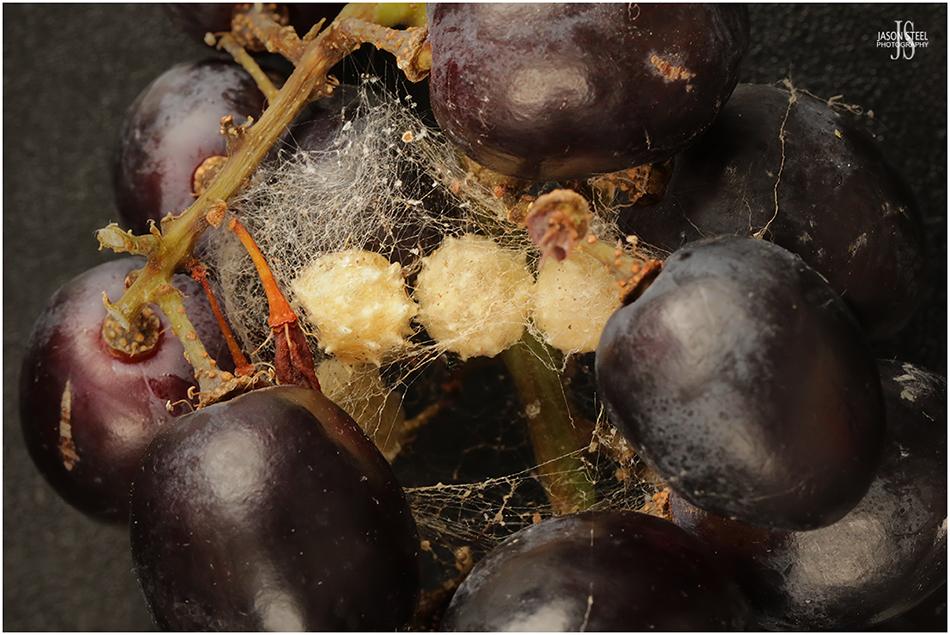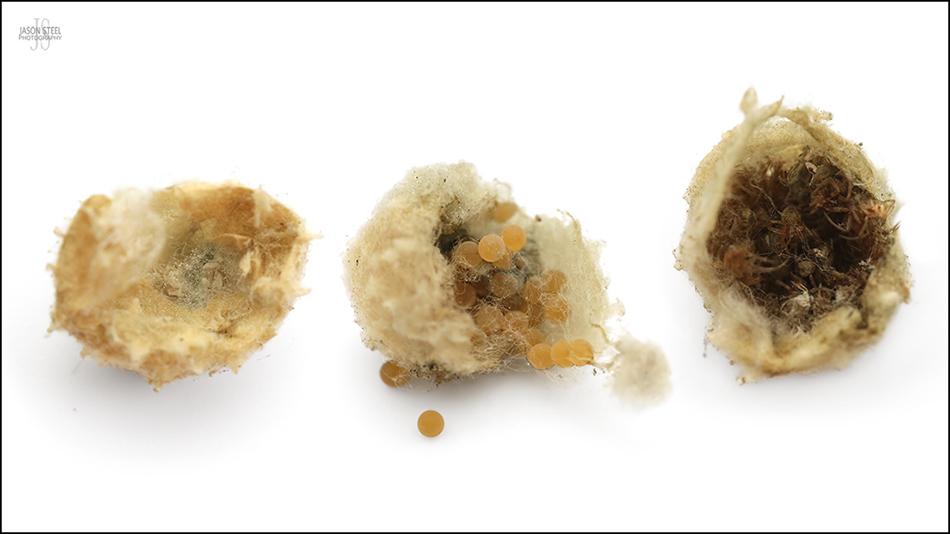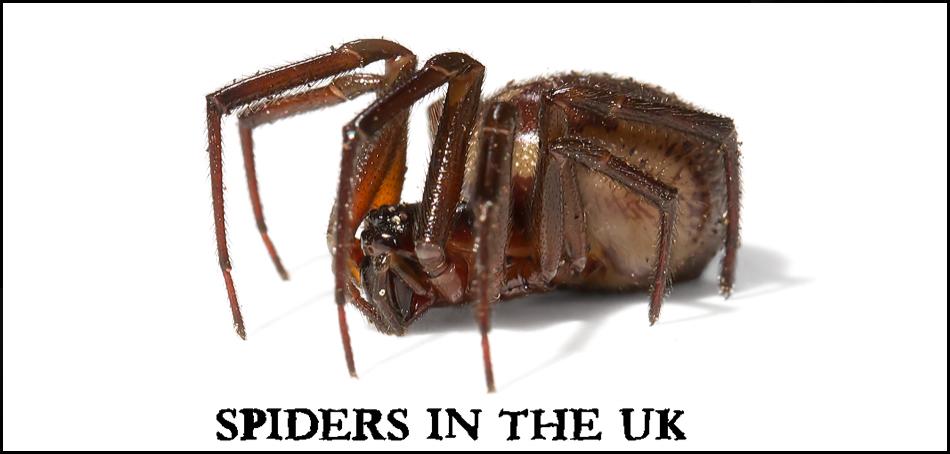
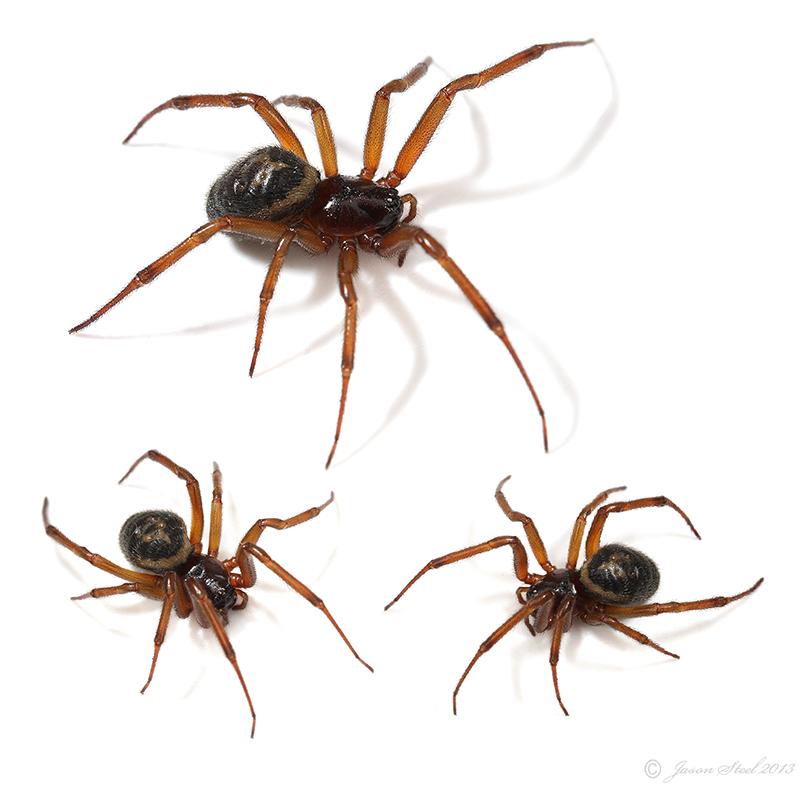
Noble False Widow - (Steatoda nobilis)
The Noble False Widow was first recorded in the UK, as a single specimen, in Torquay, back in the late 1860's or early 1870's. The spider wasn't identified though until some years later in 1879. There is some question over the accuracy of this record though because the original specimen was kept in a collection of spiders, including some possibly collected from Madeira, and not identified until several years later by another arachnologist. It wasn't until 1906 when the next Noble False Widow was found in the UK, on a cliff in southern England. The Noble False Widow is believed to have been accidentally imported into the UK from the Canary and Madeira Islands, amidst crates of fruit, probably bananas.
Although Steatoda nobilis has been occasionally recorded in the UK for over 150 years it didn't really get a strong foothold here until around 1984-1986, when large populations of Steatoda nobilis were recorded in Portsmouth. Steatoda nobilis was confined to the south of England for a further 25 years, with very little indication that it was spreading. It was only since about 2010 that Steatoda nobilis really started to rapidly extend its range and spread further north up the country. Steatoda nobilis wasn't just spreading in the UK at this stage either. Steatoda nobilis suddenly showed up in the USA in large numbers in 2012. By 2014 Steatoda nobilis were also present in South America. By 2018 Steatoda nobilis had turned up in much of Europe too. It's not known what triggered this adaptation and ability for Steatoda nobilis to suddenly, and drastically, increase its range and begin spreading across the world.
Steatoda nobilis are now regularly seen in houses and gardens across much of England. In fact in recent years Steatoda nobilis have now become one of the most common species to be found around many homes in the southern half of the country. There is growing concern that nobilis may now be having a negative effect on native species by out-competing and displacing other spiders. Some scientists and arachnologists are now calling Steatoda nobilis one of the most invasive species of spider in the world.
Noble False Widow Spiders are the largest of the false widow species in the UK, with females usually growing to a maximum body-length of around 8-11mm for females, with some specimens reaching up to 15mm, and a leg-span of 30-35+mm. Males typically reach around 7-10mm body-length, but unlike most other Steatoda species, the male Noble False Widow can be just as large, or even larger, than the female. Steatoda nobilis have recently received great interest from the British press and are often reported as being aggressive, dangerous, highly venomous and deadly. Although Steatoda species are capable of delivering a moderately painful bite to humans none of the many specimens that I have ever captured and photographed have ever exhibited any defensive behaviour beyond either playing dead or trying to run away. They can move at a fair pace in short bursts but generally I have found them to be a very docile and slow moving species of spider.
Travis McEnery discusses the history of Steatoda nobilis in his excellent video - LINK
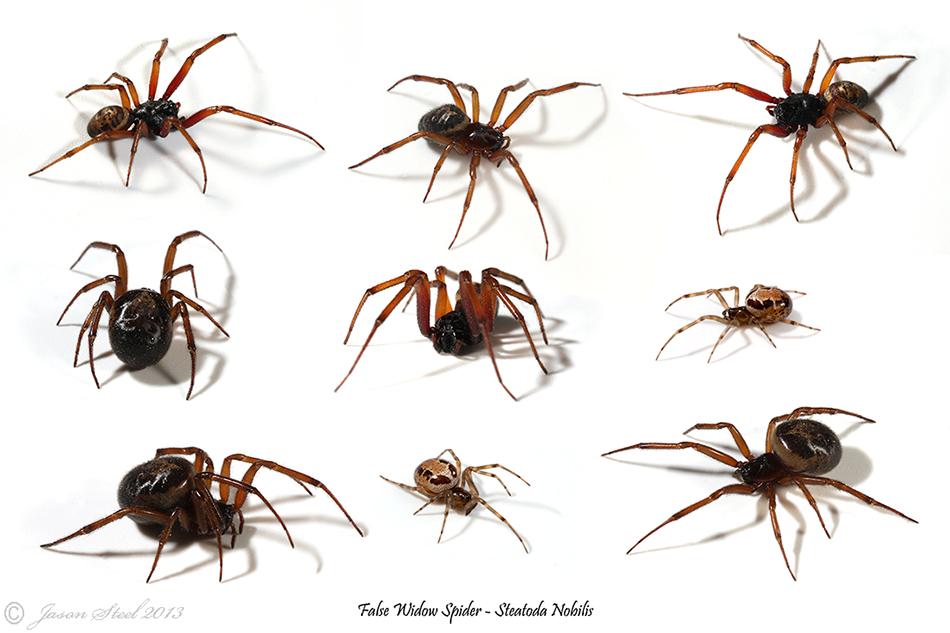
Despite being in the UK for over 140 years the Noble False Widow Spider has recently gained a pretty bad, and probably undeserved, reputation, which has been generated by sensationalized stories in the media, such as these examples during 2014:
"False Widow Spider ate my leg!" "False Widow Spider bites teen in cinema" "Flesh-eating monsters are still here" "False Widow Spider ate my foot"
"False Widow Spiders are eating Dad alive" "False Widow Spider bite could kill" "Killer spiders ate my leg" "False Widow Spider made my leg explode"
"False Widow Spiders attacked my little girl" "50 False Widow Spiders invade home" "Killer Spiders invade Britain" "False Widow Spiders close school"
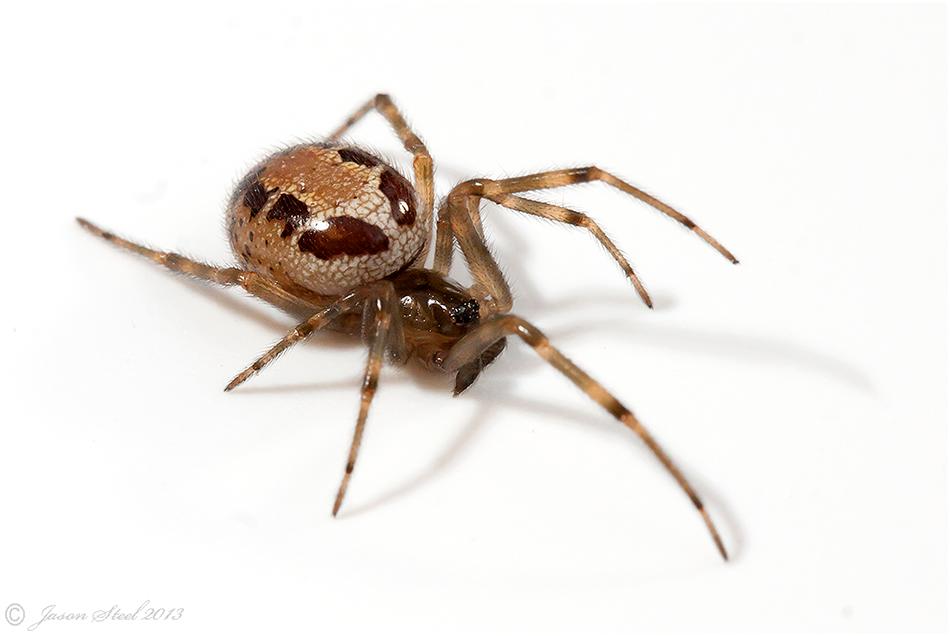
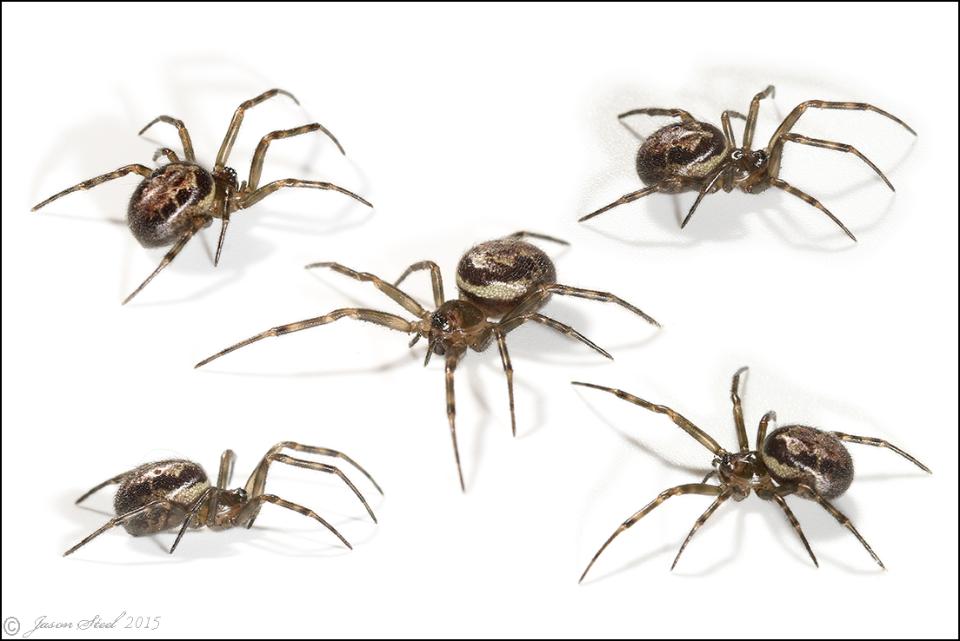
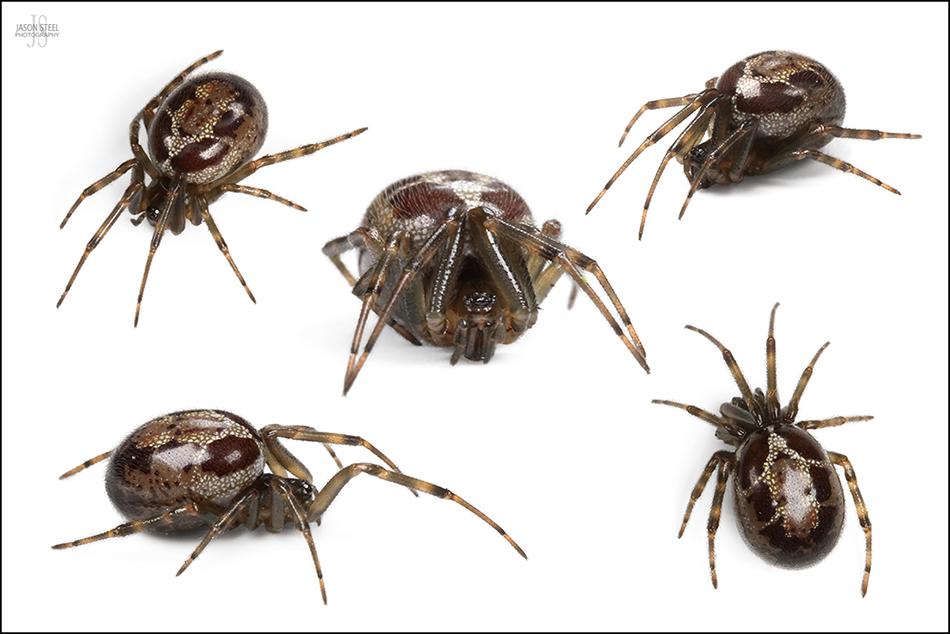
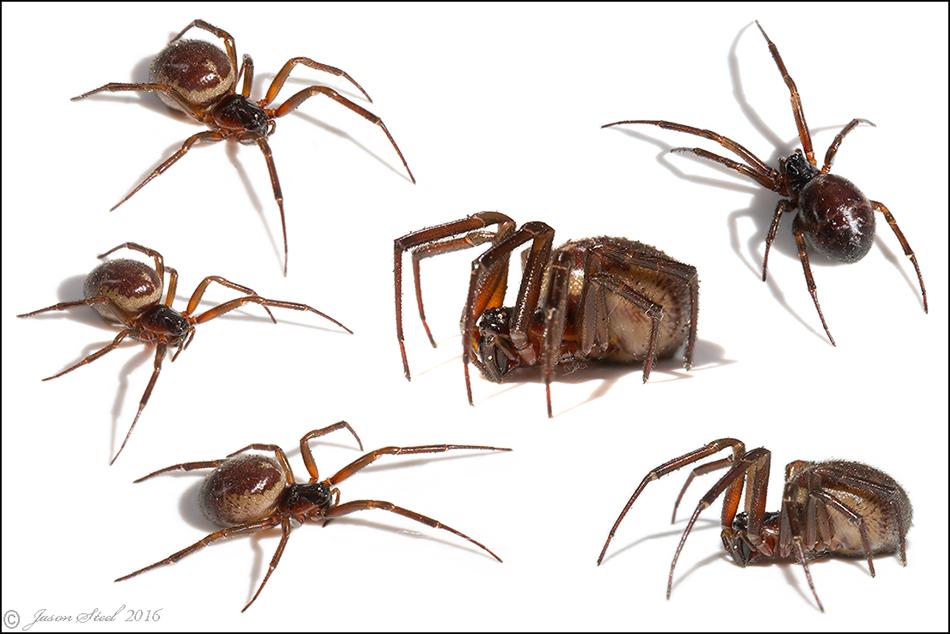
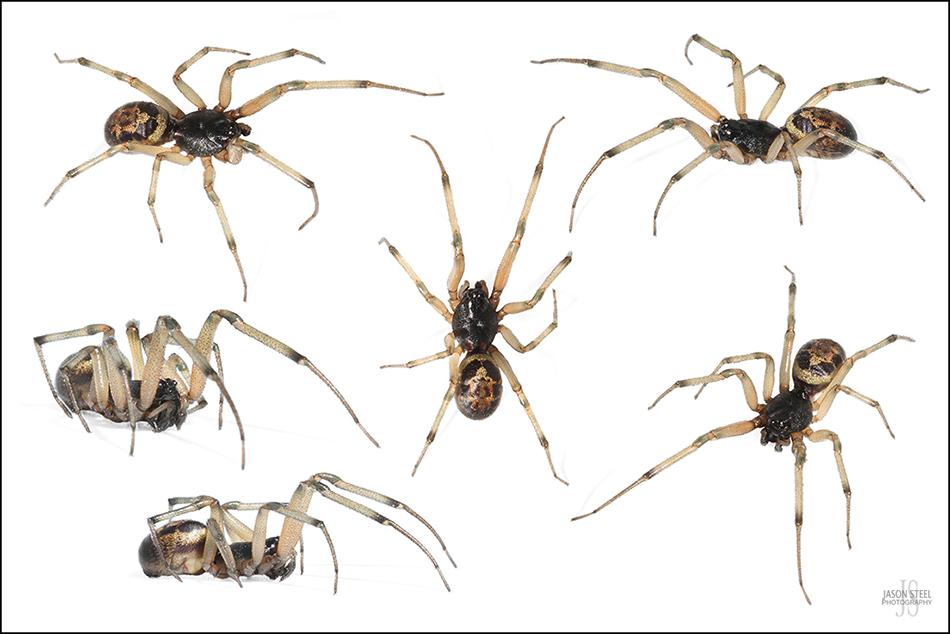
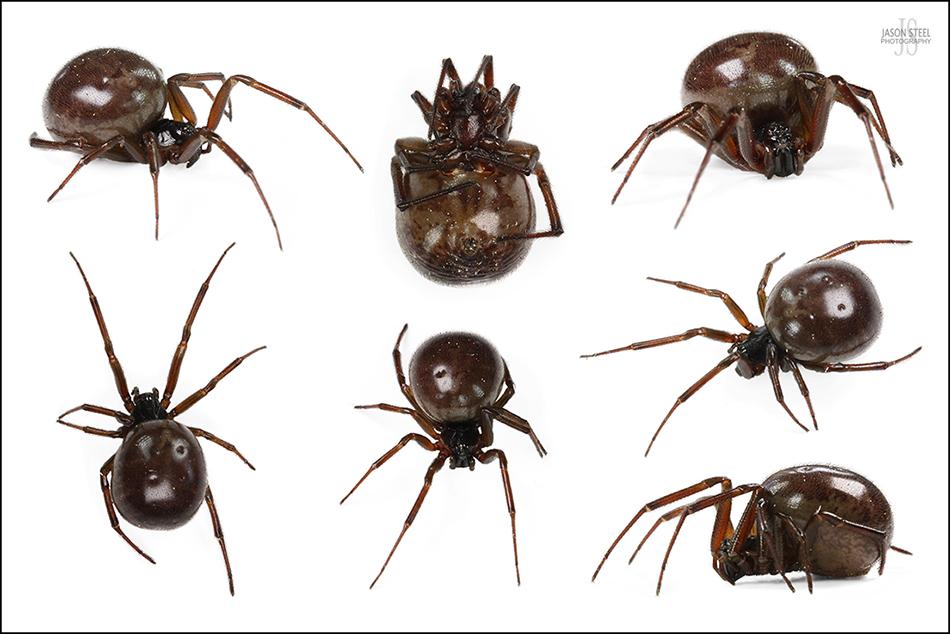
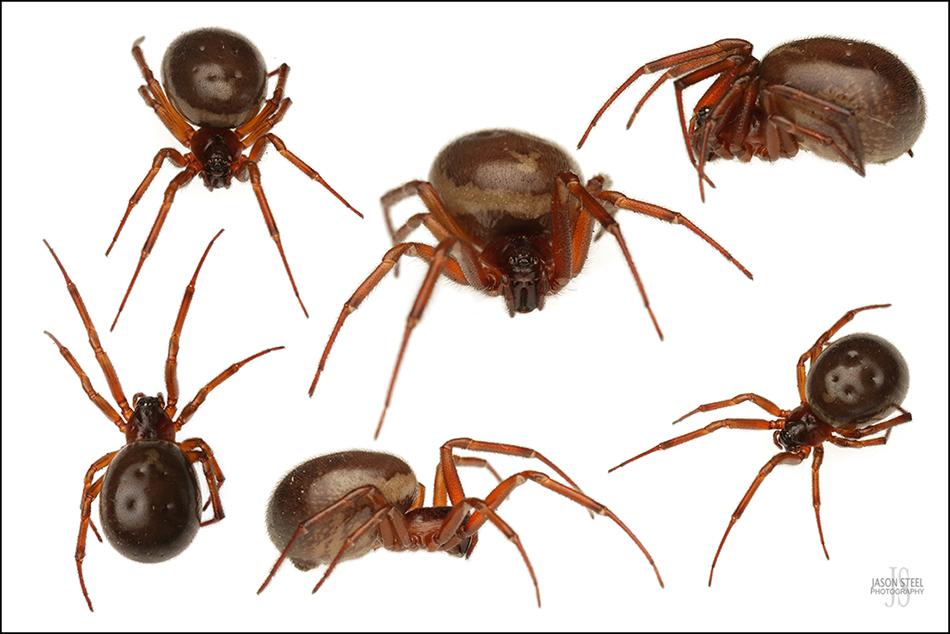
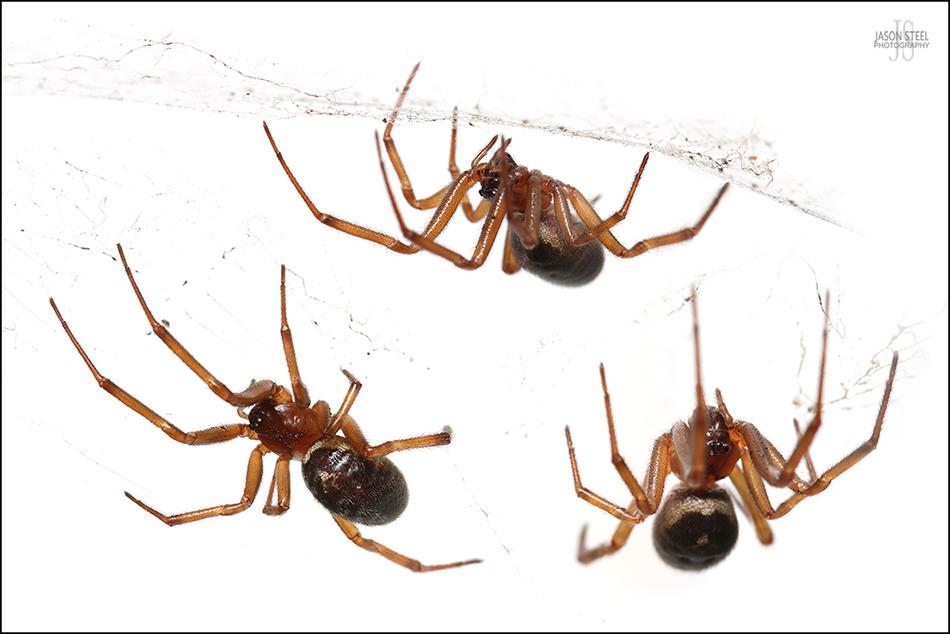
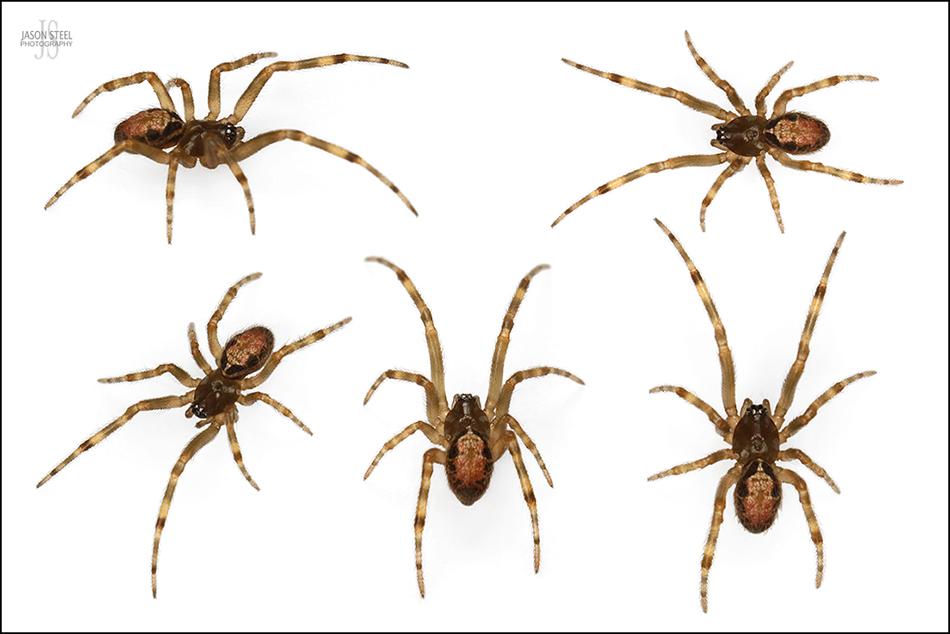
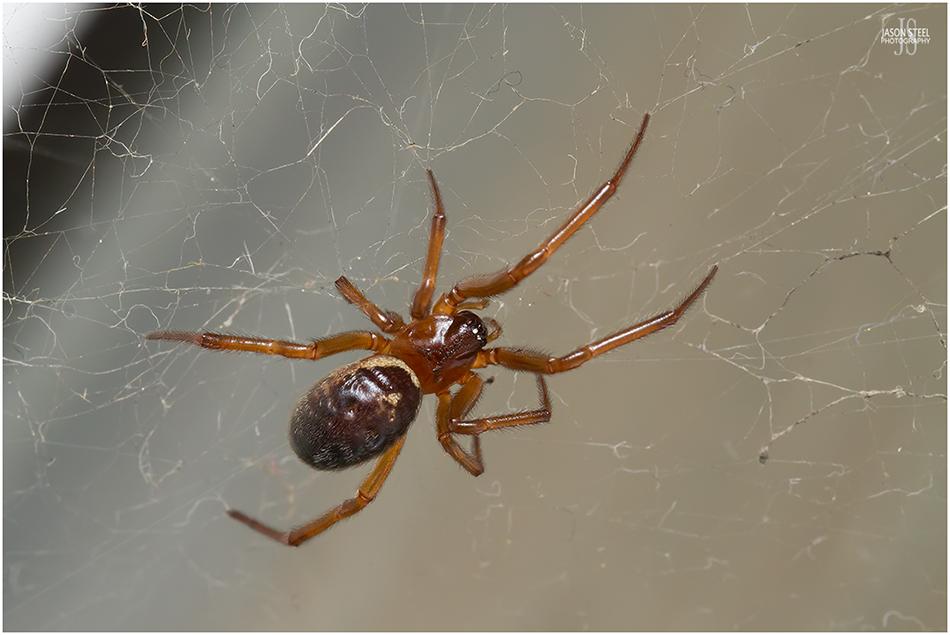
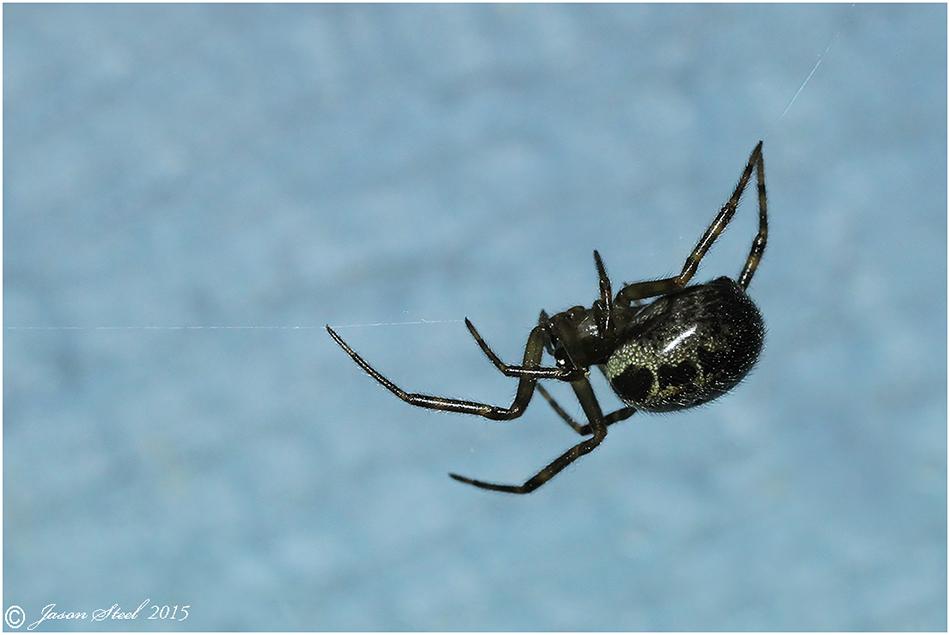
Female Noble False Widow Spider
False widow webs are a messy tangled scaffold of silky threads. The Noble False Widow Spider is primarily a nocturnal species and at night can often be spotted hanging upside down in its messy hammock style web. During the day the spider usually hides away in a crack or crevice in the adjoining wall or fence, or under leaves of vegetation.
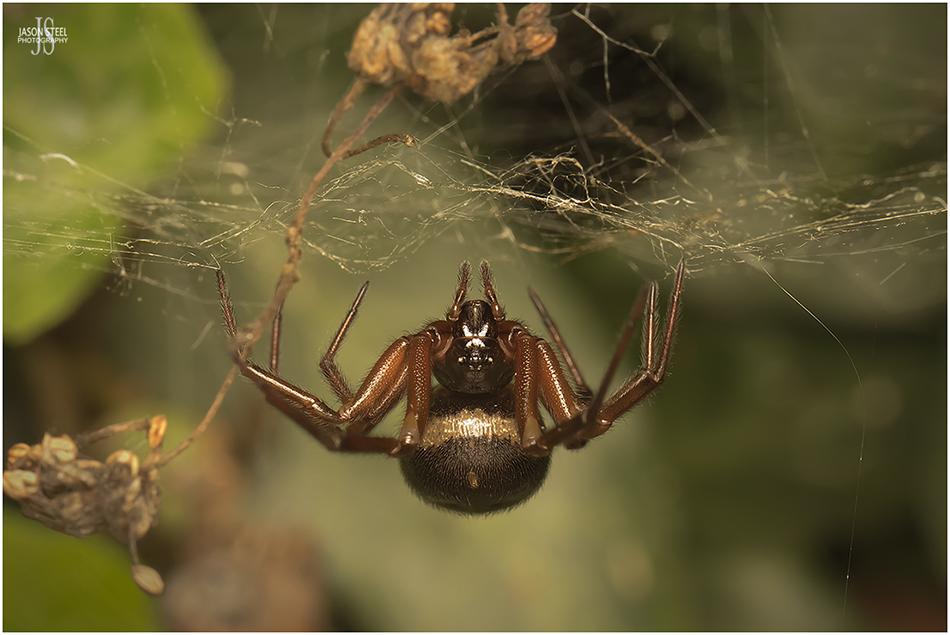
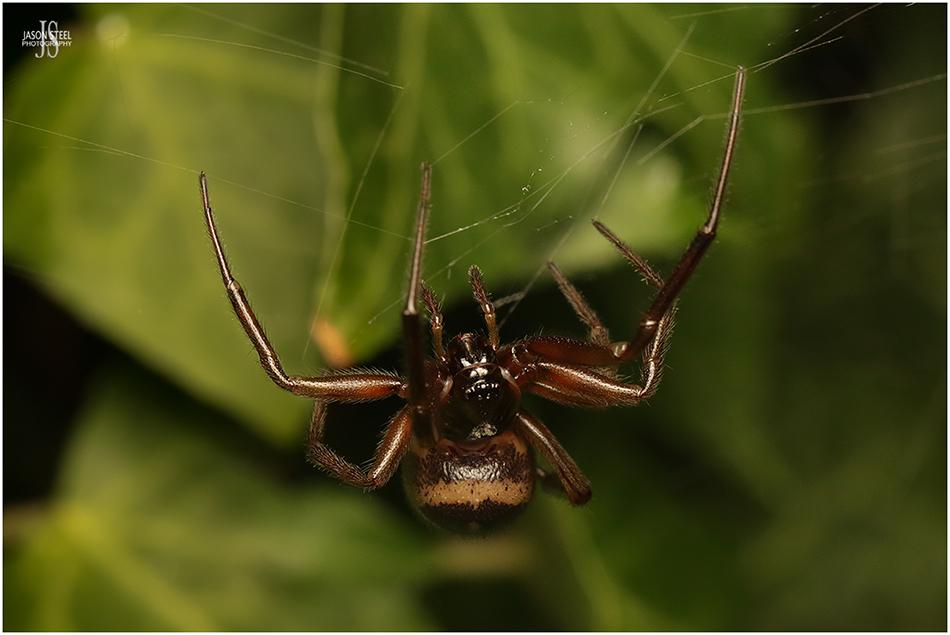
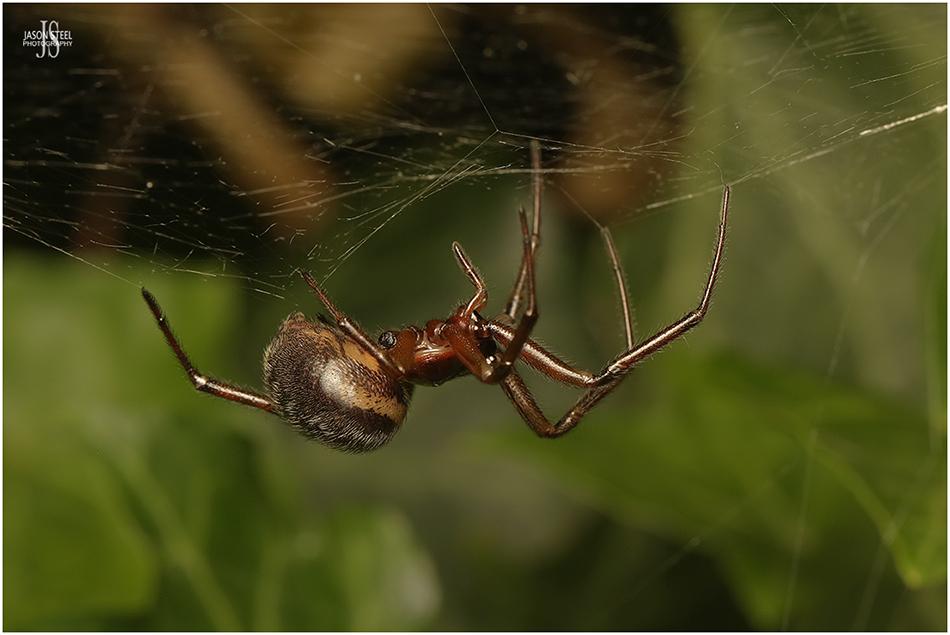
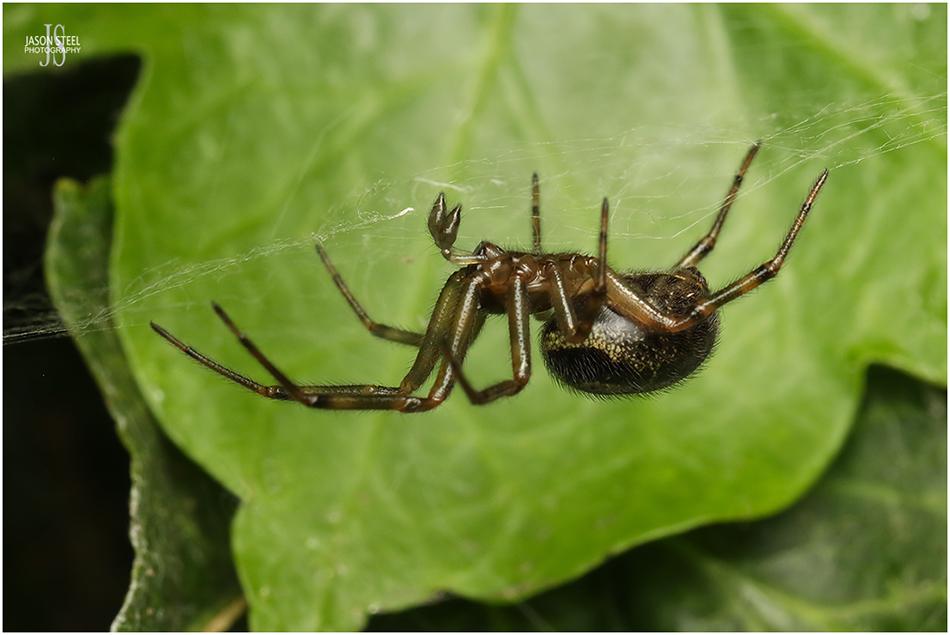
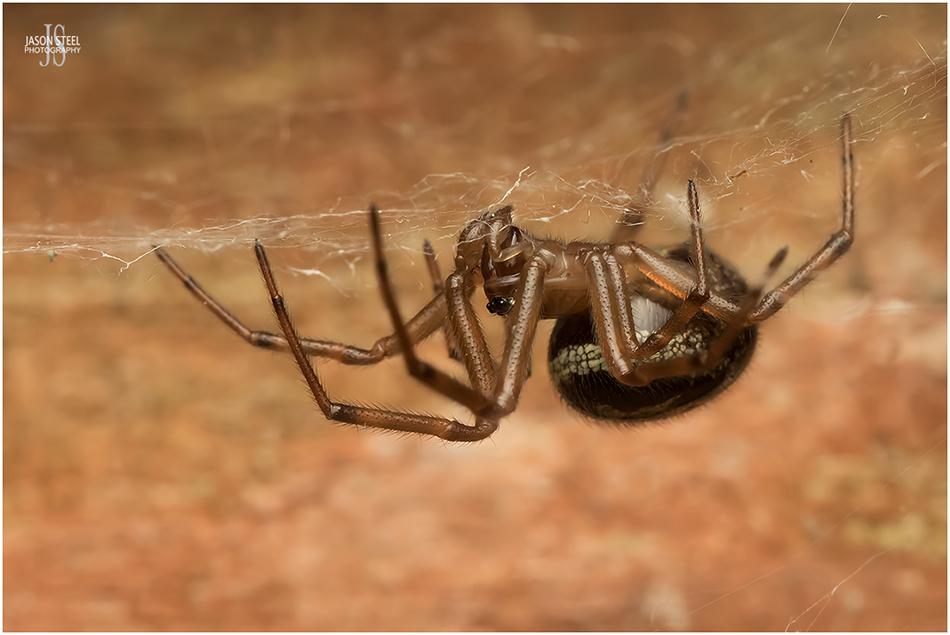
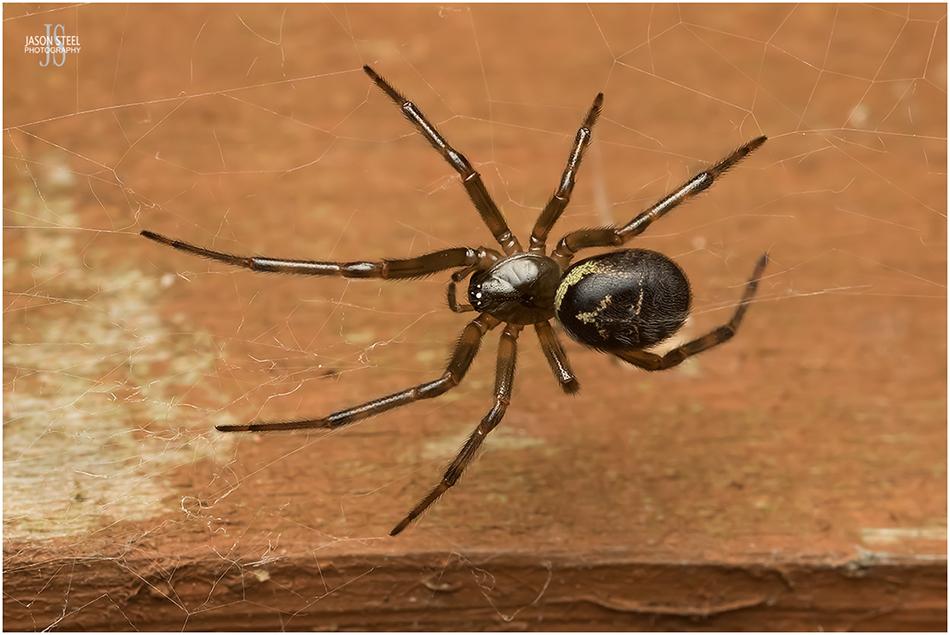
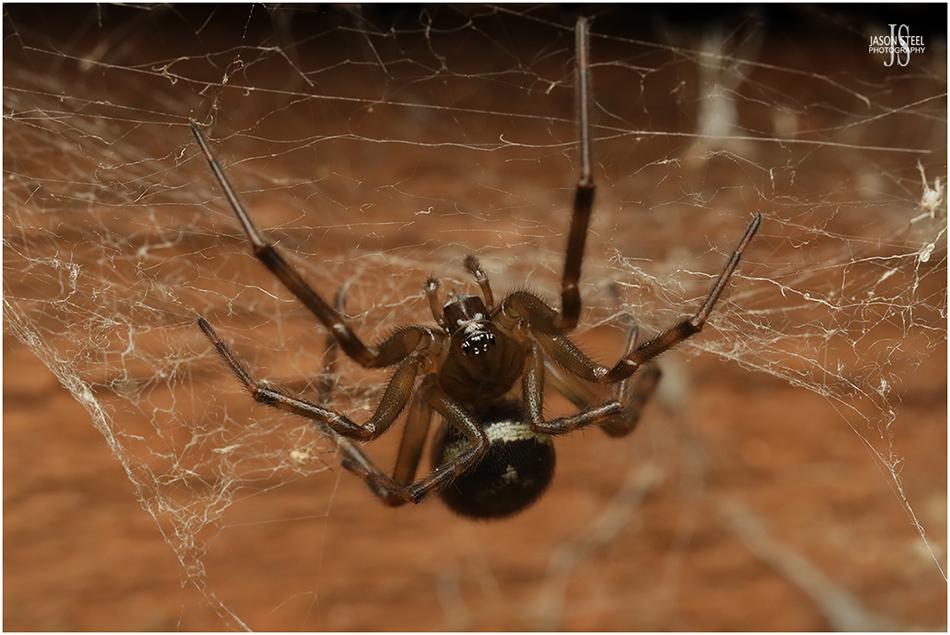
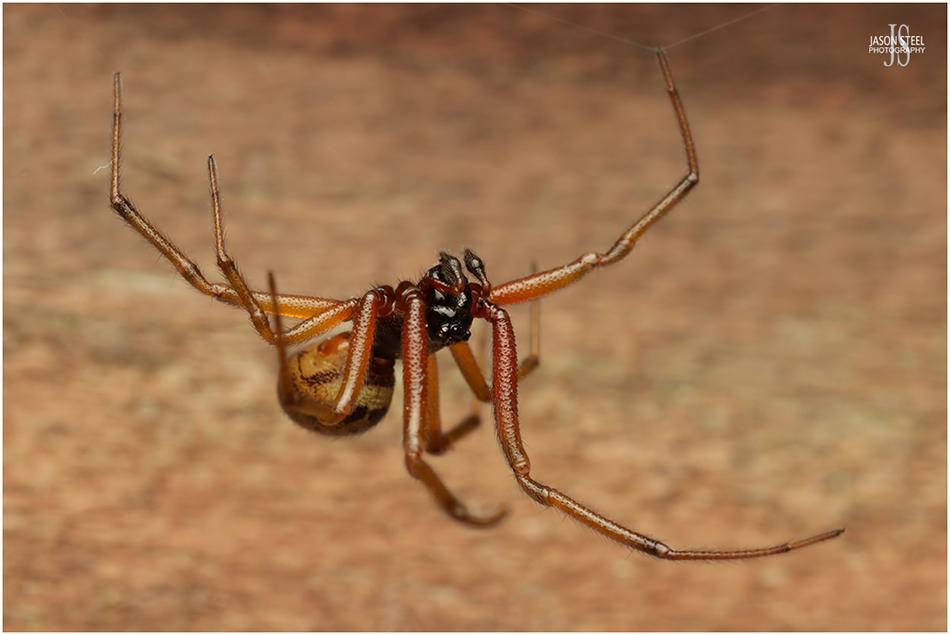
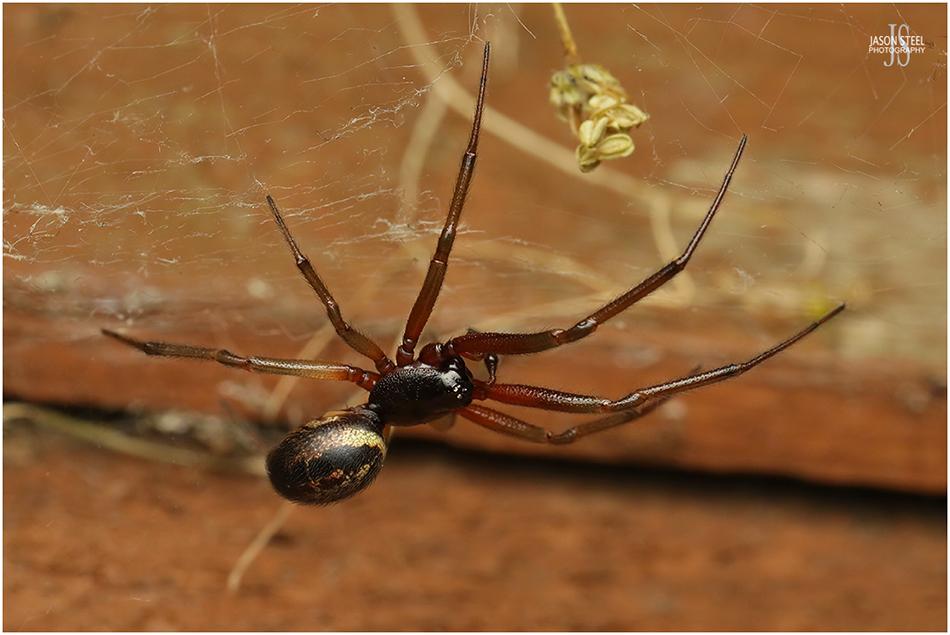
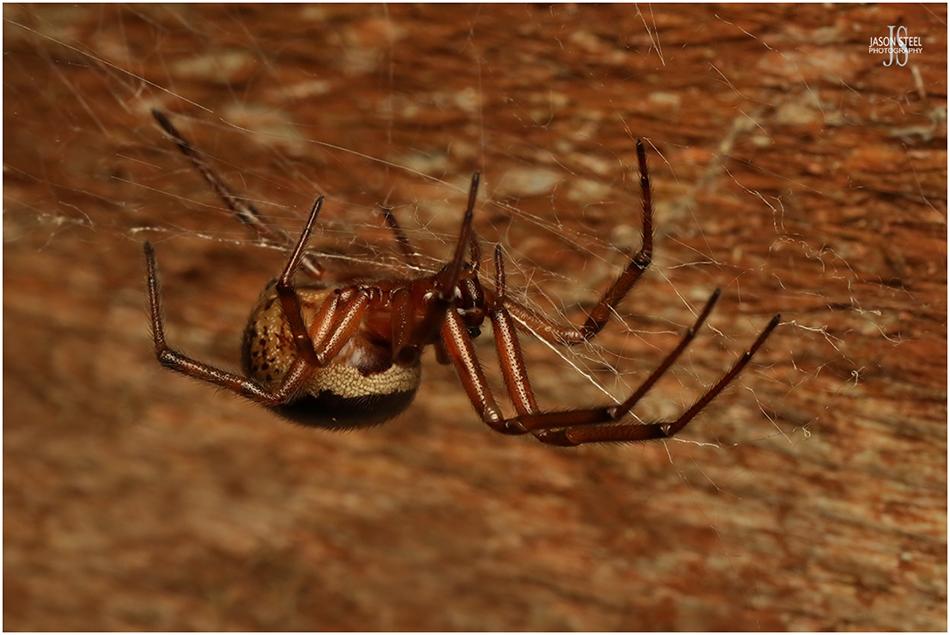
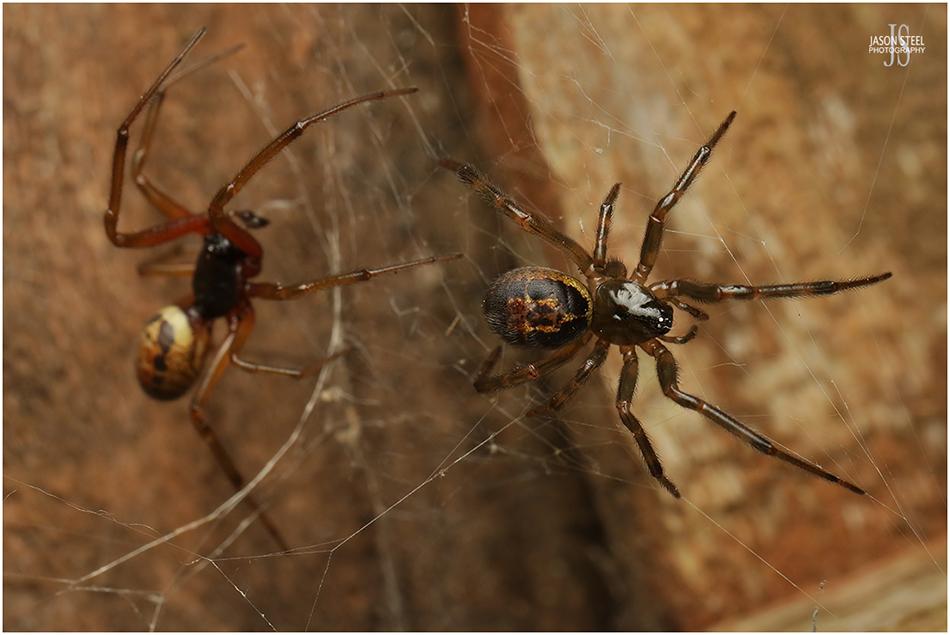
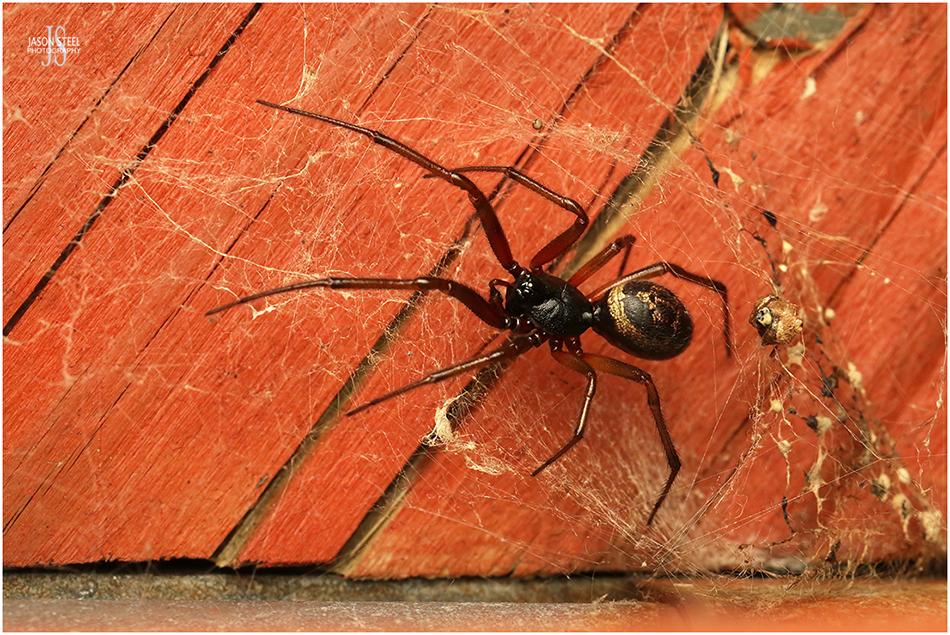
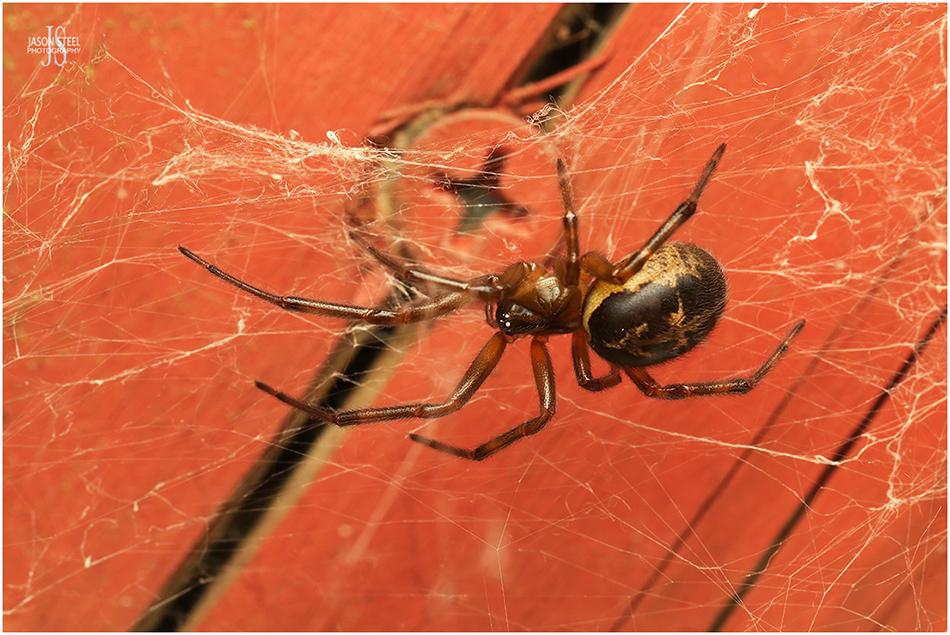
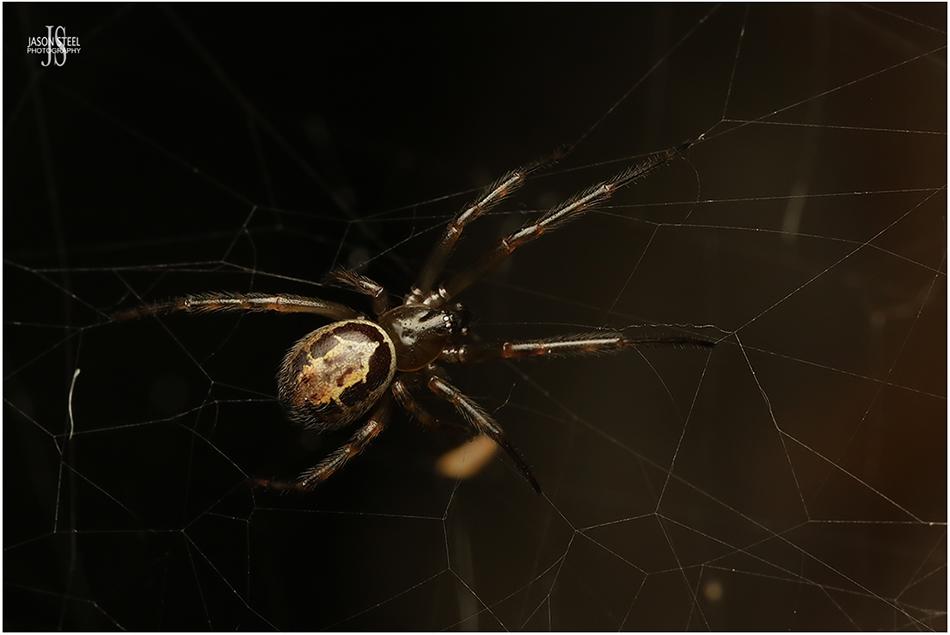
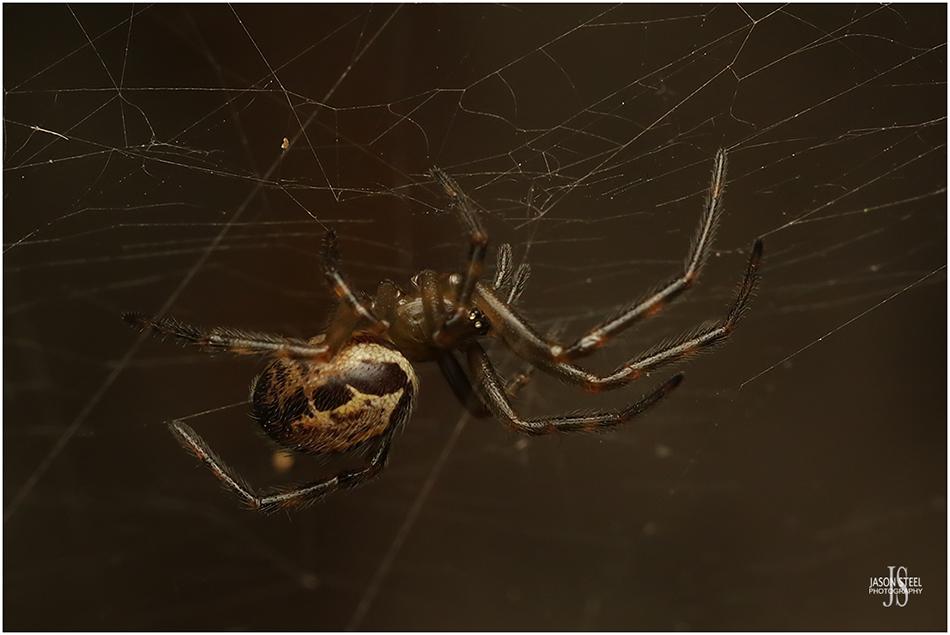
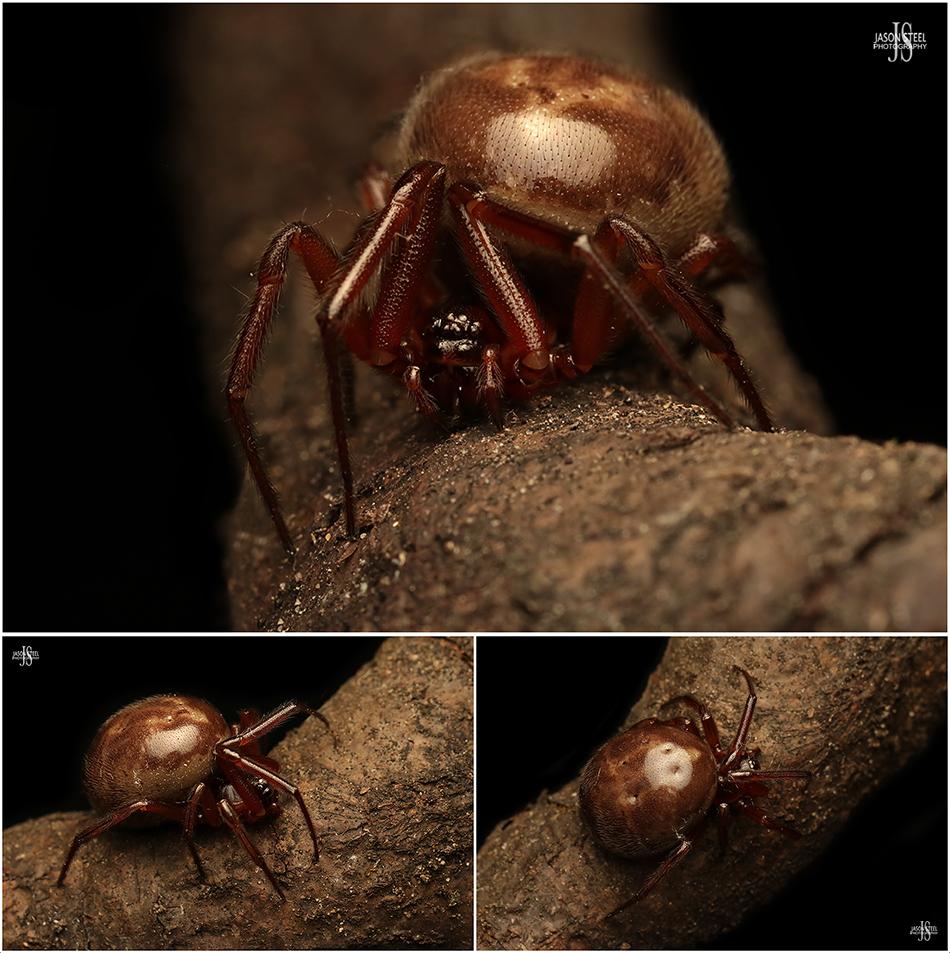
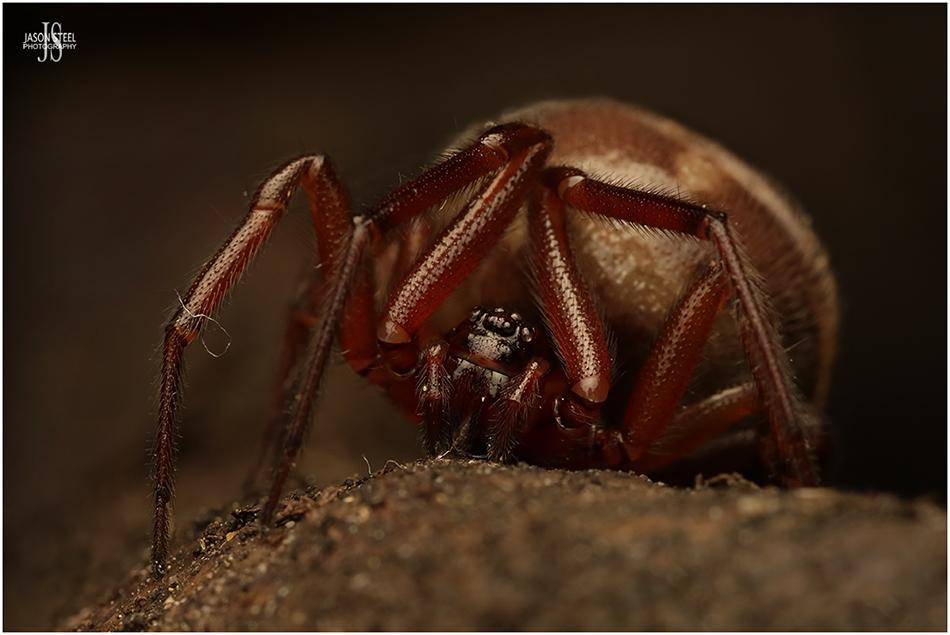
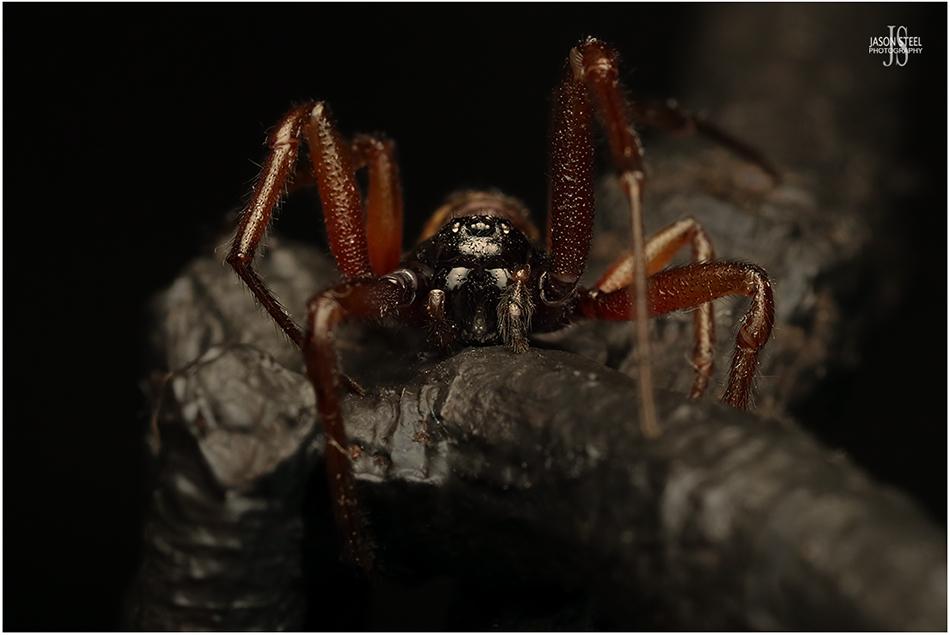
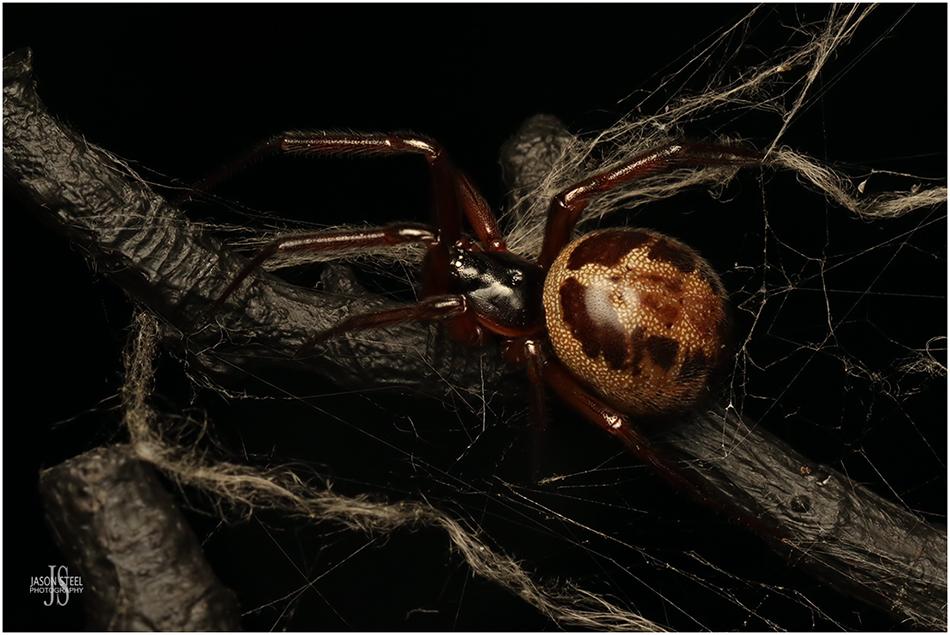
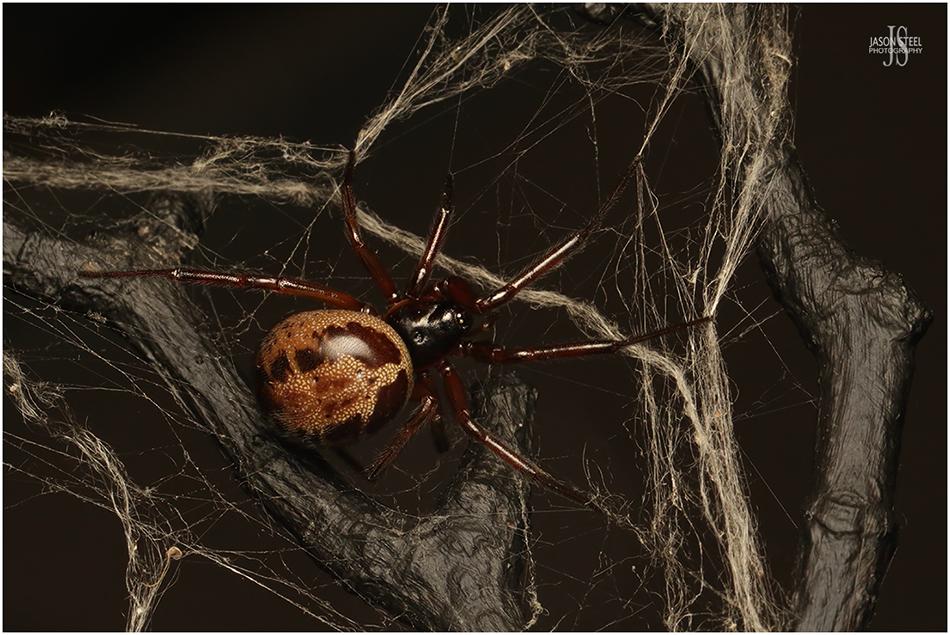
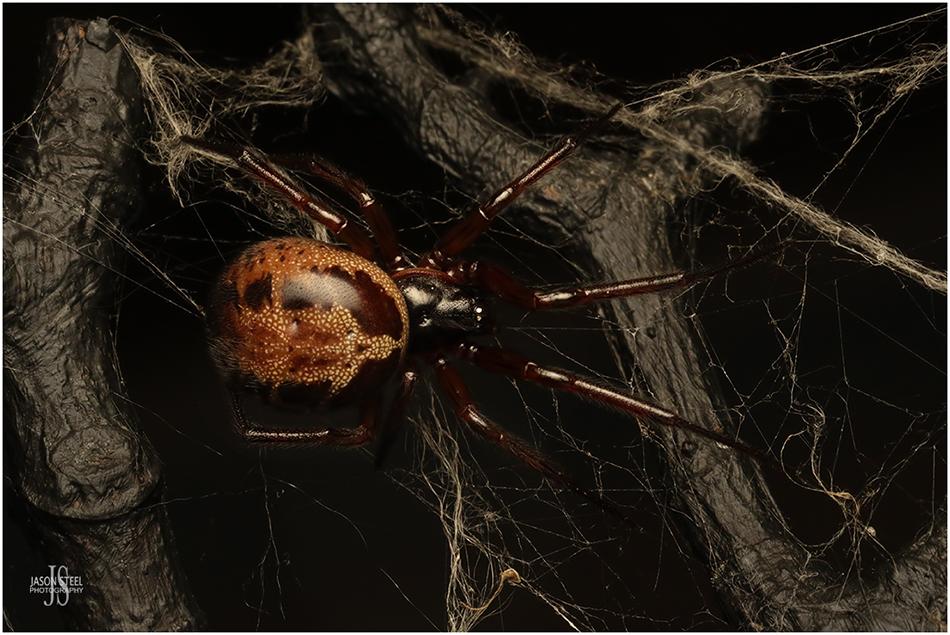
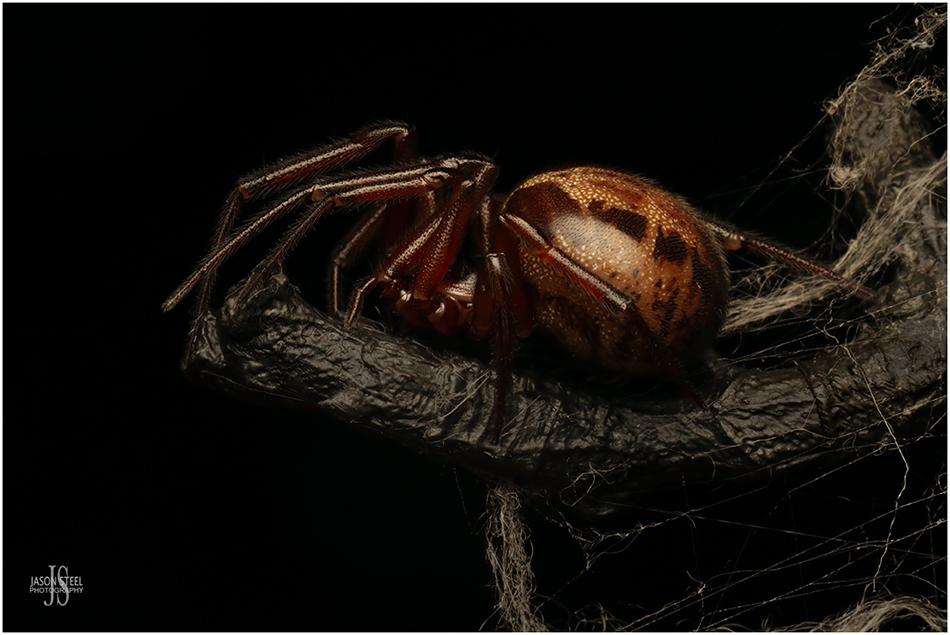
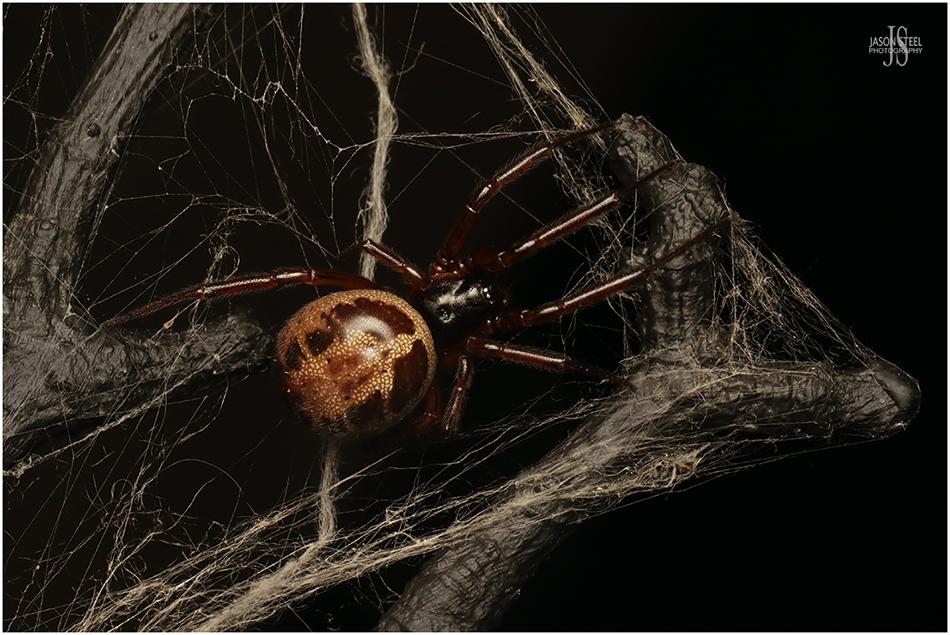
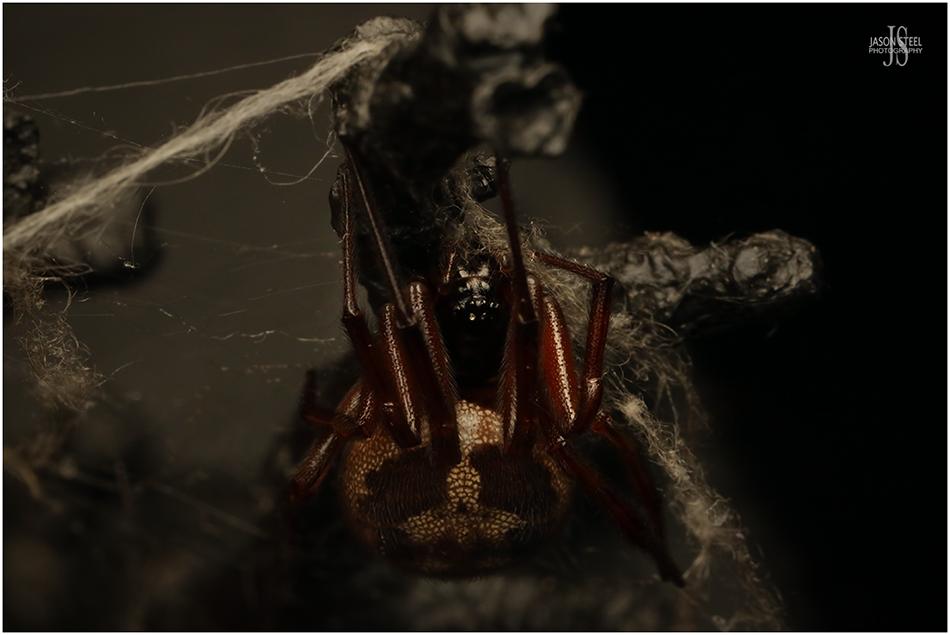
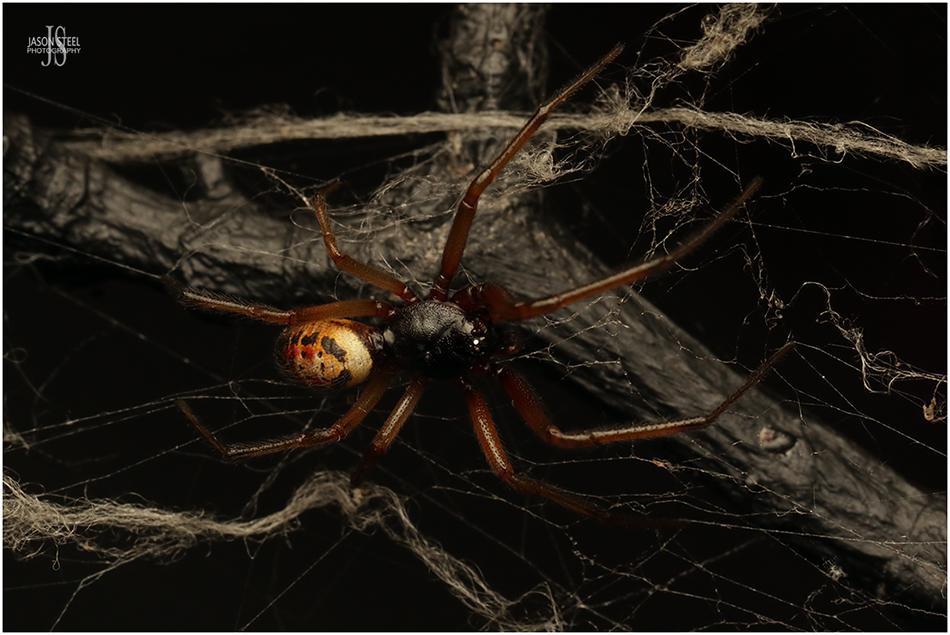
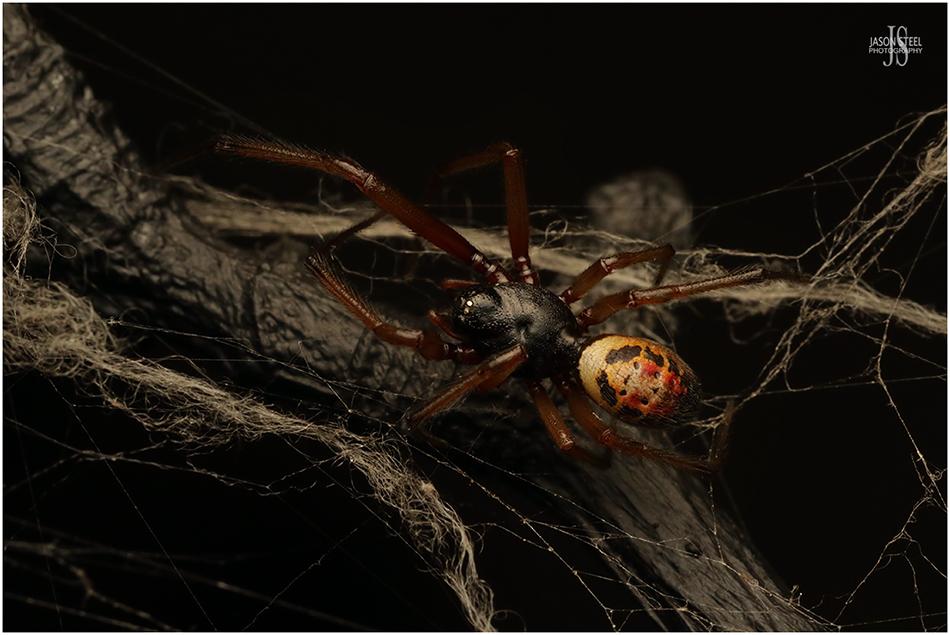
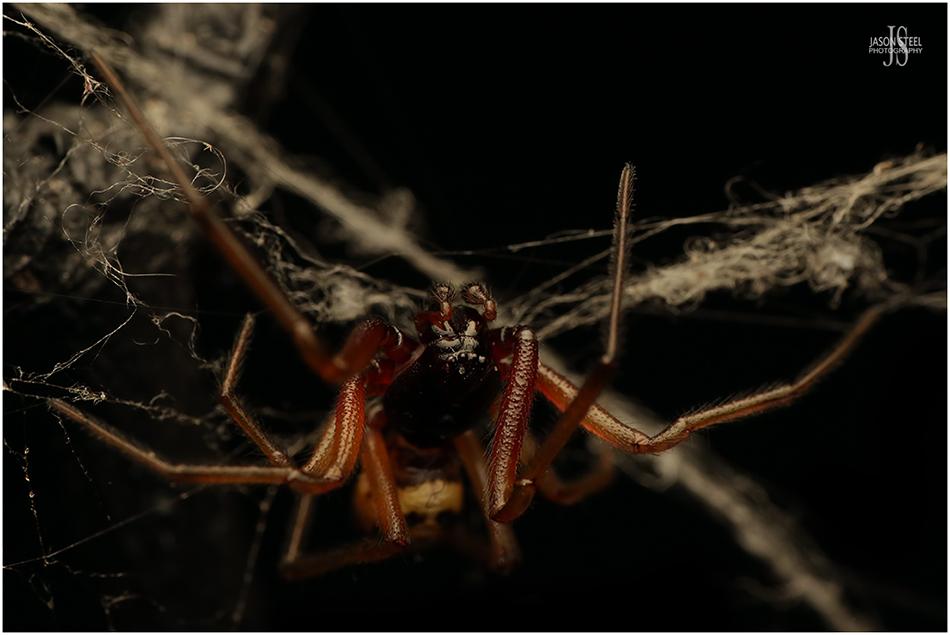
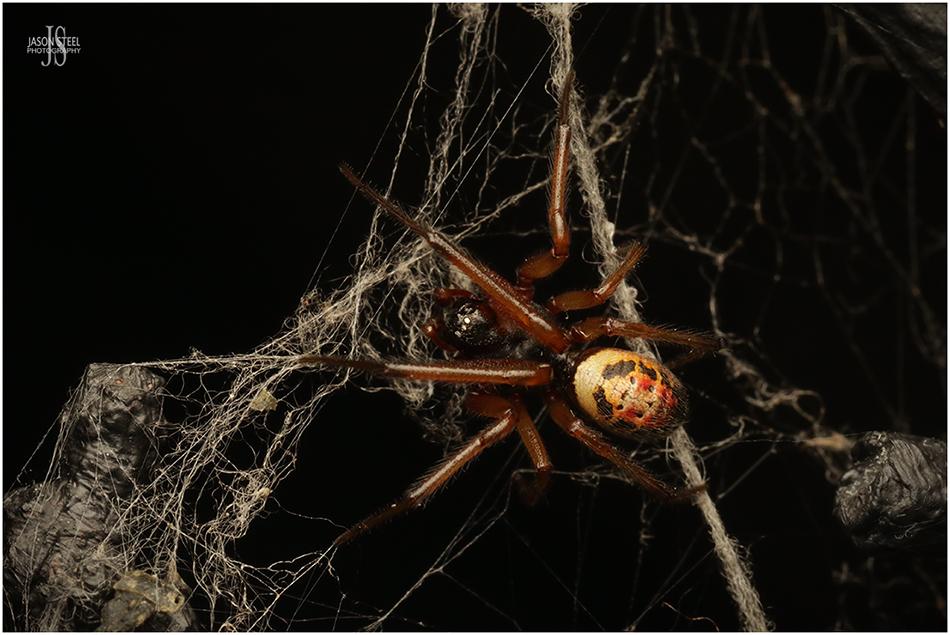
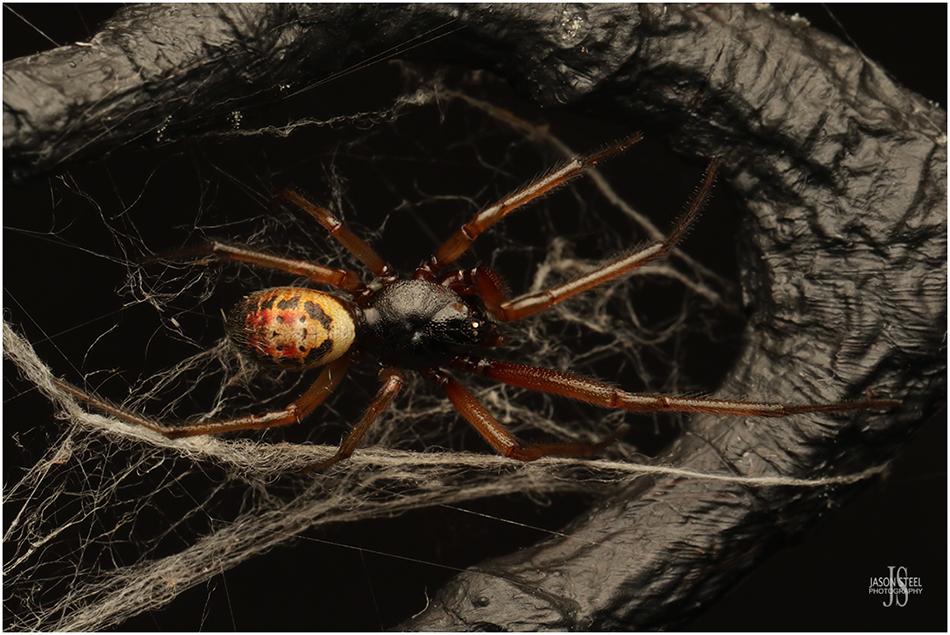
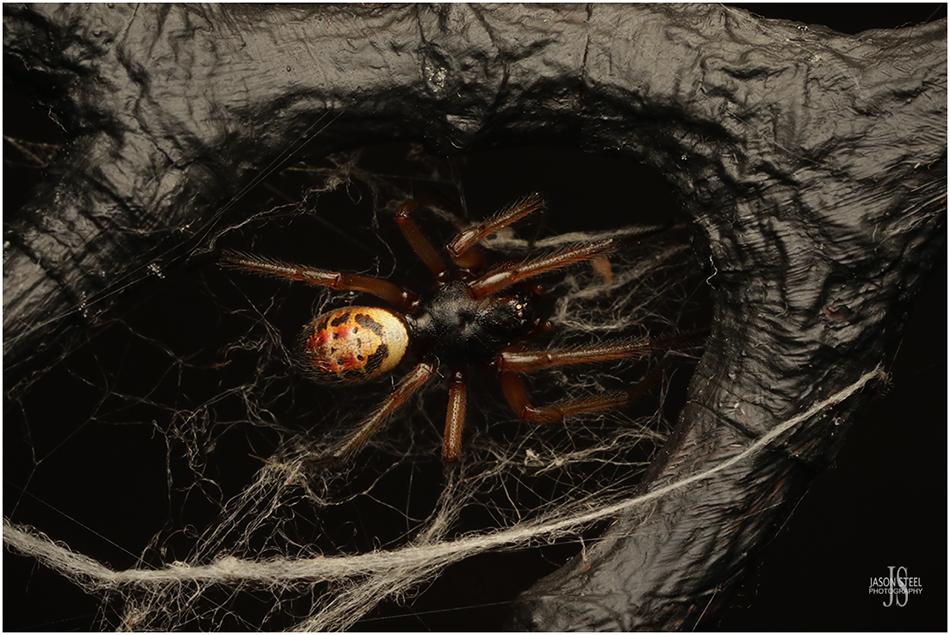
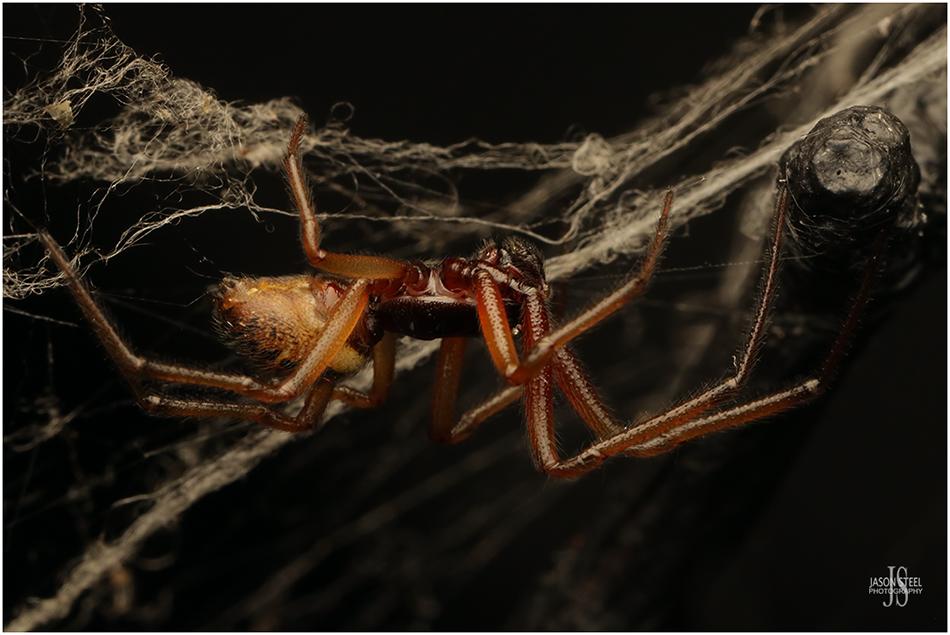
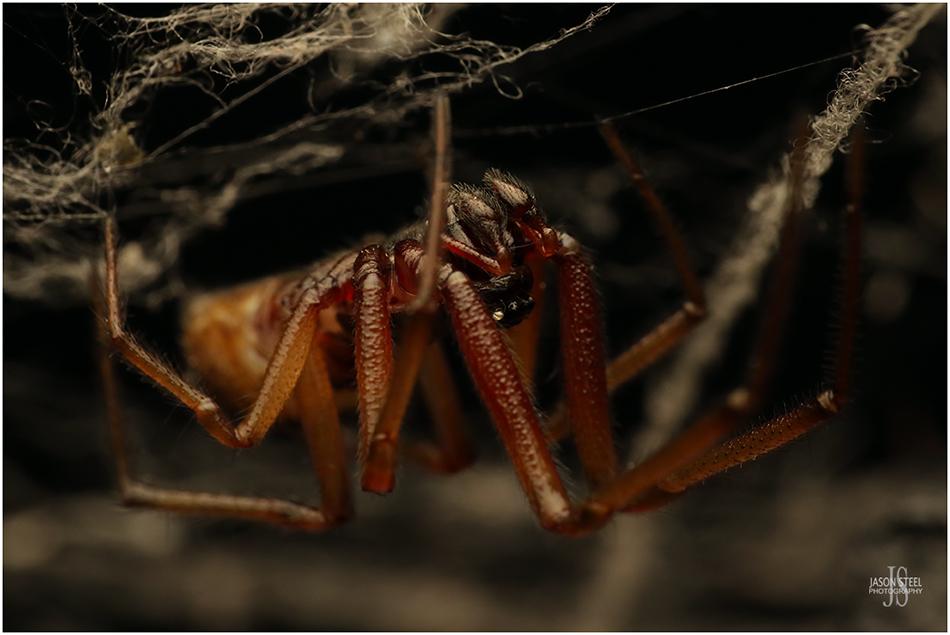
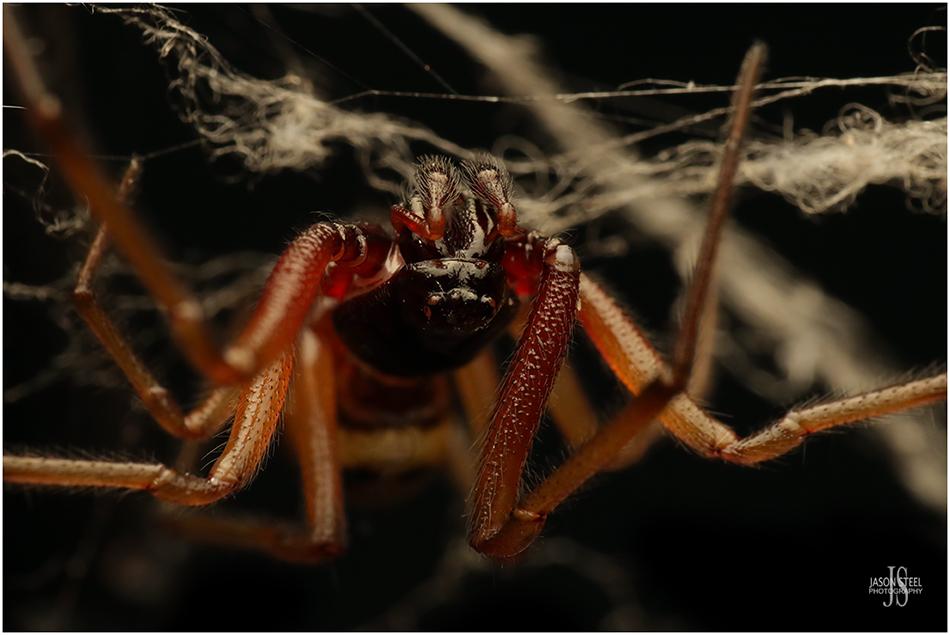
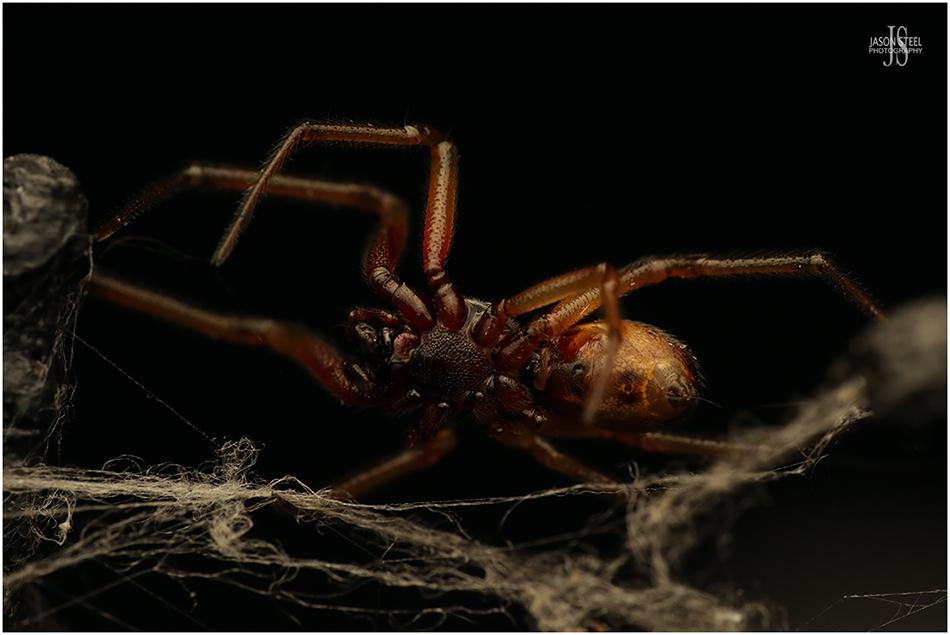
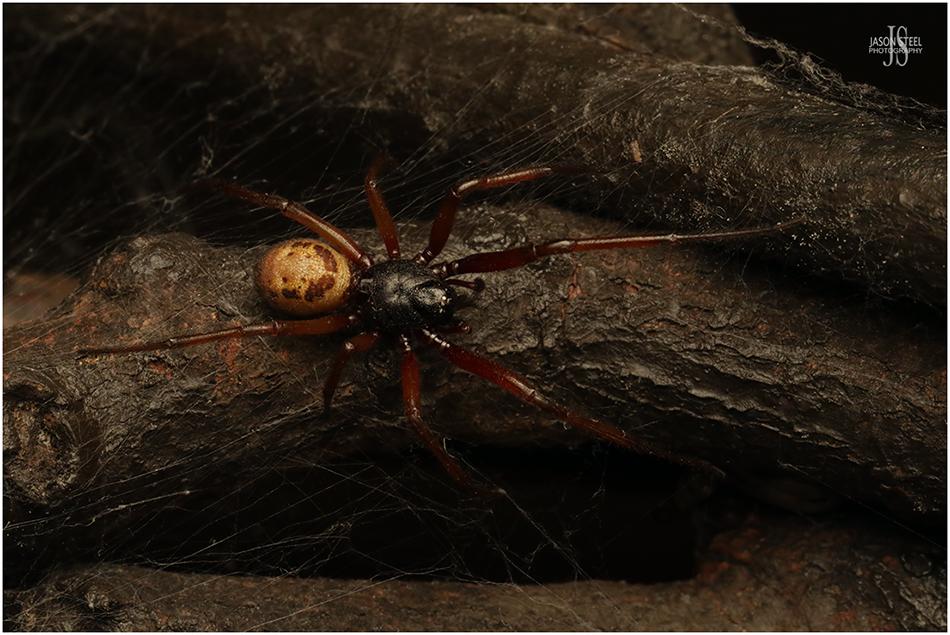
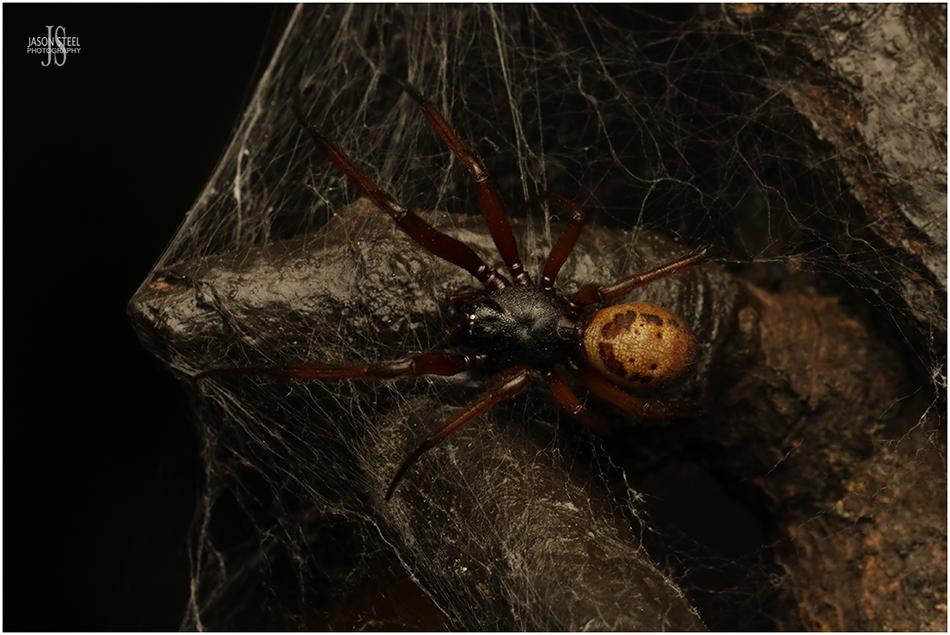
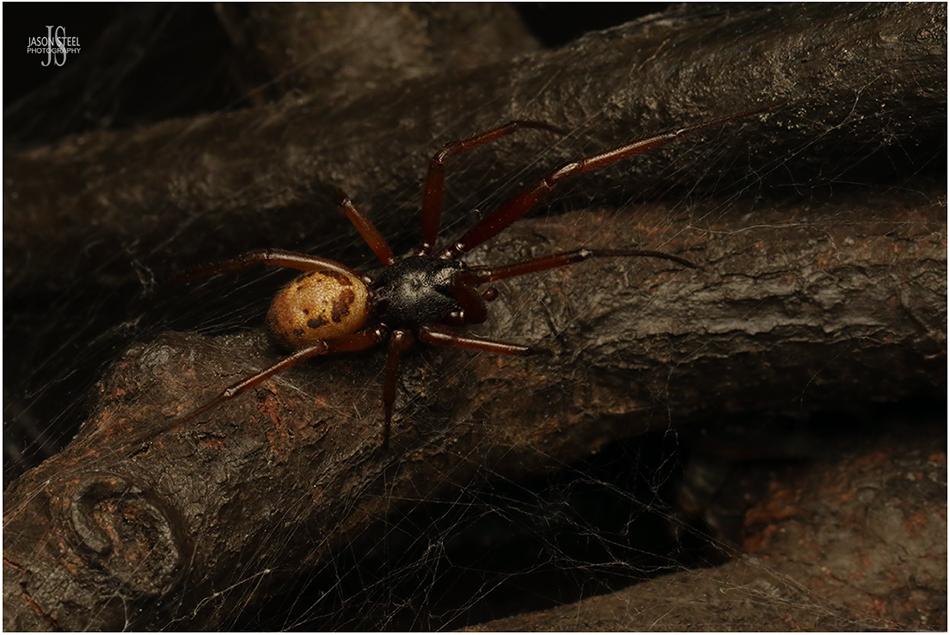
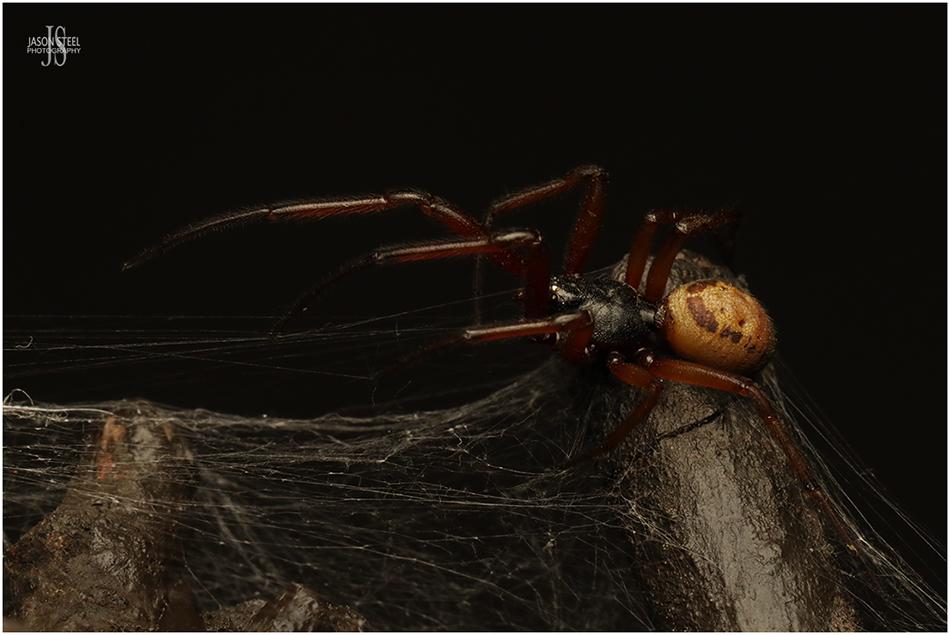
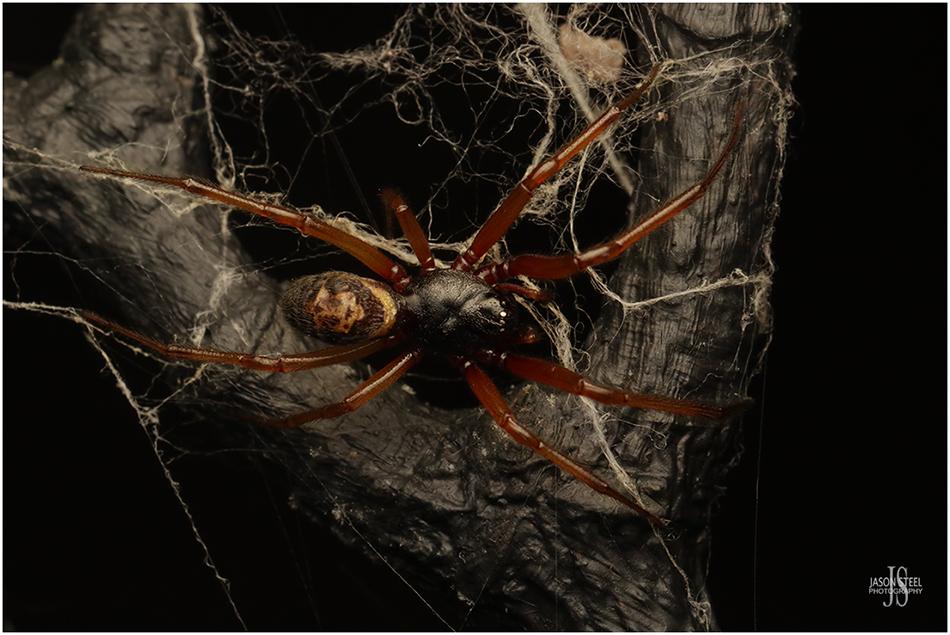
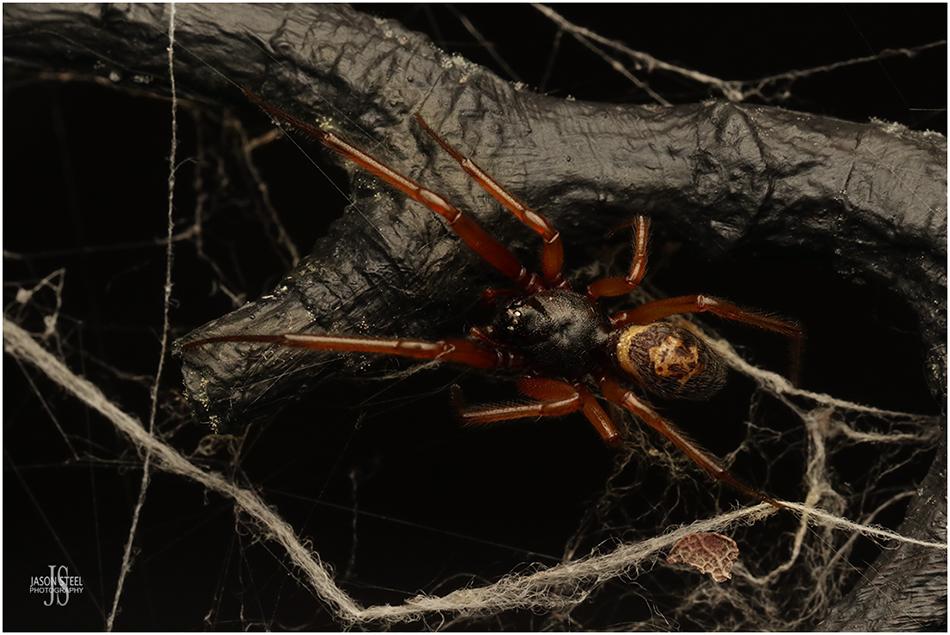
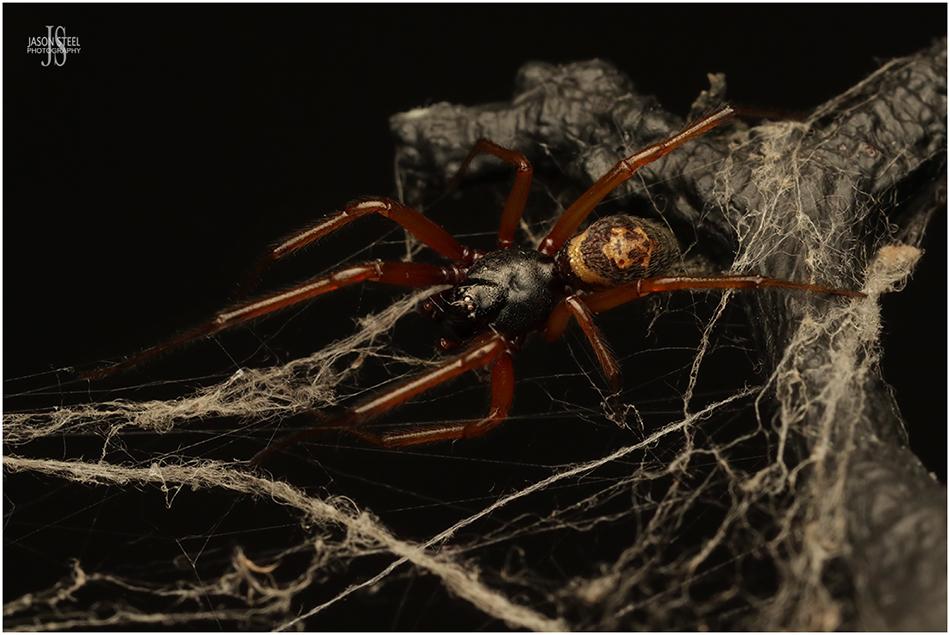
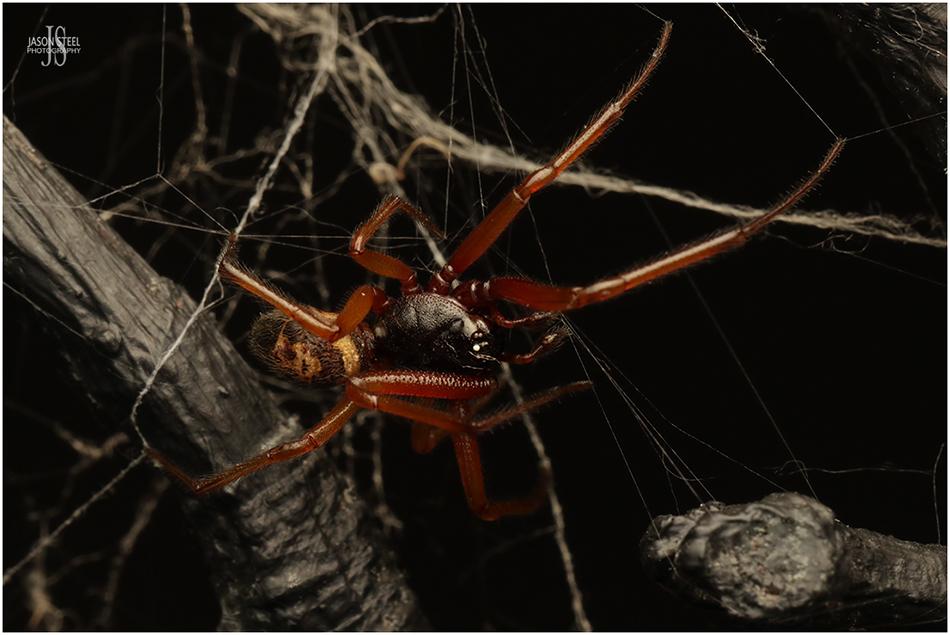
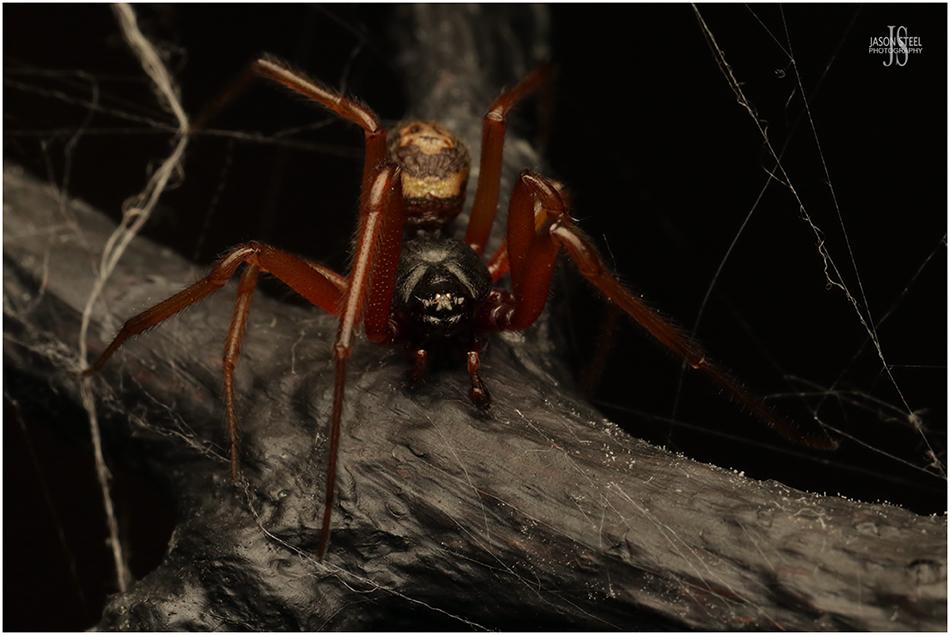
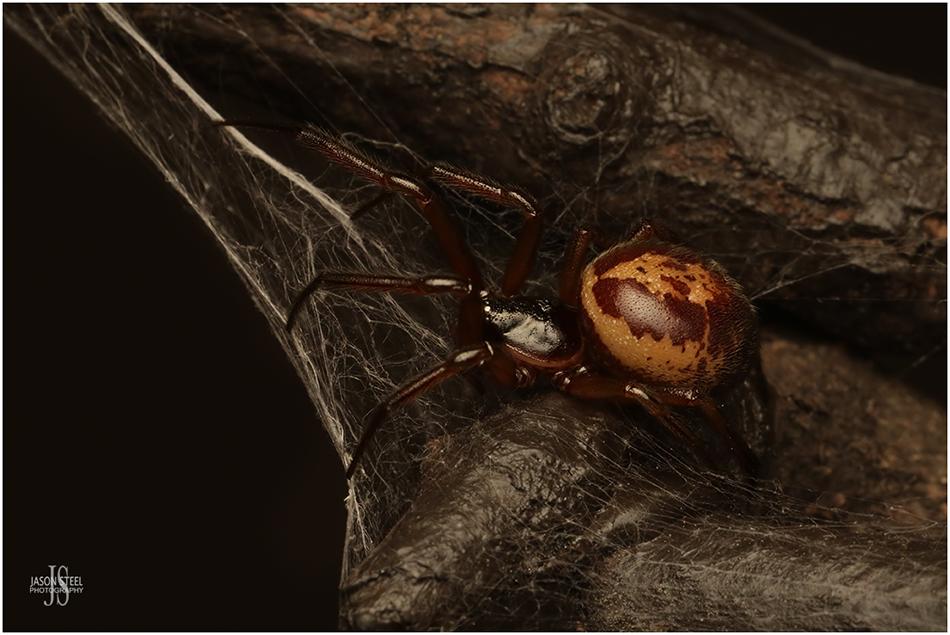
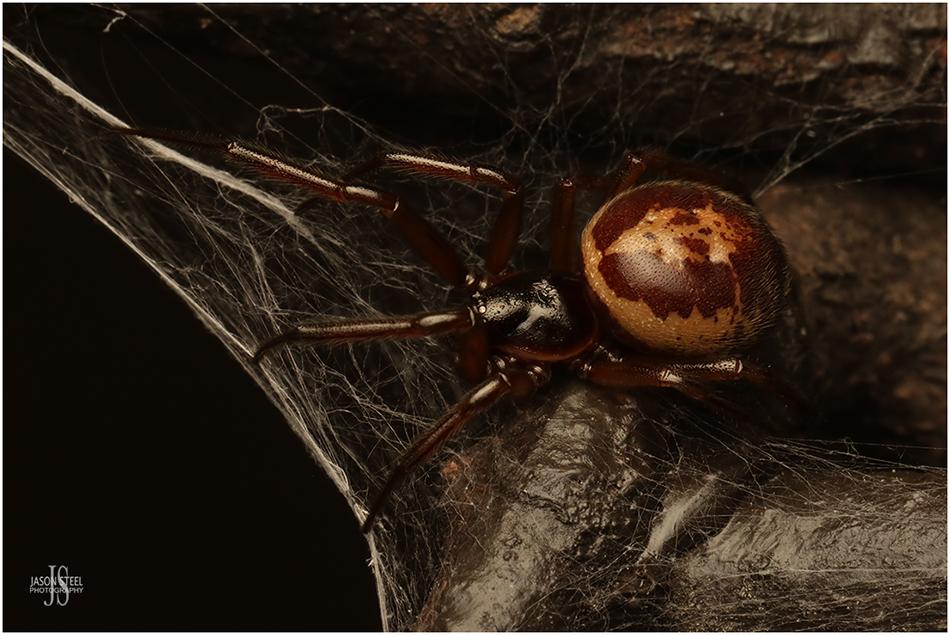
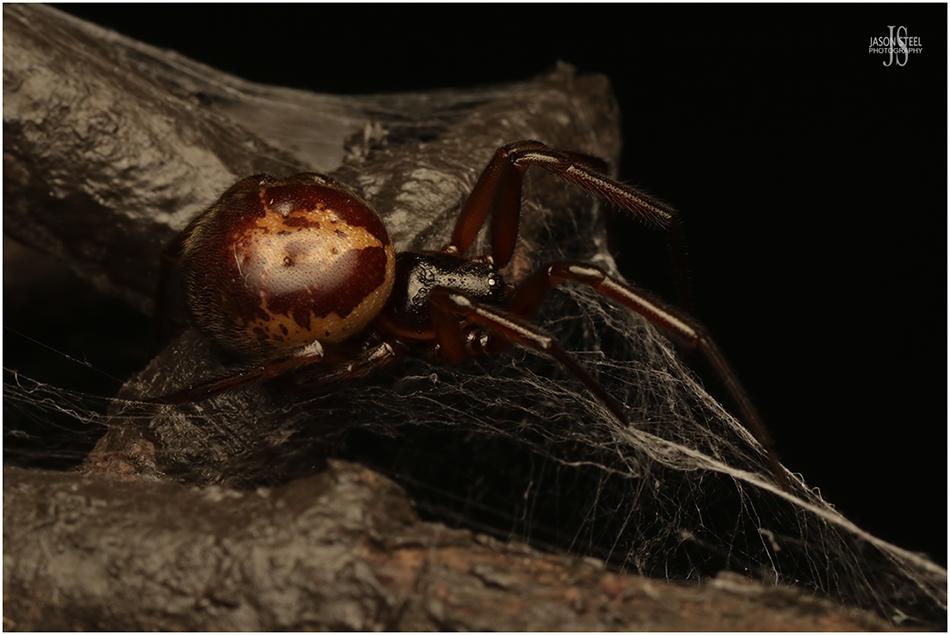
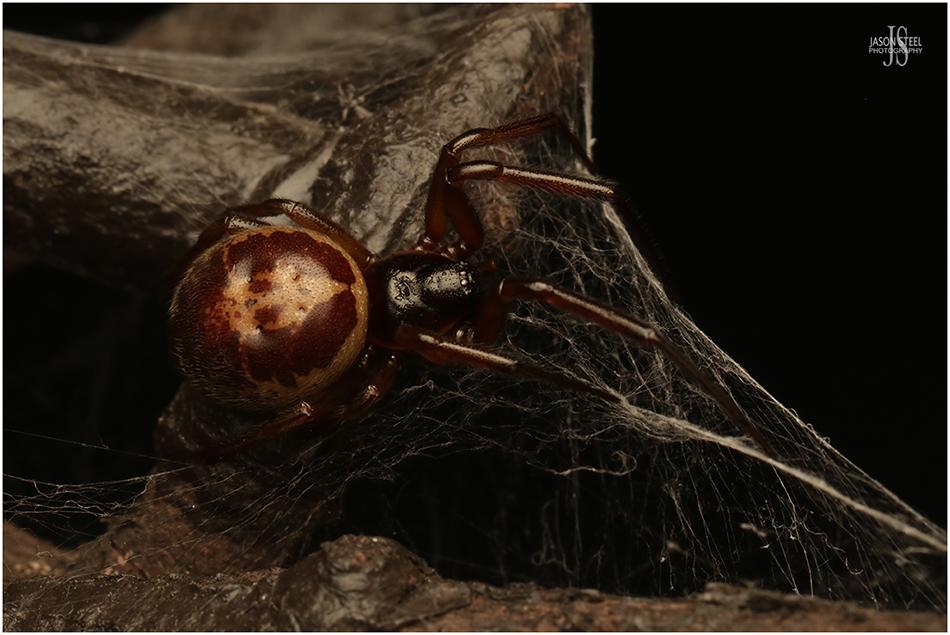
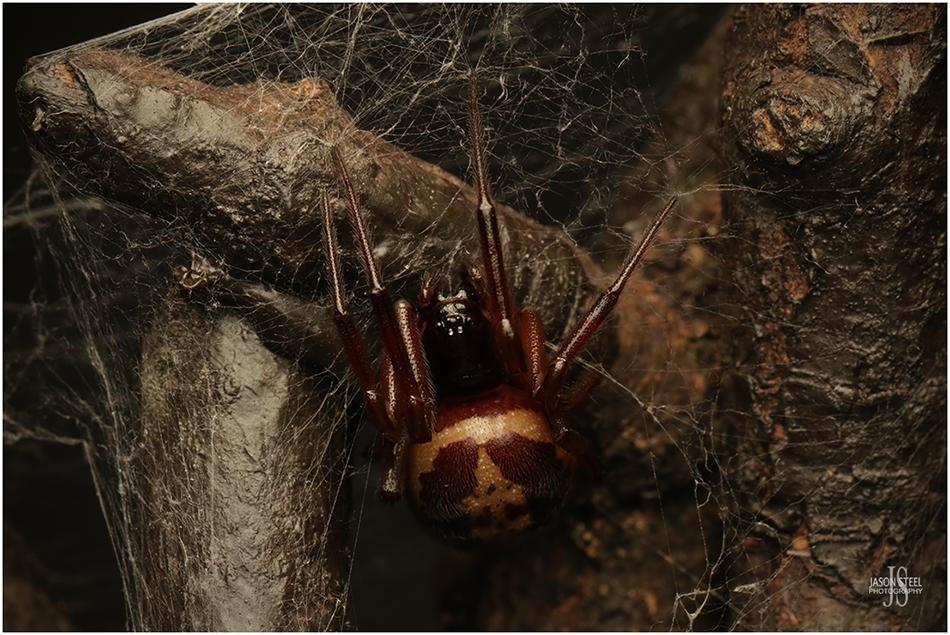
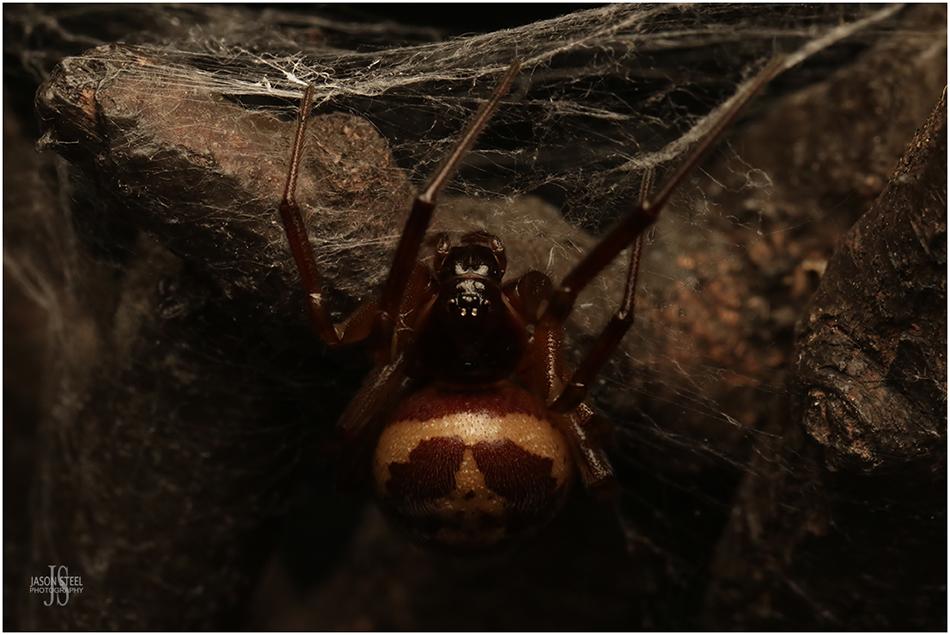
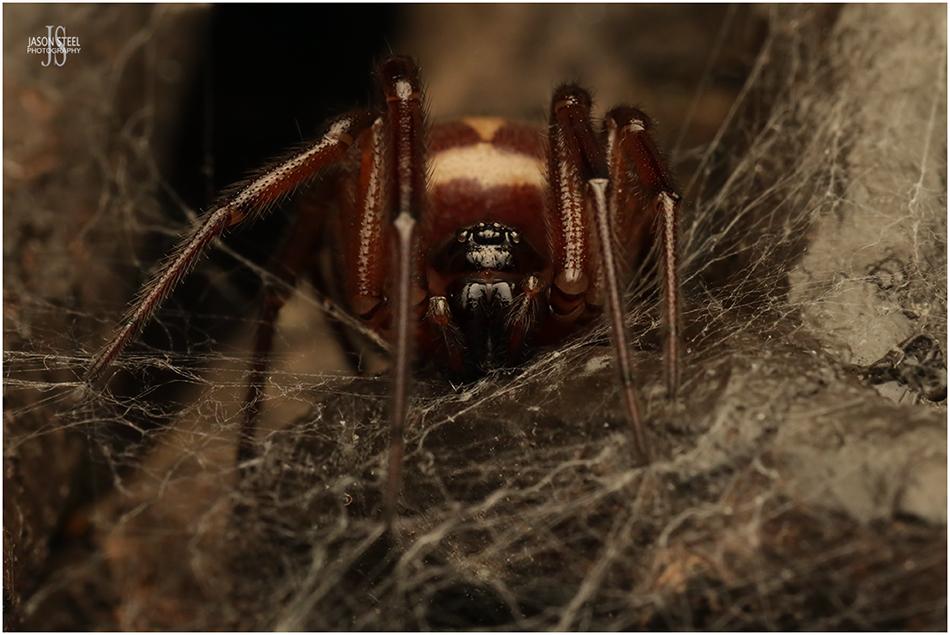
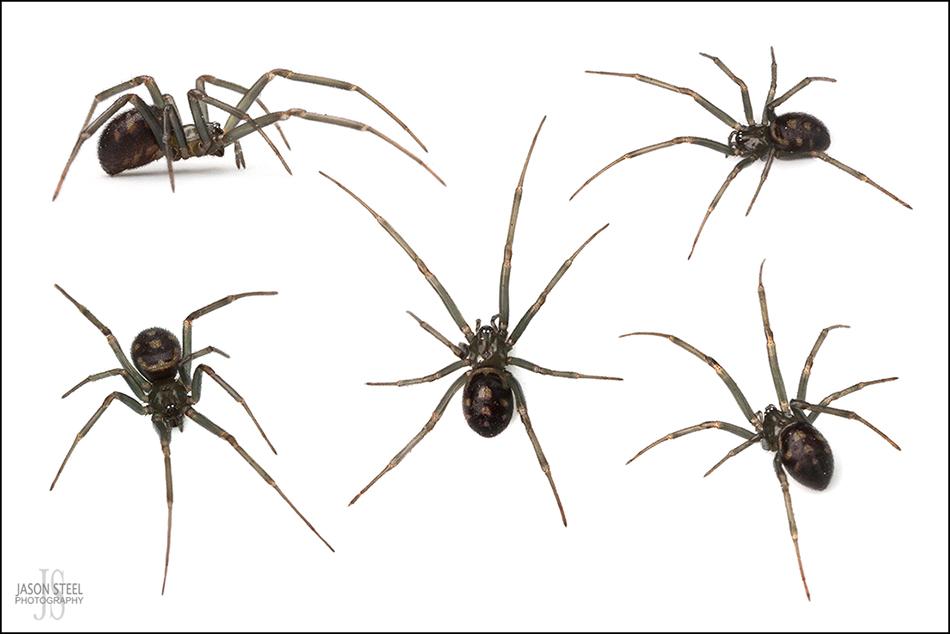
8mm female Cupboard Spider / False Widow Spider (Steatoda grossa)
False Widow Spider / Cupboard Spider (Steatoda grossa)
Steatoda grossa is another of the UK's three common species of False Widow Spider. Steatoda grossa prefers a slightly different habitat to the Noble False Widow Spider. Although both species are generally synanthropic, being found around homes and buildings, Steatoda grossa prefer to reside in dark, undisturbed places, such as sheds and outhouses, under manhole covers, and as the common name suggests, at the the very back of dark, cluttered and undisturbed cupboards in buildings. The messy tangle-webs are usually built close to ground level.
Steatoda grossa have adapted well to the dry conditions of our homes, and can last for months without food or water if necessary. The specimen above was found under a manhole cover above a sewage outlet in my garden in SE London / North Kent. Whilst the conditions within the cupboards and sheds, where Steatoda grossa are frequently found, are usually very dry habitats the Steatoda grossa that live under the manhole cover in my garden show this species can also thrive in this very damp environment too. Because of the dark habitats that Steatoda grossa favour their main food source is often woodlice, that share these habitats.
Female Steatoda grossa have a maximum body-length of around 6.5 - 10mm but the males tend to be slightly smaller and slimmer at around 4 - 7mm. Females can live for 2 - 6 years in captivity, but they often typically only live for around 18 months in the wild. Males usually die after mating. The most distinguishing feature of Steatoda grossa are the two or three triangular or chevron markings on the top of the abdomen, which are not always present on larger, older female specimens. Unlike the abdominal markings of Steatoda nobilis, the foremost light chevron marking rarely touches the light abdominal band at the front of the abdomen. This cream coloured abdominal band, found on both Steatoda nobilis and Steatoda grossa, extends further along and further down the abdomen of Steatoda nobilis than Steatoda grossa. On Steatoda grossa specimens, where the abdominal markings have faded, this cream band usually also disappears. However, it's more common for faded specimens of Steatoda nobilis to still exhibit this cream band to some extent when the rest of the abdominal markings have faded or disappeared. The legs of Steatoda grossa, particularly the front pair of femurs, tend to be slightly thinner on Steatoda grossa when compared to those of Steatoda nobilis. The location of the web is helpful in determining which of the two species a False Widow might be. Steatoda grossa build their webs in dark, undisturbed locations. Steatoda nobilis may also sometimes build their webs in dark places, although more often the web is built where it is at least partially exposed to light, but the spider itself usually remains hidden away until it starts getting dark.
Although widely established across England and Wales, with a scattered distribution in the north of the UK, Steatoda grossa was only first recorded here in the UK at several sites in the south of England, around the year 1900. Although its history before this date is unclear it is likely that Steatoda grossa is not originally native, and like Steatoda nobilis, has been accidentally introduced to the UK. It is widely regarded that for a species to be considered as native it generally has to have been here since the last ice-age, or it has to have become established and naturalised here without deliberate or accidental assistance from humans. It's likely that Steatoda grossa does not fit into either definition and therefore could not be regarded as native to the UK. It would be interesting to see how common and widespread Steatoda grossa was in the UK 75 years ago. It's distribution, like Steatoda nobilis, was probably very patchy and localised, pointing to the likelihood of multiple accidental introductions over the years.
Steatoda grossa was not originally assigned to the Steatoda genus at all. Even literature from the 1970's refers to this species as the large Theridion spider, Teutana grossa. Until Steatoda nobilis was excepted as established in the UK Steatoda genus was regarded as the largest Theridion species found here.
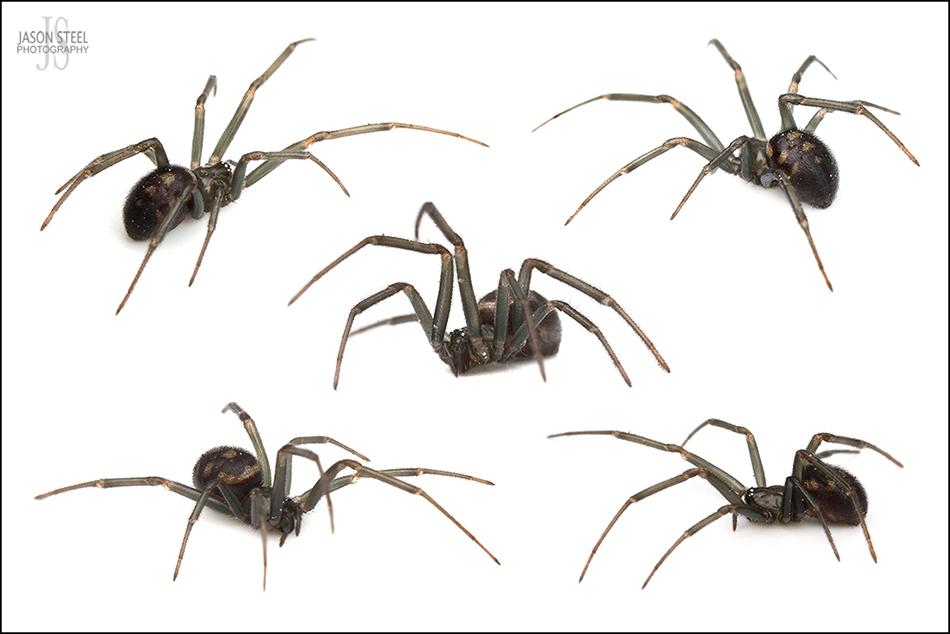
8mm female Cupboard Spider / False Widow Spider (Steatoda grossa)
Although not dangerous, the bite of the Cupboard Spider is known on occasion to be moderately painful to humans, but does not cause long term issues. On very rare occasions a bite can cause steatodism, which symptoms can include the site of the bite to blister and the victim could suffer muscle spasms, pain, fever and sweating. The antivenin for Latrodectus sp. (Black Widow Spider) is known to be effective in treating serious bites from Steatoda grossa.
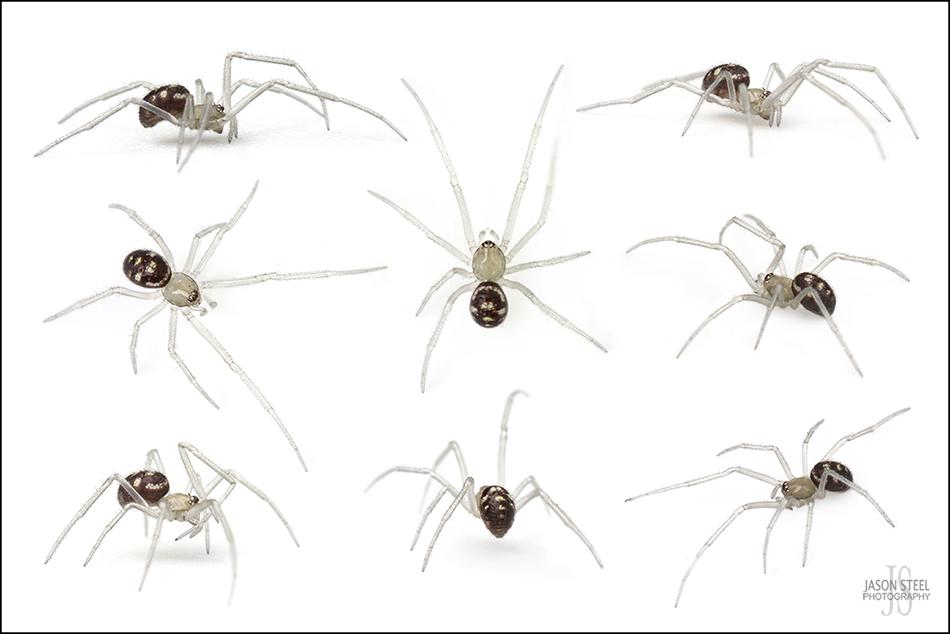
2mm Cupboard Spiderling / False Widow Spiderling (Steatoda grossa), found in my understairs cupboard, 19th June 2019.
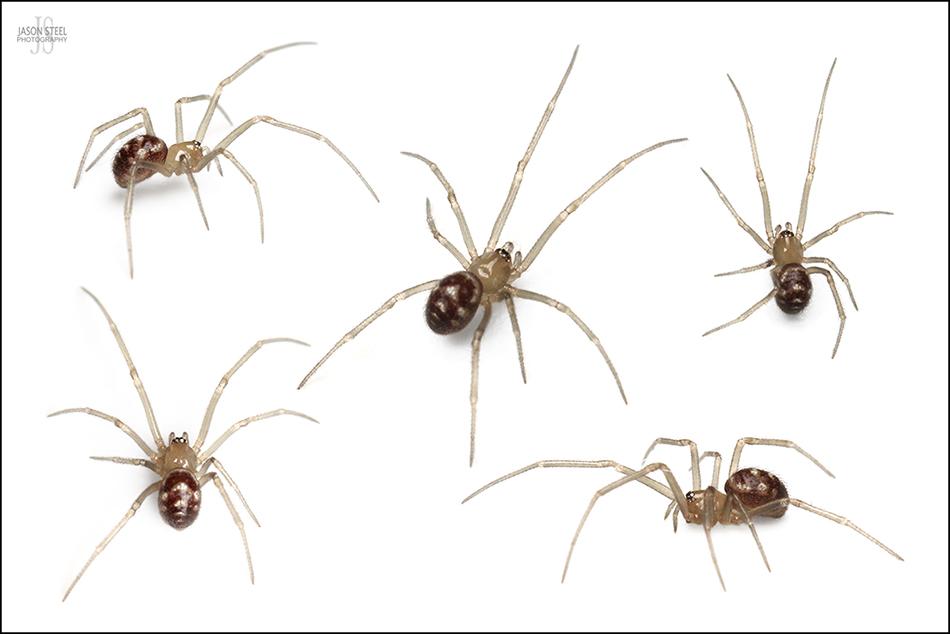
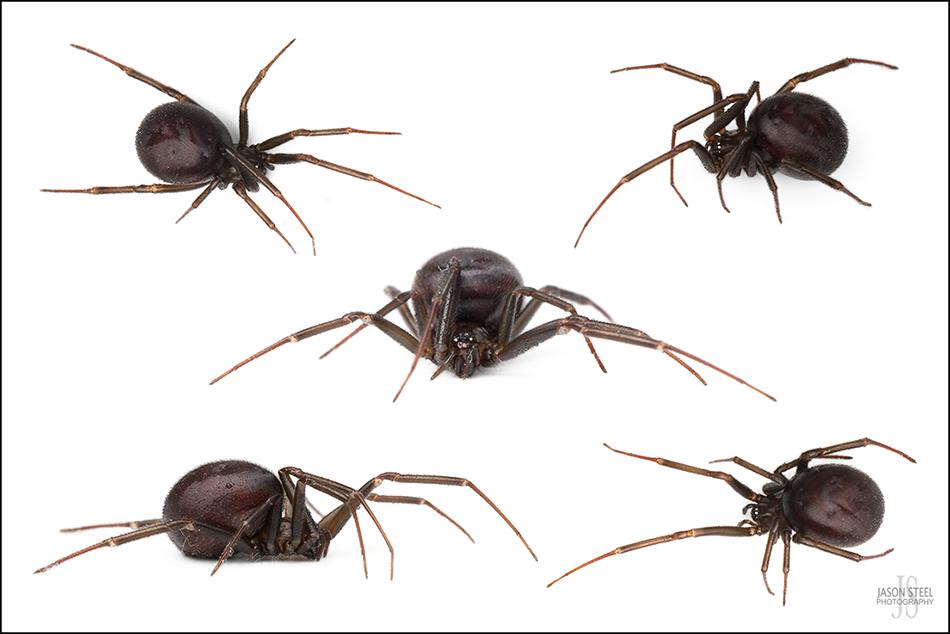
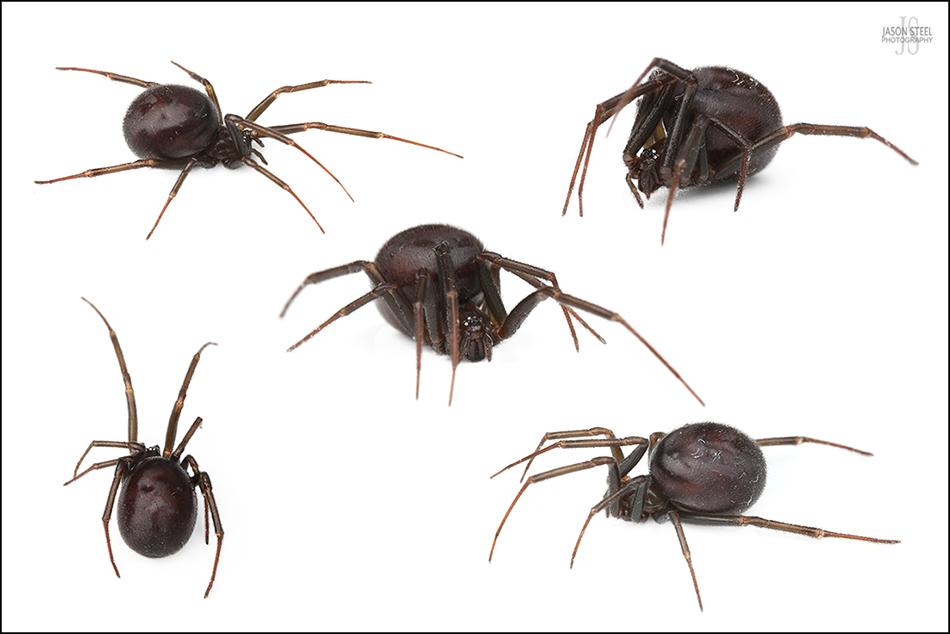
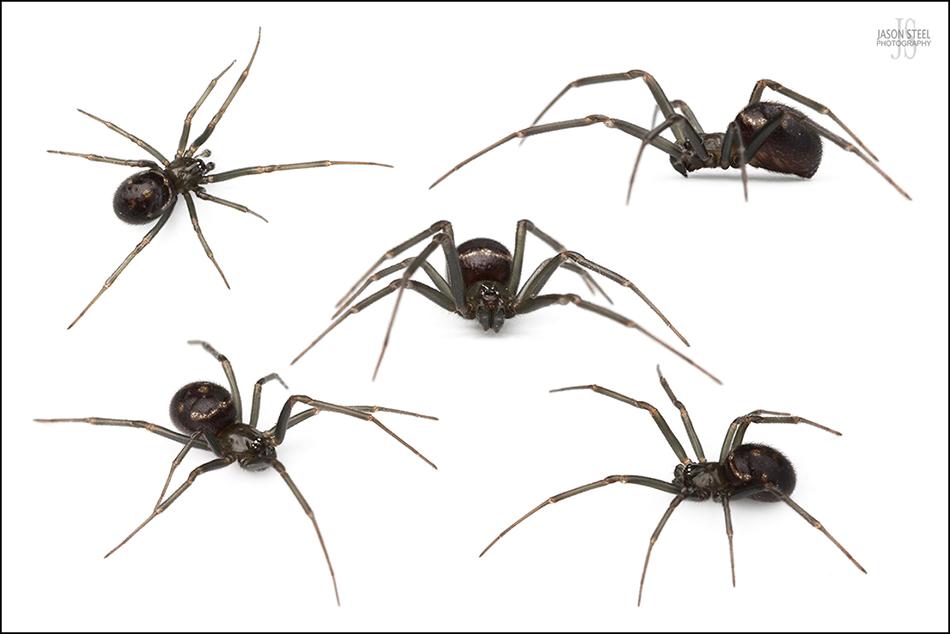
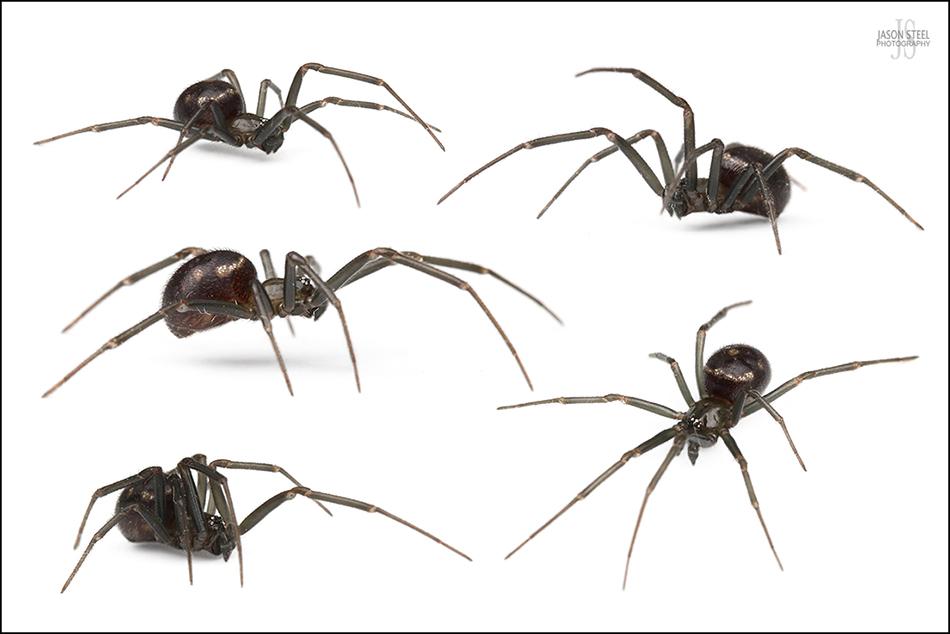
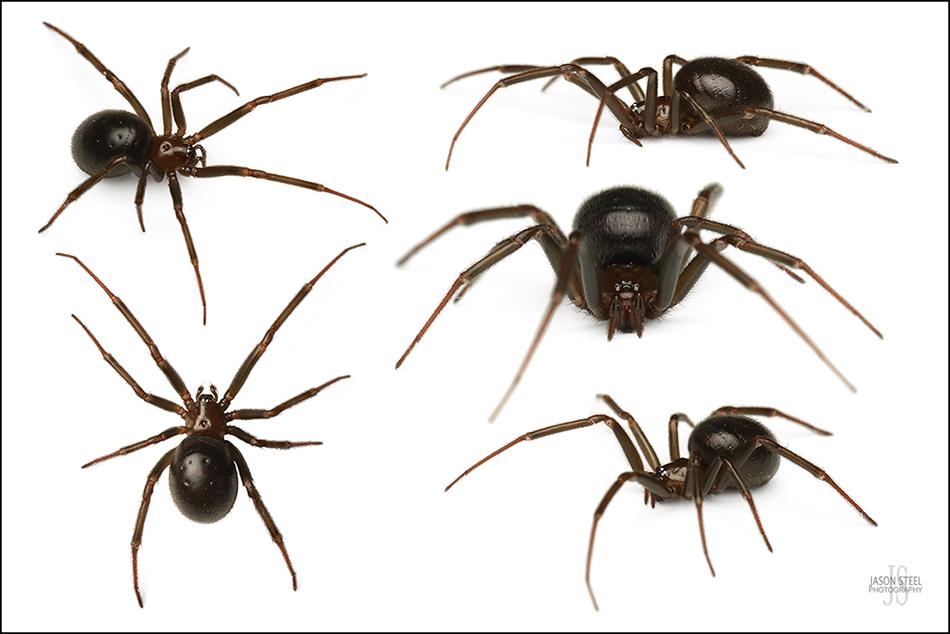
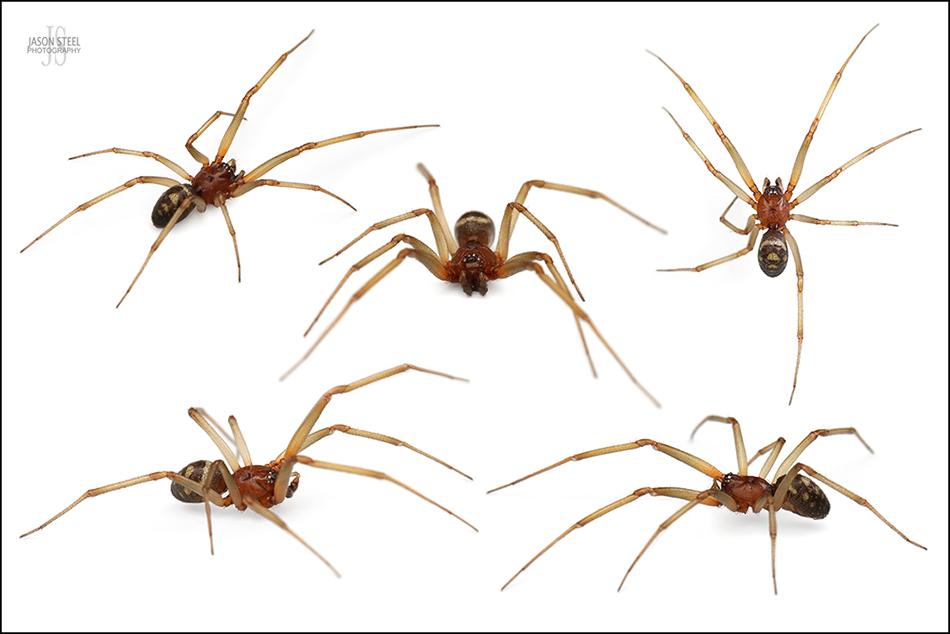
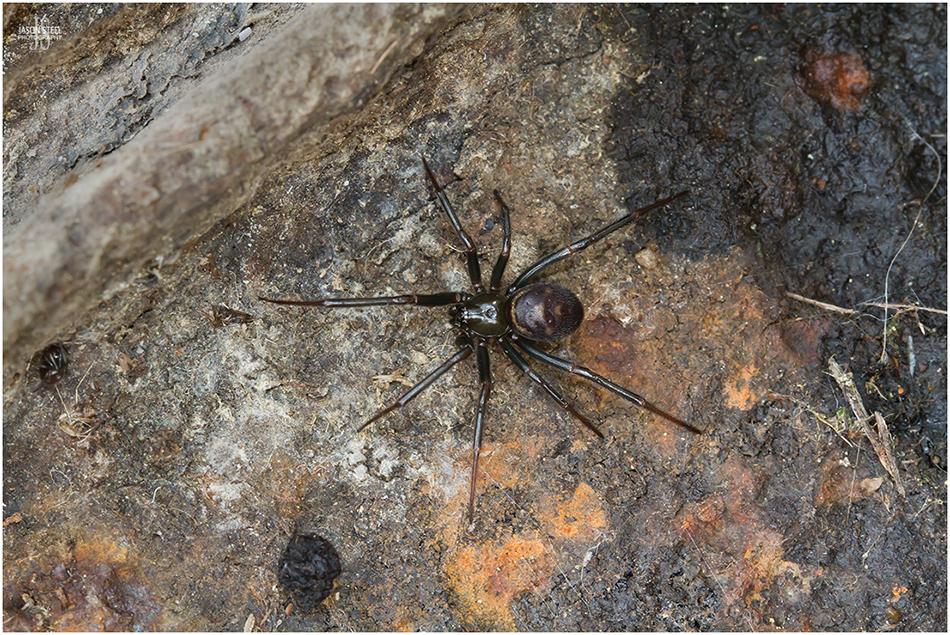
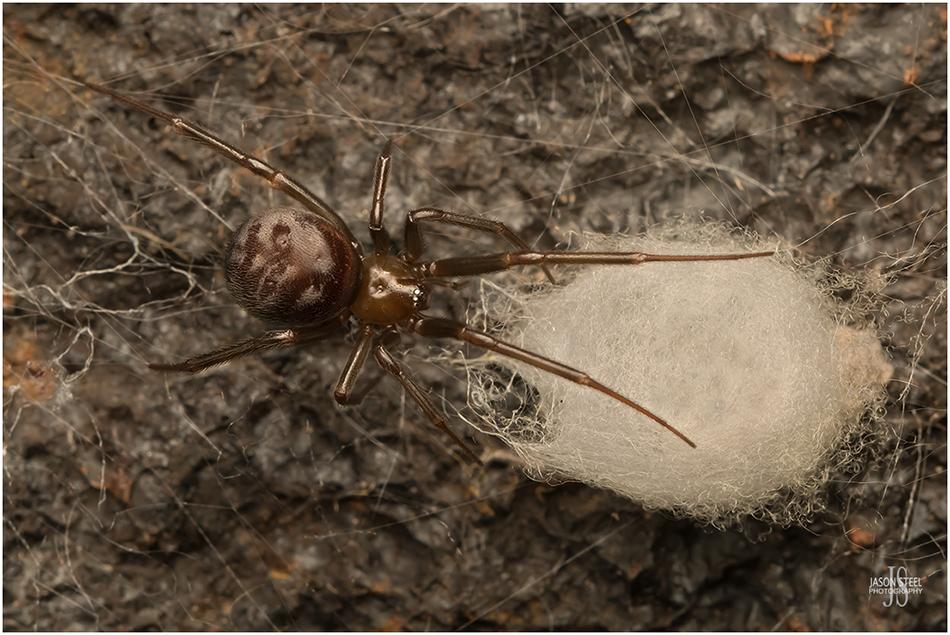
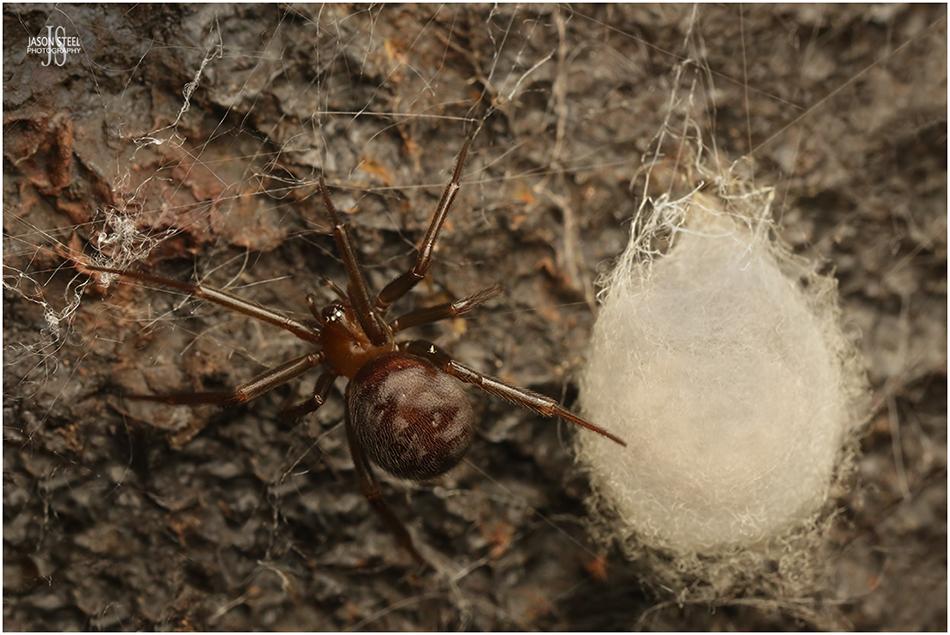
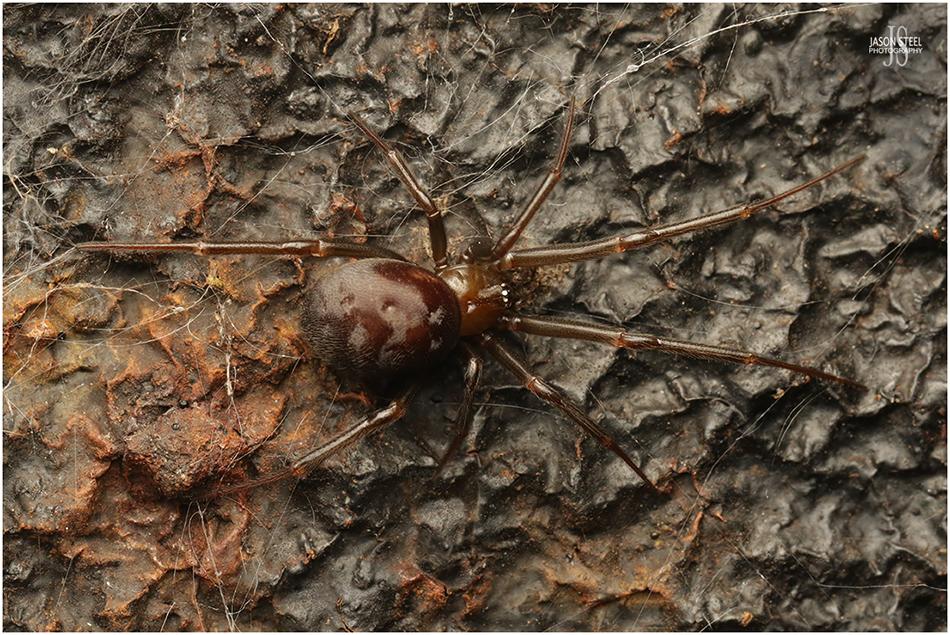
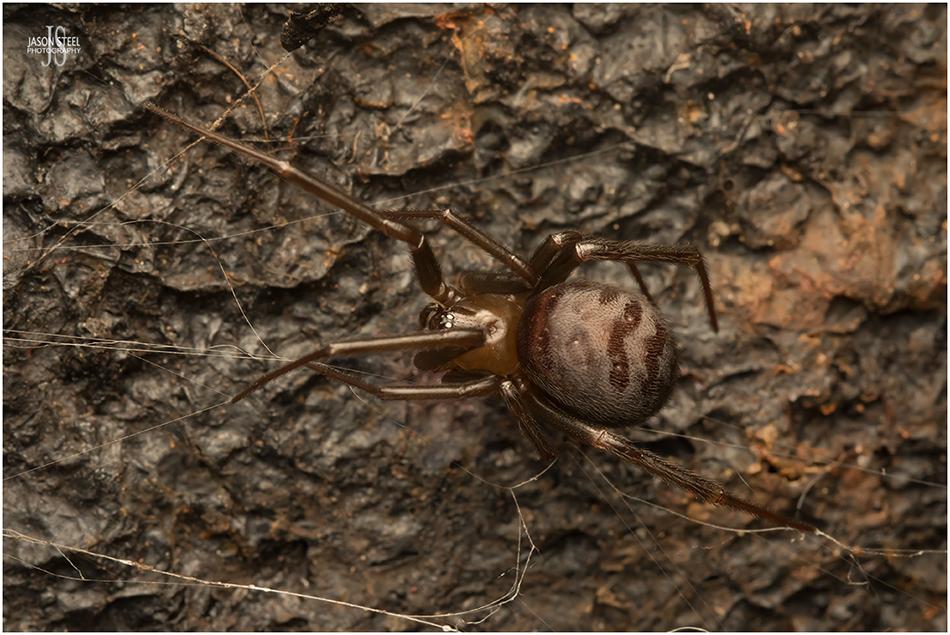
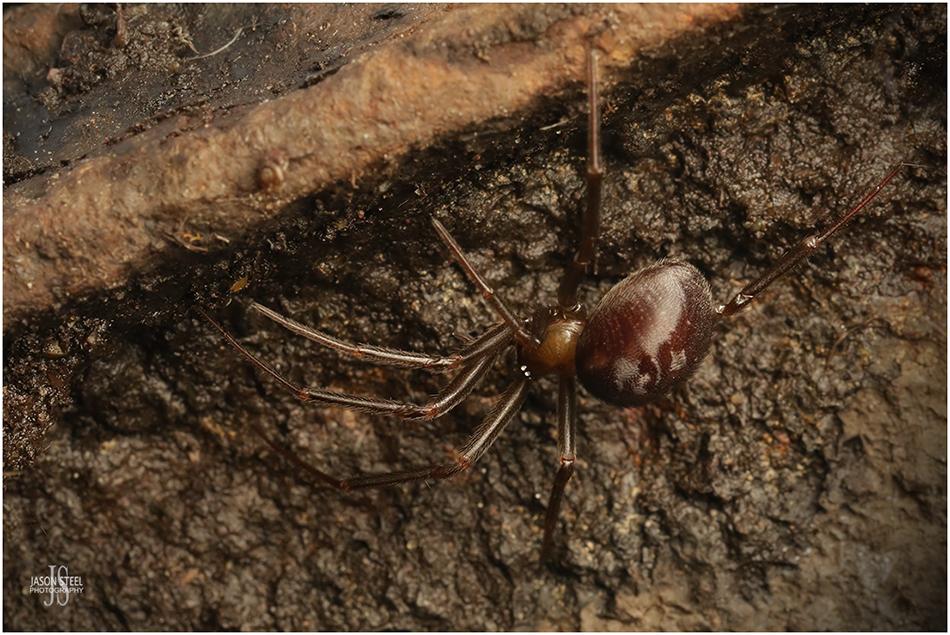
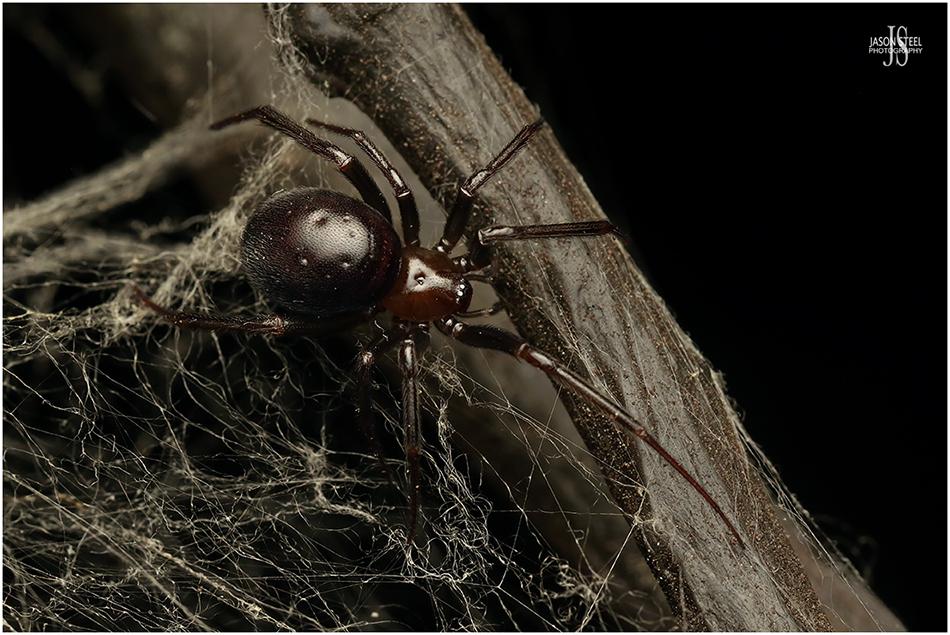
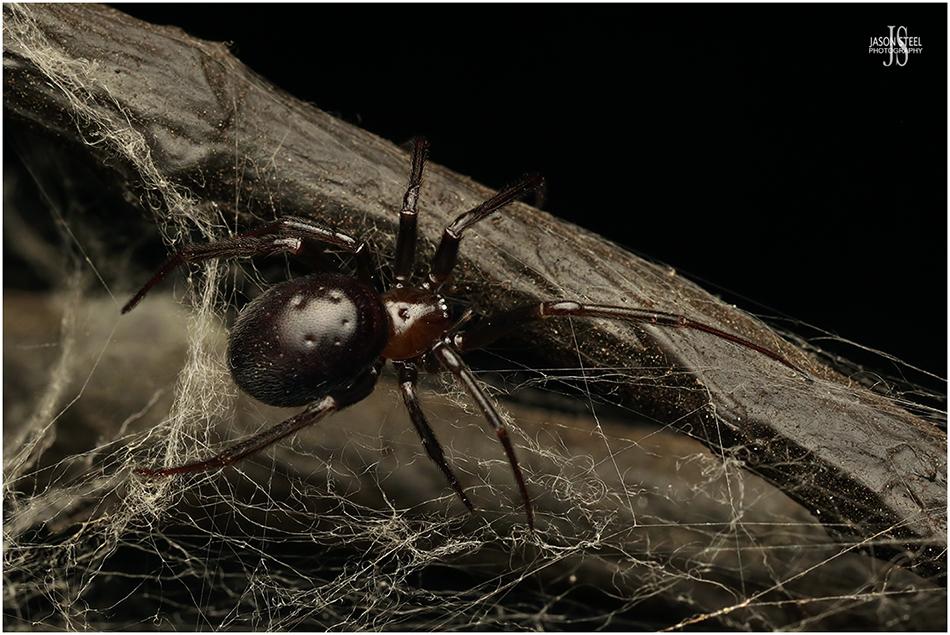
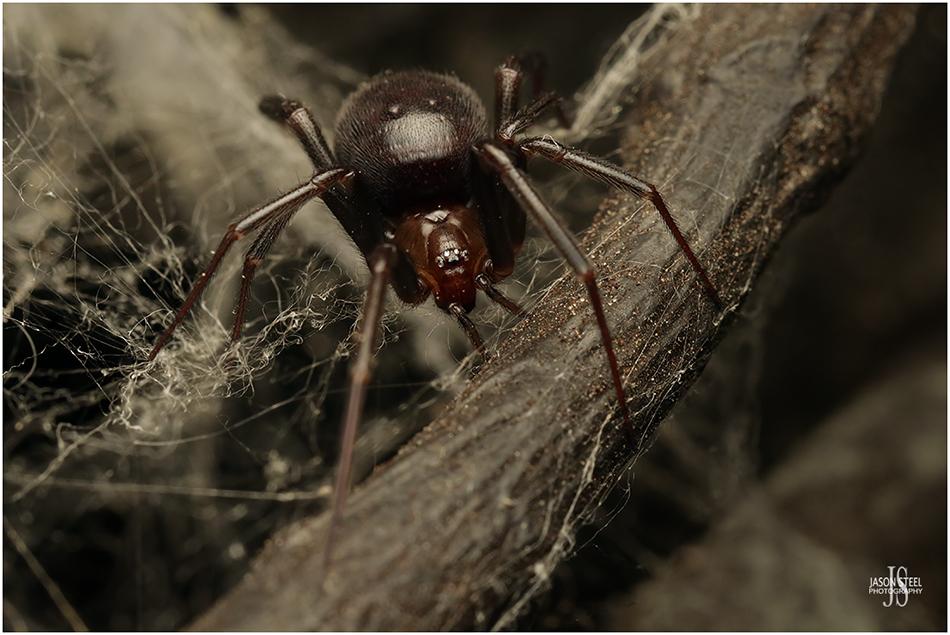
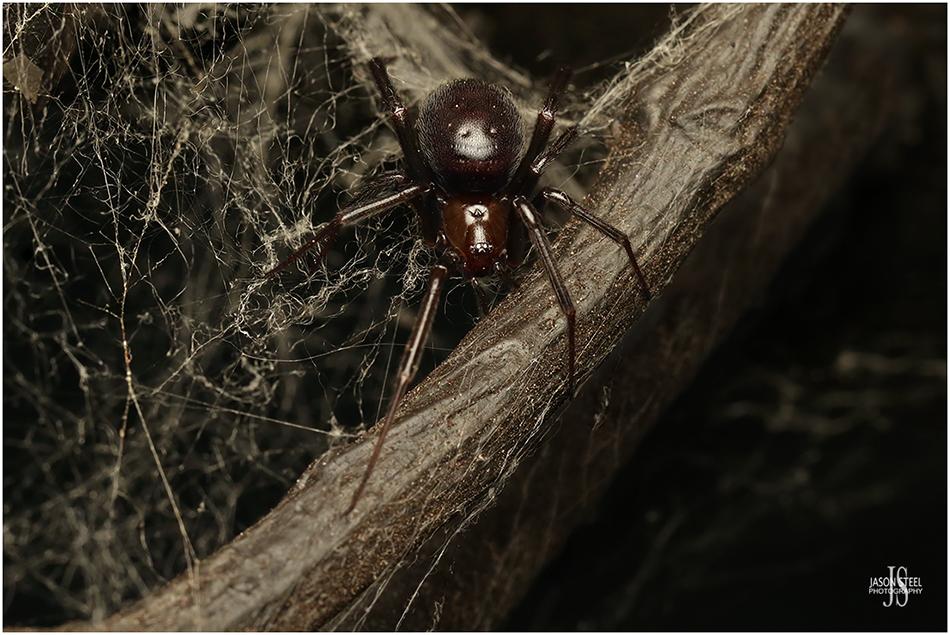
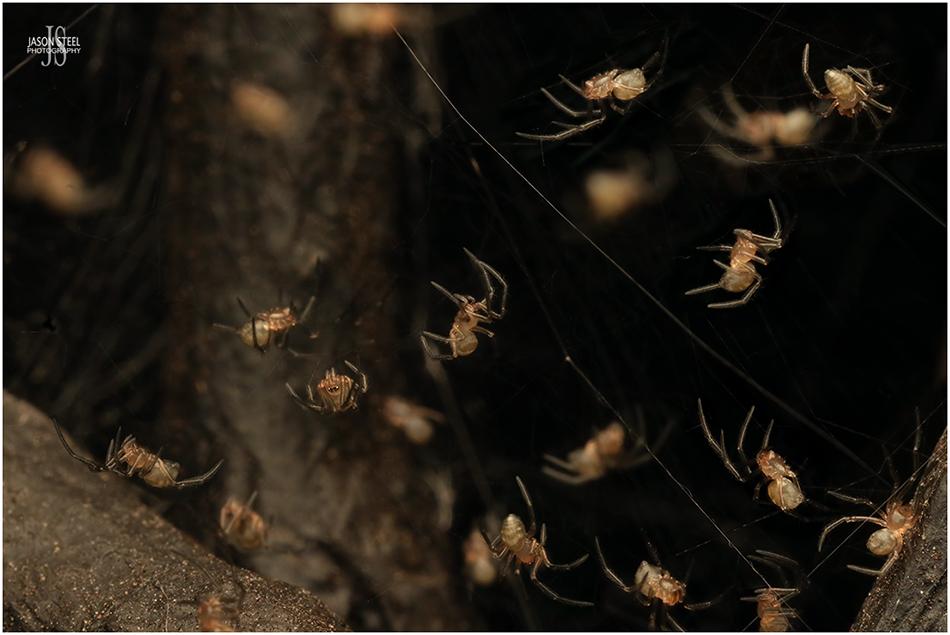
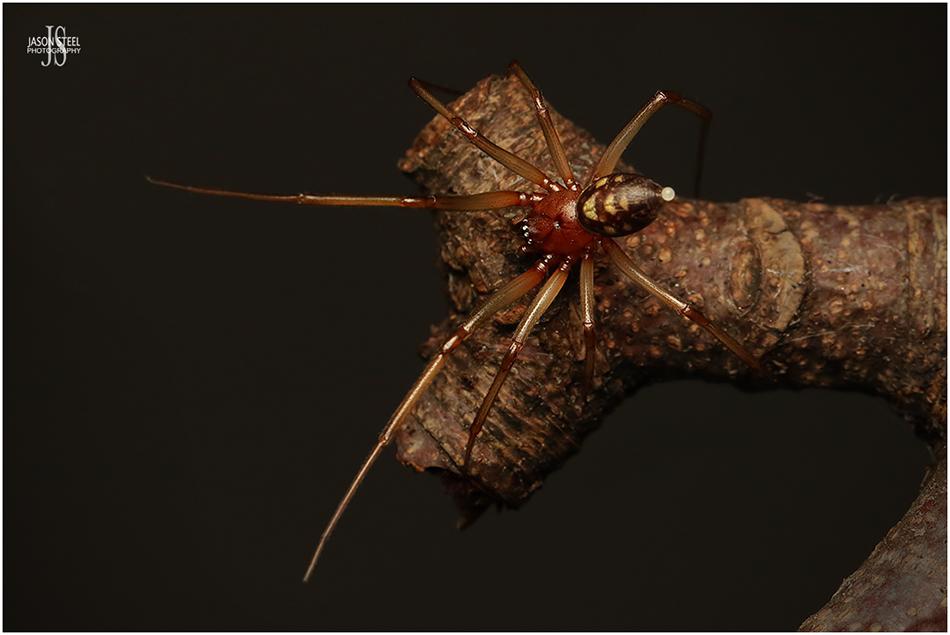
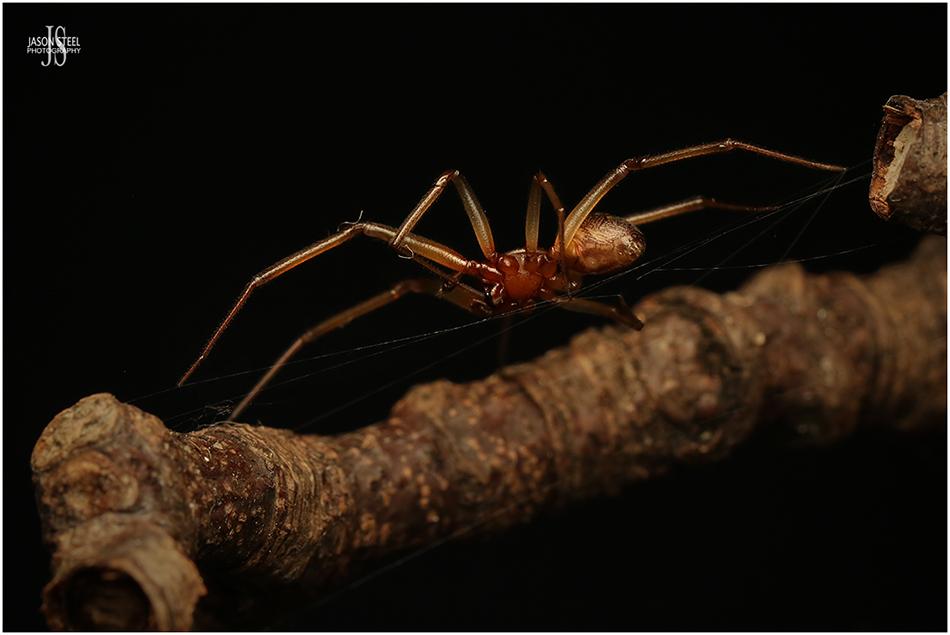
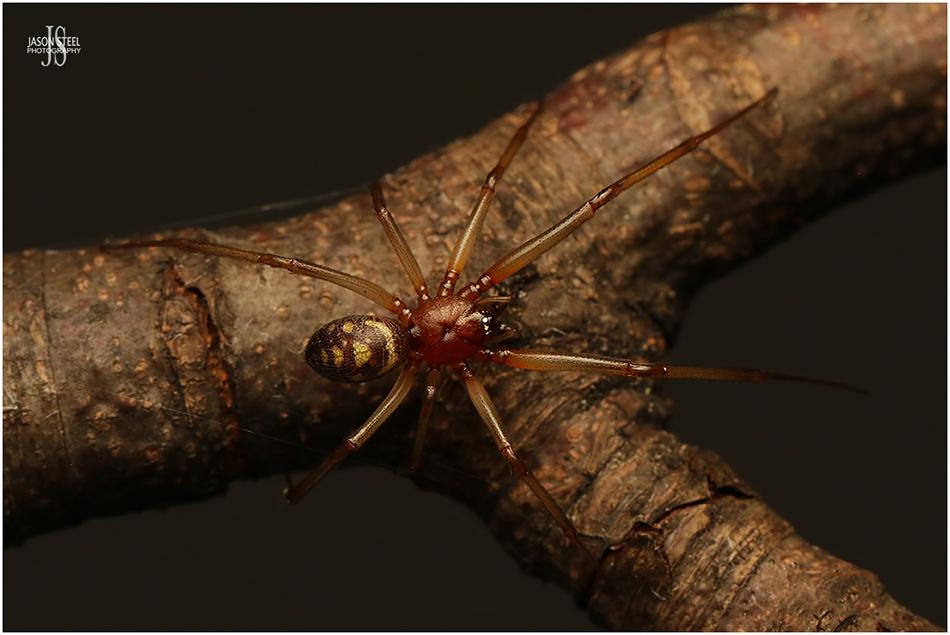

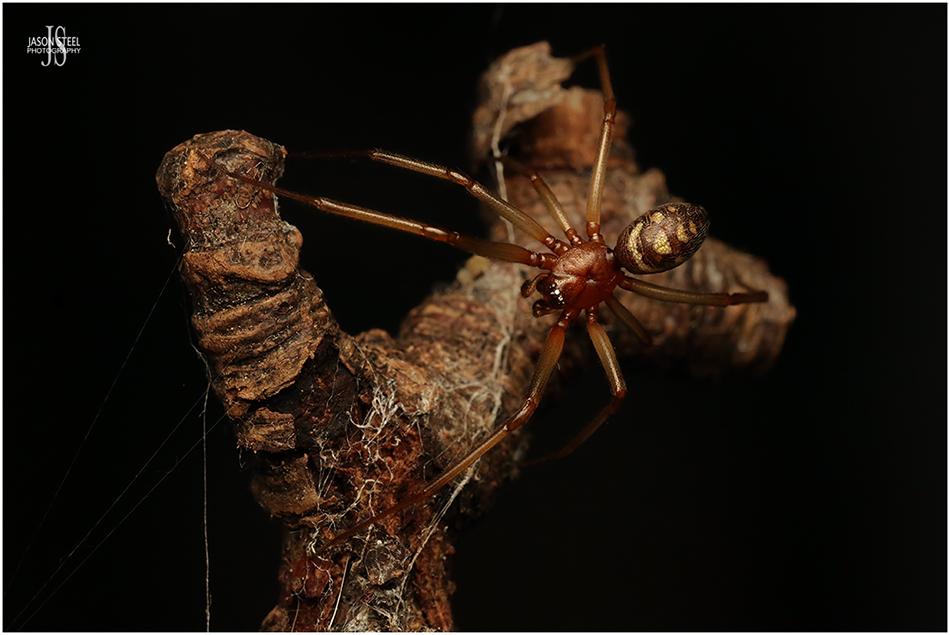
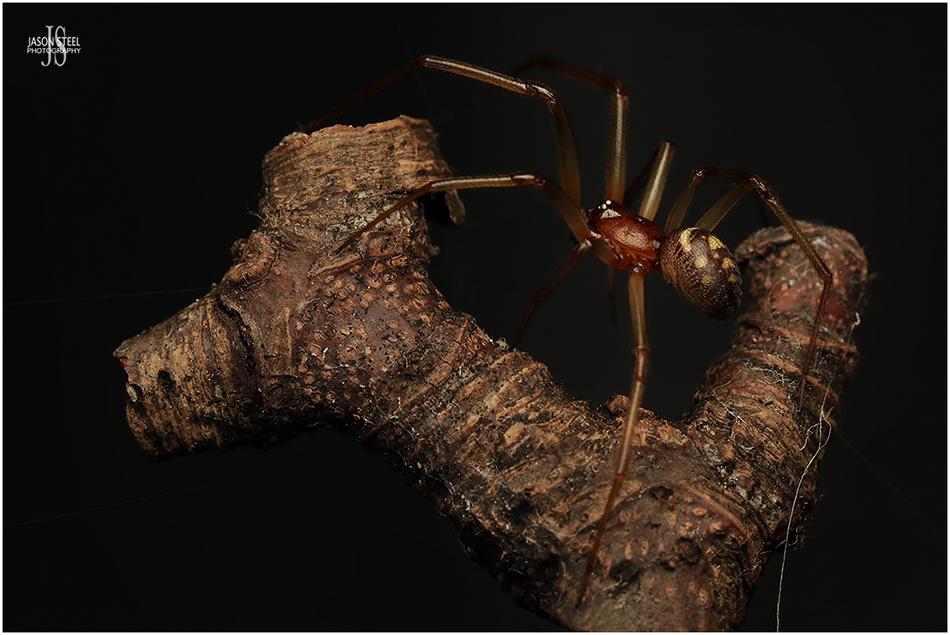
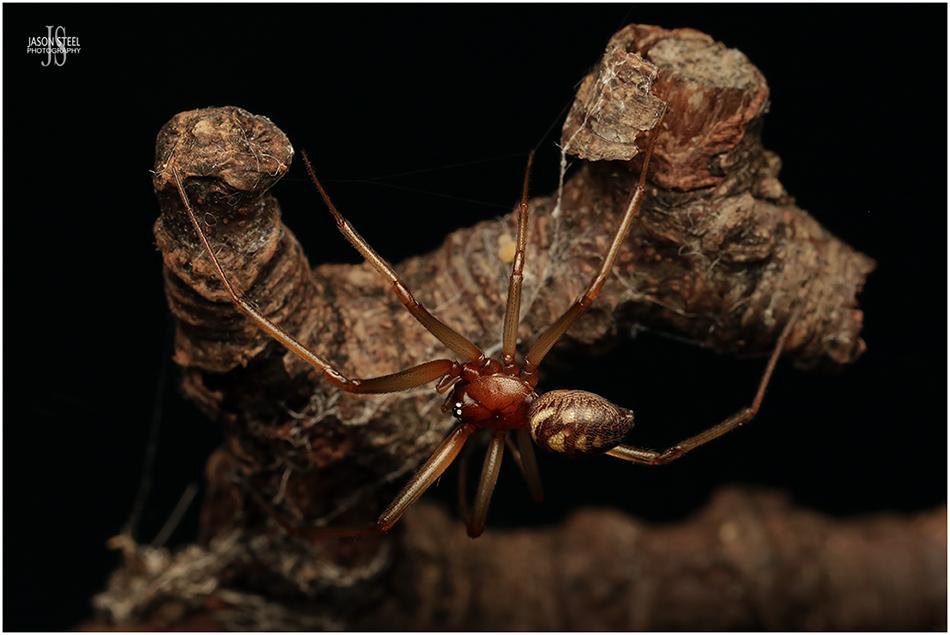
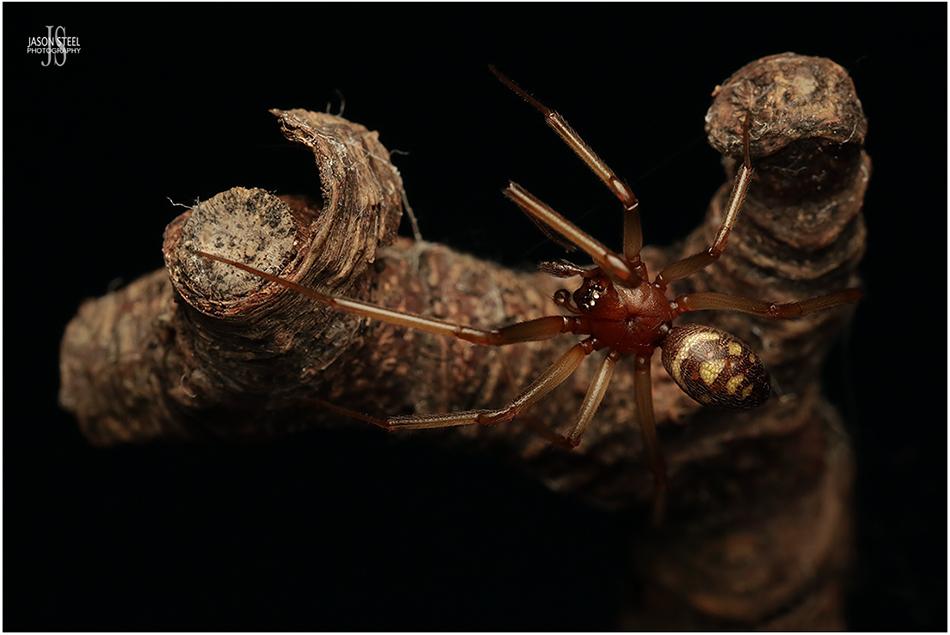
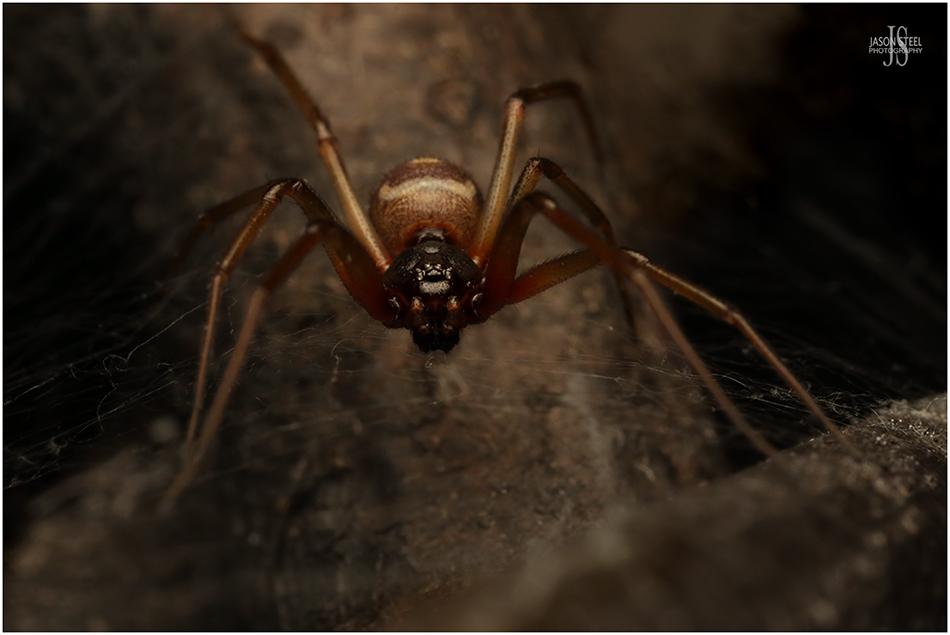
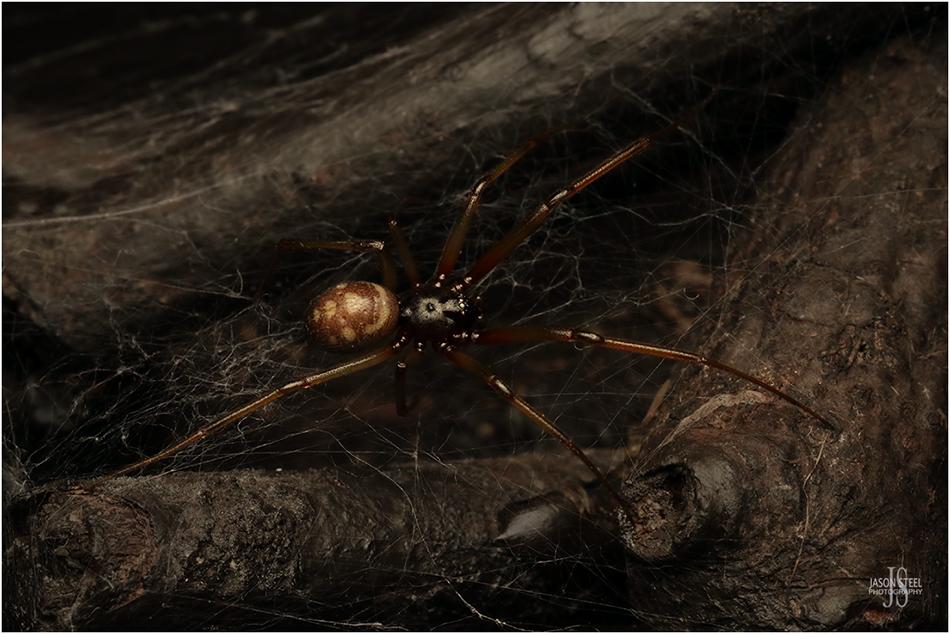
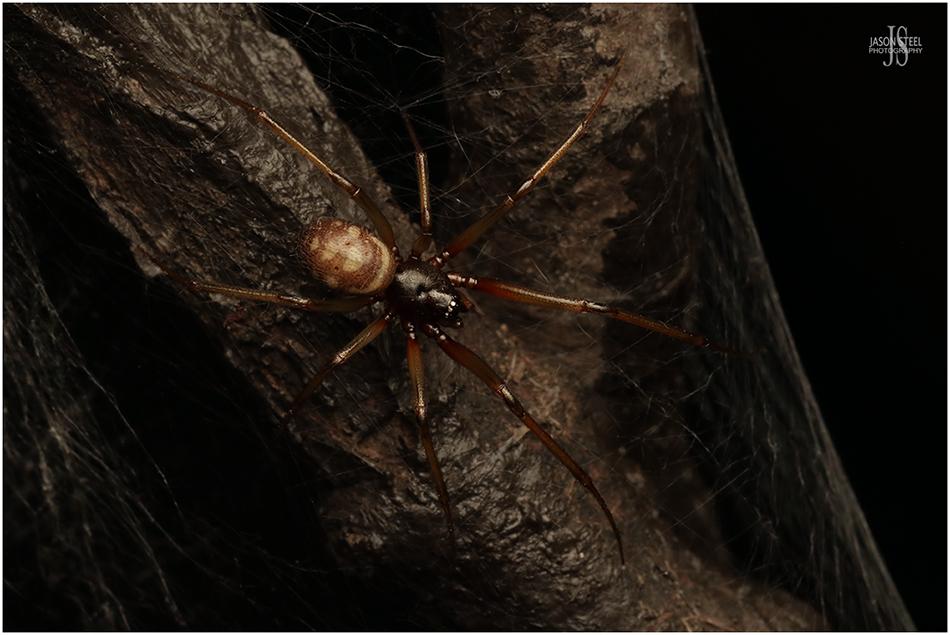
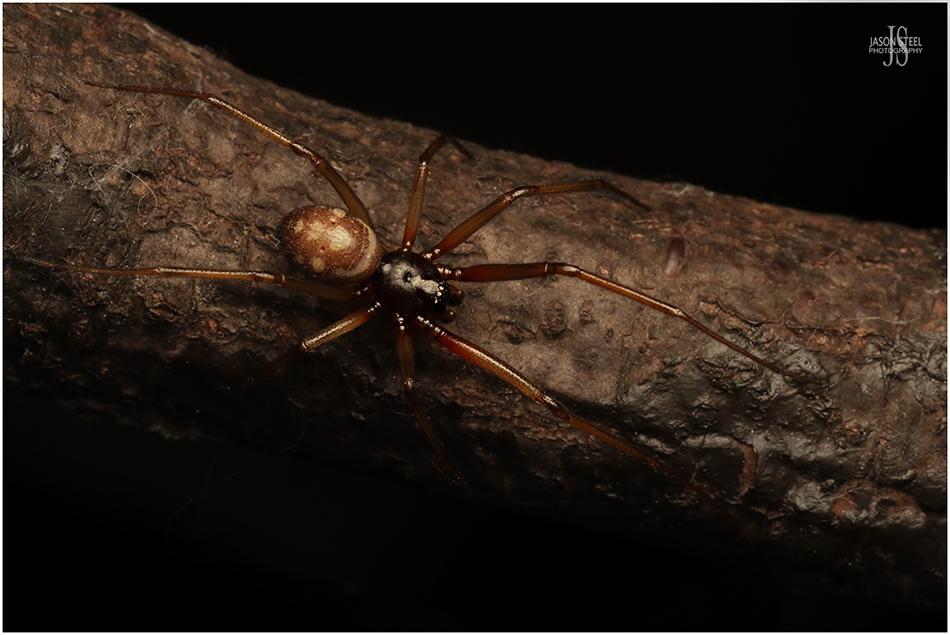
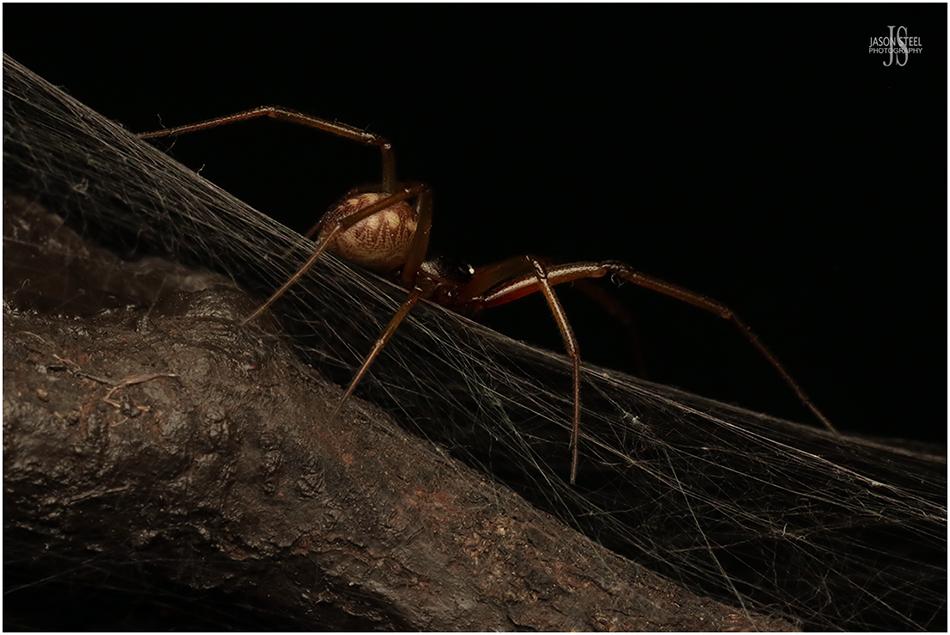
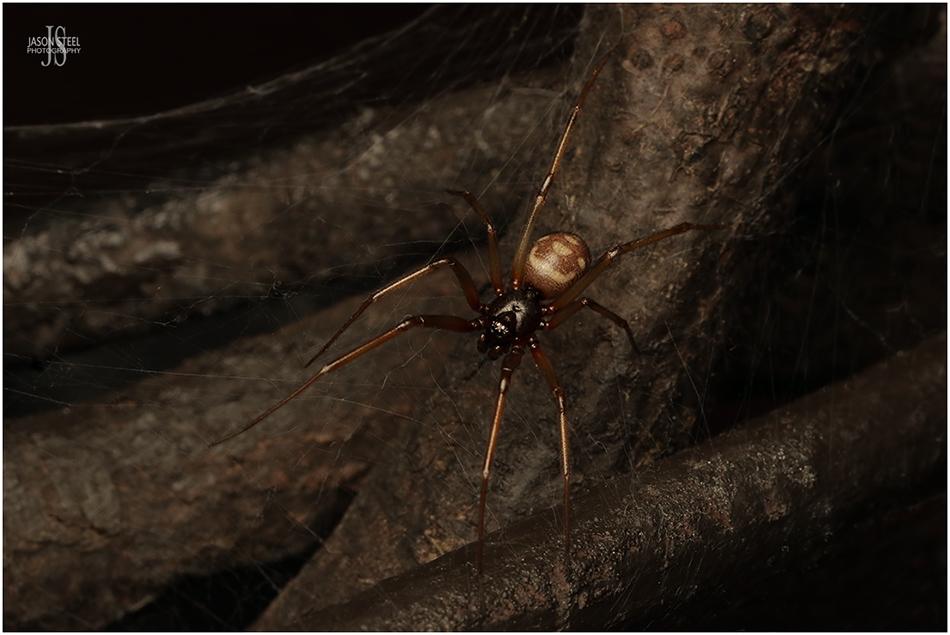
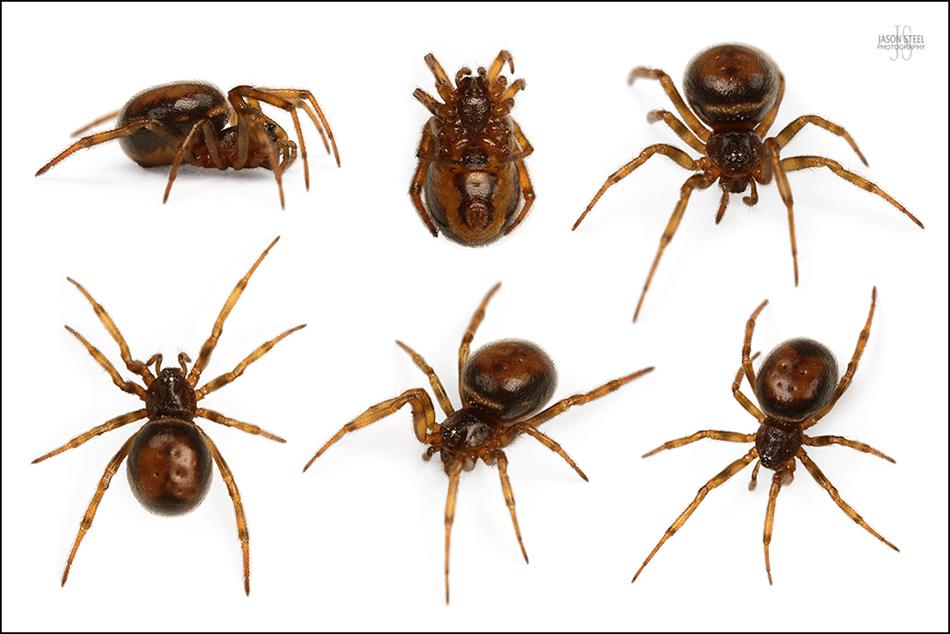
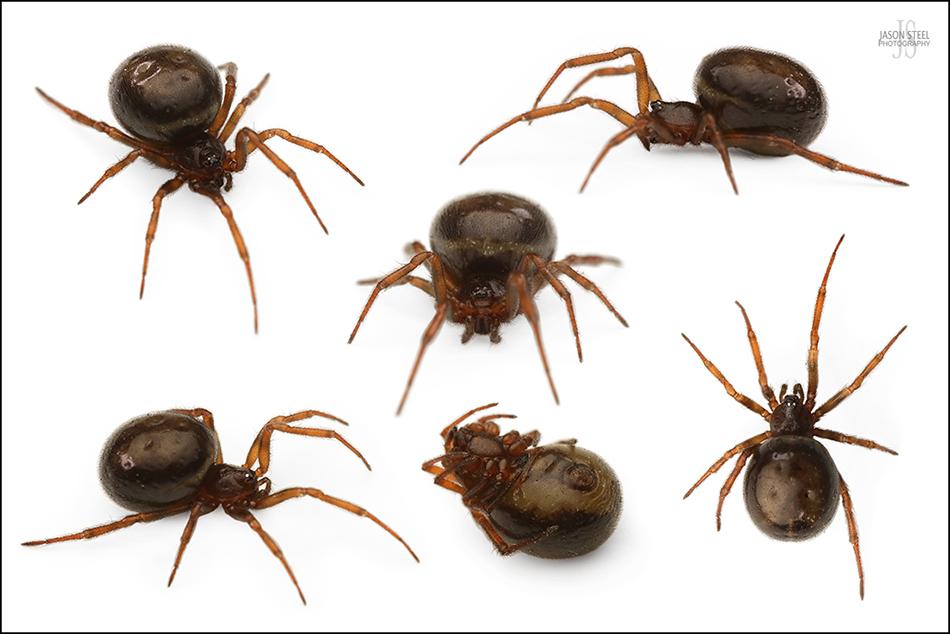

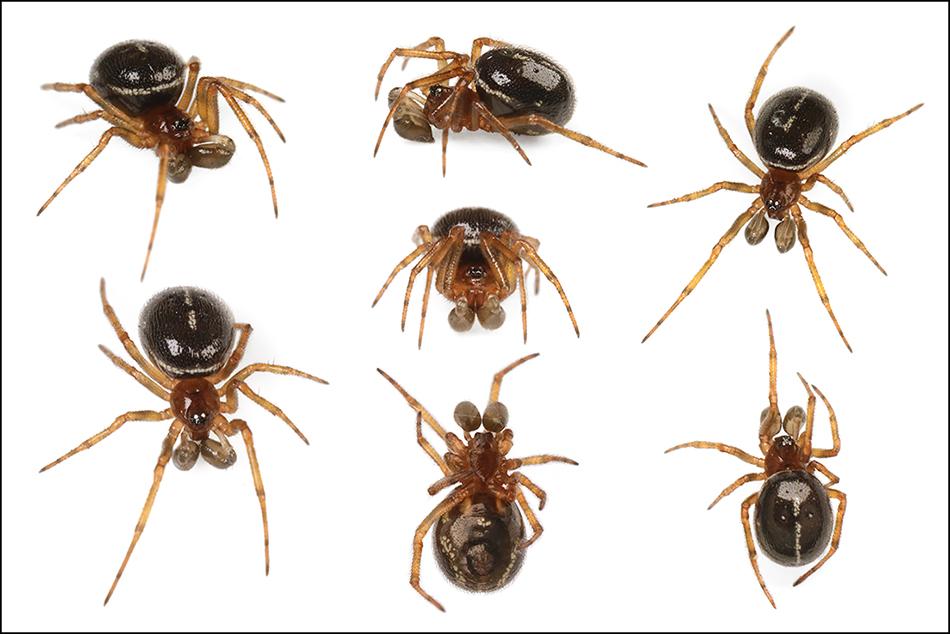
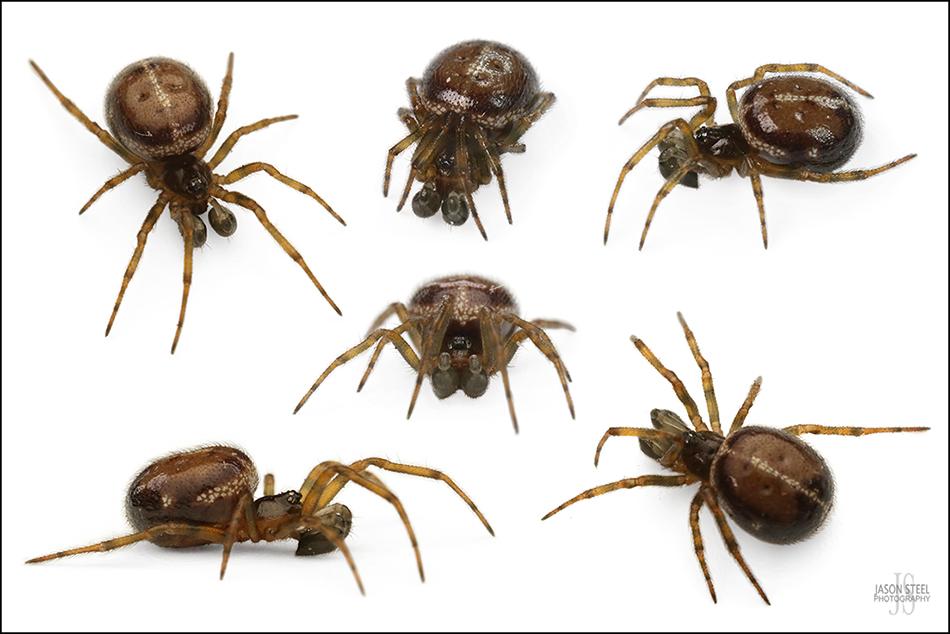
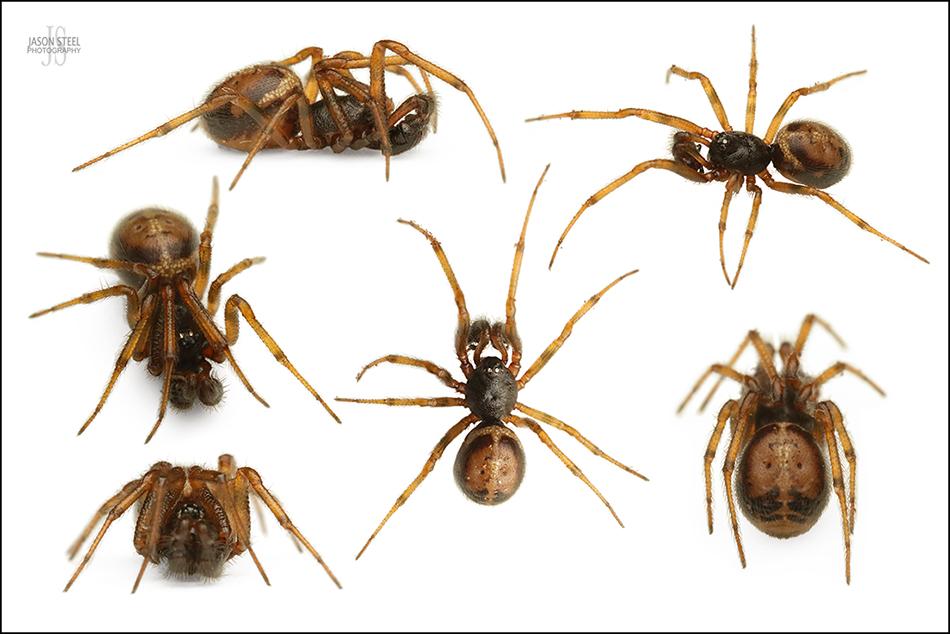
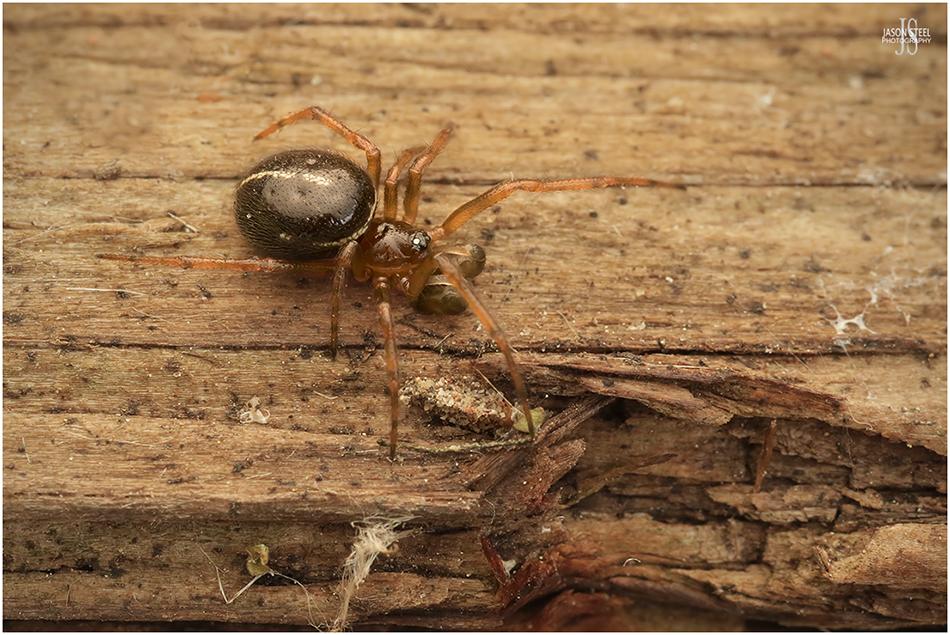
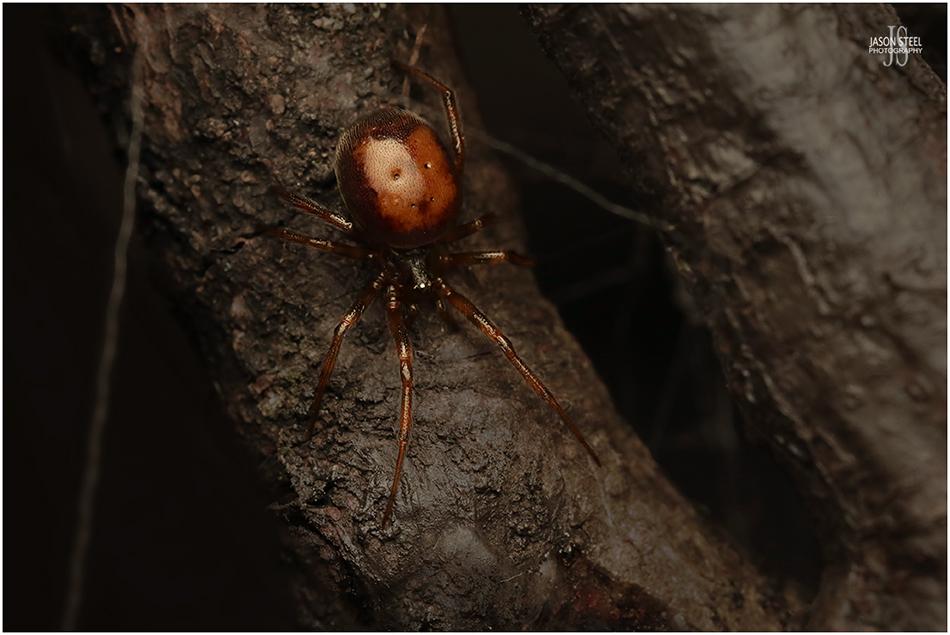
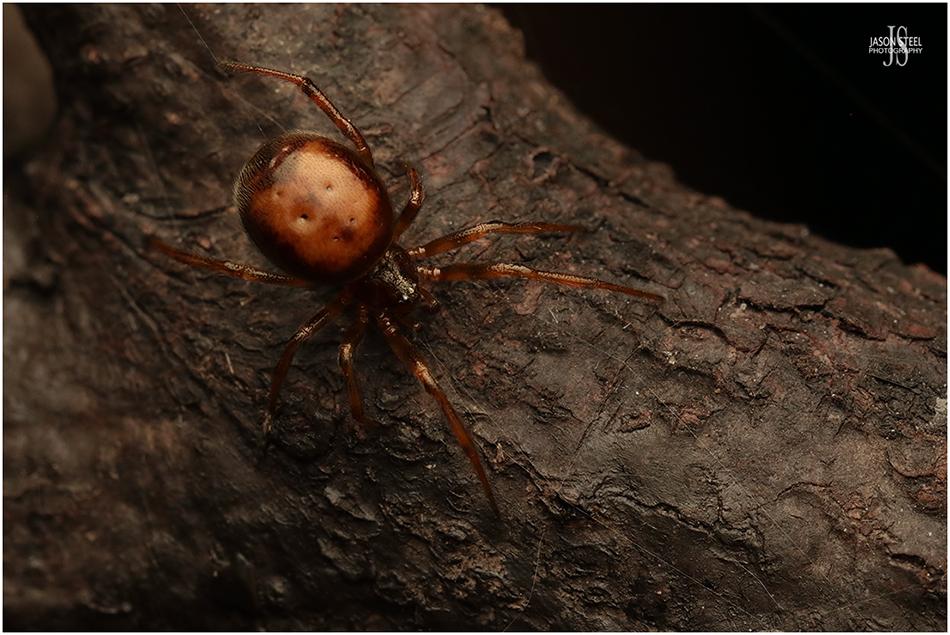
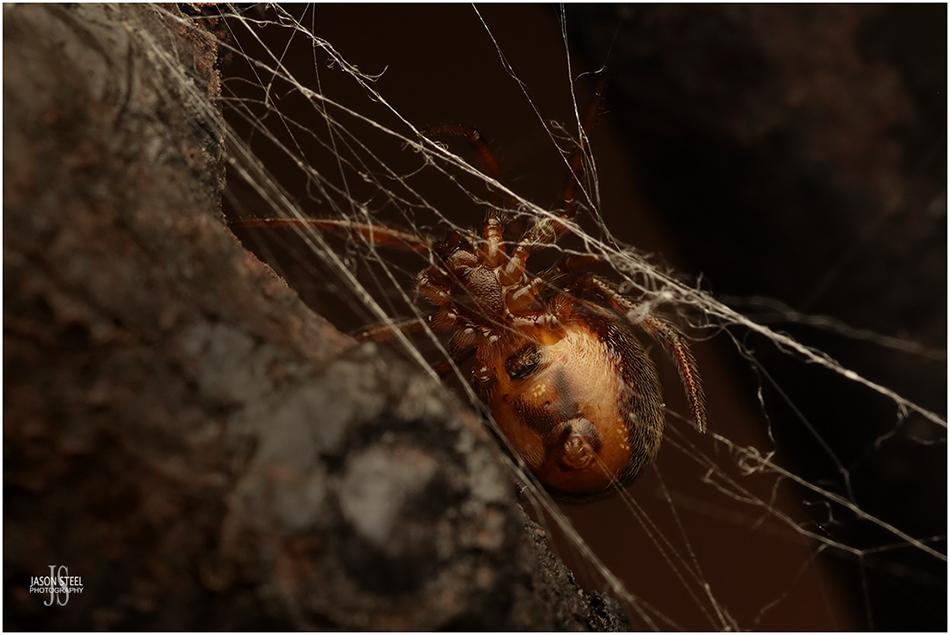
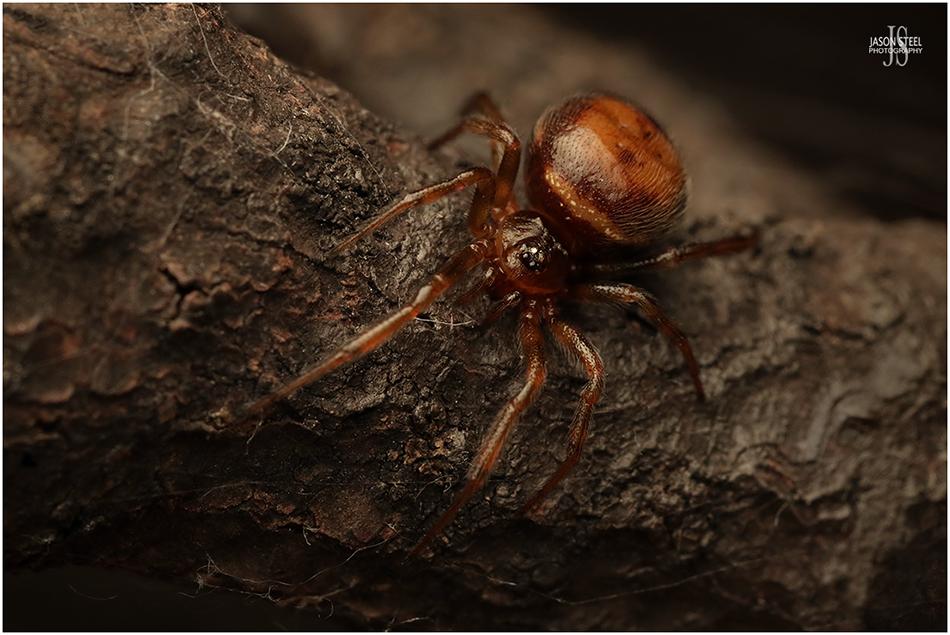
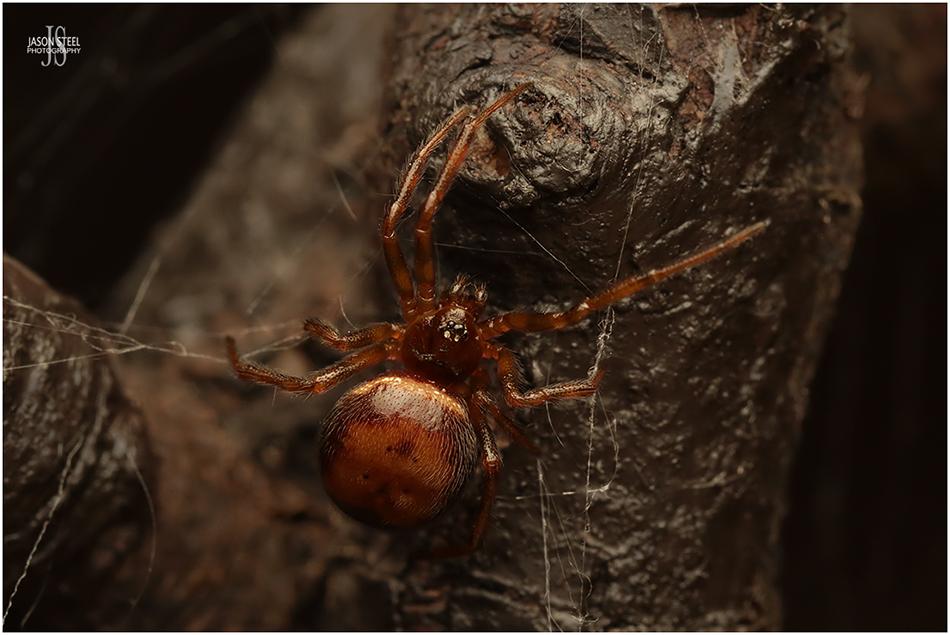
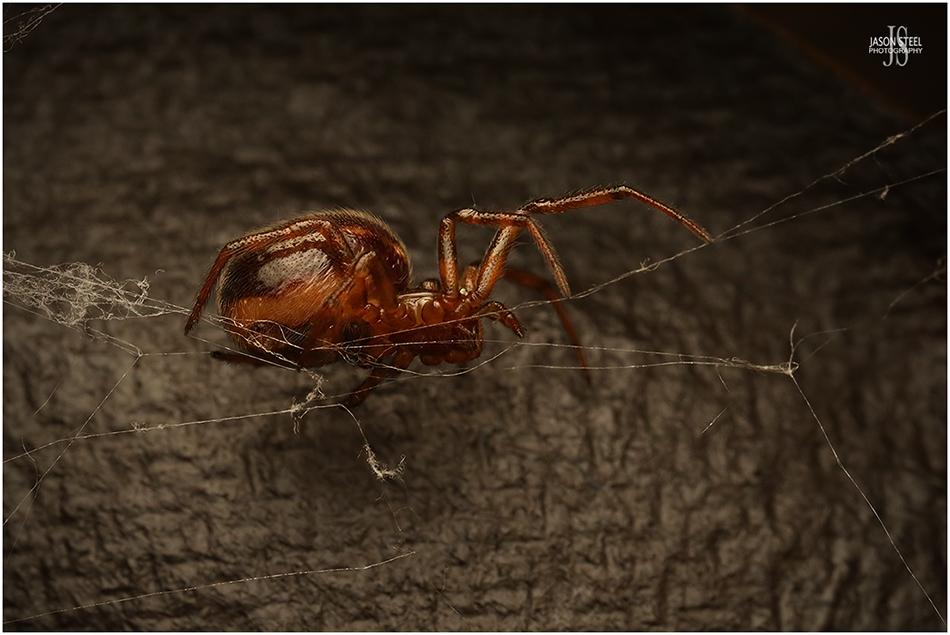
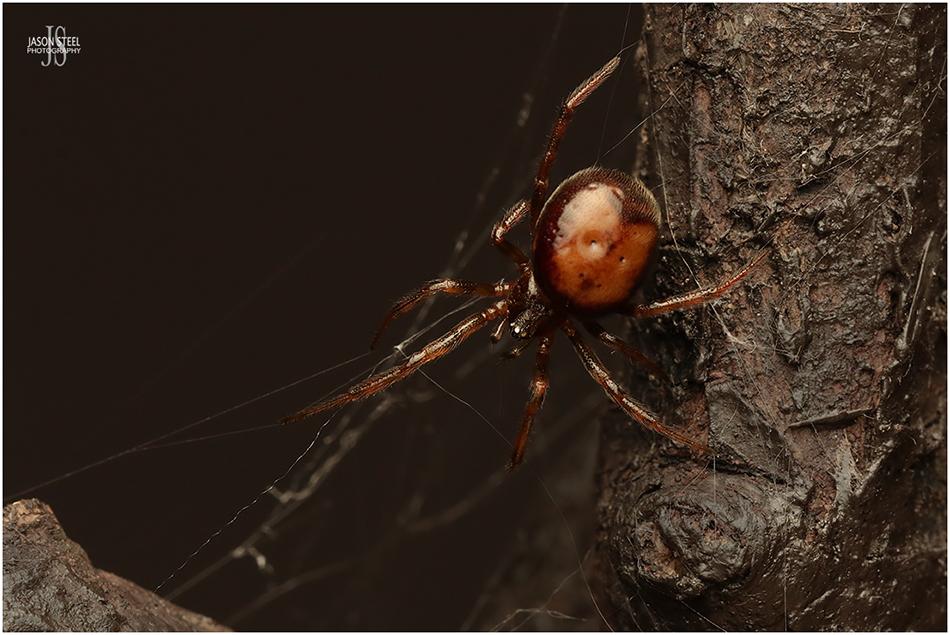
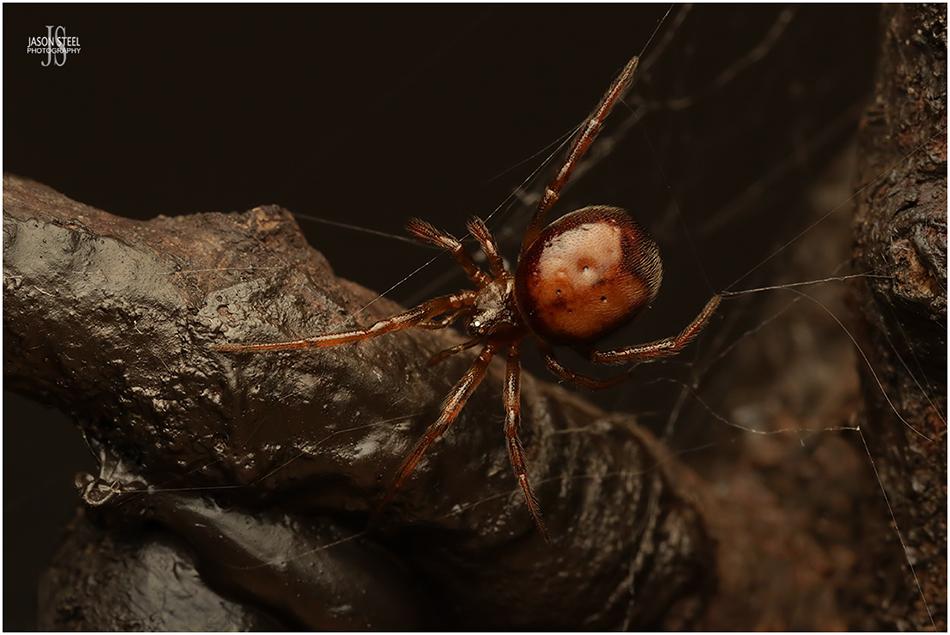
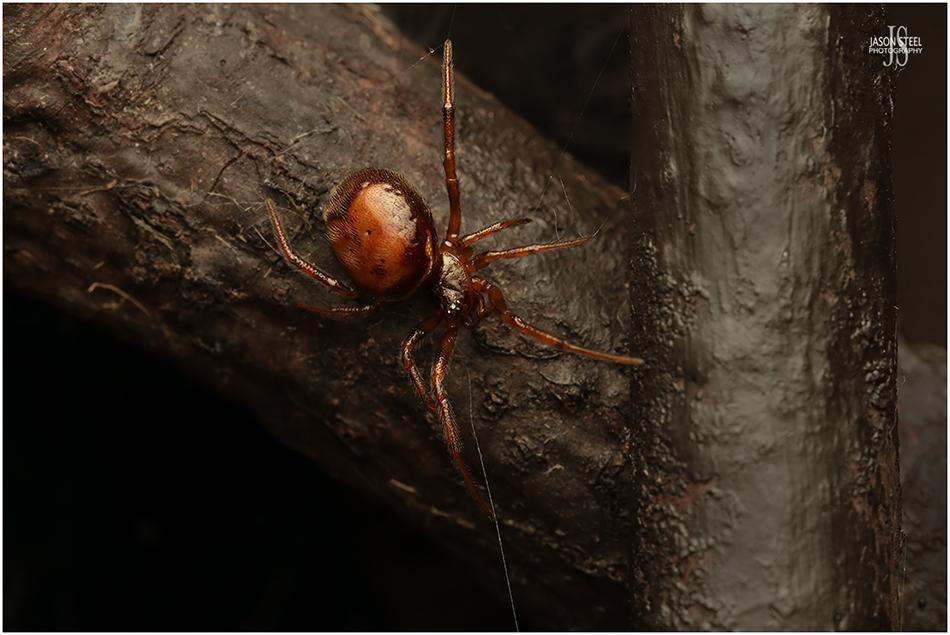
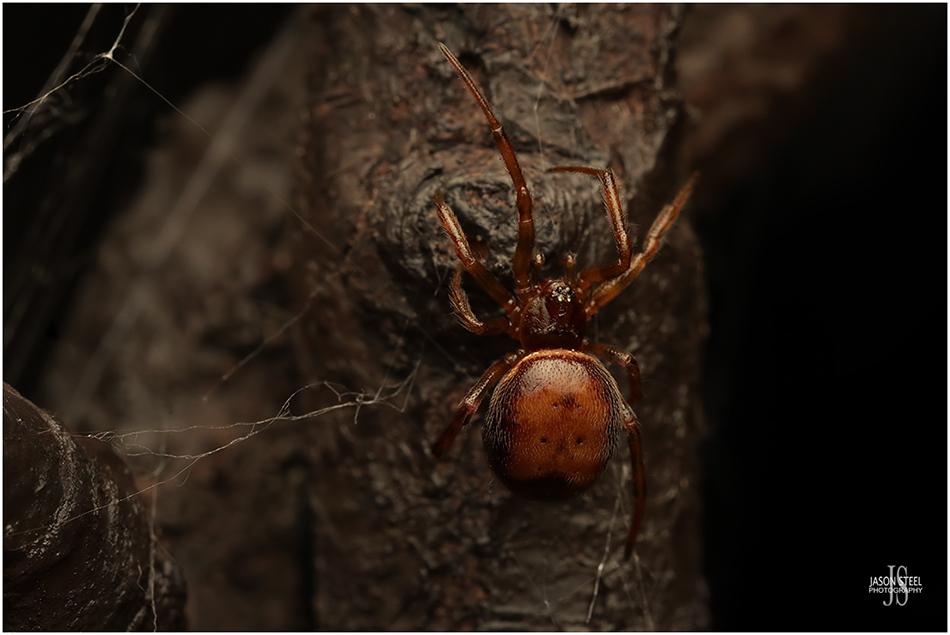
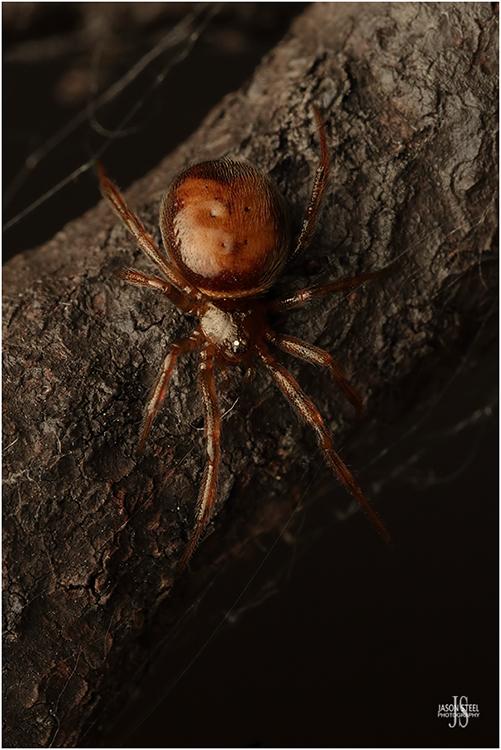
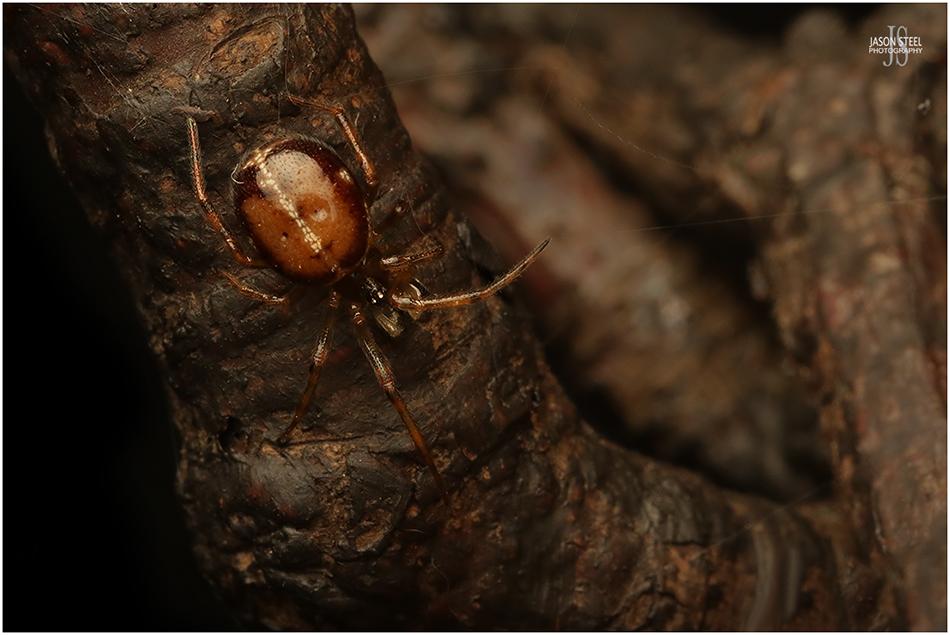
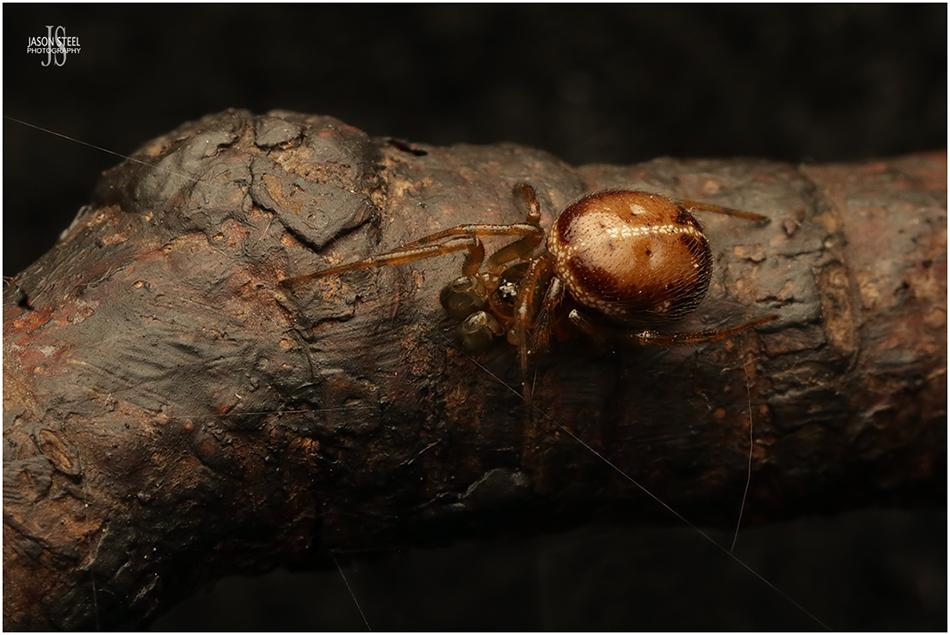
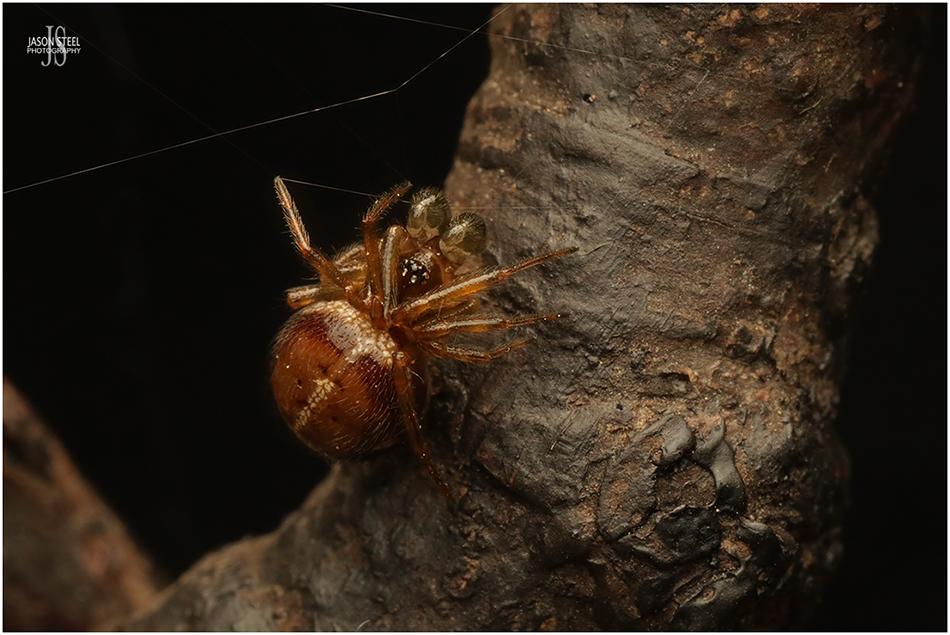
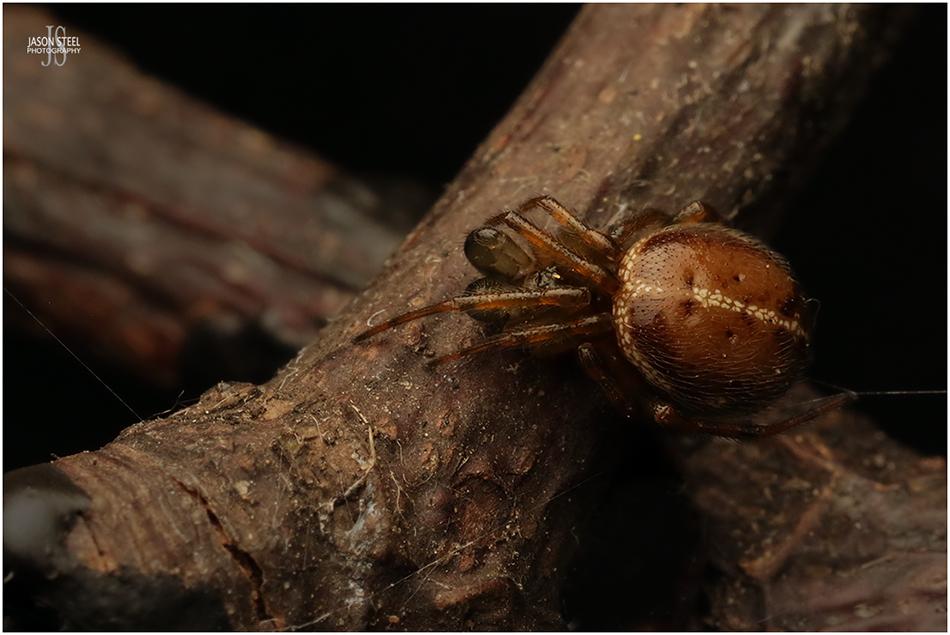
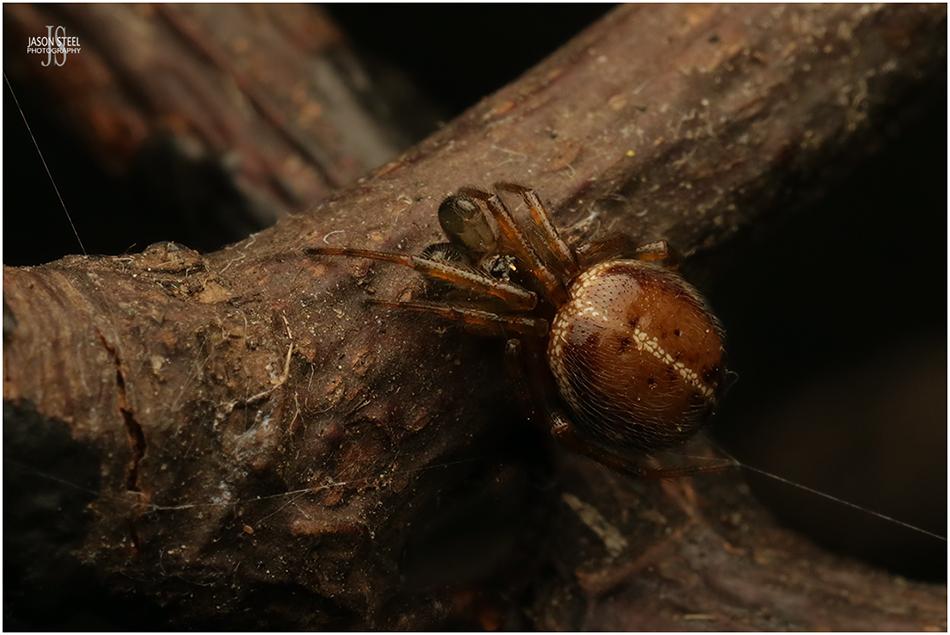
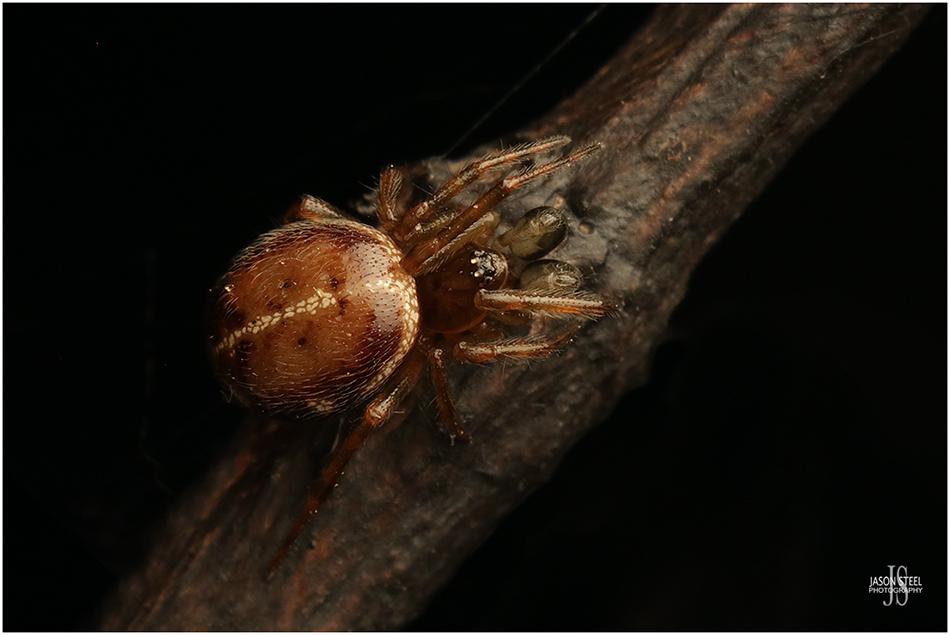
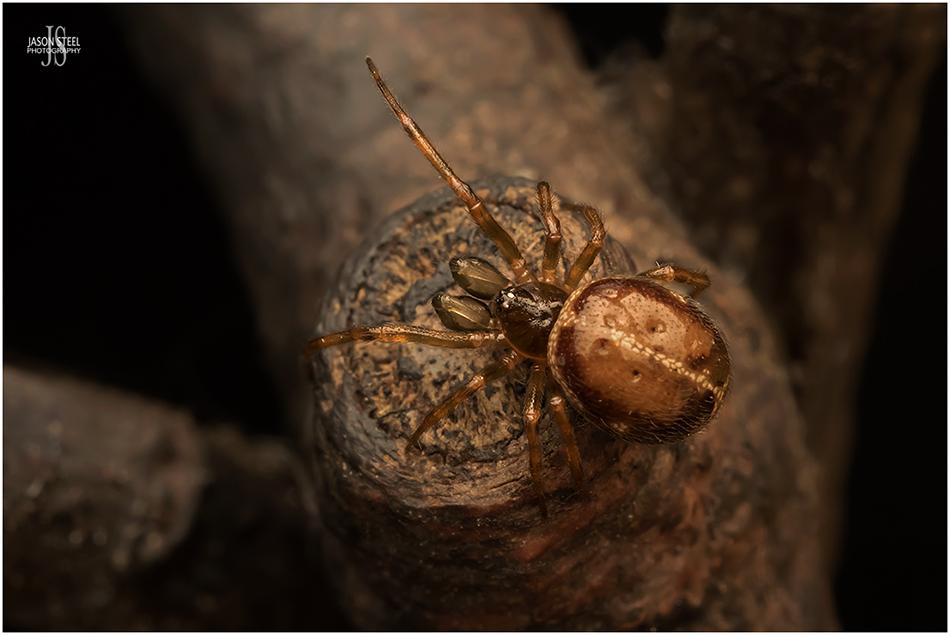
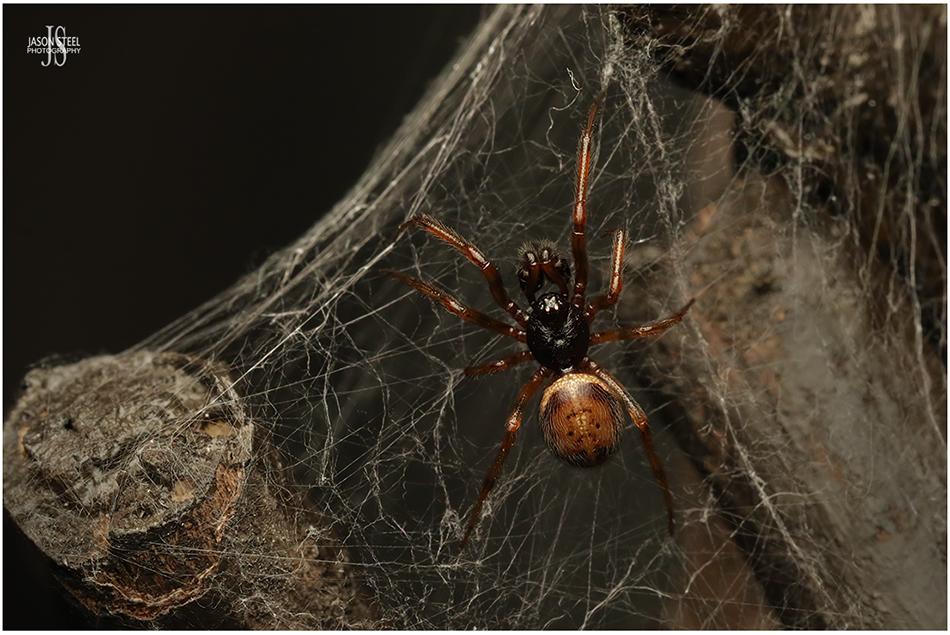
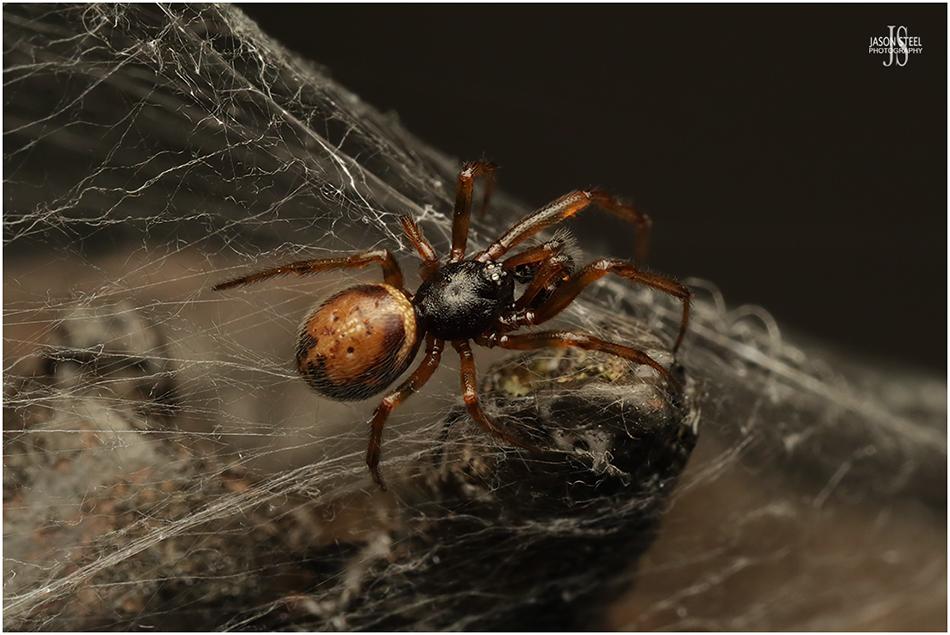
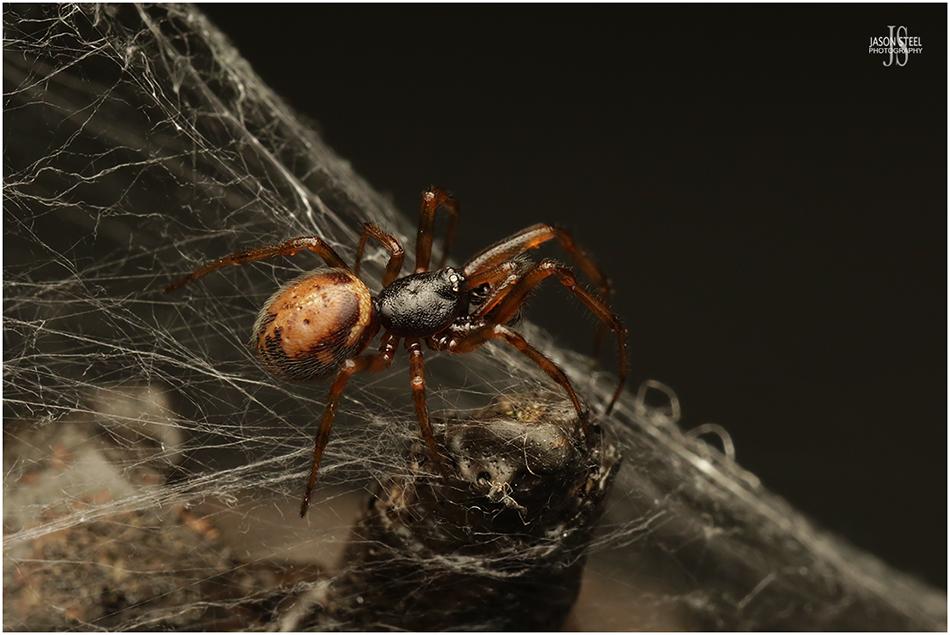
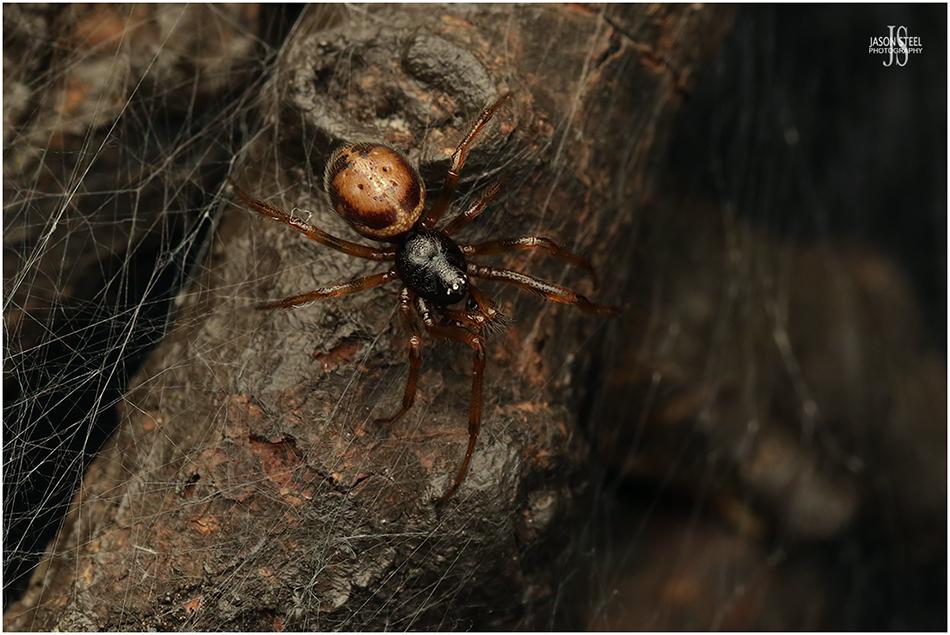
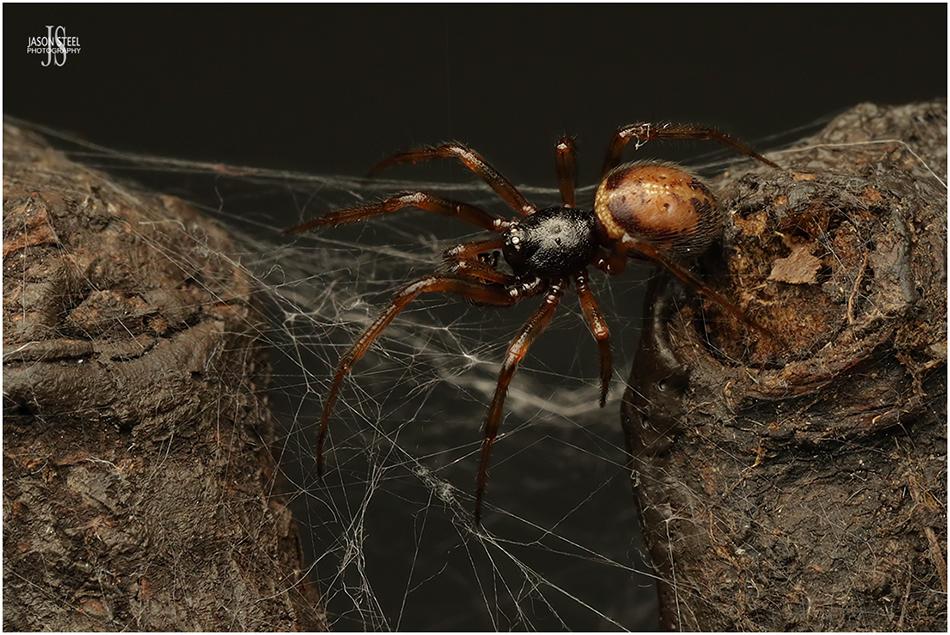
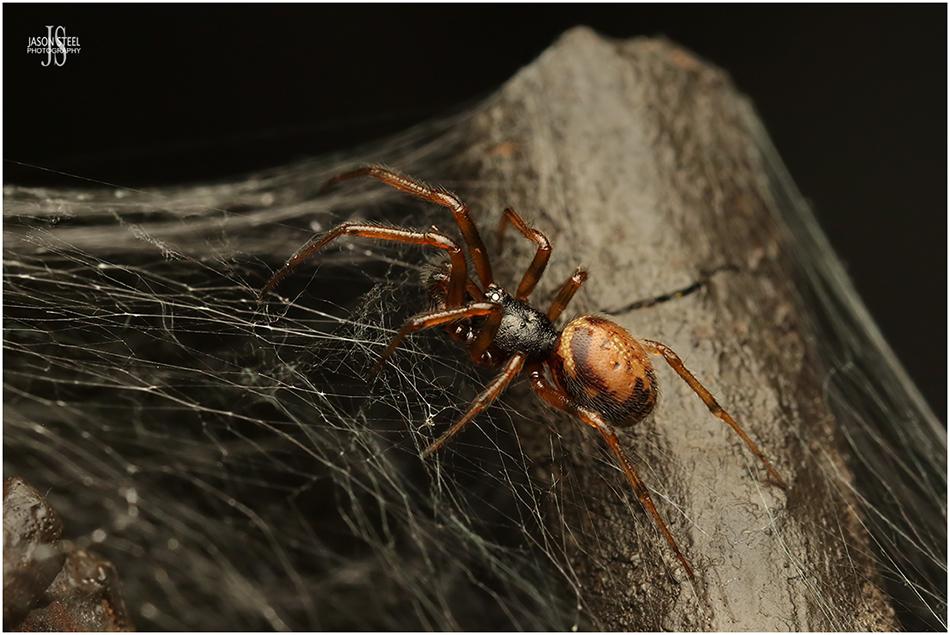
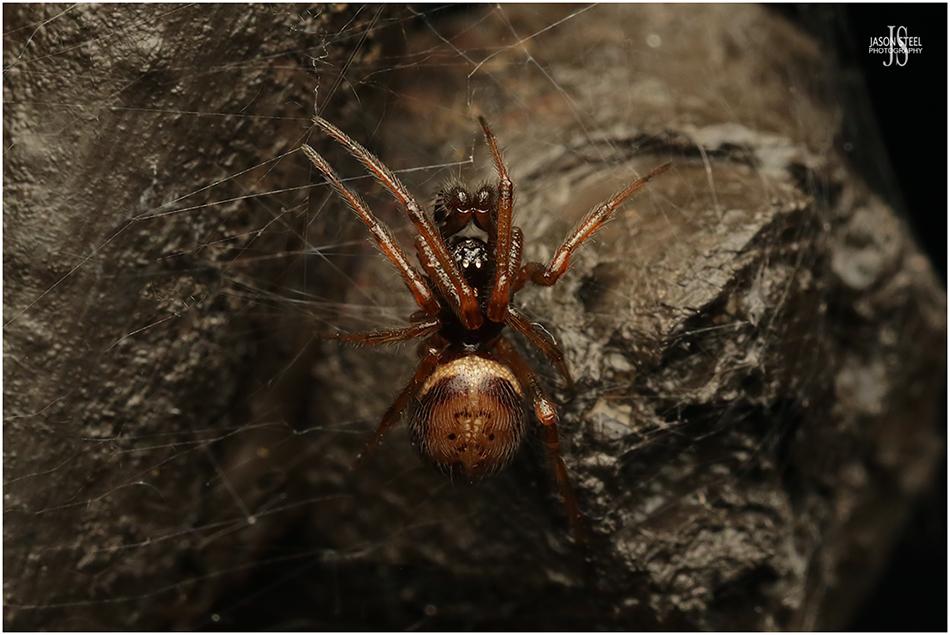
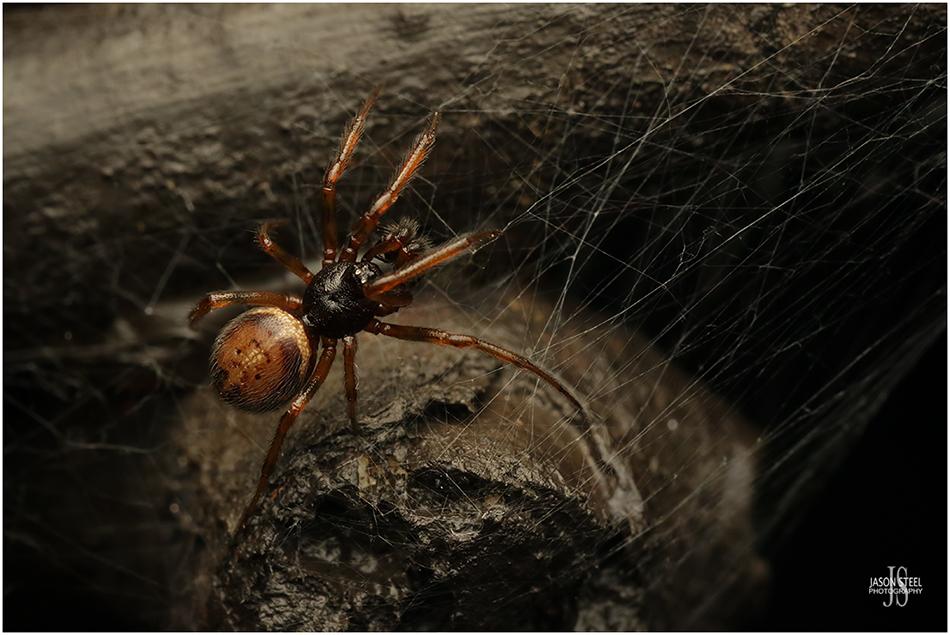
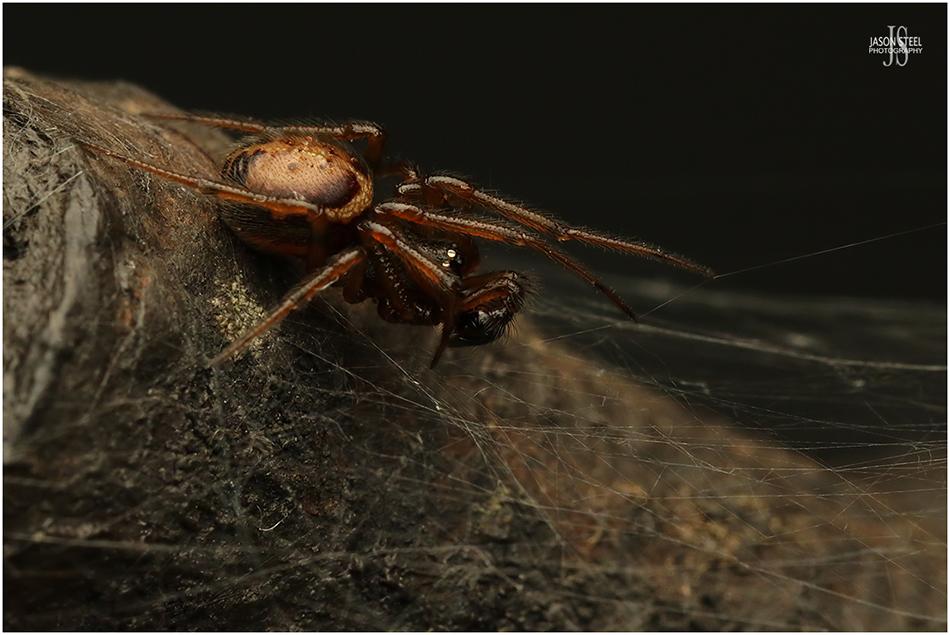
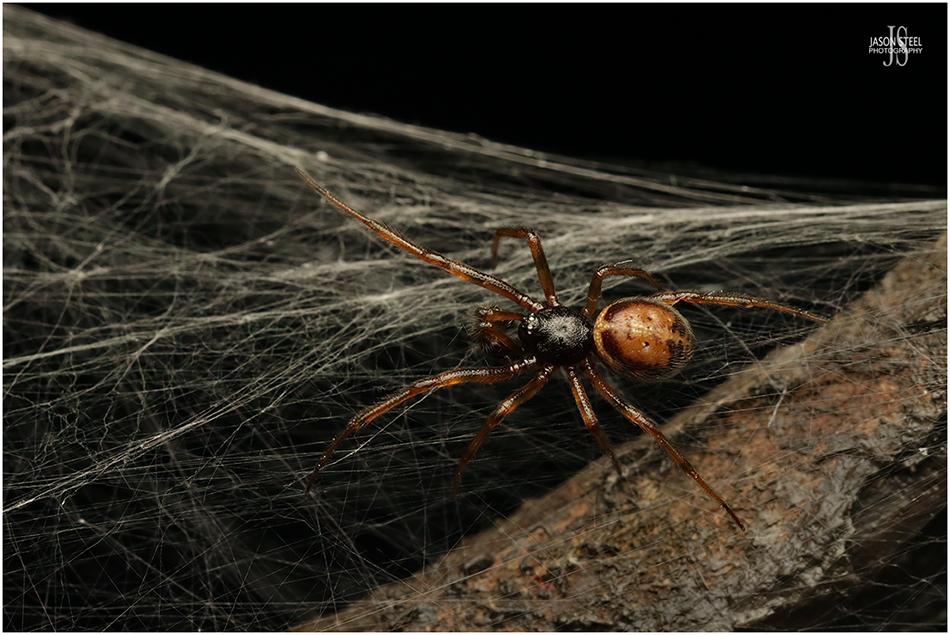
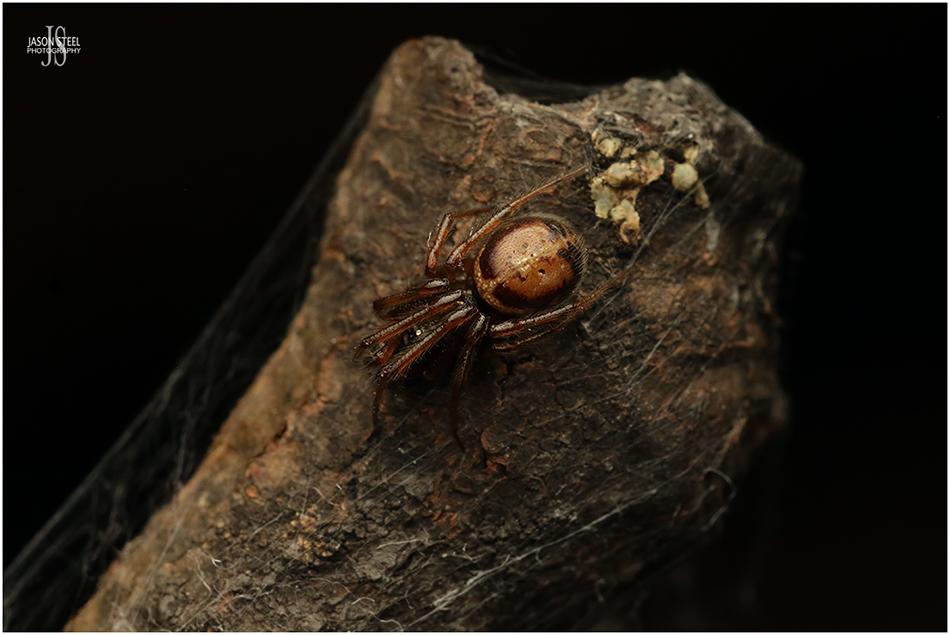
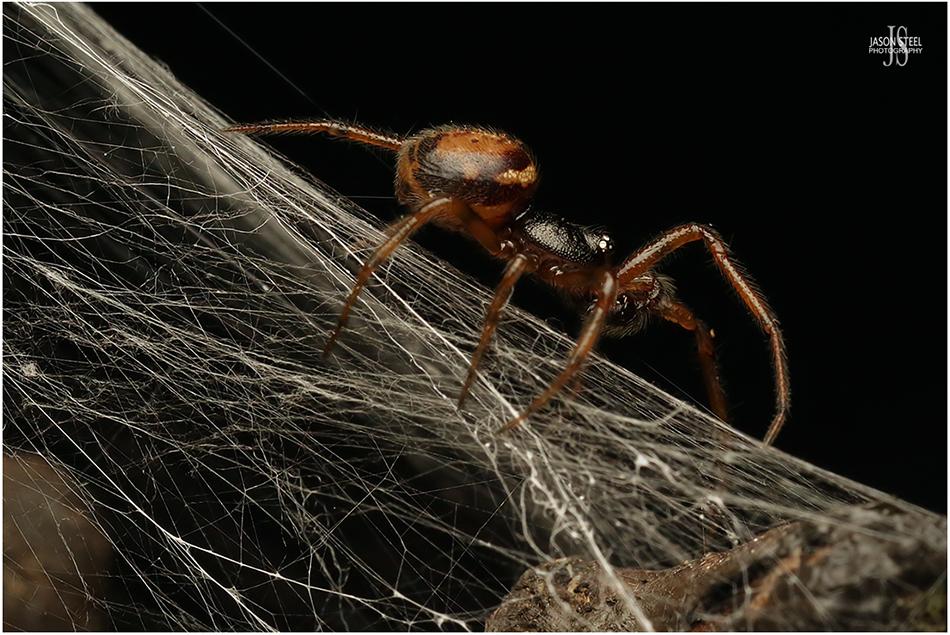
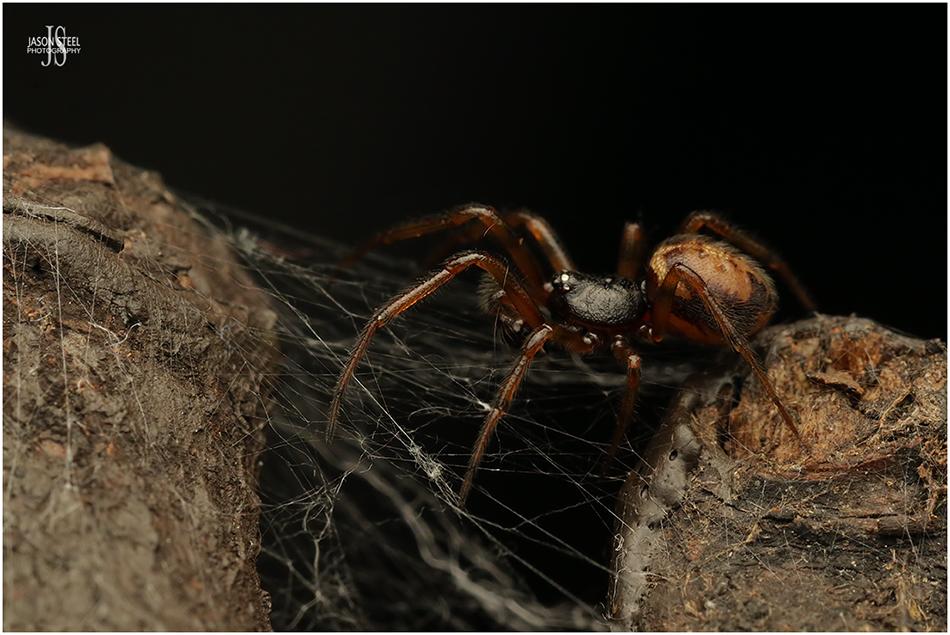
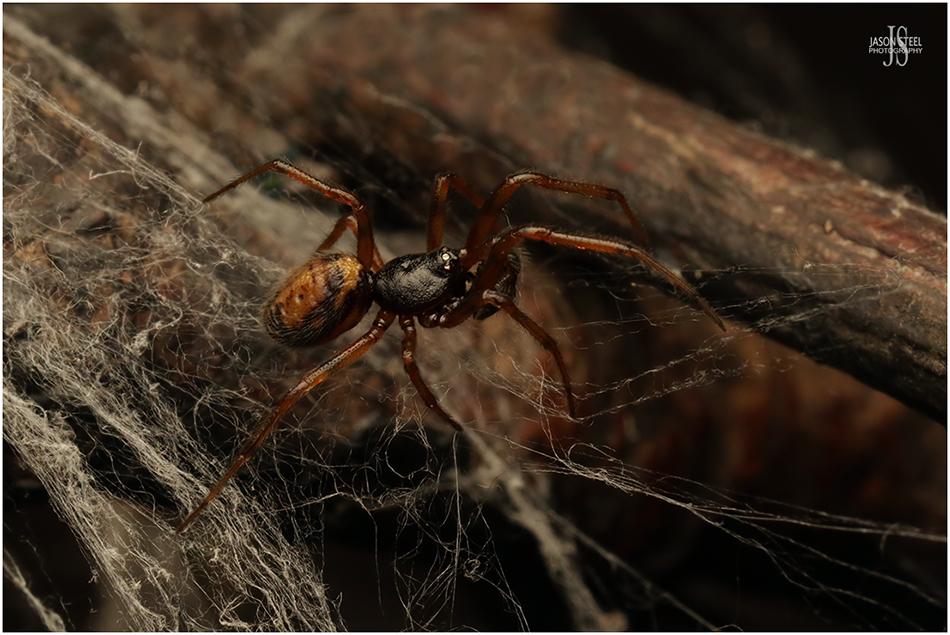
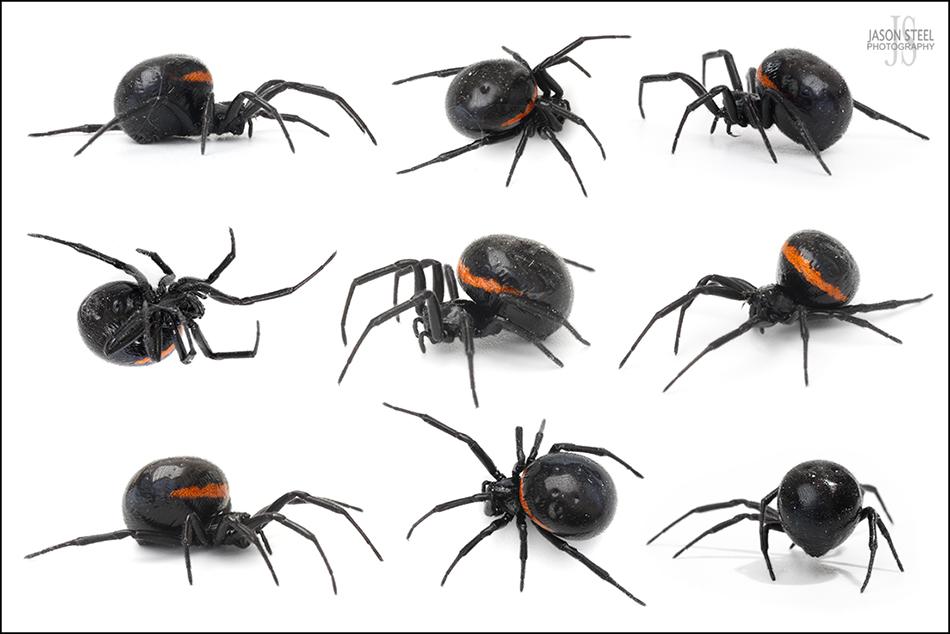
13mm adult female Steatoda paykulliana
Mediterranean False Widow Spider / Eastern False Widow (Steatoda paykulliana)
Steatoda paykulliana is a Mediterranean species of False Widow that's non-native to the UK, but does regularly arrive in the UK, as an accidentally imported species.
Steatoda paykulliana typically grow to a body-length of around 8-13mm for females, and with a leg-span of up to 35mm. Males are usually smaller at 4.5 - 8mm in body-length.
Steatoda paykulliana is a species originating from the Mediterranean, that regularly find its way to the UK hidden amidst imported grapes and other fruit. This species has historically only been found living in the wild on a couple of very rare occasions in England, and this has always occurred during the the warmer months of the year as isolated specimens. These isolated cases are due to Steatoda paykulliana specimens arriving here as an accidental stowaway, usually amidst imported fruit, and then escaping, or being released into the wild by the finder. There is no evidence available to substantiate any claimed reports of Steatoda Paykulliana ever being found established anywhere in the UK.
Steatoda paykulliana is named in honour of the Swedish naturalist Gustaf von Paykull. With its dark black body, and often red markings, this is the species most likely to be mistaken for the far more venomous Black Widow Spiders of the Latrodectus genus, which are also not present in the UK, but do very occasionally turn up in imported goods. The red markings on the Mediterranean False Widow can also be yellow, orange or white instead of red. However Steatoda paykulliana do not possess the red hour-glass marking usually present on the underside of most Black Widow Spiders.
The bite of Steatoda paykulliana, as with other Steatoda species, can be moderately painful, but it is generally regarded to be of little or no medical significance to humans in most cases. Steatoda paykulliana, like other False Widows in the Steatoda genus, are not aggressive and bites to humans are very rare in the Mediterranean countries where Steatoda paykulliana are native. In laboratory conditions, during the 1960's & 70's when such tests were more acceptable, Steatoda Paykulliana have been proven to possess a venomous bite powerful enough to kill small mammals, including mice and even large guinea pigs! (see page 26) LINK. The French INPN (The National Inventory of Natural Heritage) reports that in laboratory conditions Steatoda Paykulliana has been proven to kill adult rats and cause temporary paralysis in rabbits. LINK
Nearly all Steatoda paykulliana specimens that arrive in the UK amidst imported fruit are juveniles. Due to their size it would be much harder for adult specimens to hide undetected. As juveniles the female specimens that arrive in the UK have no chance of turning up here in a gravid state, and therefore cannot reproduce and spread, unless by chance there happened to be juveniles of both sexes accidentally brought into the UK in the same shipment. Juvenile and sub-adult Steatoda paykulliana look quite different to the adult females and have annulated legs, tend to be brown in colour and often have cream coloured markings, making them easier to mistake for other Steatoda species that are established in the UK. The abdominal markings are often referred to as resembling fish bones. As the female spider matures the abdominal markings change and take on the brighter red, yellow, orange or white appearance, as the rest of the spider turns to a very dark black colour. Often pictures of Steatoda paykulliana found in books only show the spider as a fully developed adult female, which obviously looks quite different from the sub-adult specimens that turn up in the UK as accidental stowaways amidst imported fruit. Adult male Steatoda paykulliana can look somewhat similar to sub-adult specimens. Adult males usually have orangey-brown legs, which are notably darkened at the joints, and a dark brown abdomen, which usually still displays the white / cream coloured fishbone markings. The tips of the male's pedipalps are slightly swollen and pointed in shape.
It's often reported that any accidentally introduced colonies of Steatoda Paykulliana would not be able to survive our winters in most parts of the UK, and that this would only change if our winters were to become milder in the future. However Steatoda Paykulliana is winter-resistant and has been found at altitudes of 700m in West Bulgaria, where the winters are quite severe and the snow stays on the ground for some time due to the adjacent low mountains. It seems Steatoda Paykulliana is probably not as adaptable to new and varying habitats though as Steatoda nobilis, which has thrived since being introduced to the UK, and Steatoda Paykulliana requires more specific conditions to successfully breed. Steatoda paykulliana is a xerophile, thermophile species, so it requires warm, dry conditions, and it's not the cold of our winters that would kill it off in the UK, but our country is simply too damp for this species to successfully breed here in the wild.
Where I have found Steatoda Paykulliana, in Cyprus and southern Spain, the conditions were very hot and very dry, and the spiders were found hidden away in darkness beneath rocks on sandy soil at coastal sites. This xerophilic species seems to require hot, dry conditions with low humidity, where it builds its web low to the ground. The most obvious places that would appear to meet its needs would be within human habitations, and yet within its natural range Steatoda Paykulliana is usually found outside of homes. The eggs of Steatoda paykulliana are pale pink in colour and are wrapped up in a white egg-sac. The average number of eggs in an egg-sac is around 65. In their native range the young spiderlings hatch towards the end of summer. The newly emerged spiderlings are orange in colour and often display the pale fishbone markings on their abdomen. They may hibernate during the colder months before maturing at the start of the following summer.
Could Steatoda paykulliana be established anywhere in the UK?
Currently no, Steatoda paykulliana is not established anywhere in the UK and has never been proven to ever successfully breed here either. The only Steatoda paykulliana that have ever been found in the UK have been isolated specimens. Due to the unsuitability of our climate I believe it's fairly unlikely that Steatoda Paykulliana will become established anywhere in the UK in the near future either. However, with Steatoda paykulliana regularly arriving in the UK as accidental imports it's quite possible that at some point in the future Steatoda Paykulliana could well adapt to the wetter climate of the UK, just as Steatoda nobilis has done. If Steatoda paykulliana was able to adapt then and it may eventually find parts of the UK that are suitable to its requirements, allowing it to become established here.
There have been occasional reports of isolated specimens of Steatoda Paykulliana being found living in the wild in the UK in the past. In 2008 the BBC featured an article about exotic spiders in the UK, and when discussing Steatoda paykulliana they had a quote from Stuart Hine, who ran the Insect Identification Service at the Natural History Museum. In the BBC article it was claimed that Stuart Hine reported Steatoda paykulliana were already established here in the UK back in 2008. He reportedly went on to say: "Now we have found it in Plymouth. And it looks as if it is here to stay". LINK, LINK 2. Stuart Hine has since been in touch with me (October 7th 2021) to clarify this situation, and it seems the press misquoted him and got their facts completely wrong. So although the occasional specimens may have been found in the wild here in the UK there is no proof Steatoda Paykulliana have ever become established anywhere in this country. Stuart did have one female Steatoda paykulliana specimen sent to him, that was found in a log pile in a porch from Bedfordshire. It went on to produce a viable egg sack. LINK
There were also some speculative records from Kent, near a fruit import warehouse in 2008. Other sources claim sightings from Dorset, Milton Keynes, Plymouth and Tilbury Docks in Essex. Uksafari.com is one source incorrectly claiming that Steatoda paykulliana is established at Plymouth and Essex. According to Stuart Hine, who investigated the reported colony in Plymouth, sightings there have already been confirmed as a mistaken identification of Steatoda nobilis. The claimed colony at Tilbury Docks was reported to be around the site of a major fruit importer so this case may have been feasible at one time, and a small, short-lived Steatoda paykulliana colony might have existed there at some point in the past. However if any short-lived colonies did become temporarily established in the UK they clearly died off quite quickly. There was a claim of Steatoda Paykulliana having previously become established in a conservatory and outbuildings in Dorset back in 2017. Unfortunately, as with all these reported cases, there was no photographic evidence to substantiate this doubtful report and it could not be confirmed. - LINK In 2017 Stuart Hine did once write "Given the frequency that these come in on grapes from Southern Europe I have no doubt that it's just a matter of time before it becomes established".
It's not surprising that members of the public often confuse the common, widespread, and well established Steatoda nobilis with the imported Steatoda paykulliana, when the media regularly print images of the wrong species to accompany their news stories. In 2013 The Independent used a photo of a juvenile Steatoda paykulliana with a scare-mongering story they ran on Steatoda nobilis "invading a school" in Gloucestershire. - LINK
I'd love to hear from anyone who believes they might have any photos of these spiders found at any site in the UK. Please get in touch with a photo. email
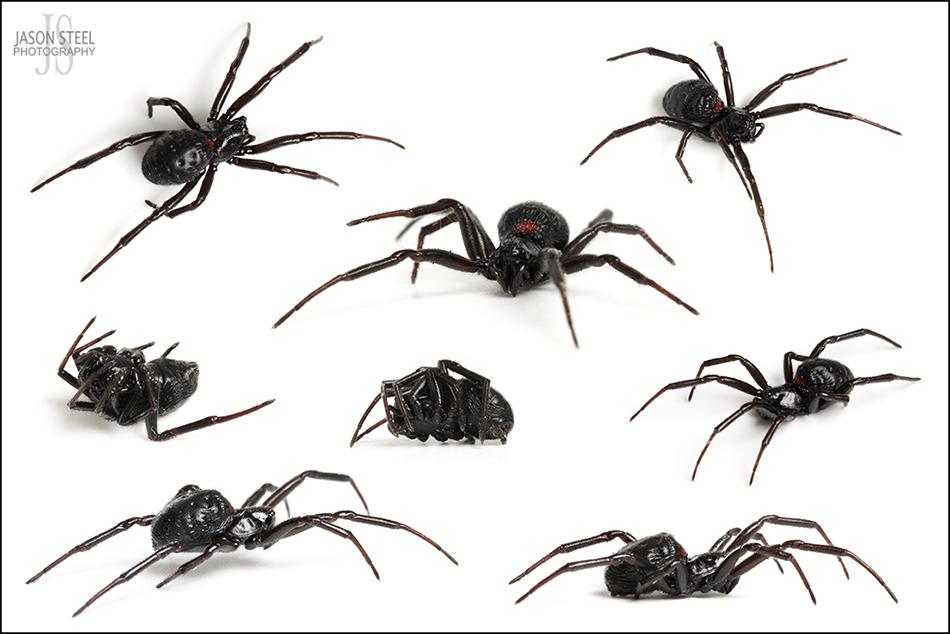
11mm adult female Mediterranean False Widow Spider (Steatoda paykulliana)
This female specimen has an unusually shrivelled abdomen due to having just produced an egg-sac, which she was guarding when I found her under a large rock in Paphos, Cyprus. These spiders can have a red, yellow or white band around the abdomen. Sometimes they display a midline pattern on their abdomen which can consist of a stripe or a series of triangles or chevrons. In their native countries the Mediterranean False Widow Spider is usually found low to the ground in dry and semi-dry environments with sparse vegetation. Ideal sites include dunes, moors and heathlands, where they are usually found in cracks in walls or under rocks. Other places where Steatoda paykulliana are frequently found include log piles and disused mammal burrows. Mature females usually produce several large, creamy white, fluffy egg-sacs that are as large as the female herself. - LINK
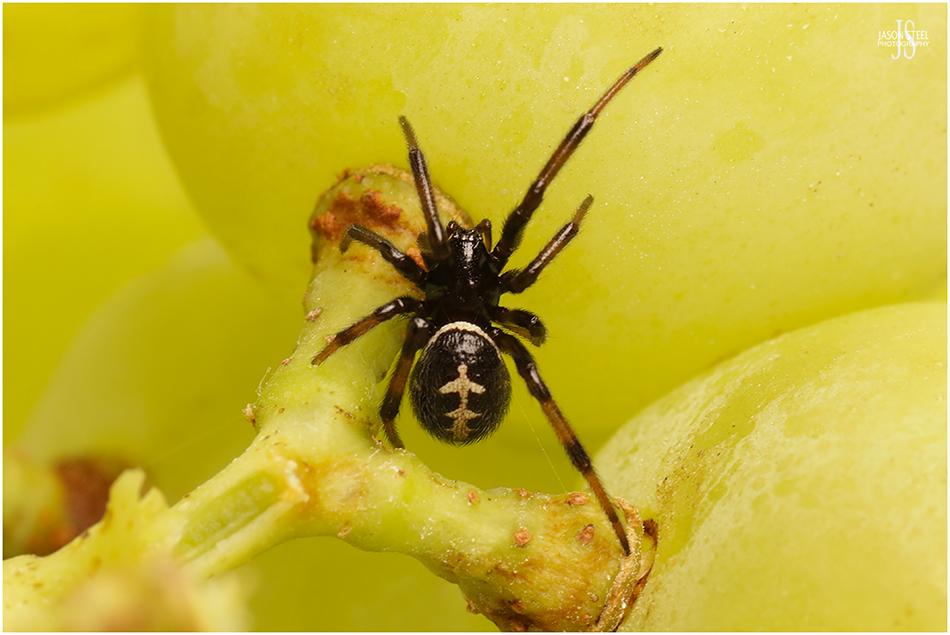
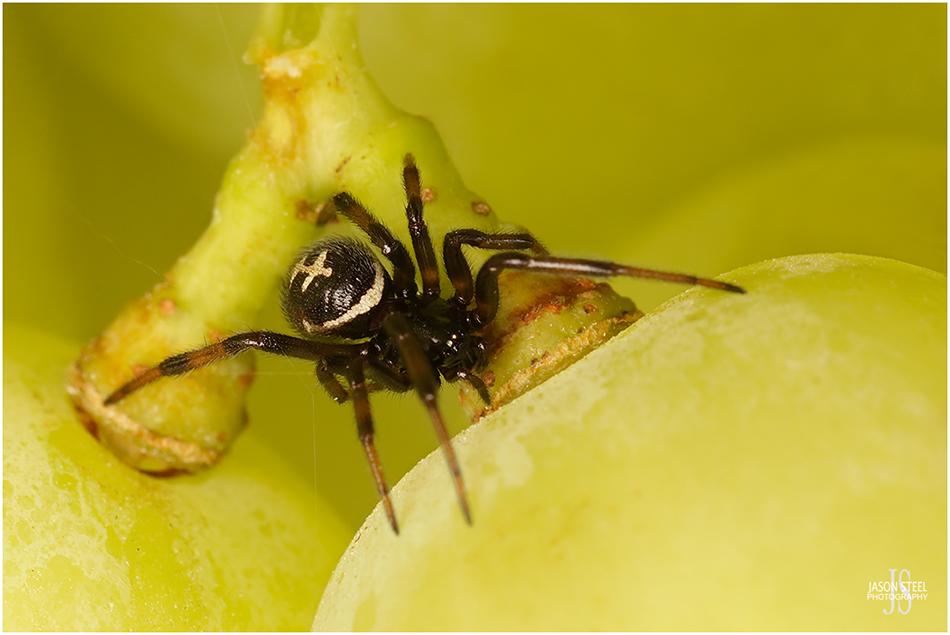
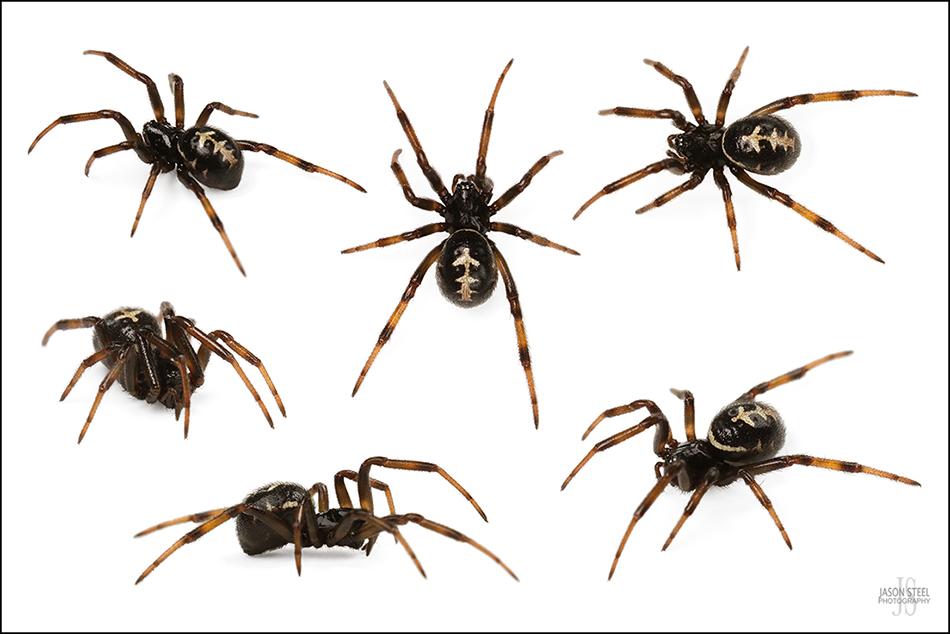
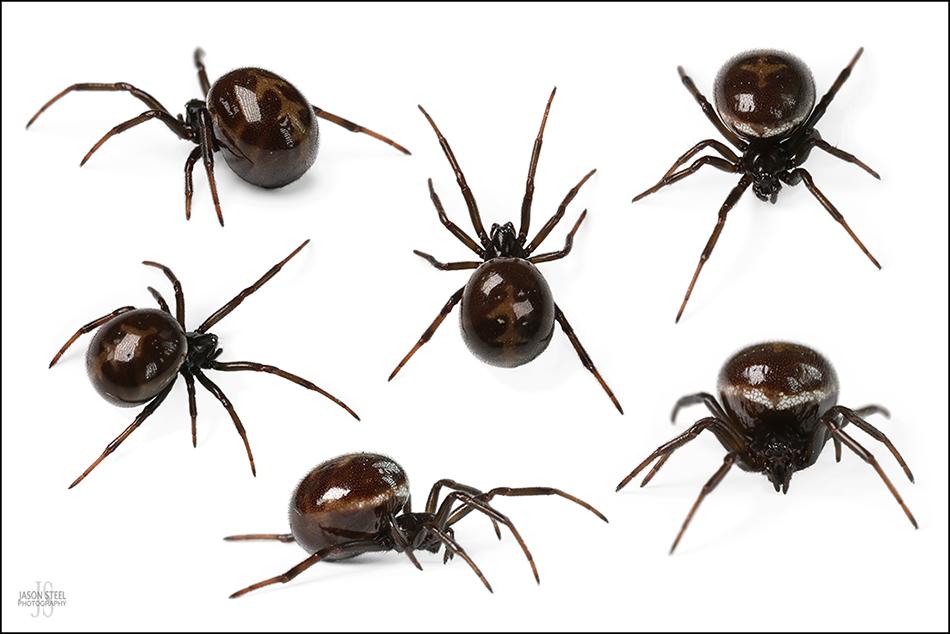
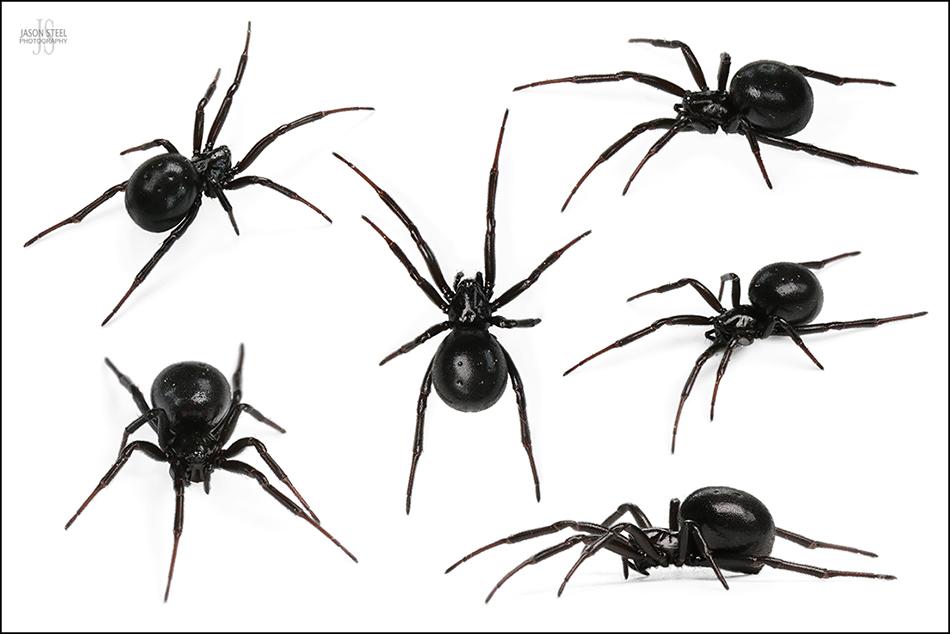
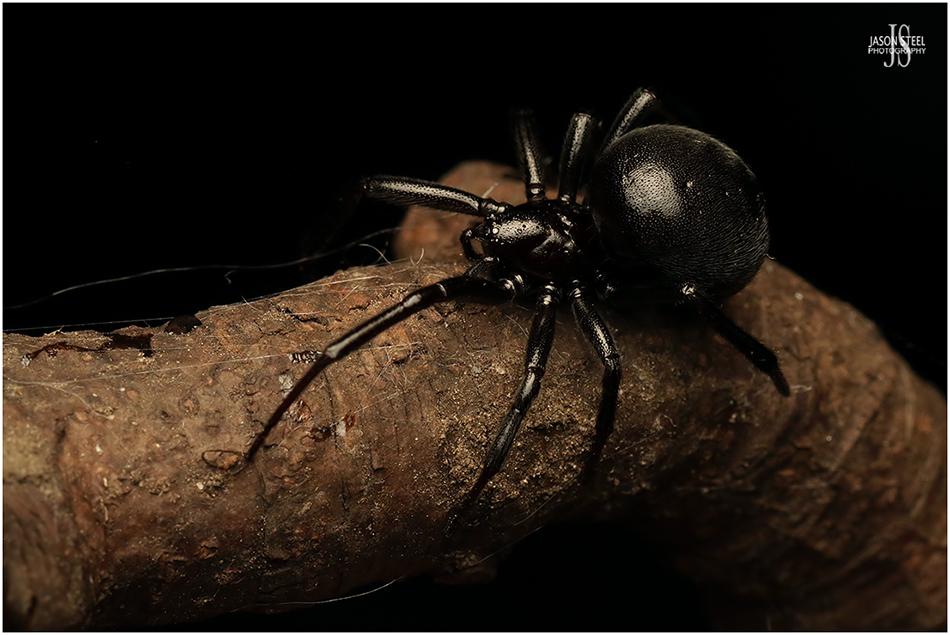
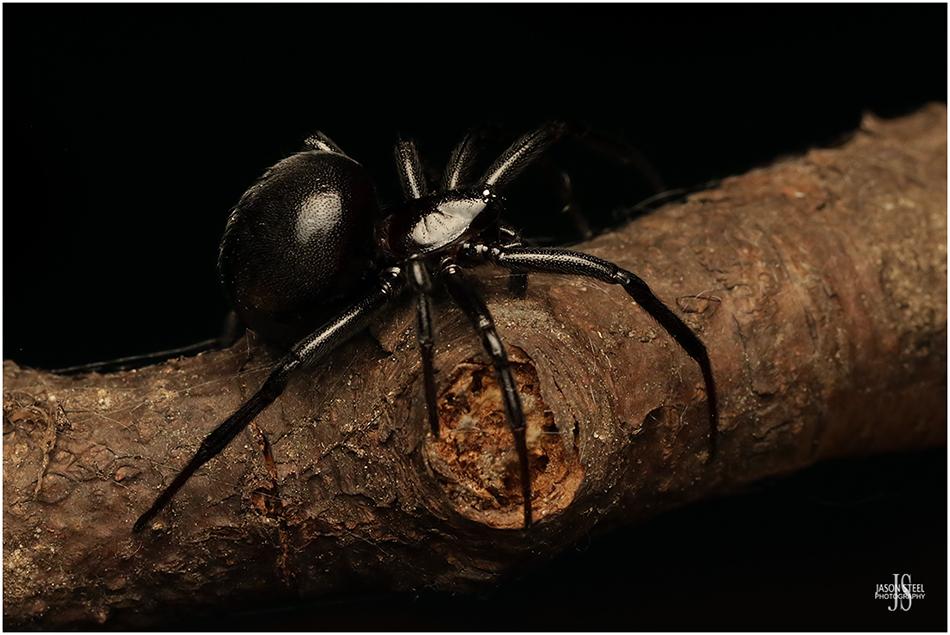
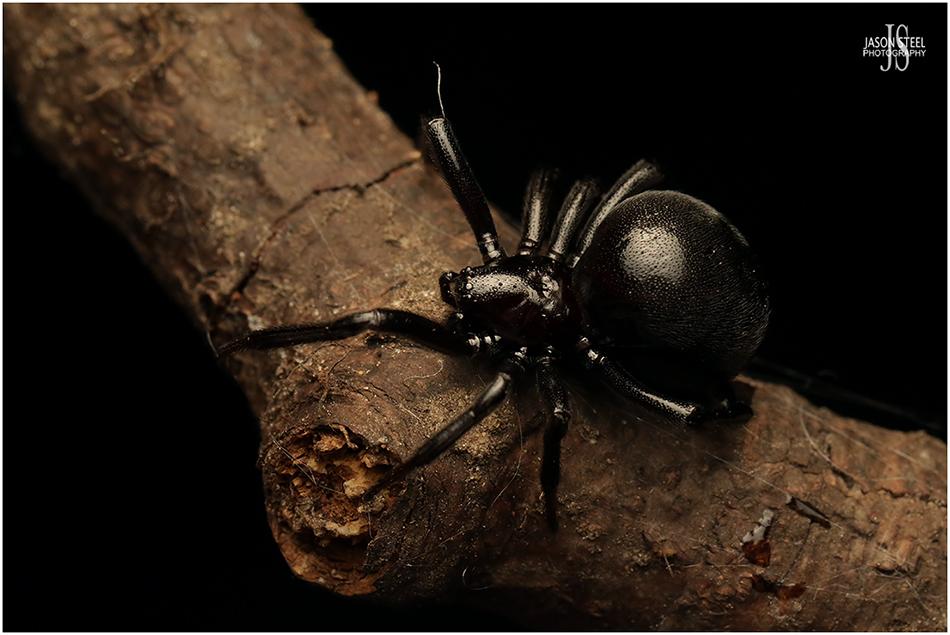
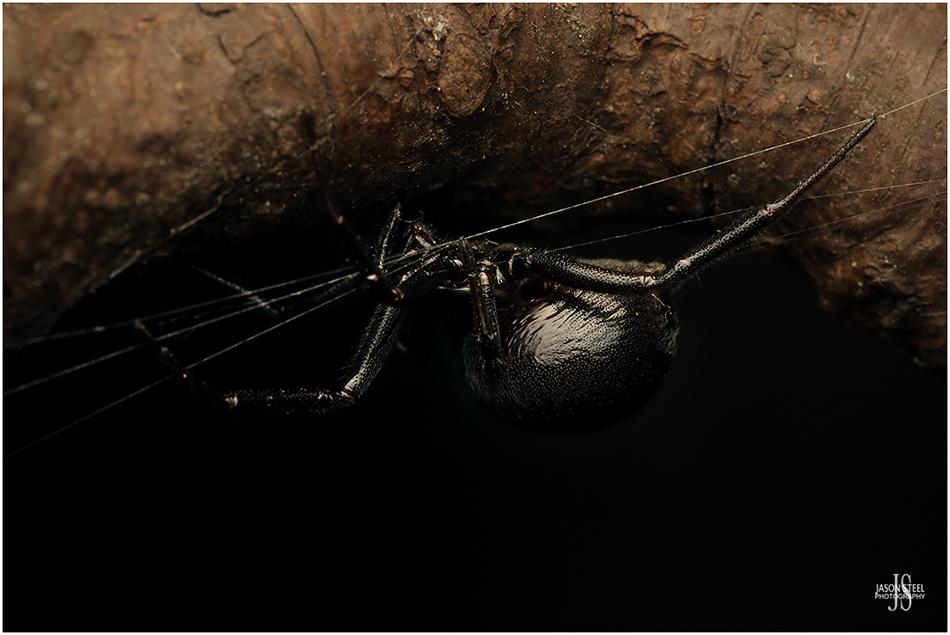
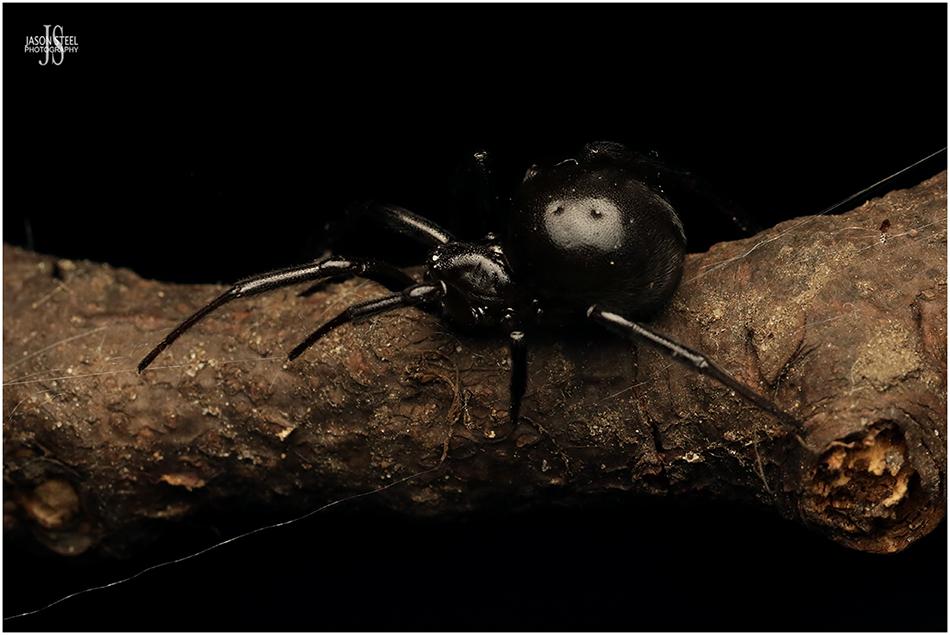
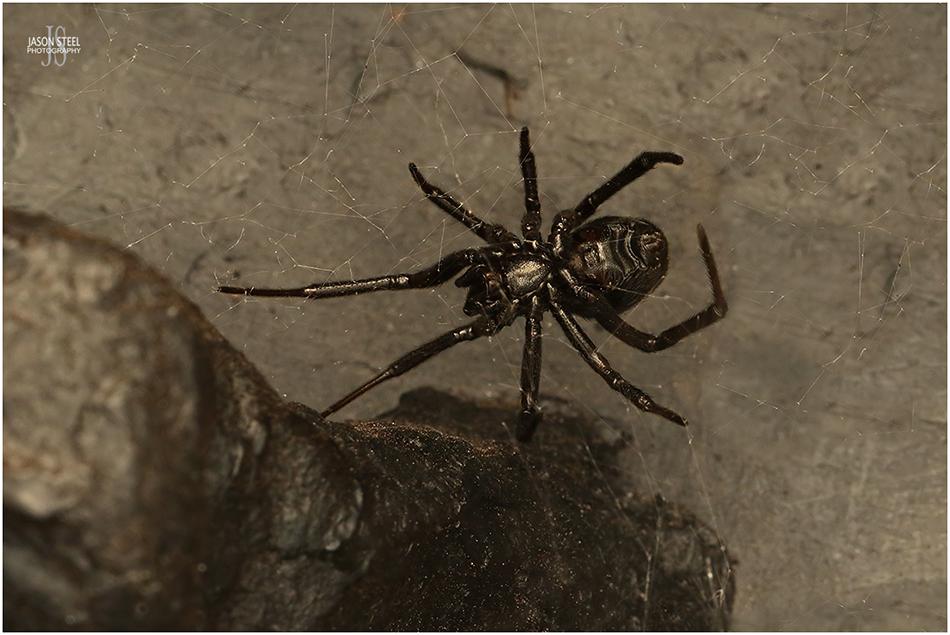
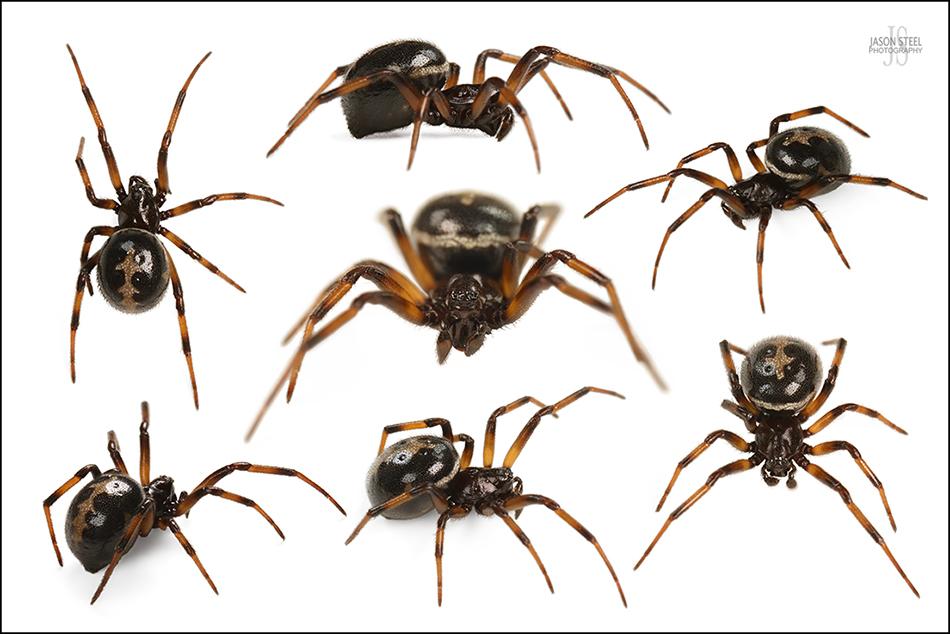
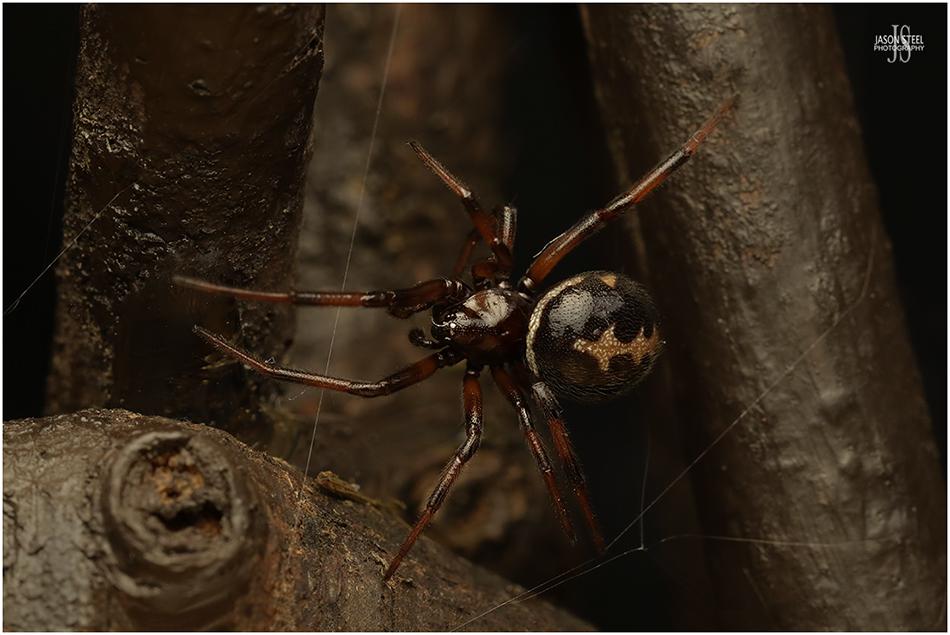
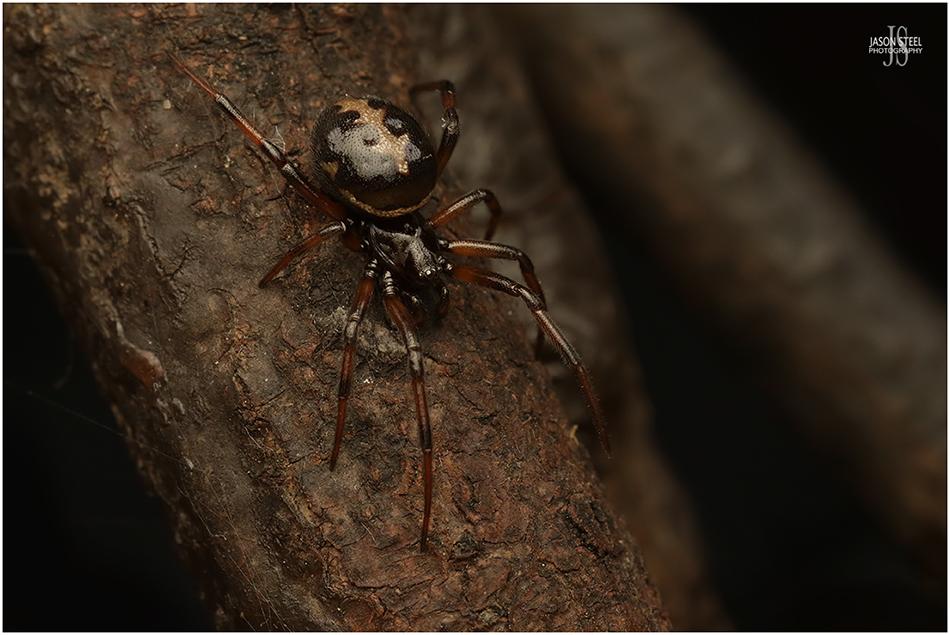
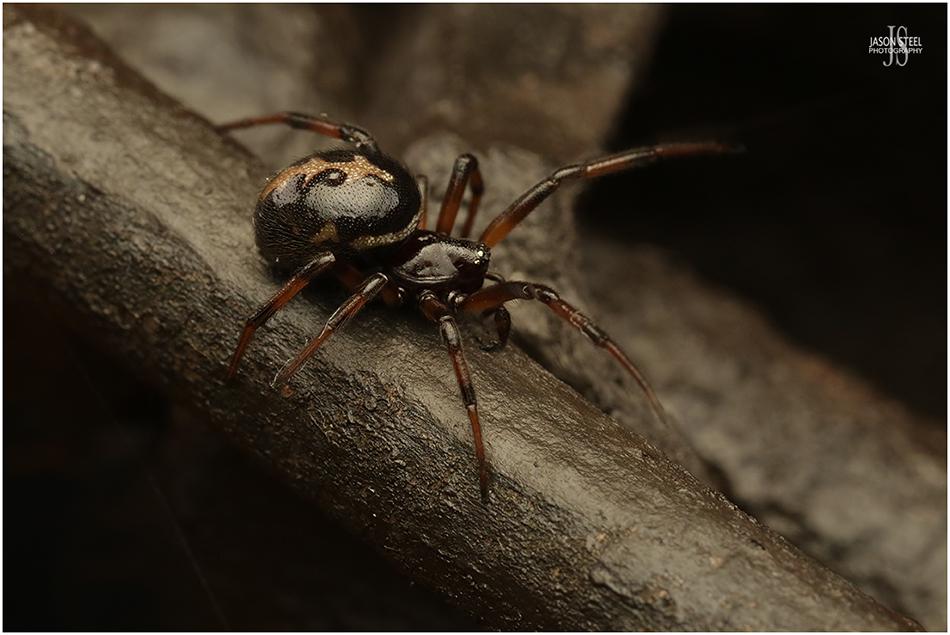
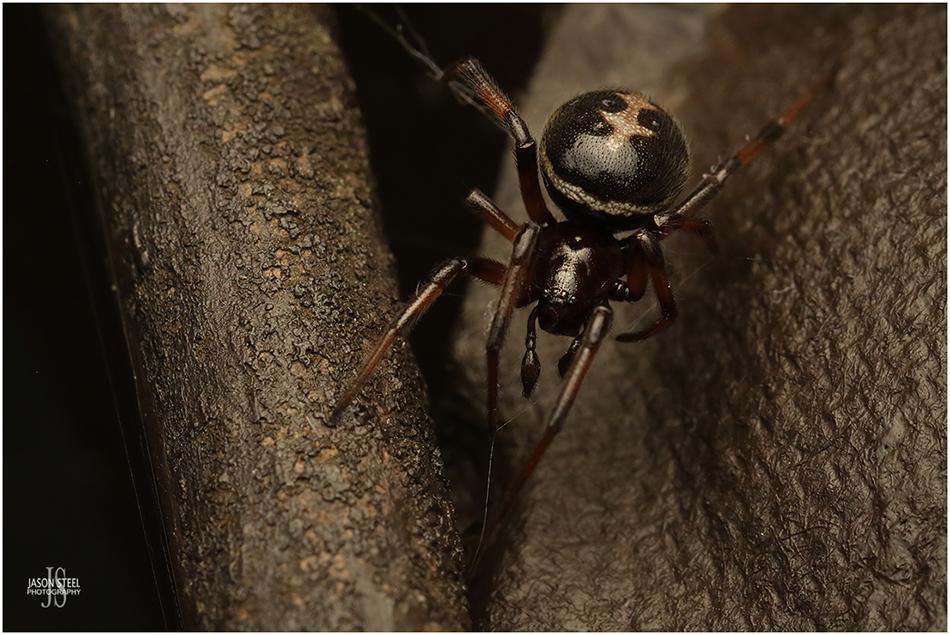
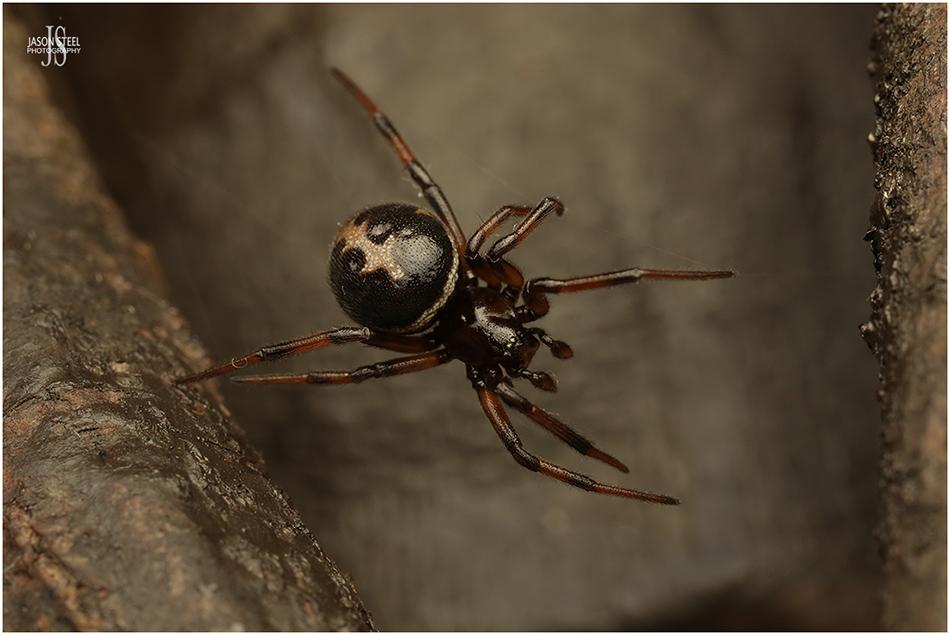
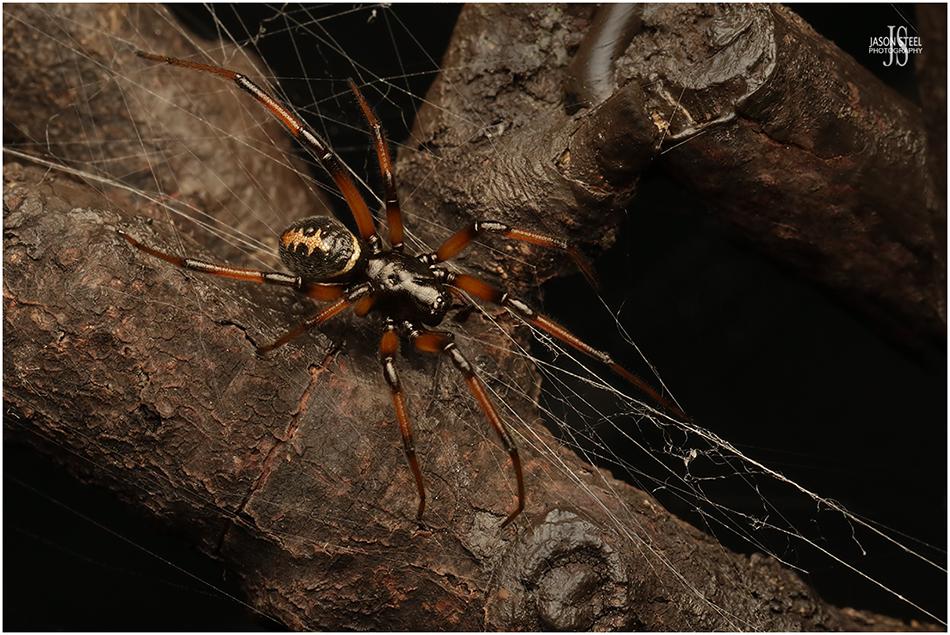
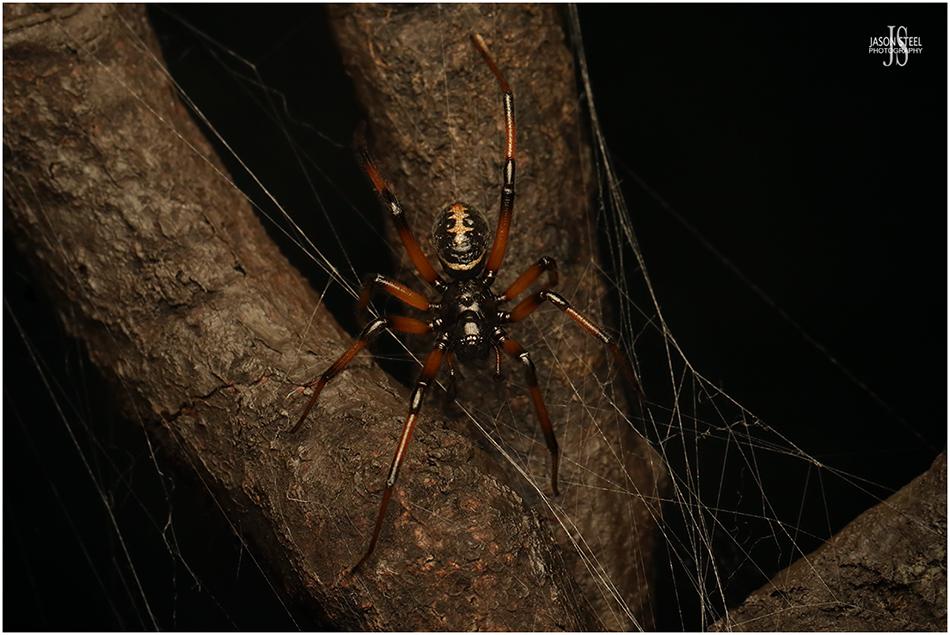
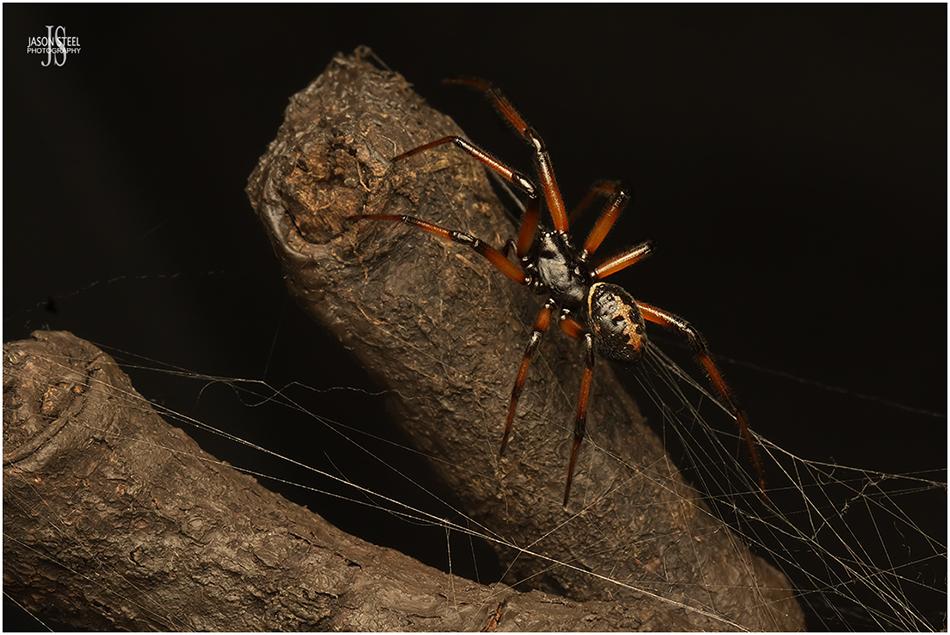
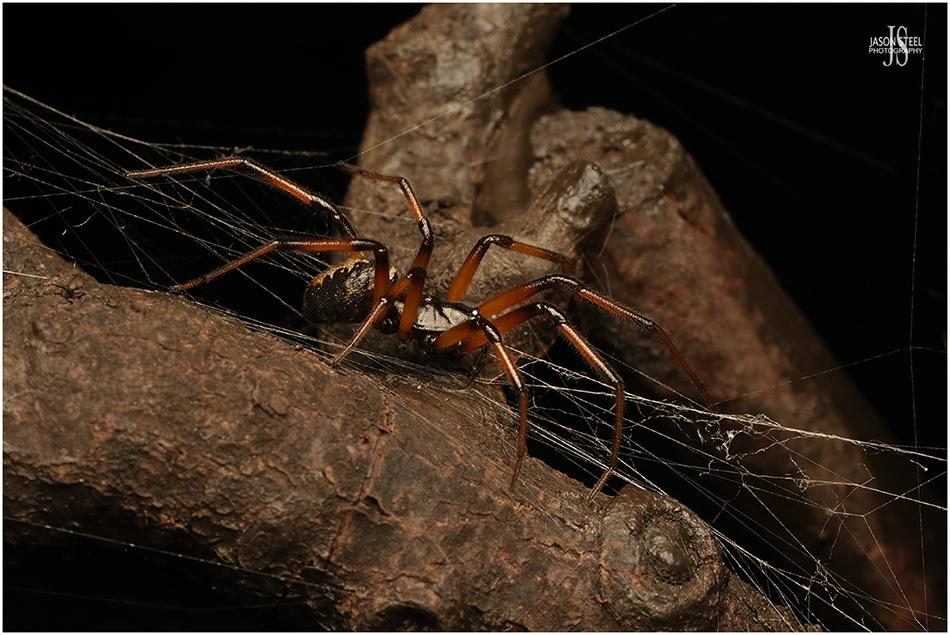
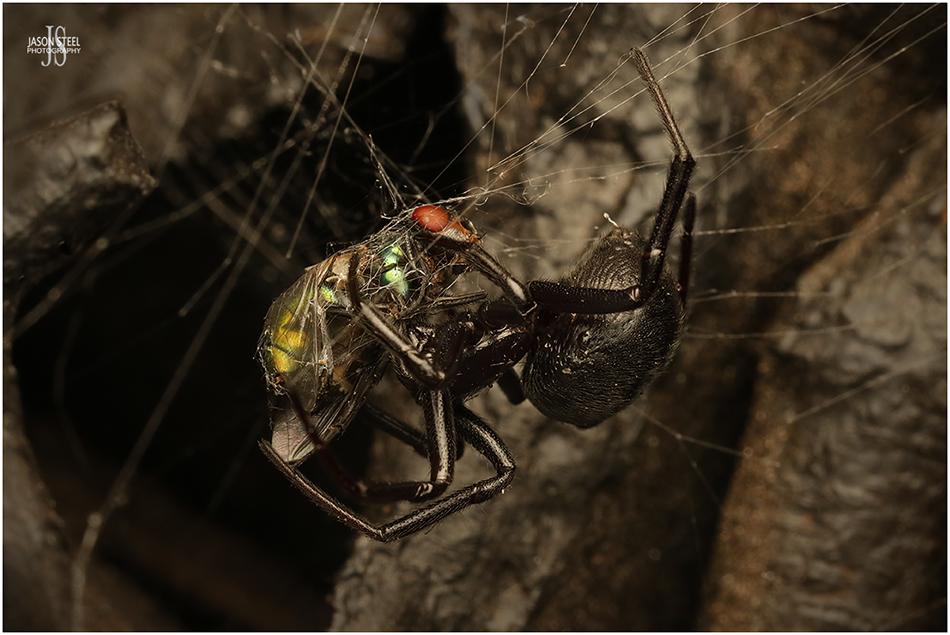
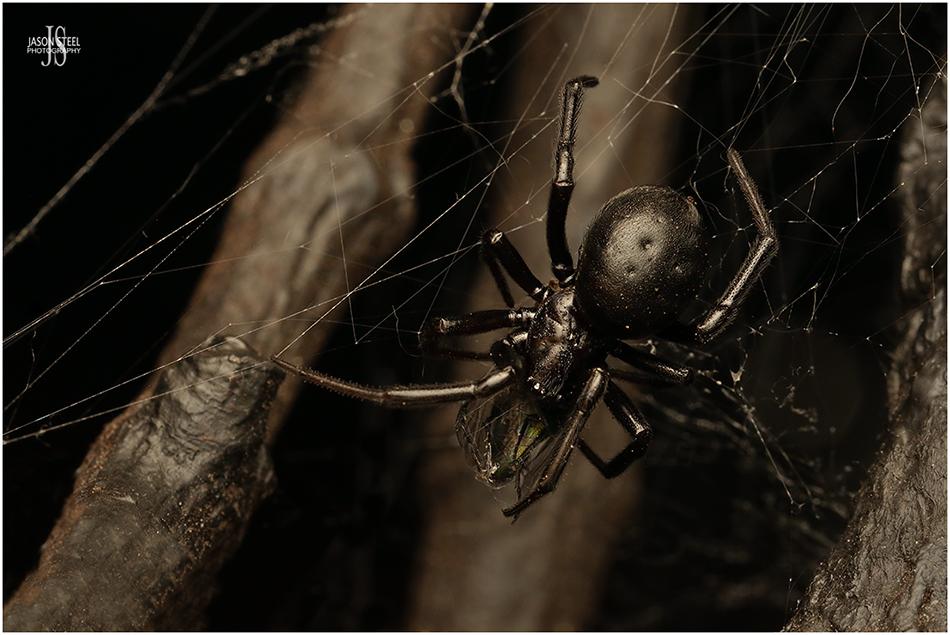
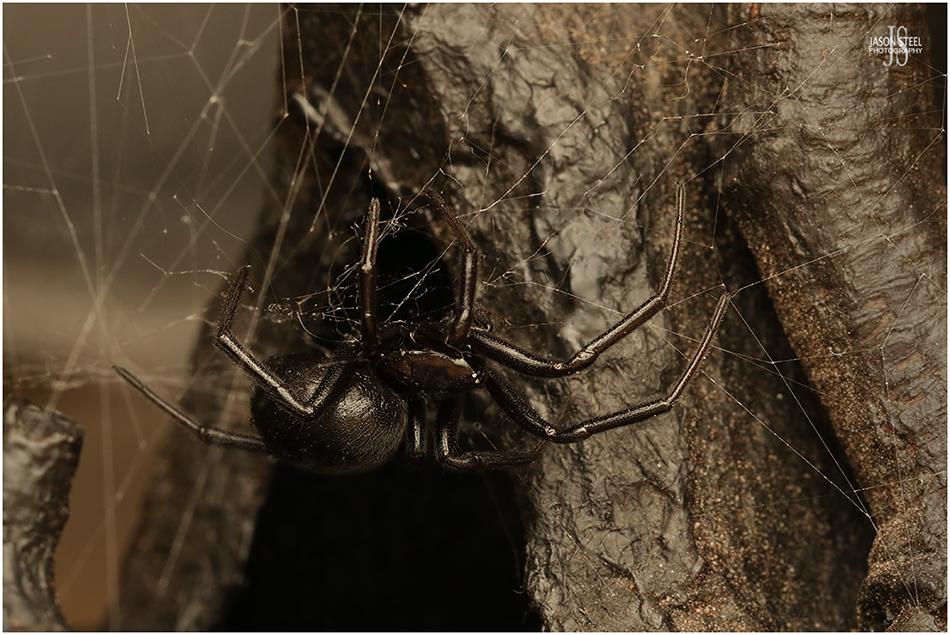
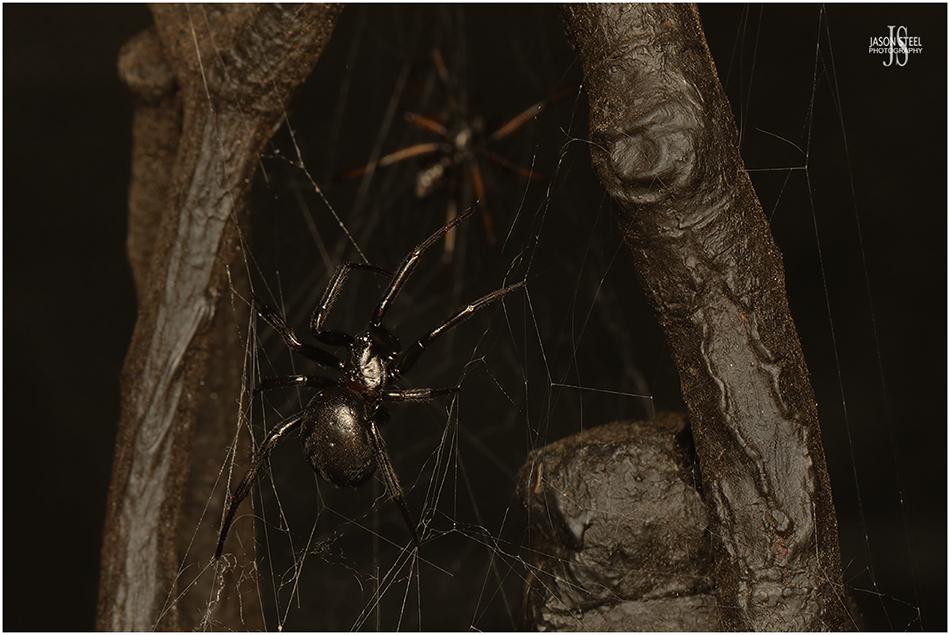
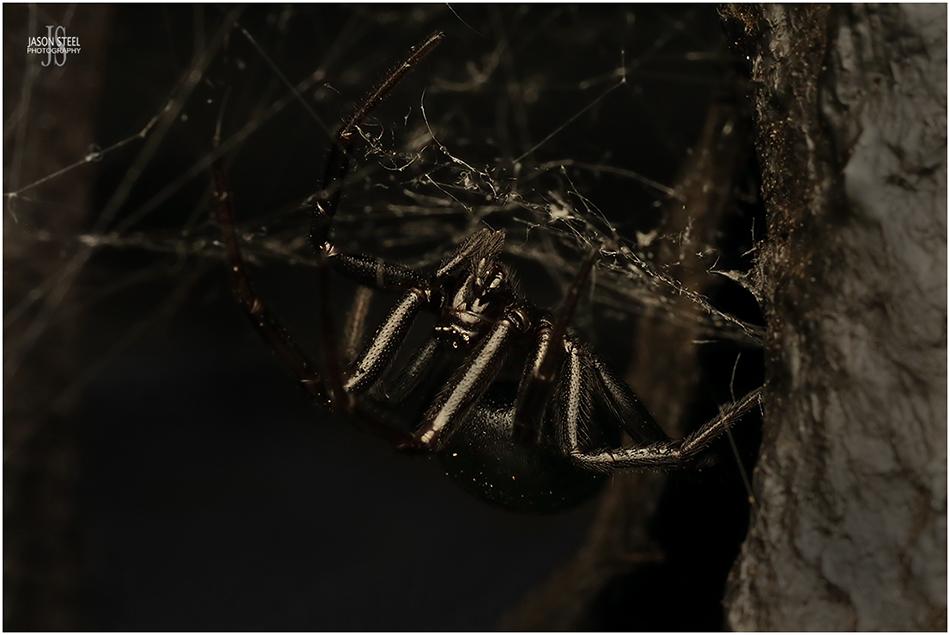
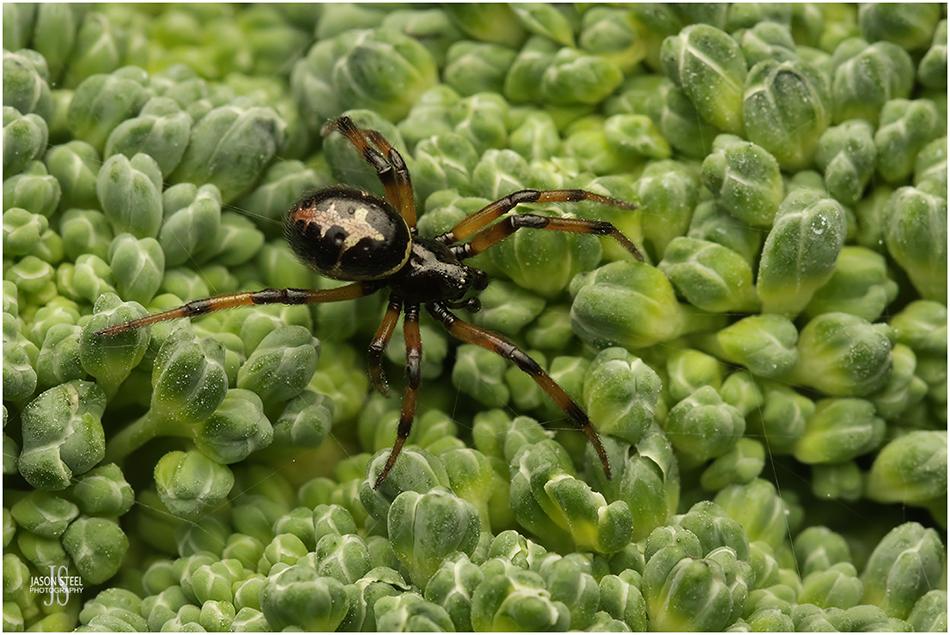
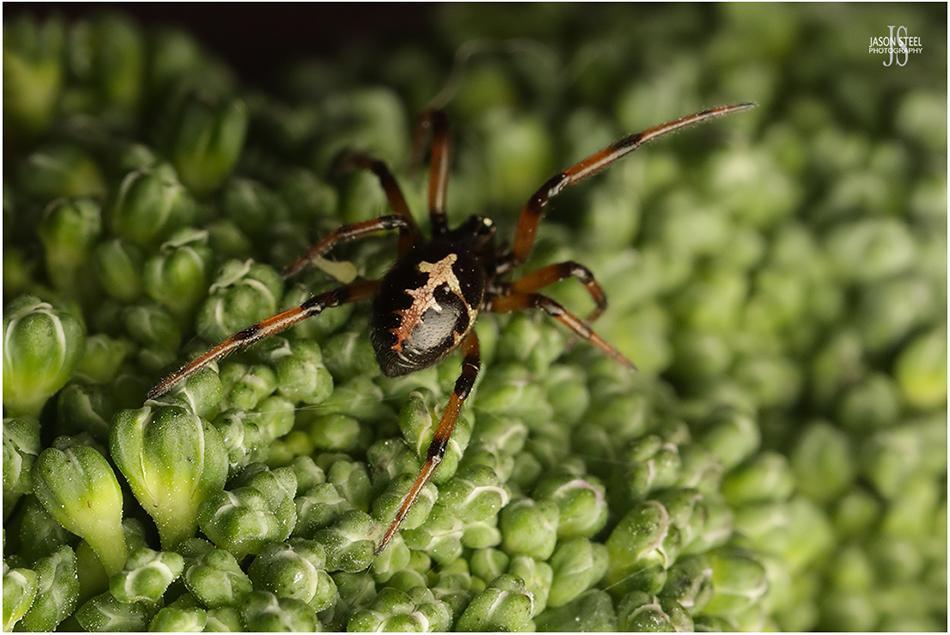
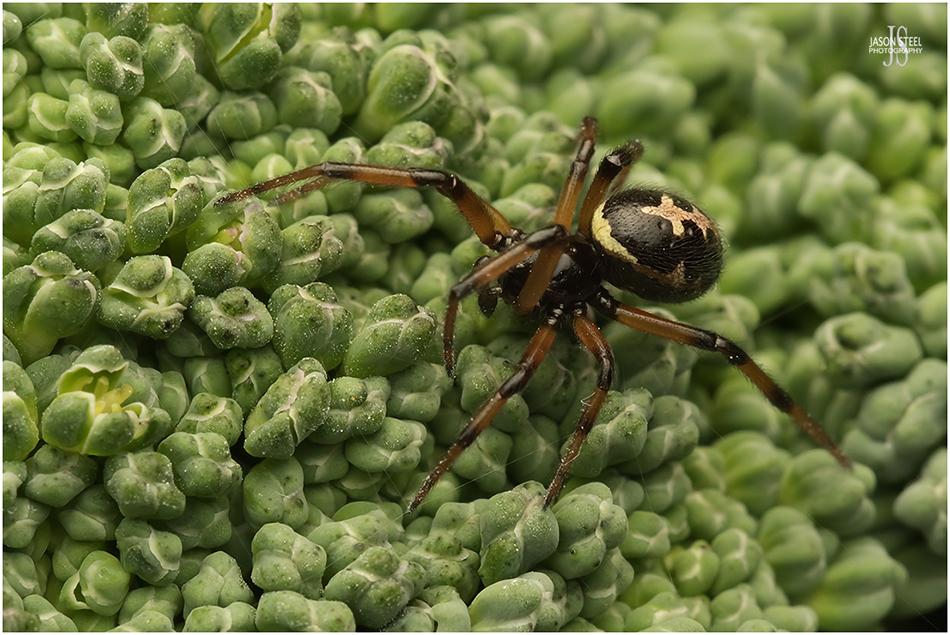
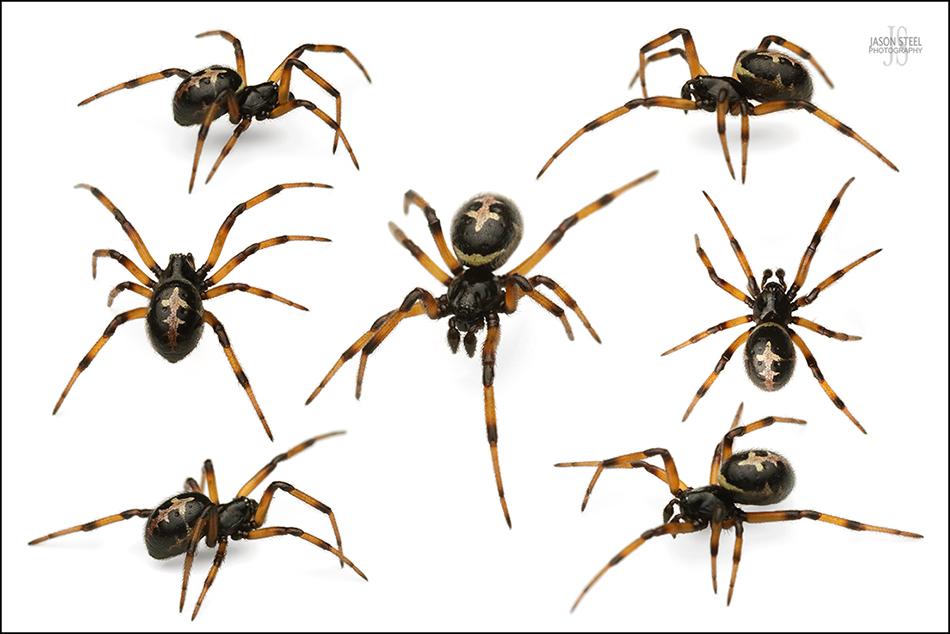
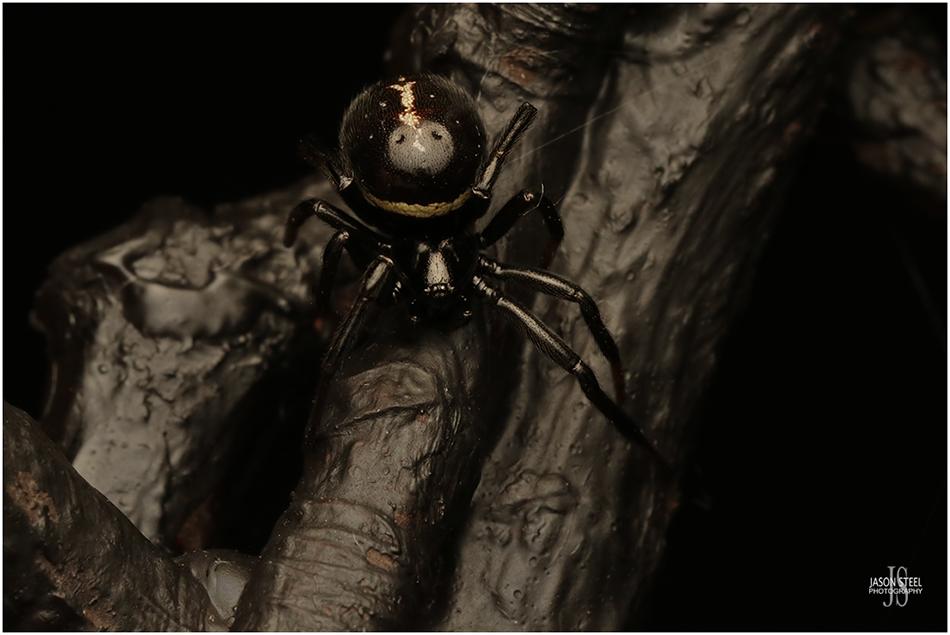
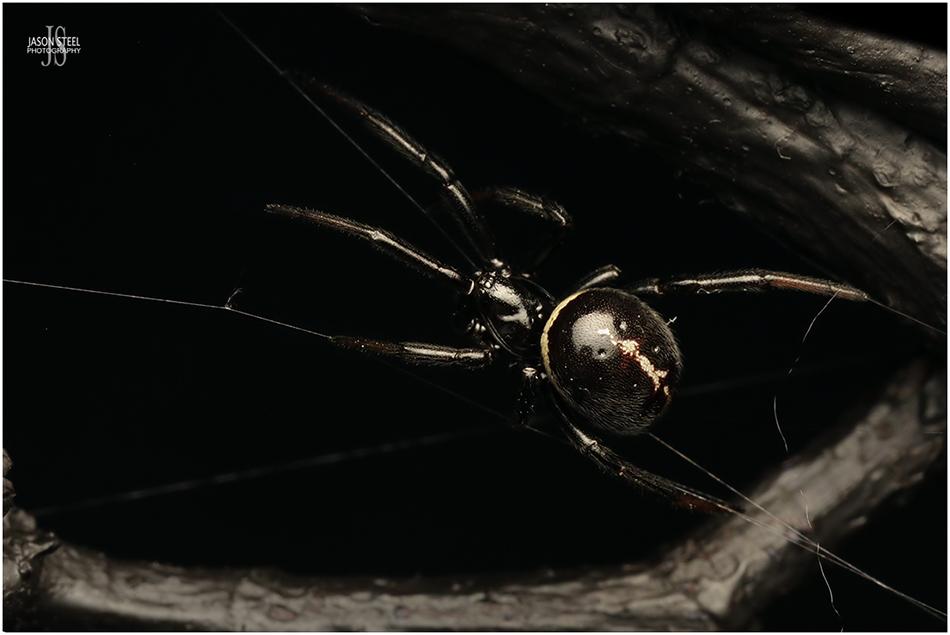
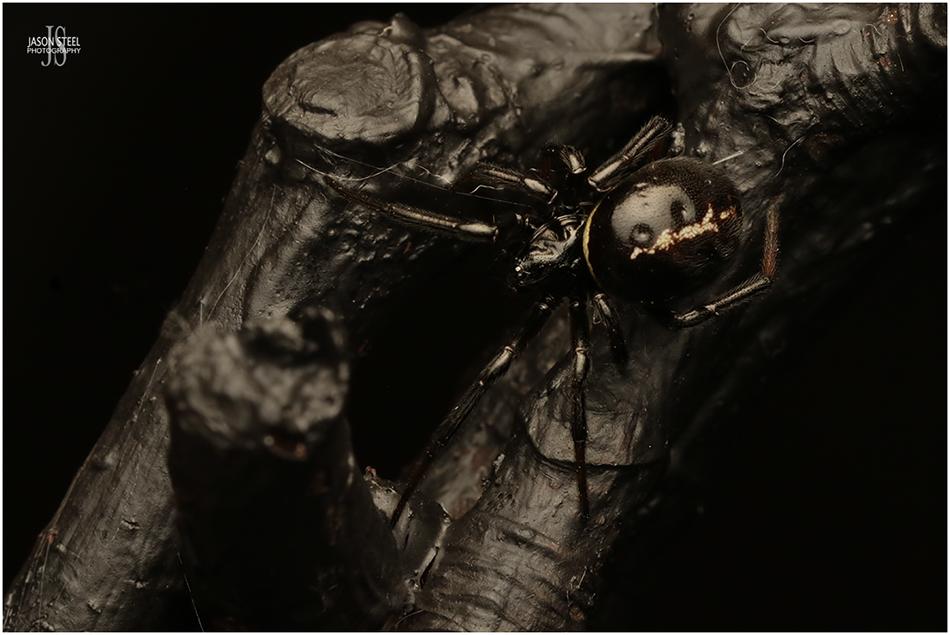
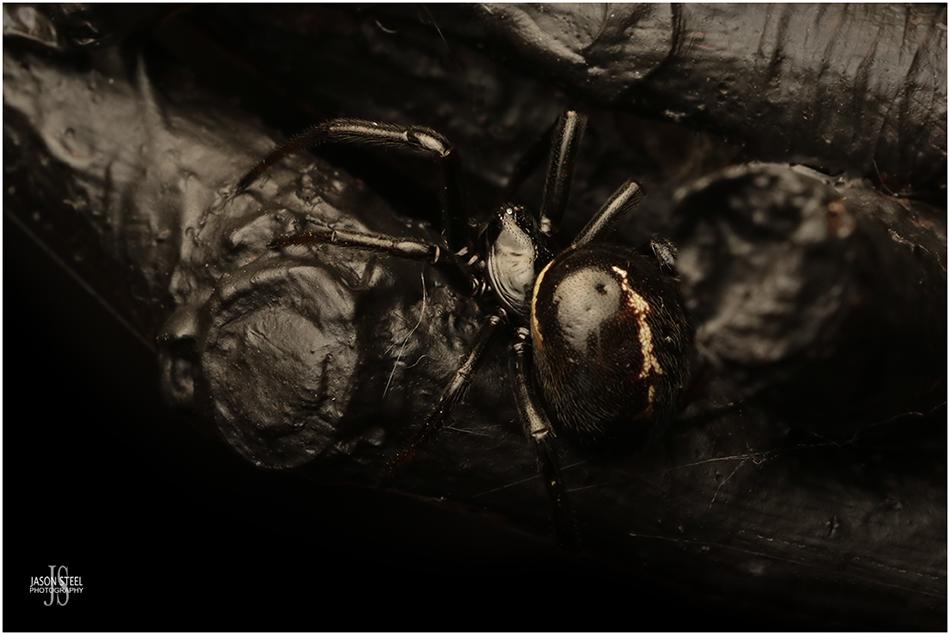
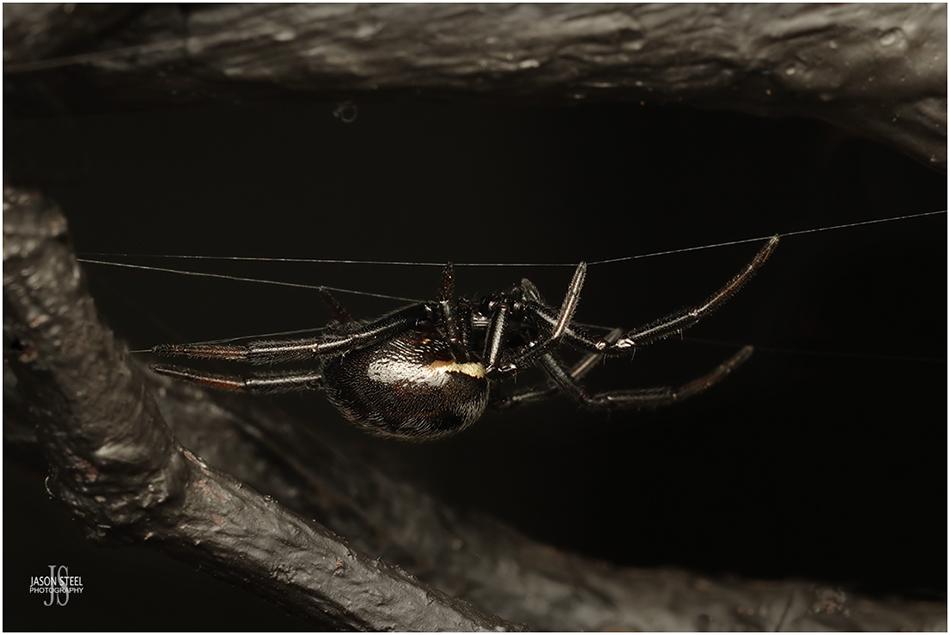
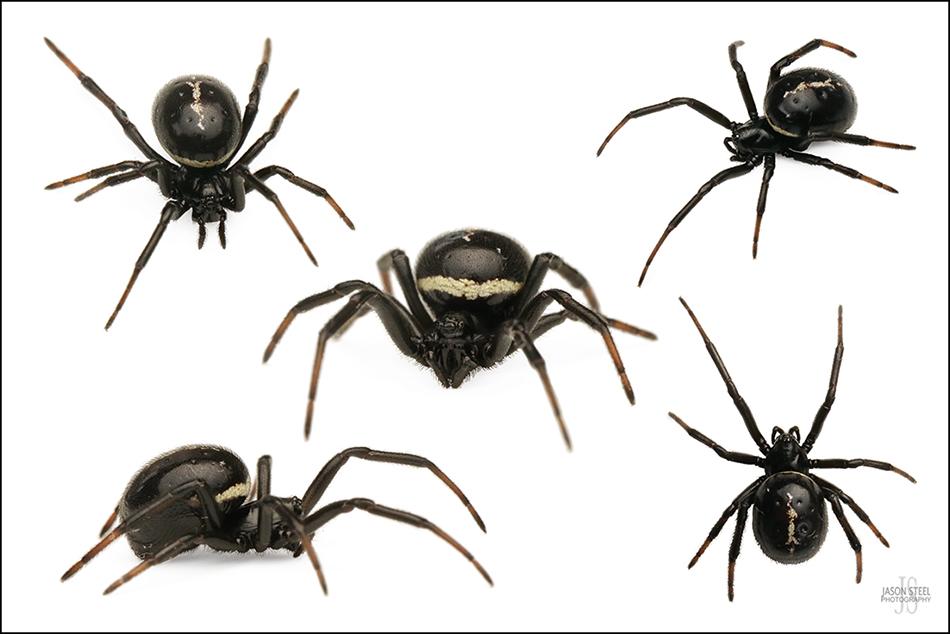
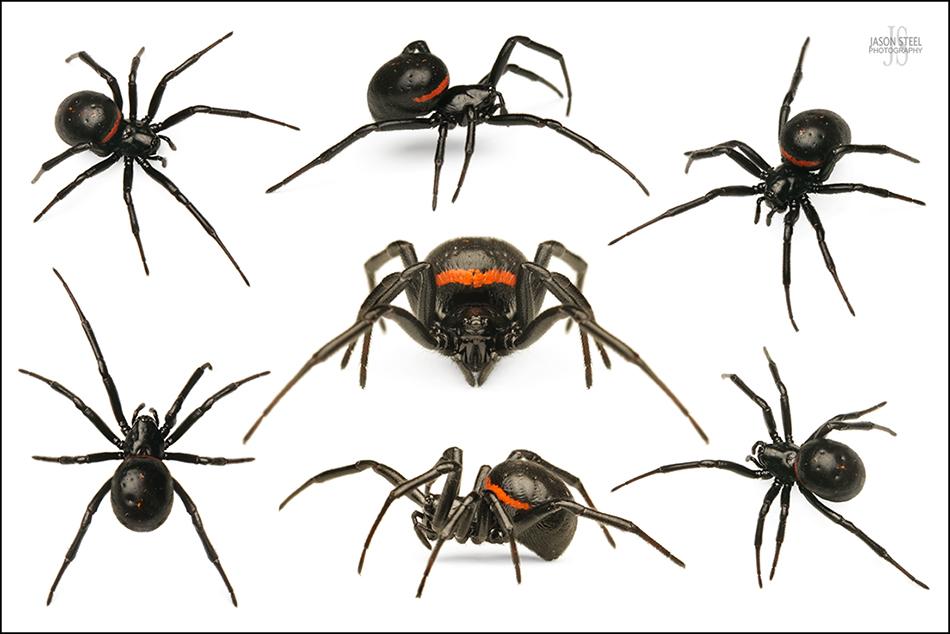
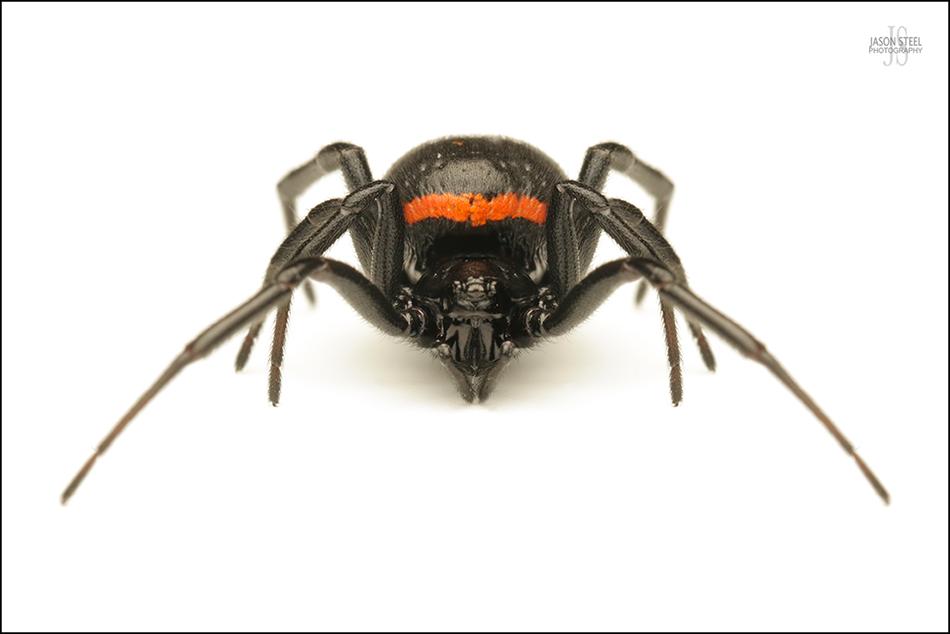
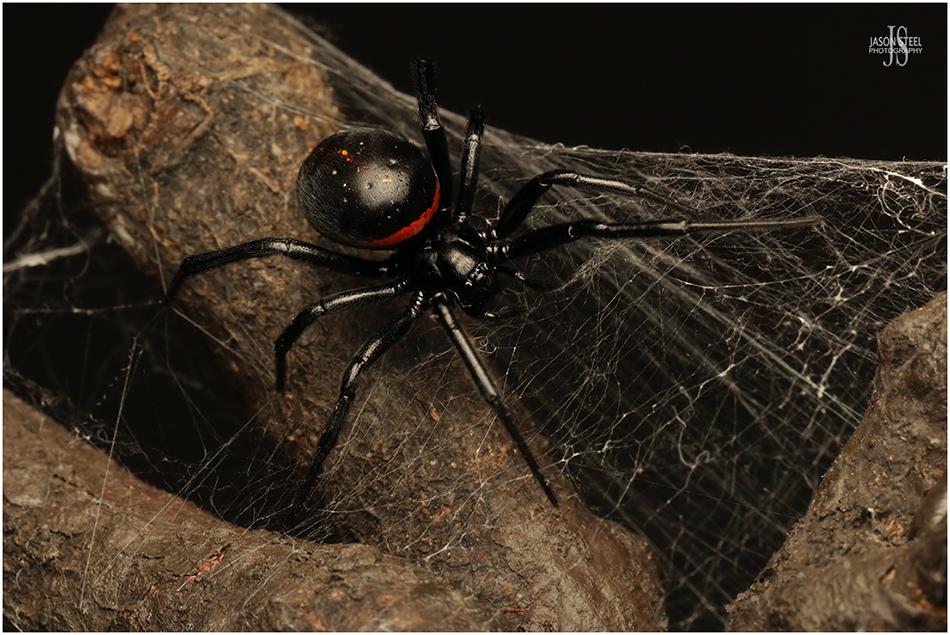
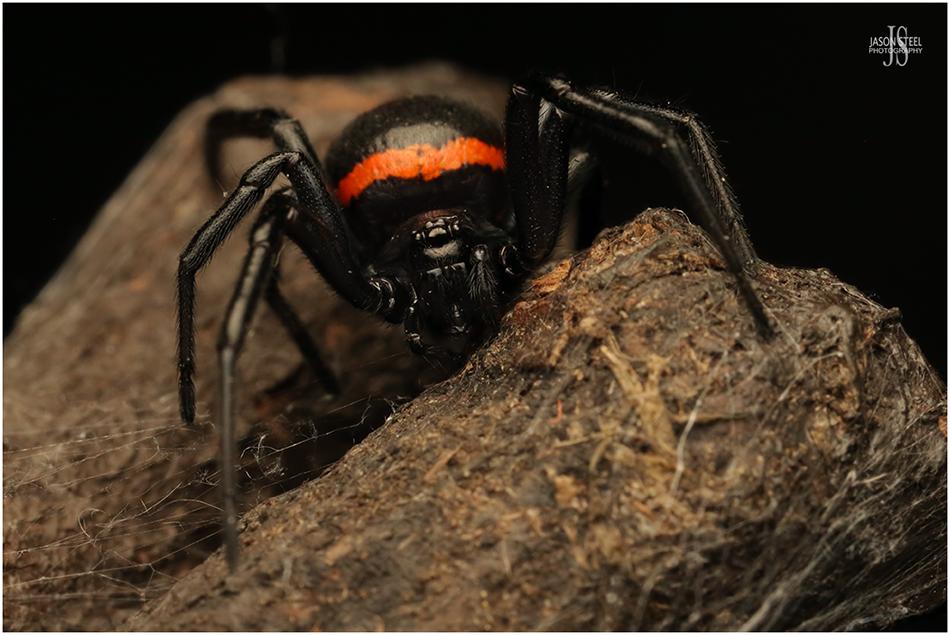
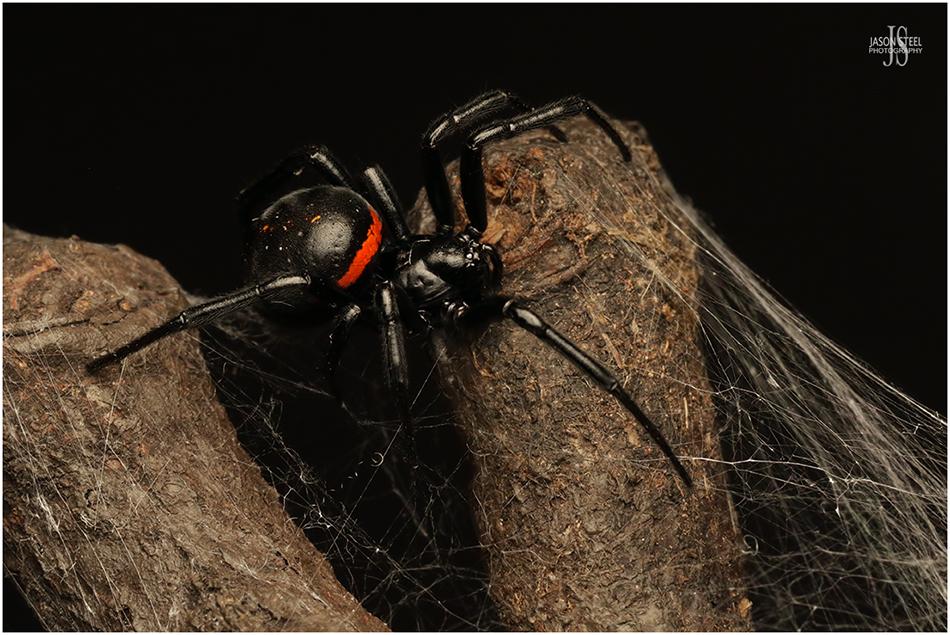
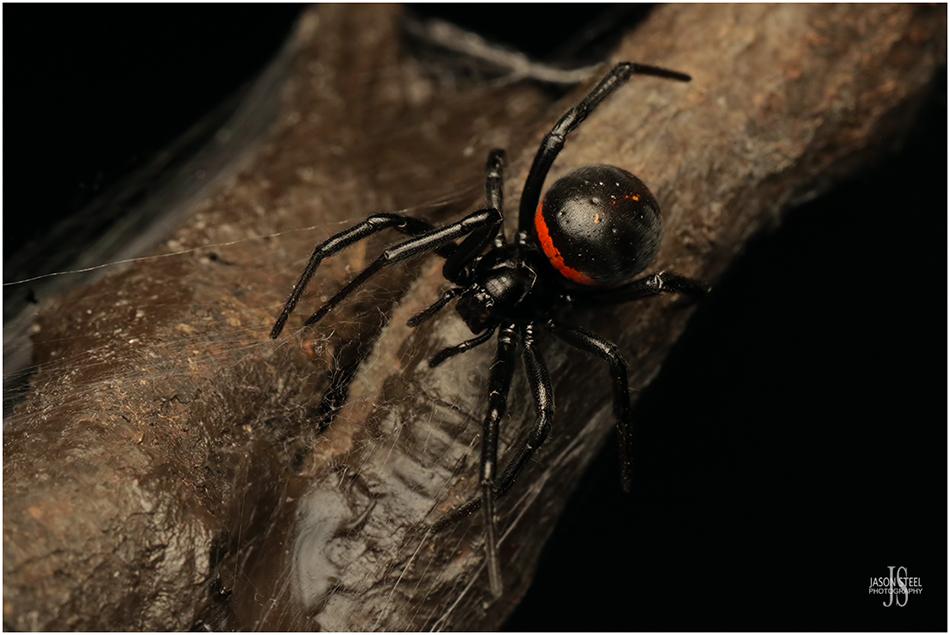
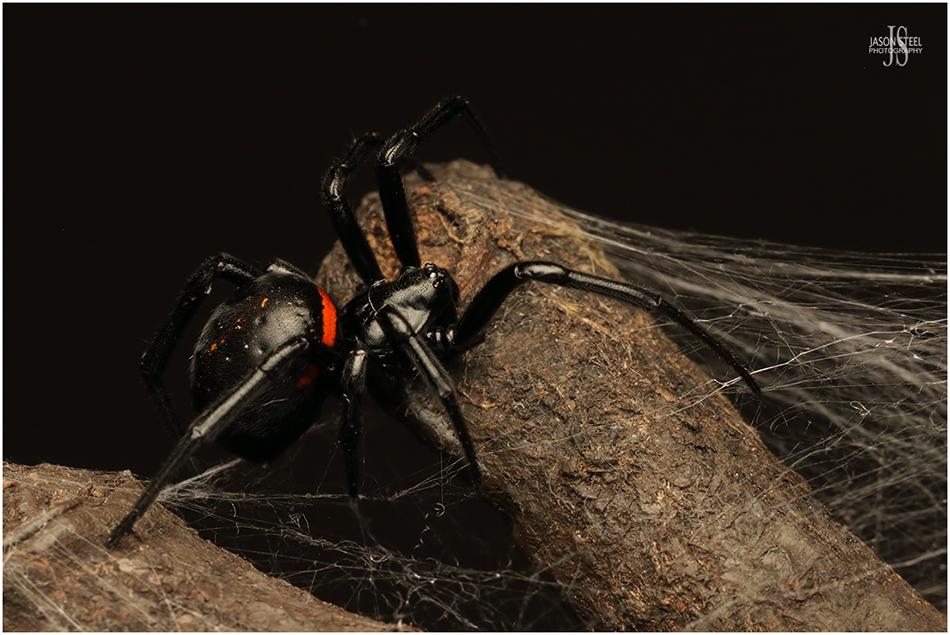
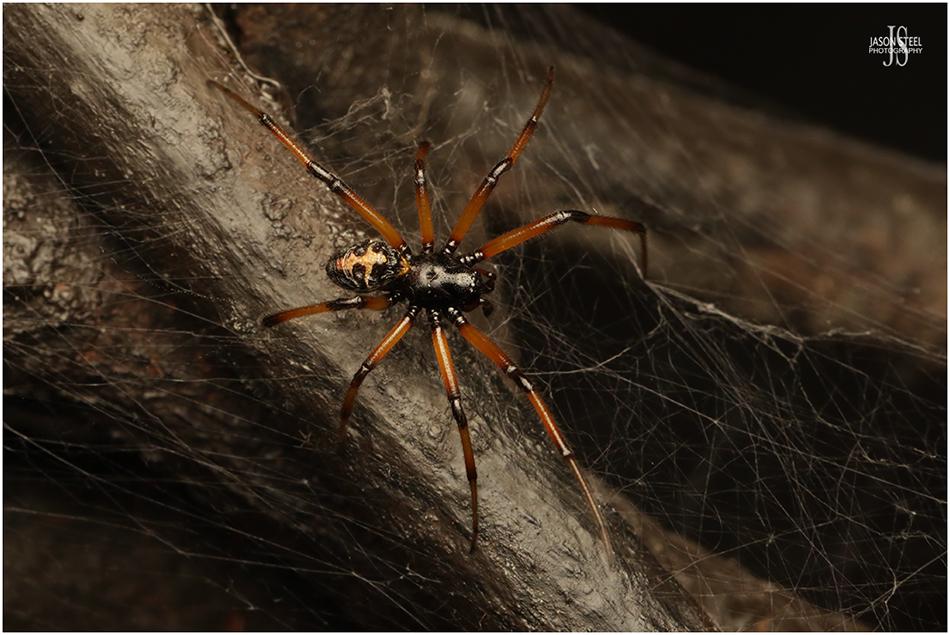
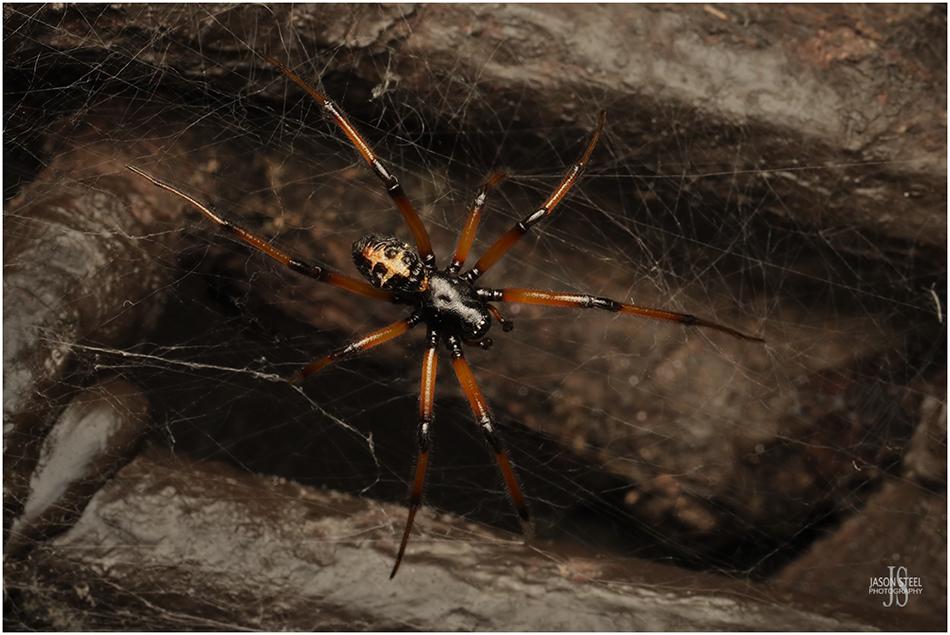
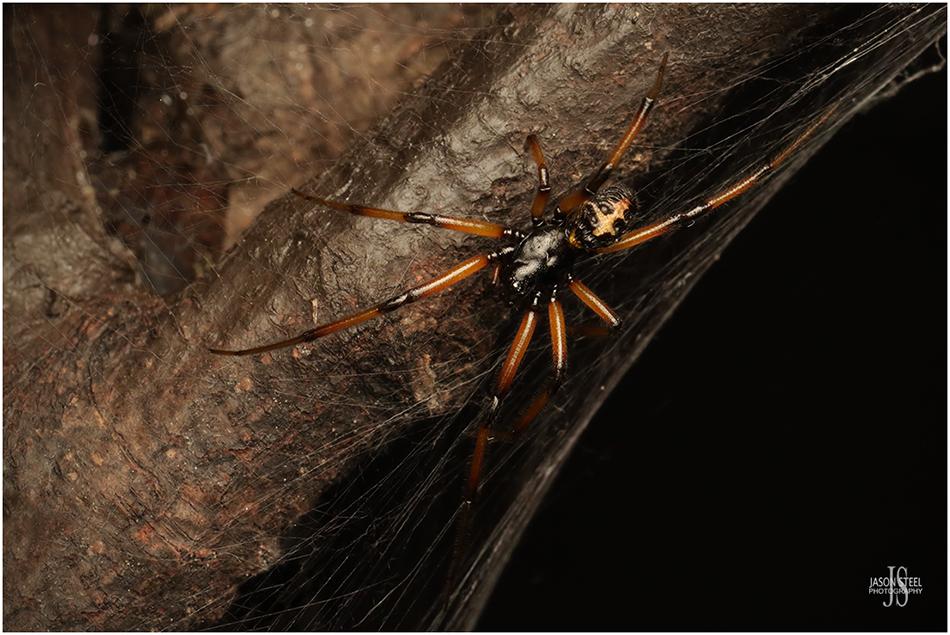
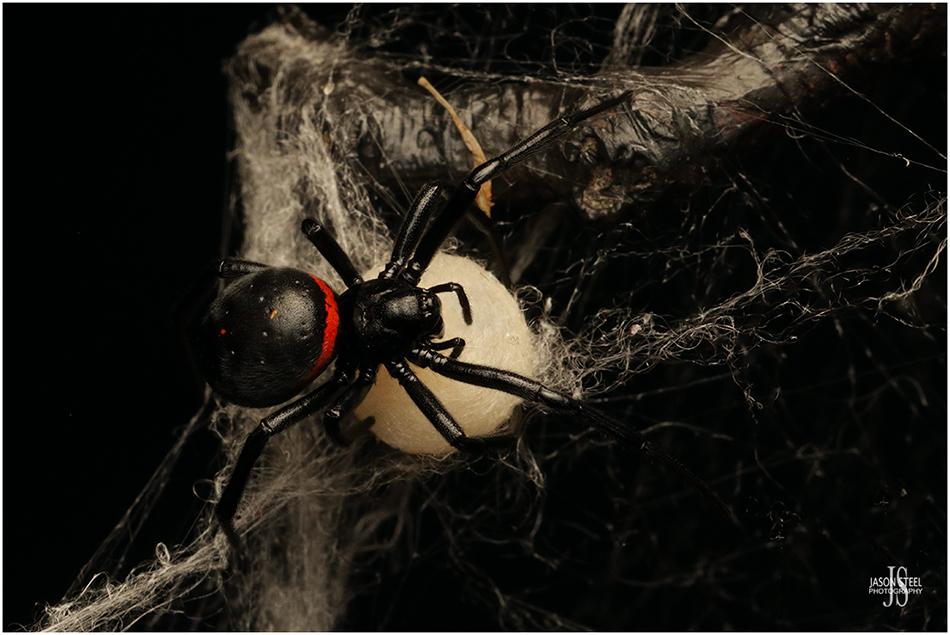
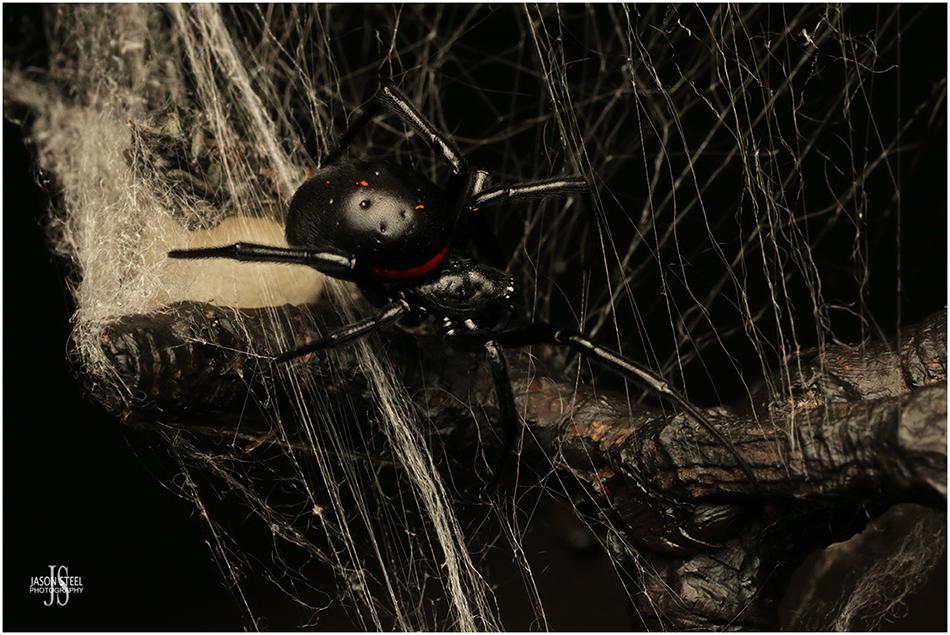
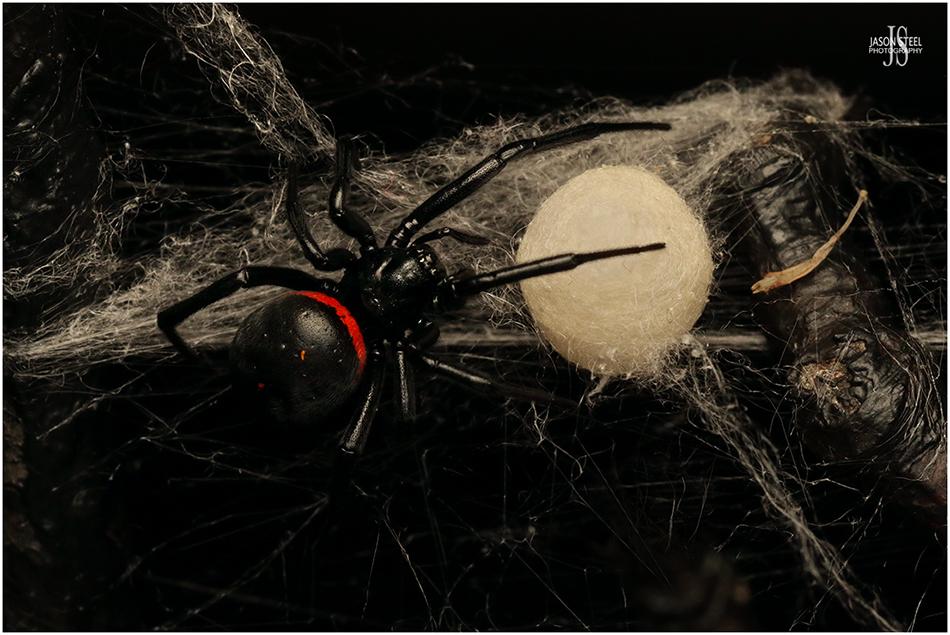
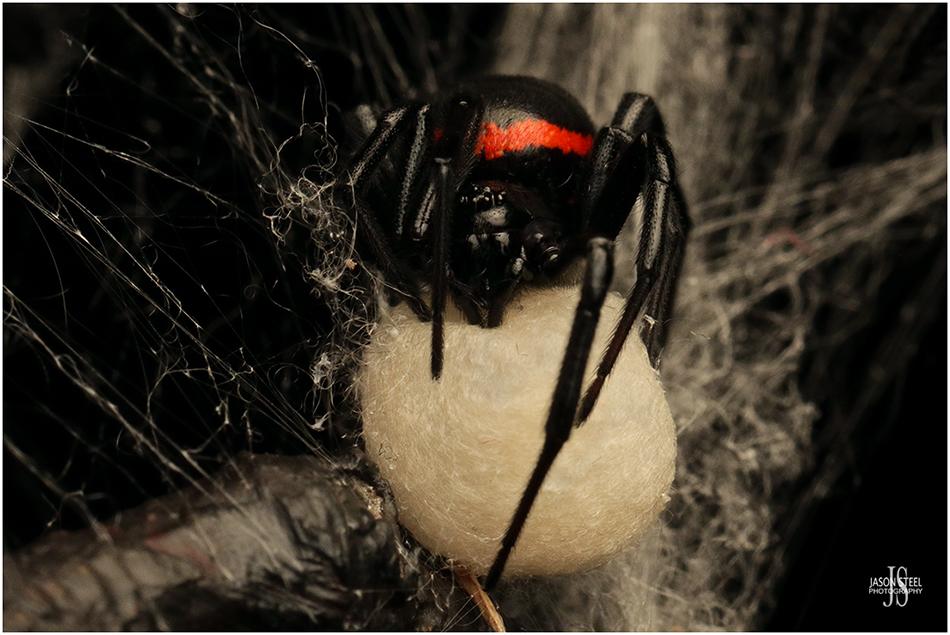
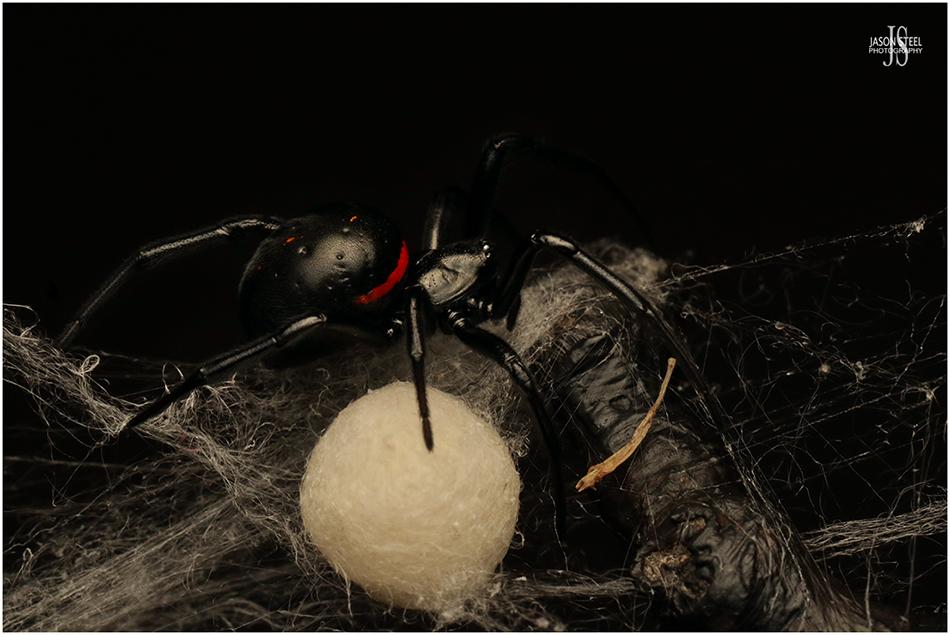
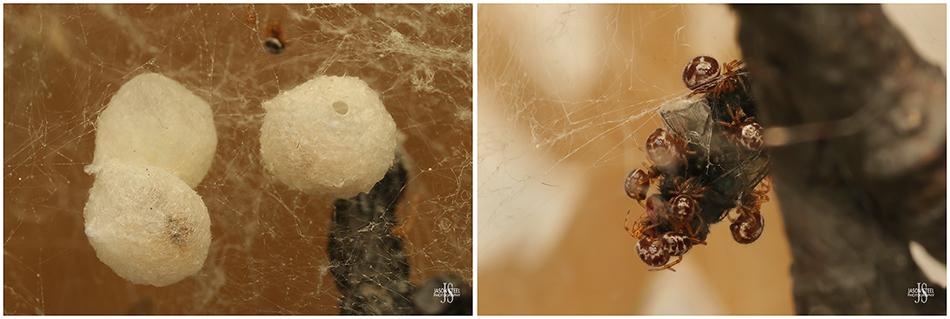
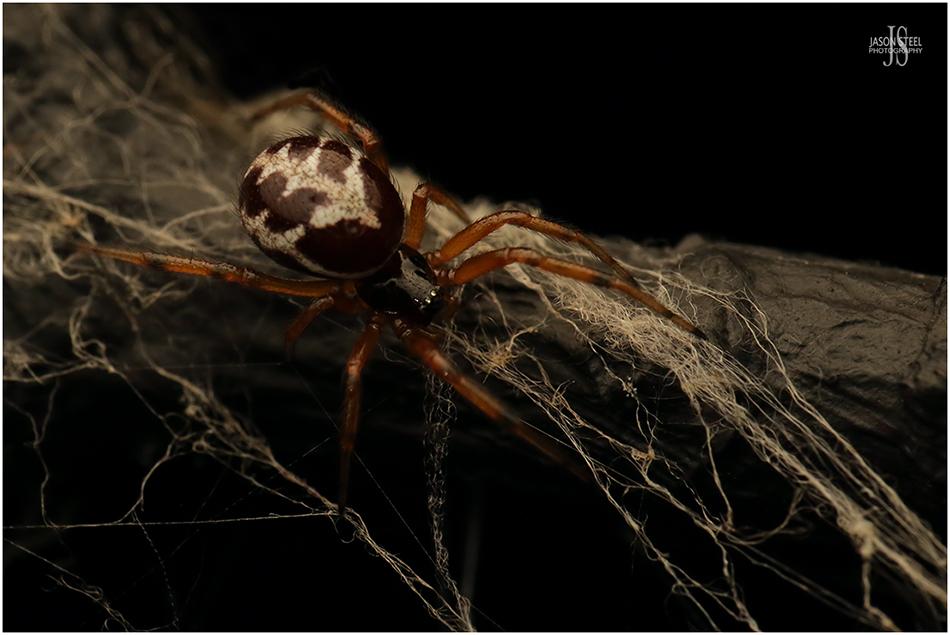
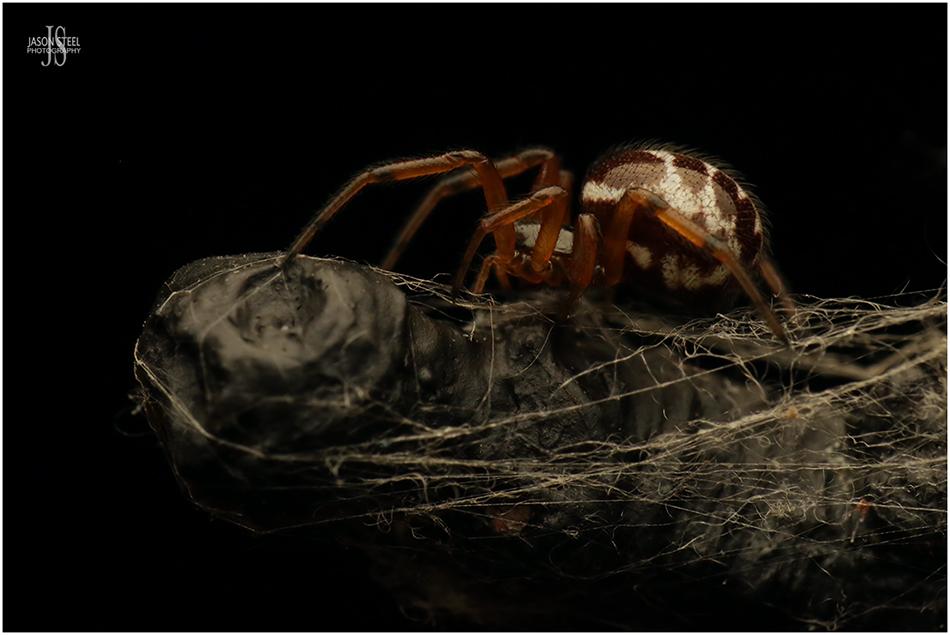
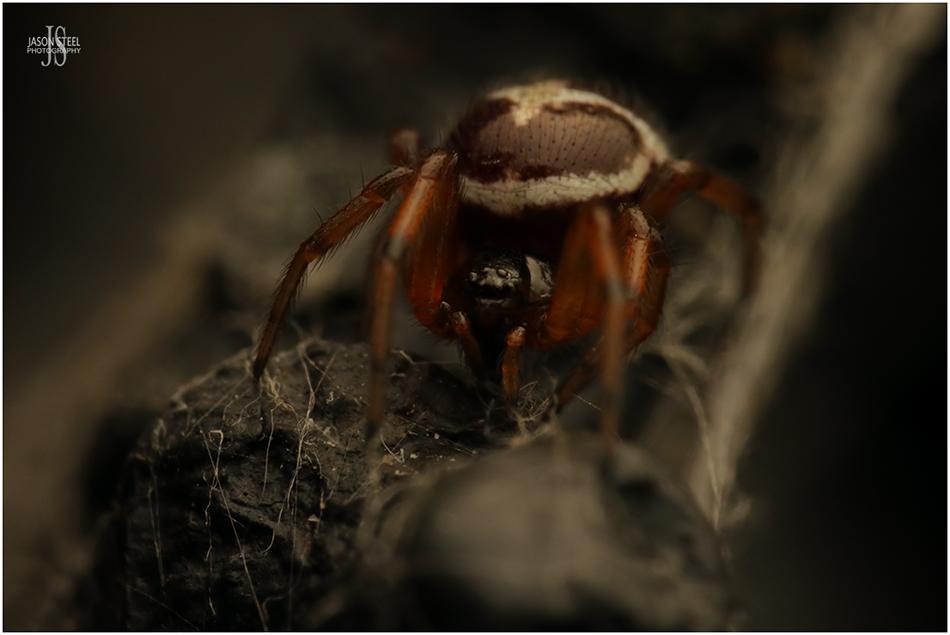
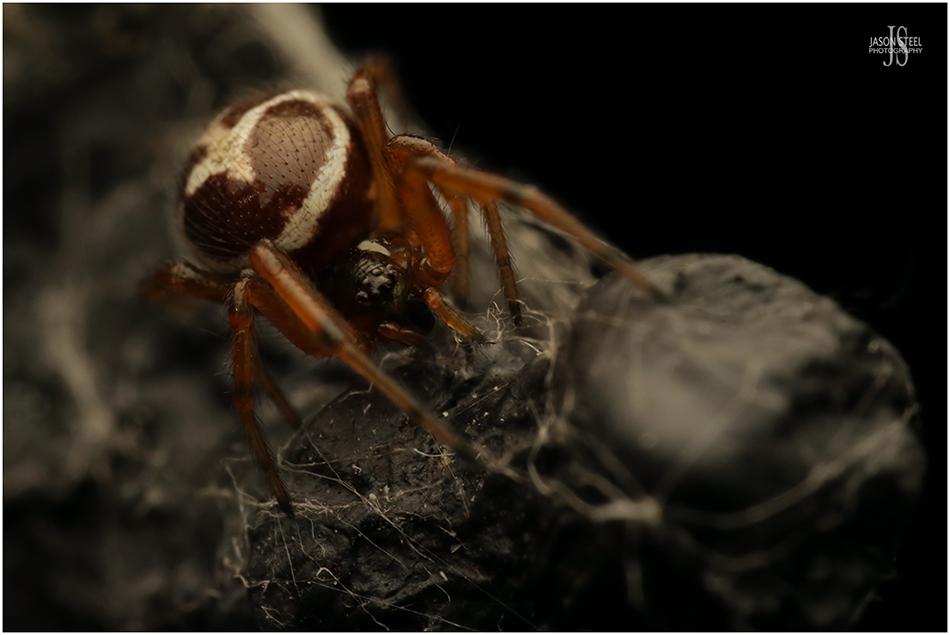
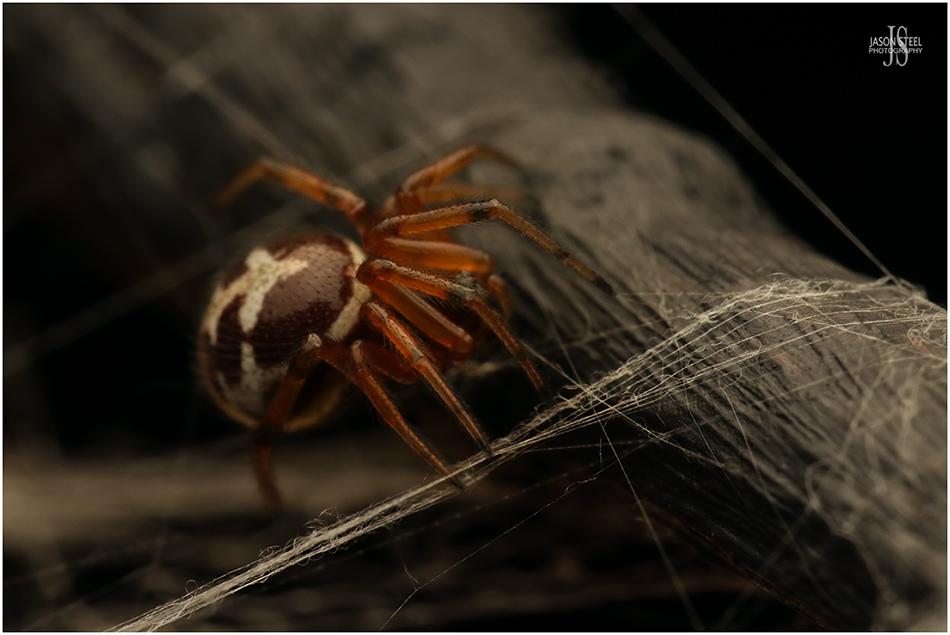
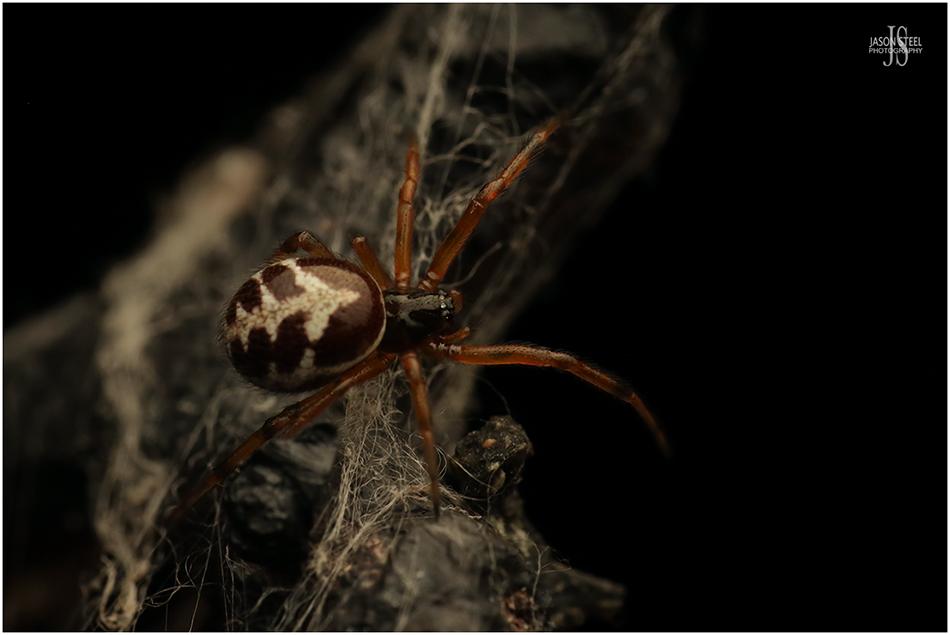
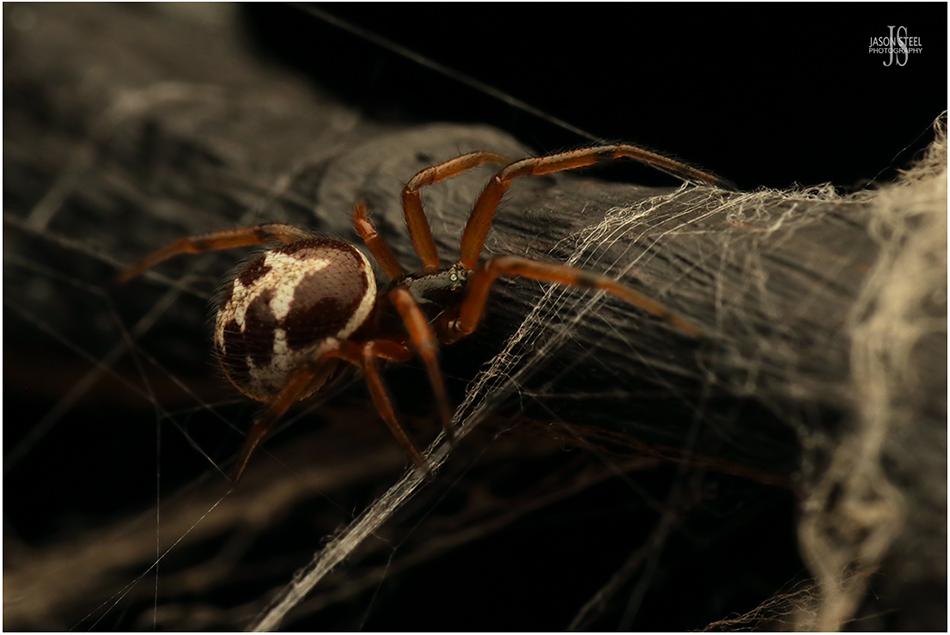
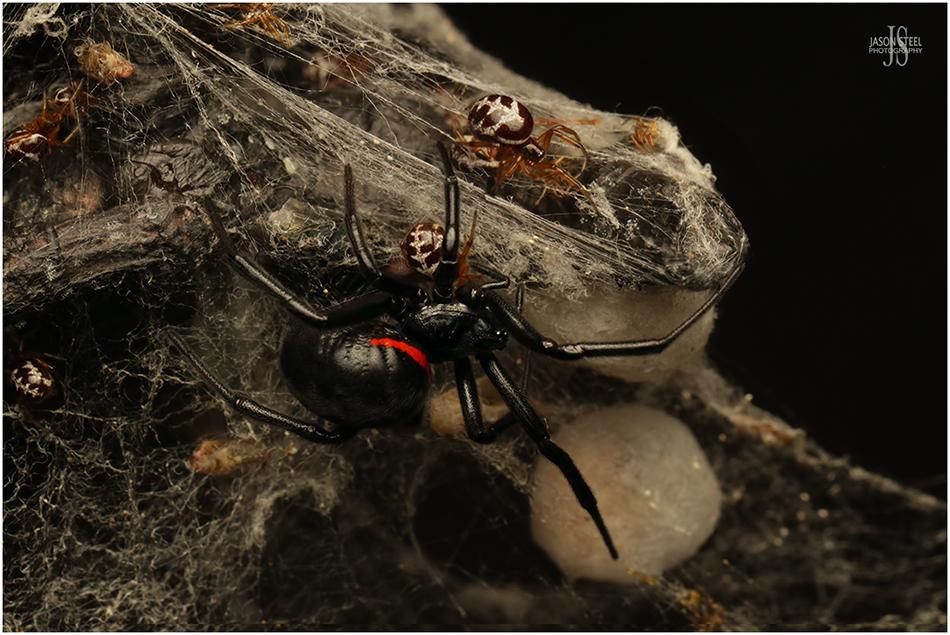
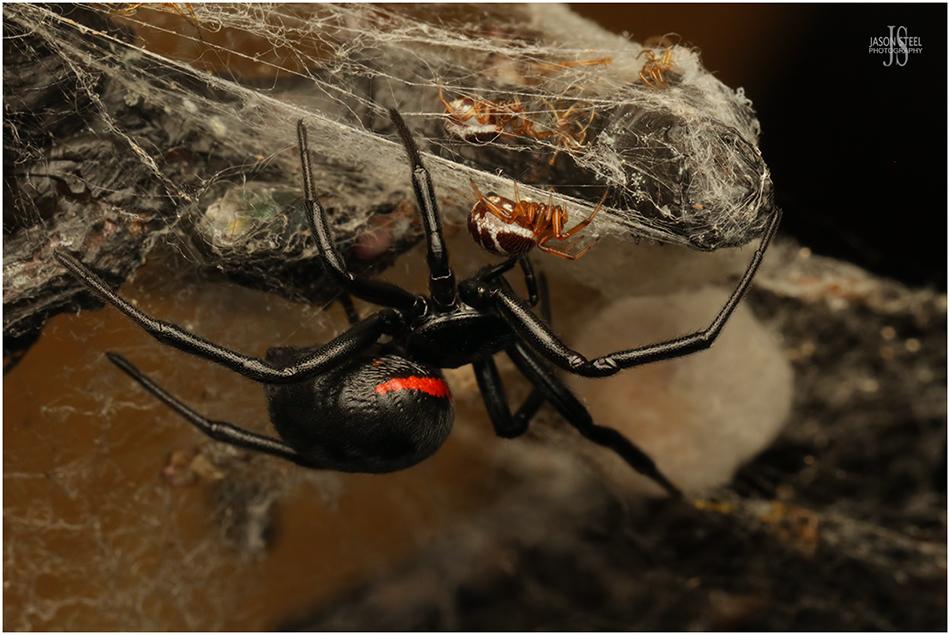
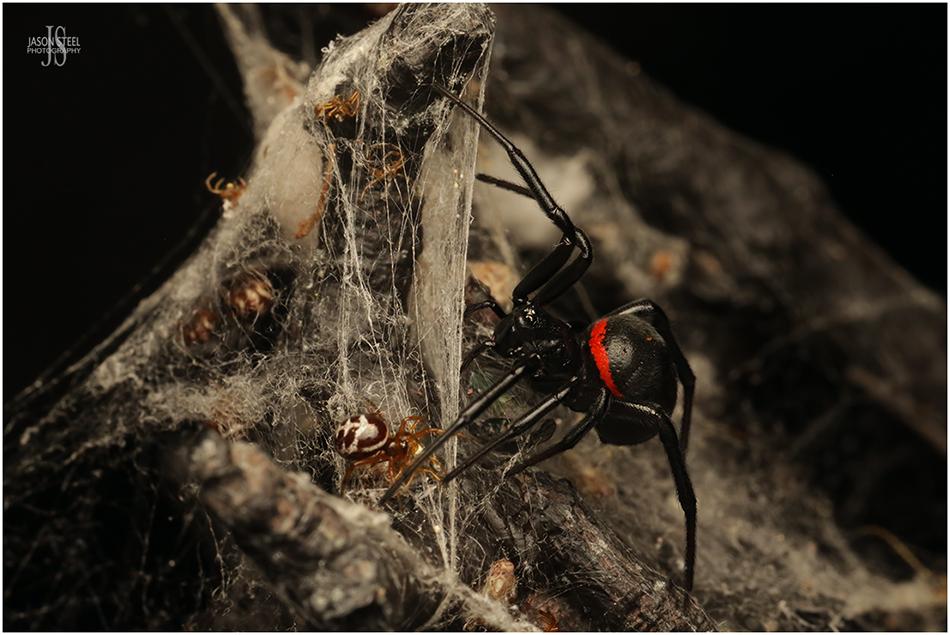
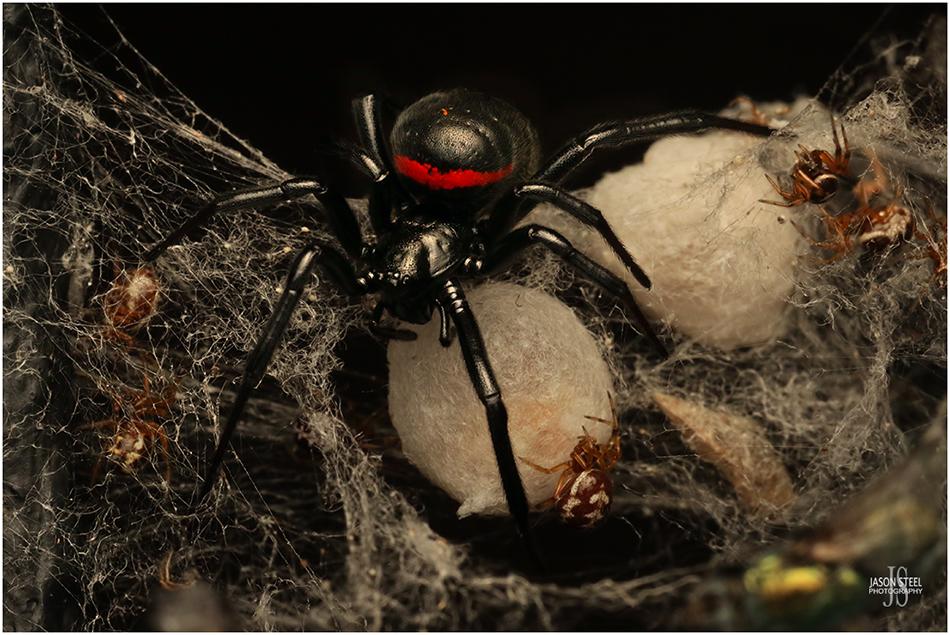
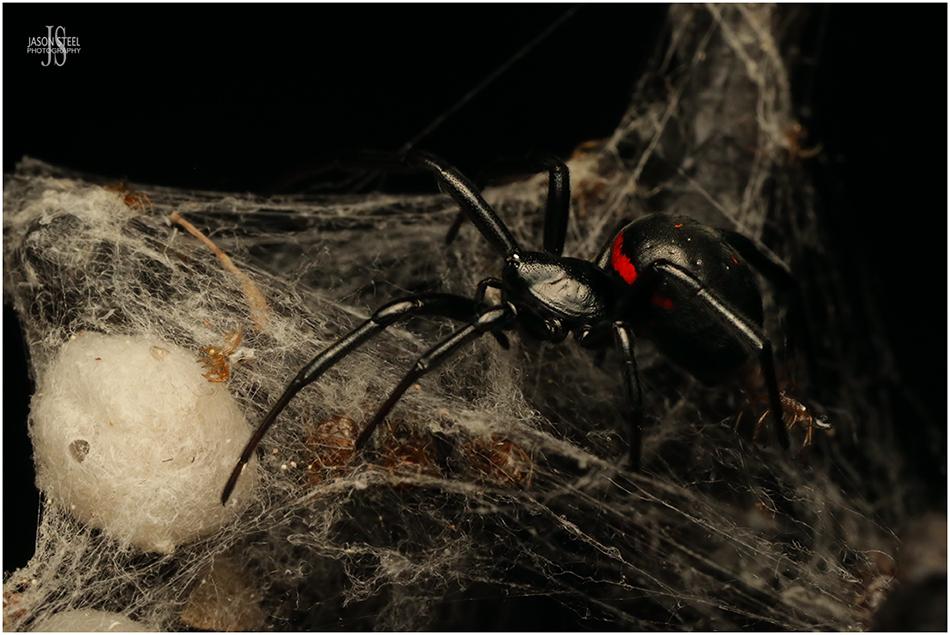
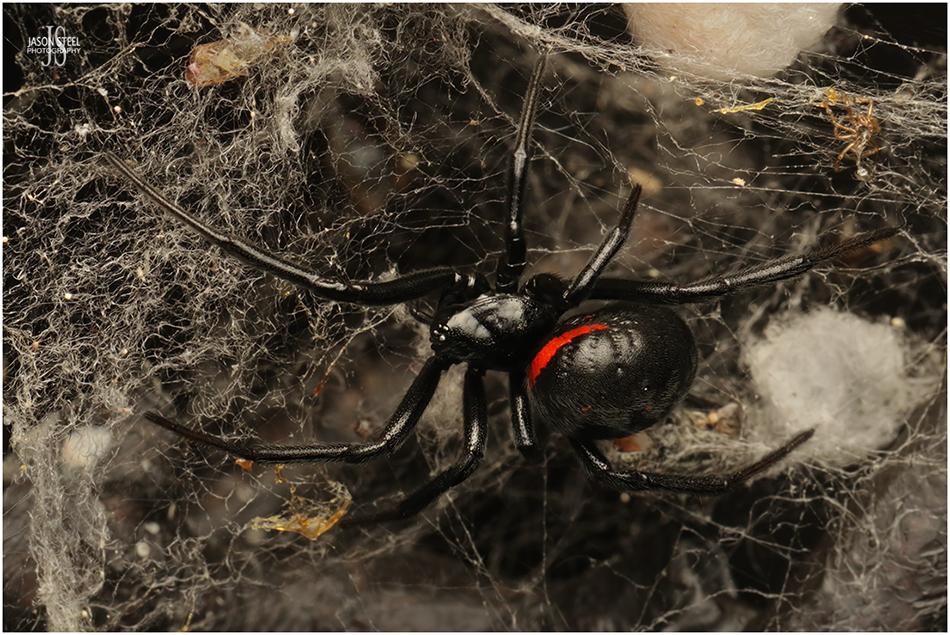
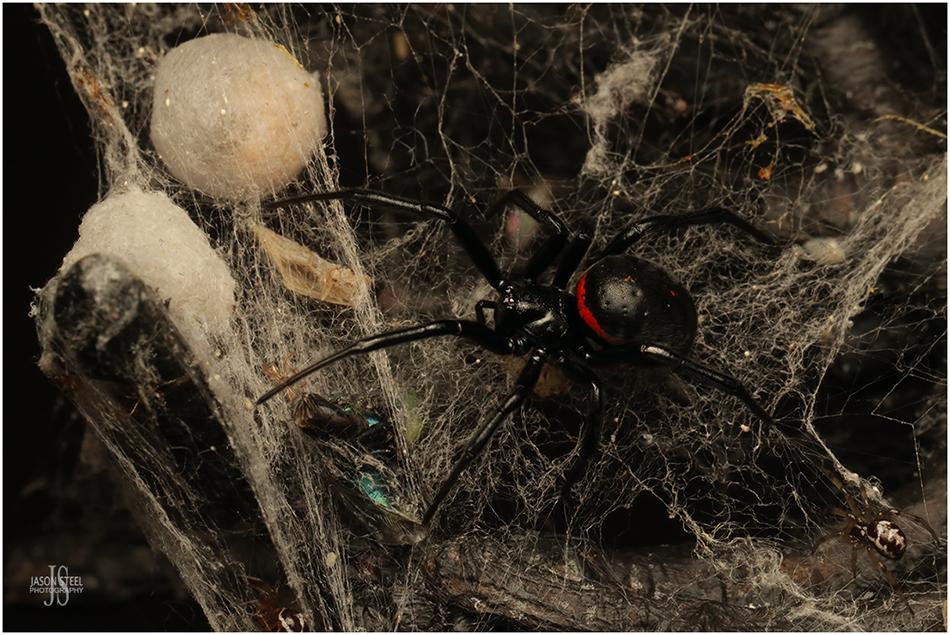
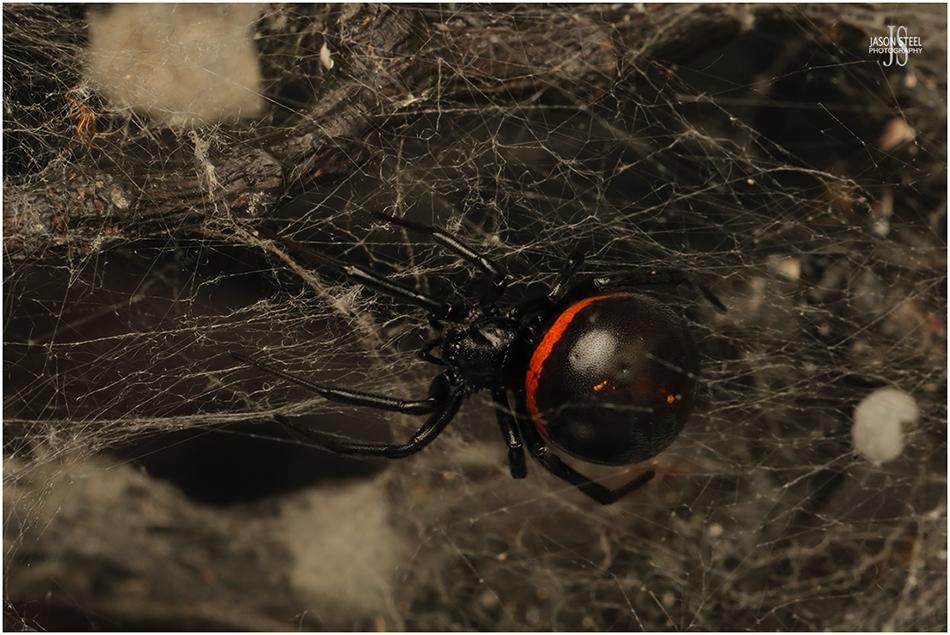
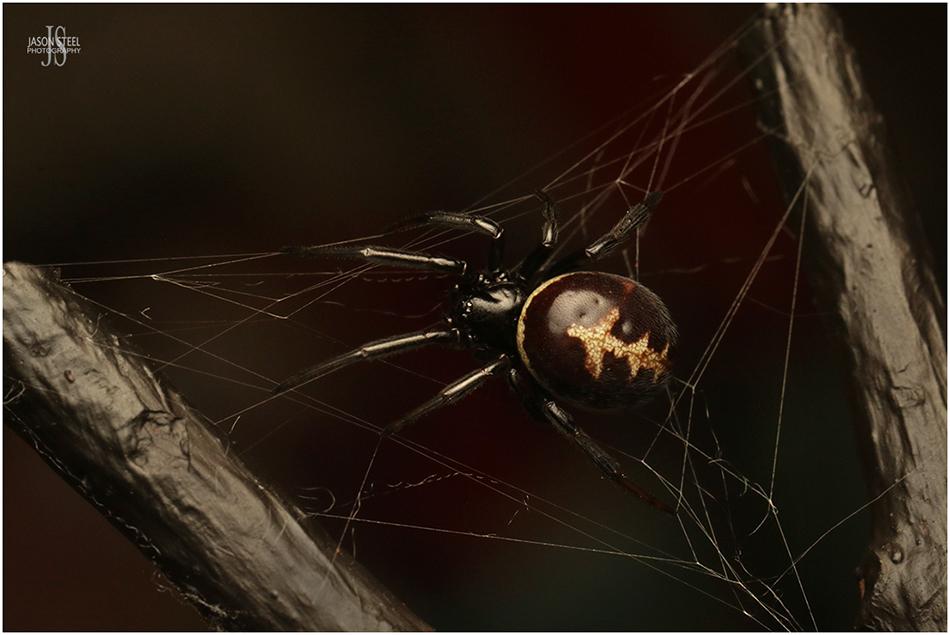
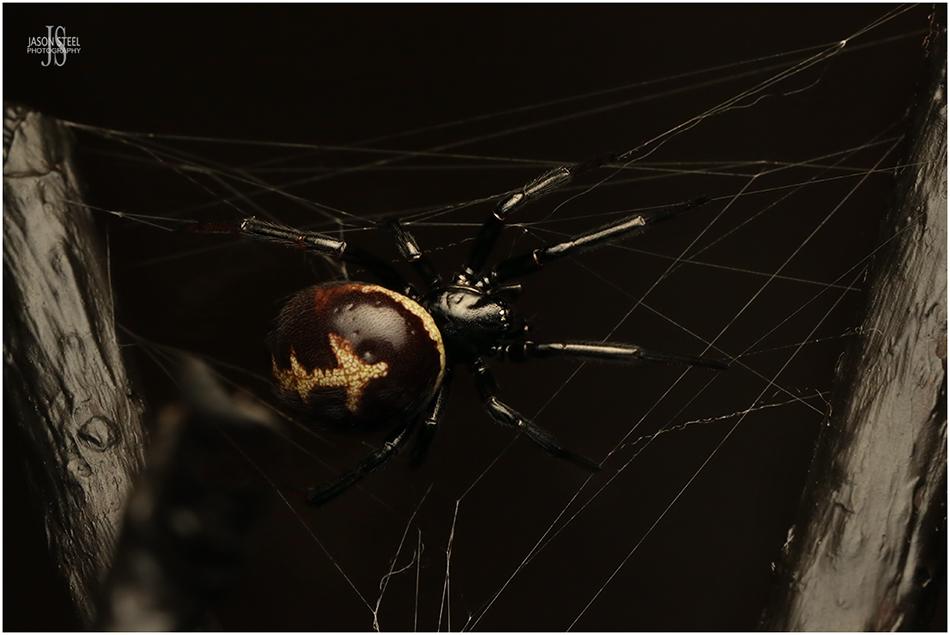
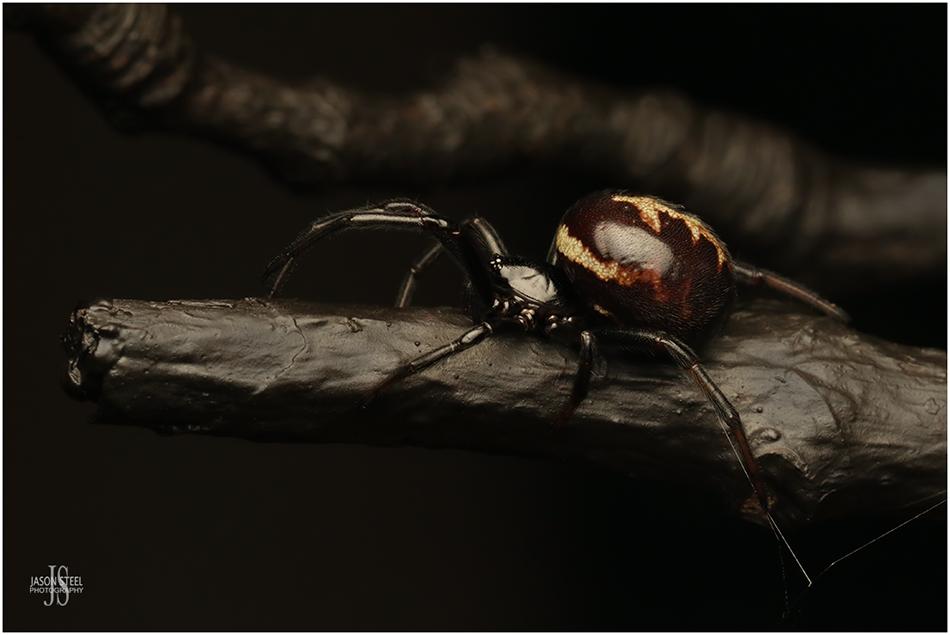
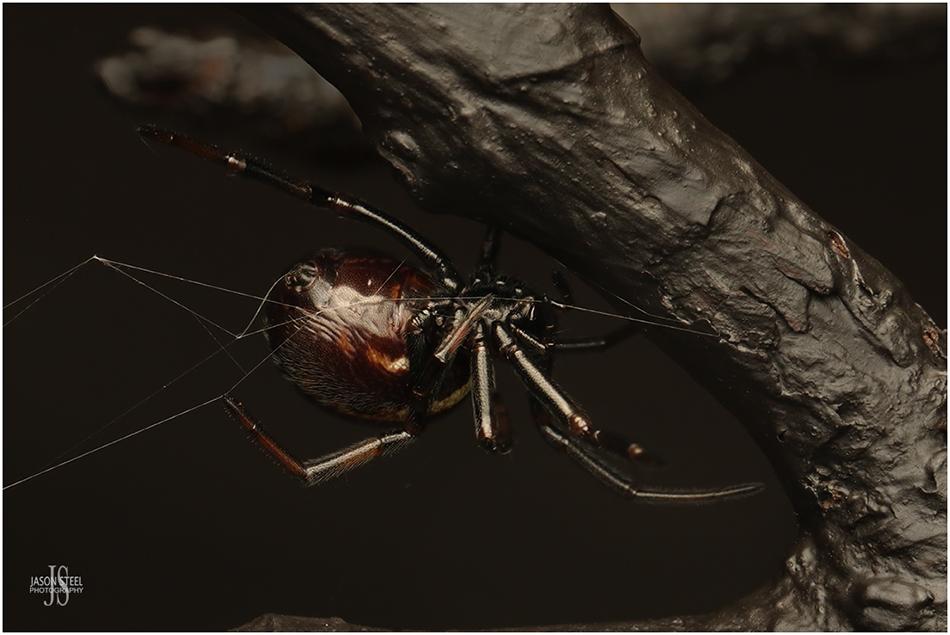
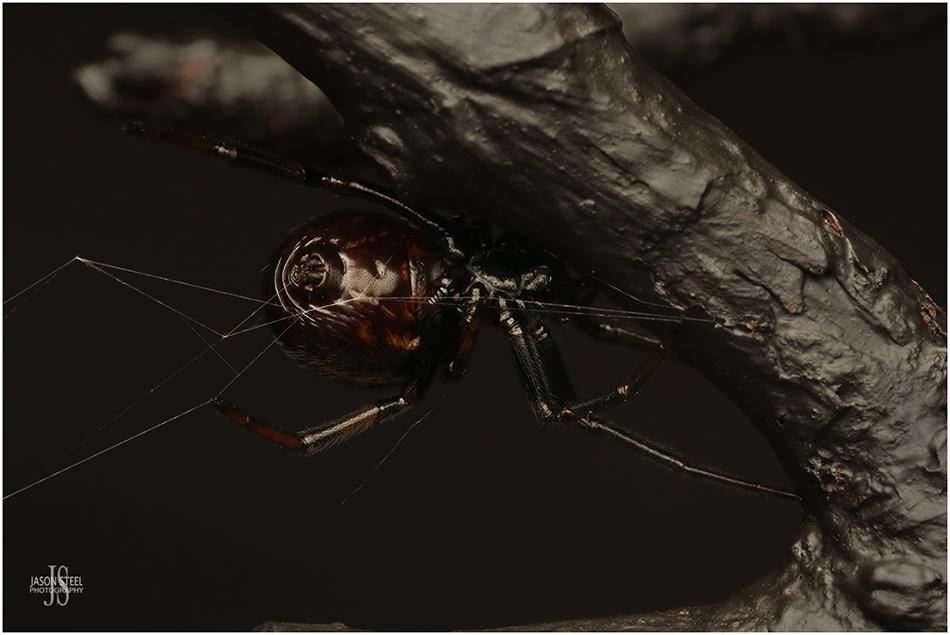
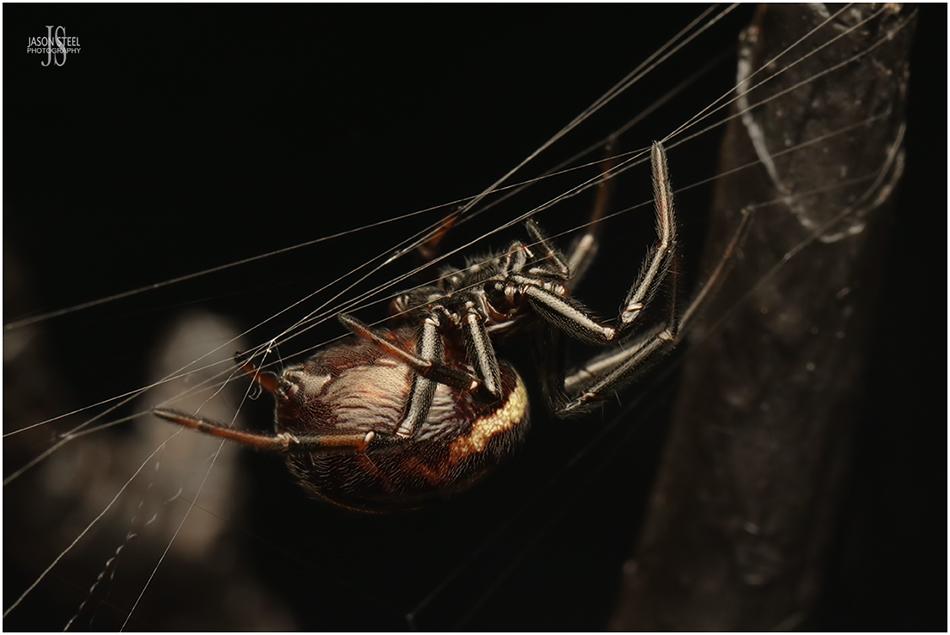
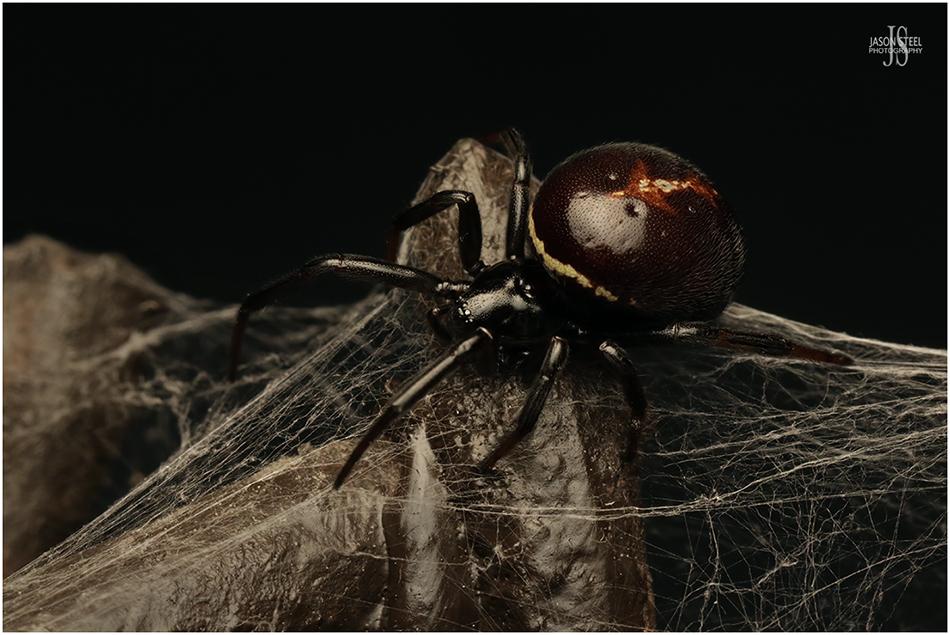
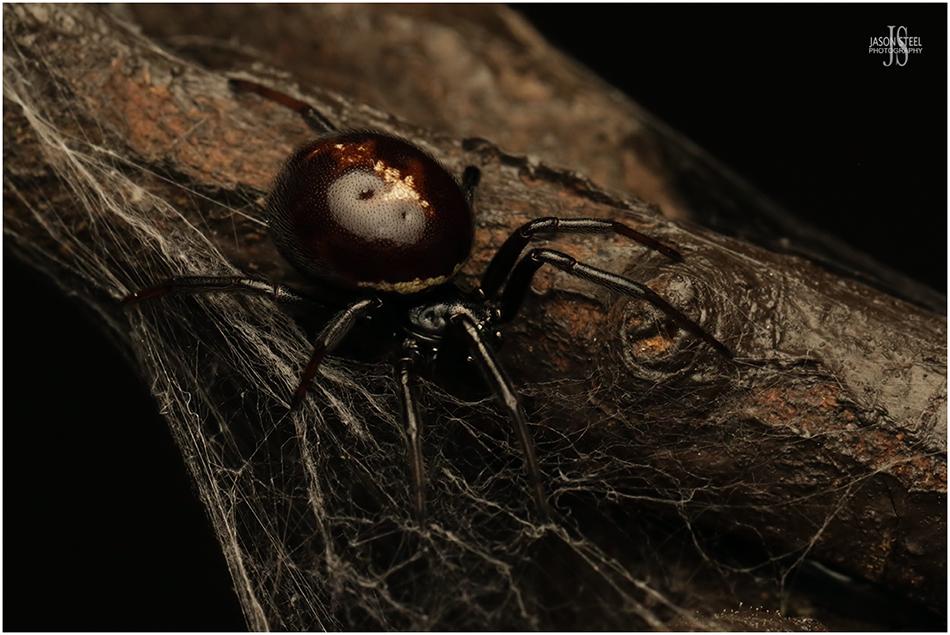
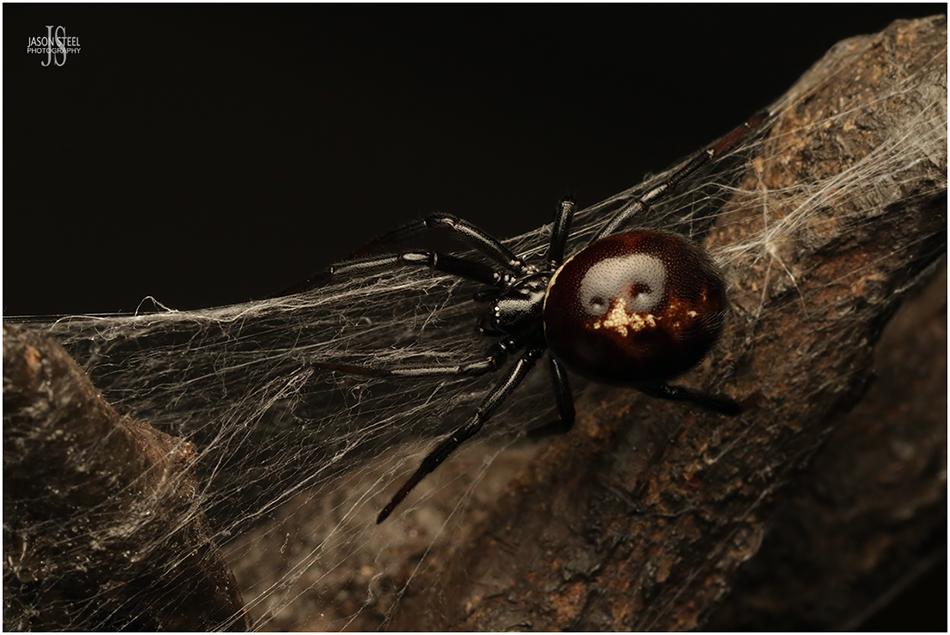
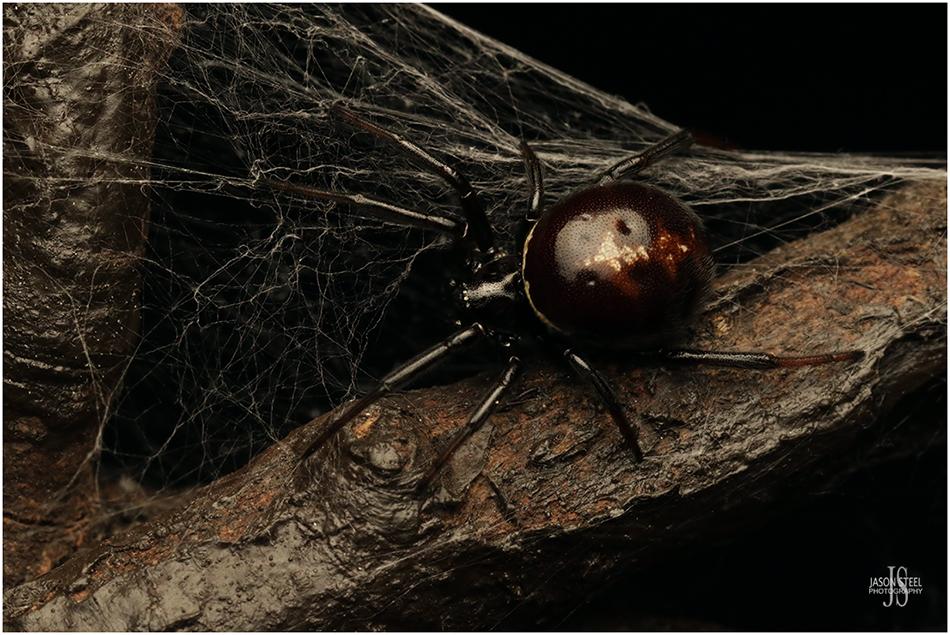
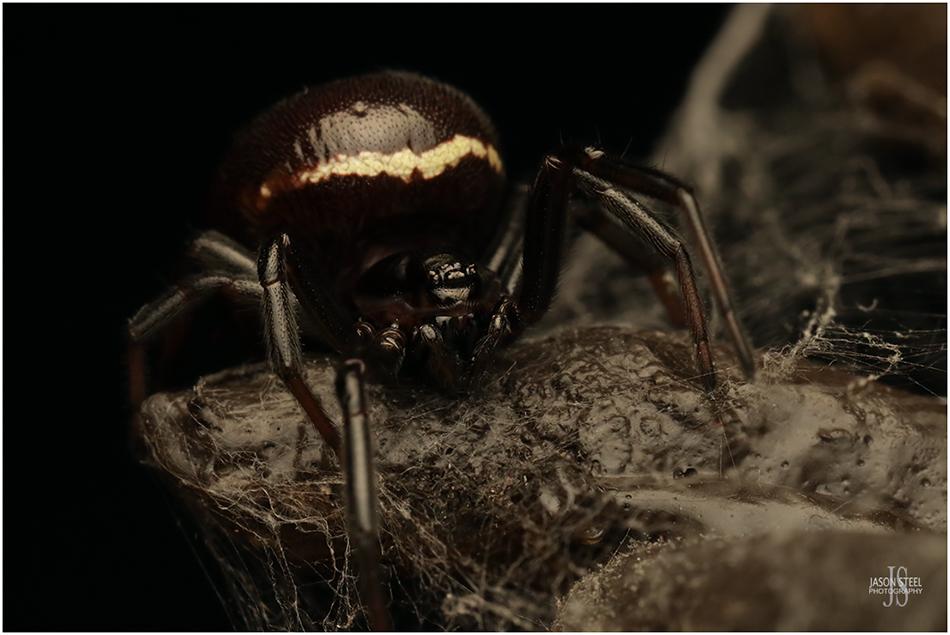
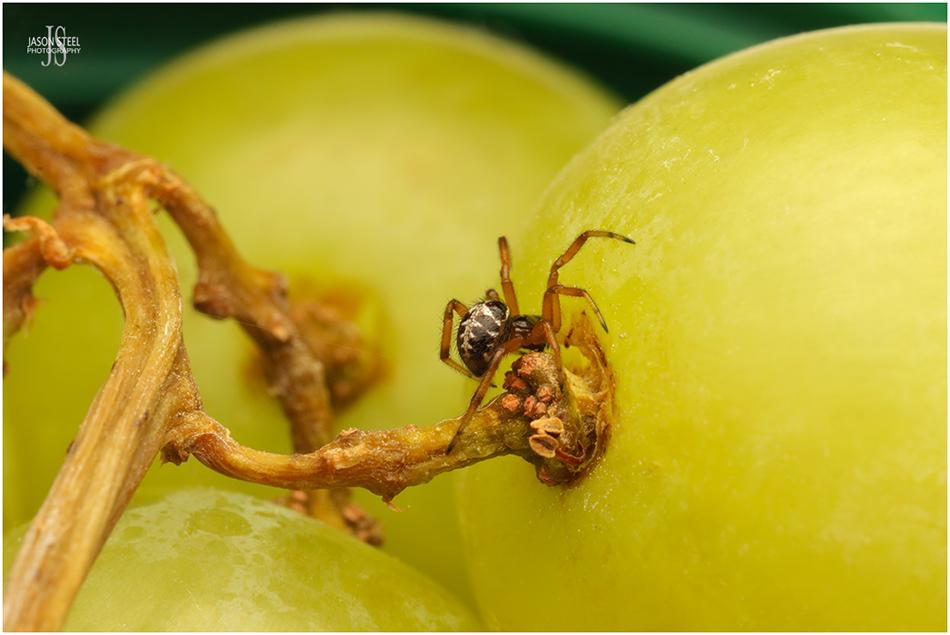
On 04/08/2023 Wendy Simnett, and her partner James Todd, from Great Yarmouth, found a tiny juvenile Steatoda paykulliana in a punnet of Spanish Grapes. The spiderling had a body-length that measured just over 2.5mm. This is the smallest specimen I have seen arrive in the UK, and it did well to survive being kept in a refrigerator. As a non-native species, especially one that isn't established in the UK, the spider could not legally be released into the wild so it was sent to me on 8th August 2023 to be raised in captivity. - LINK
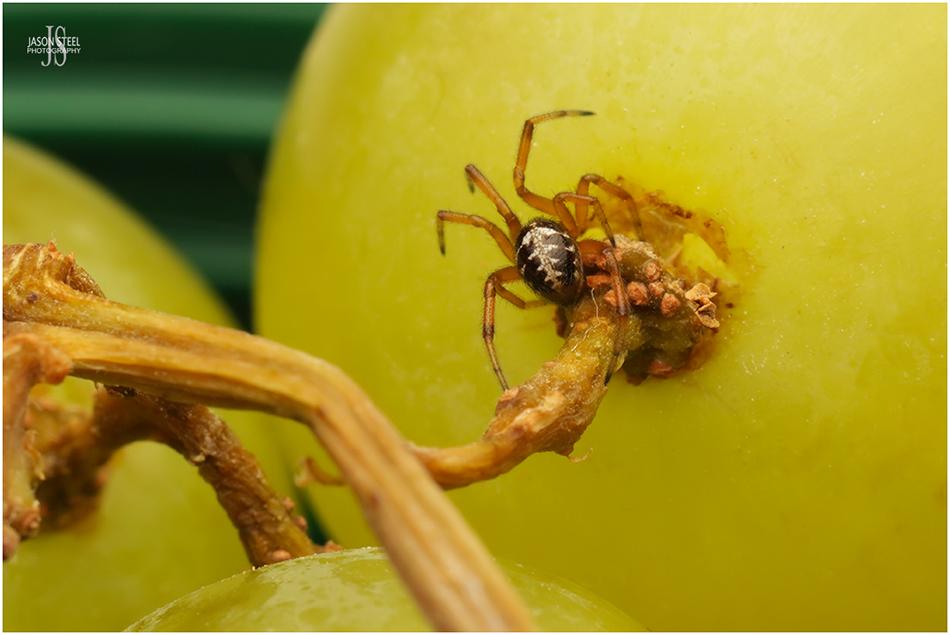
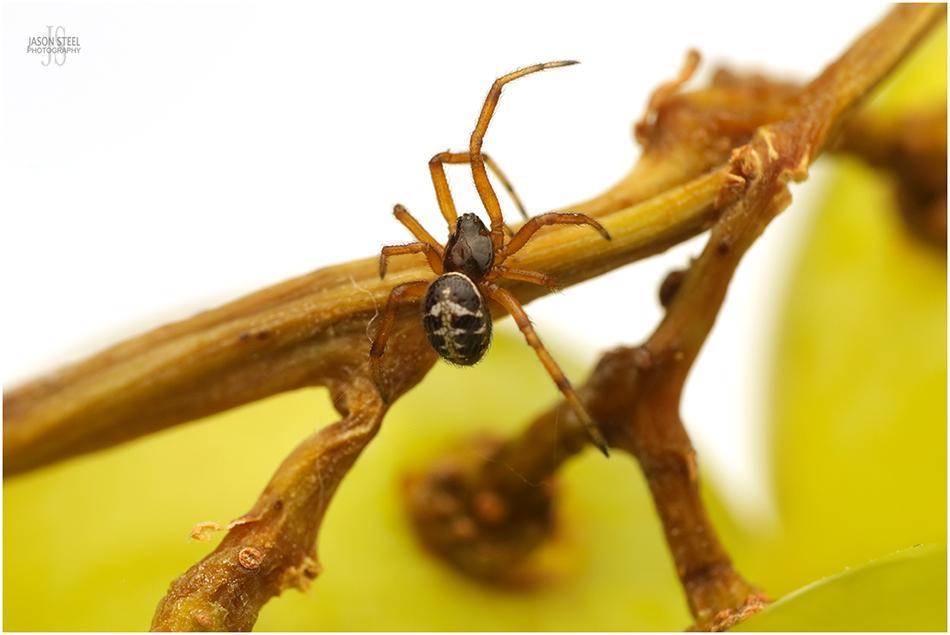
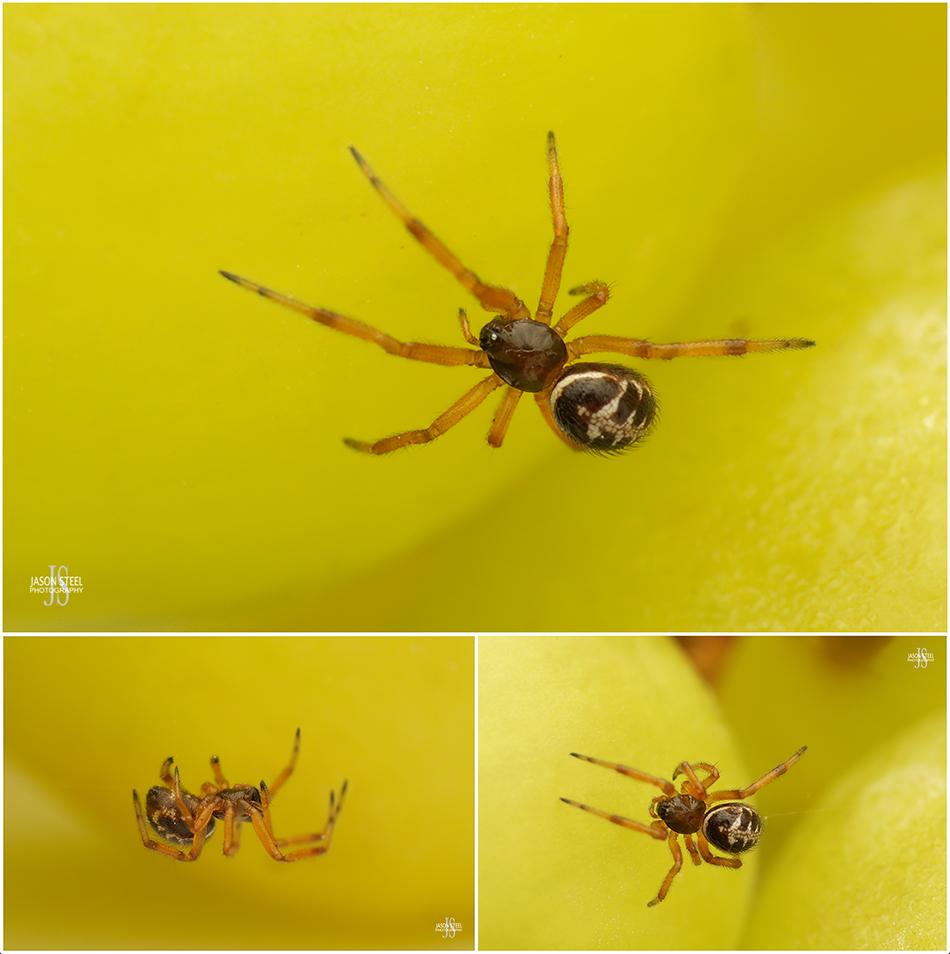
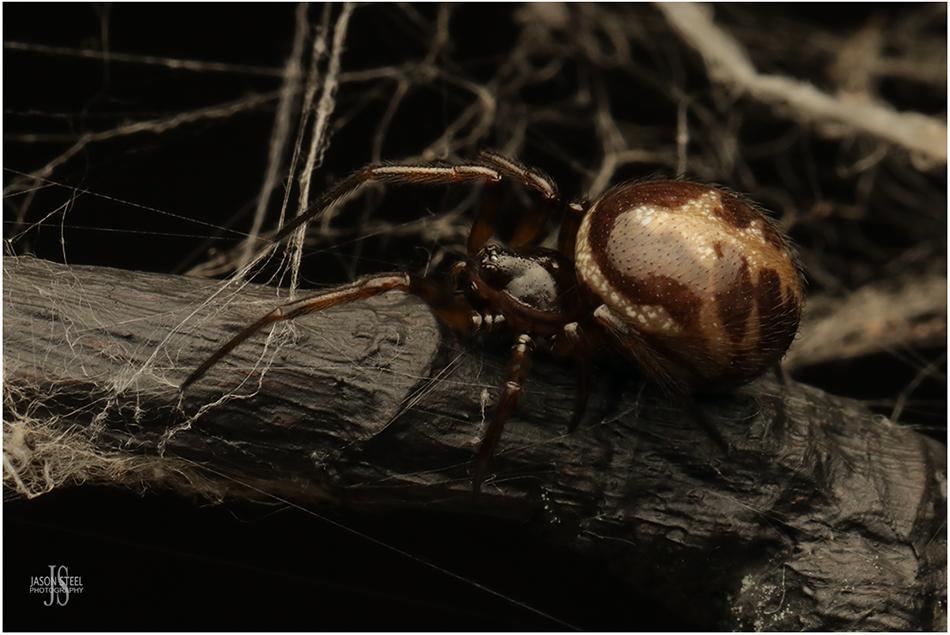
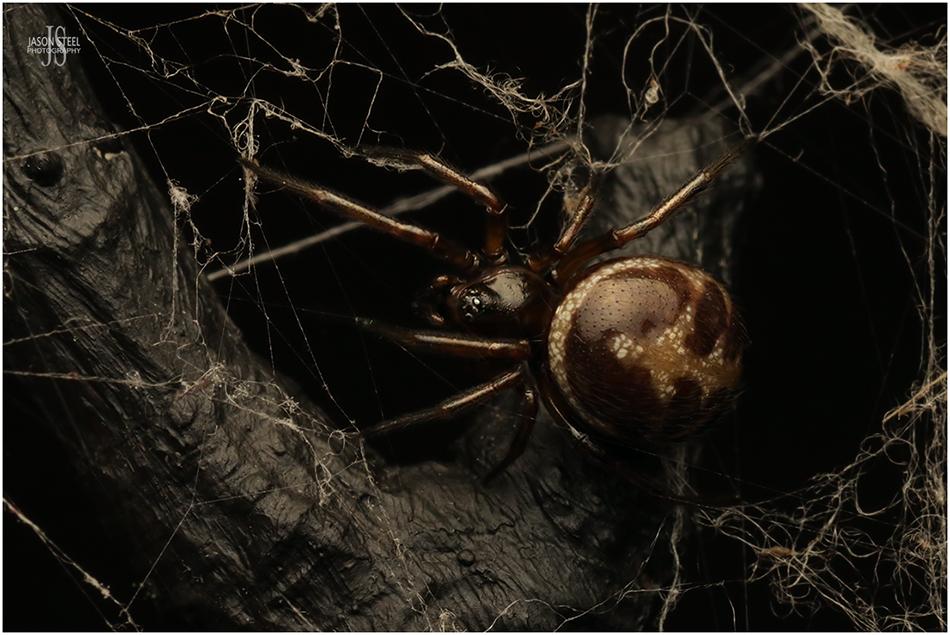
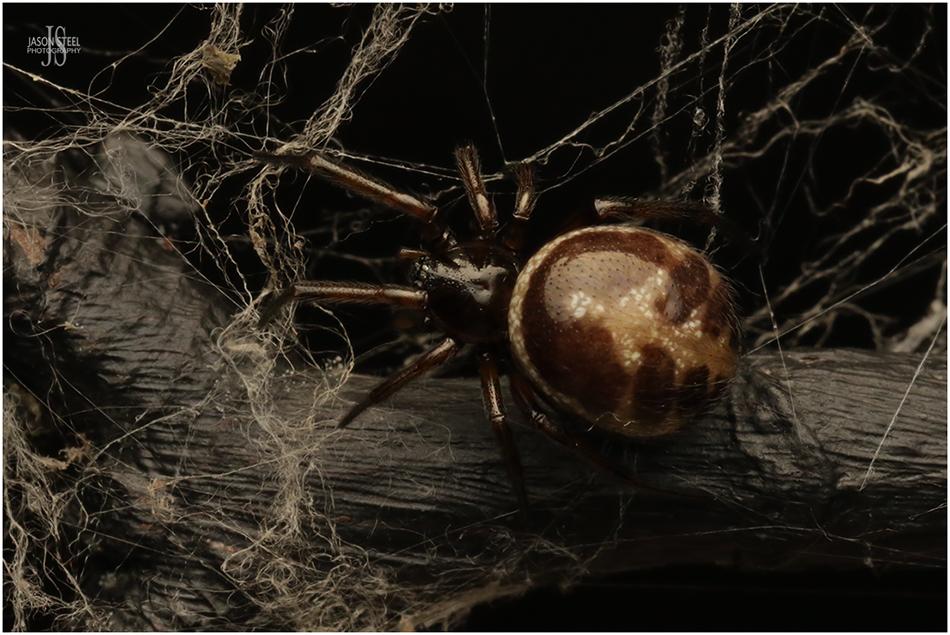
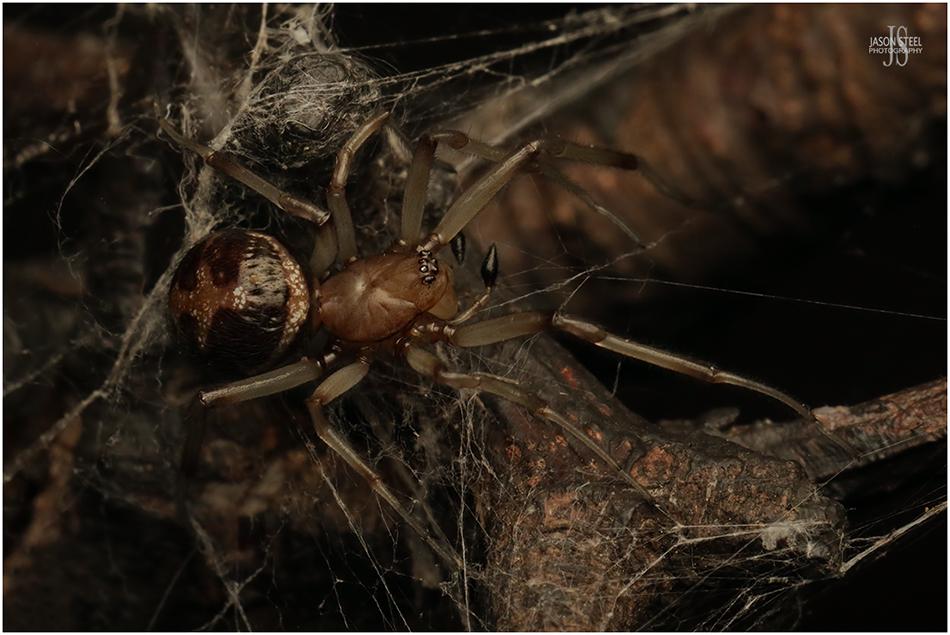
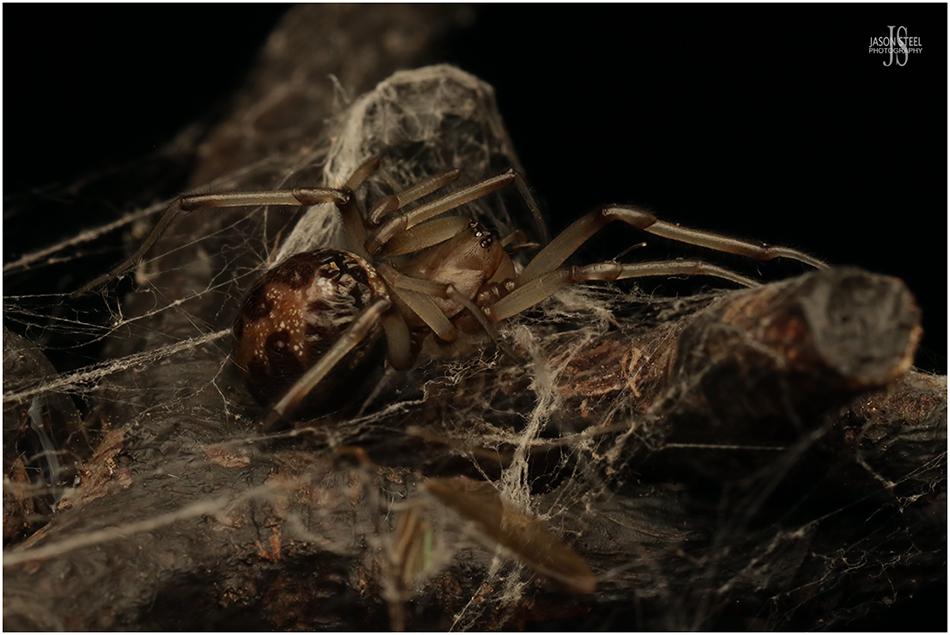
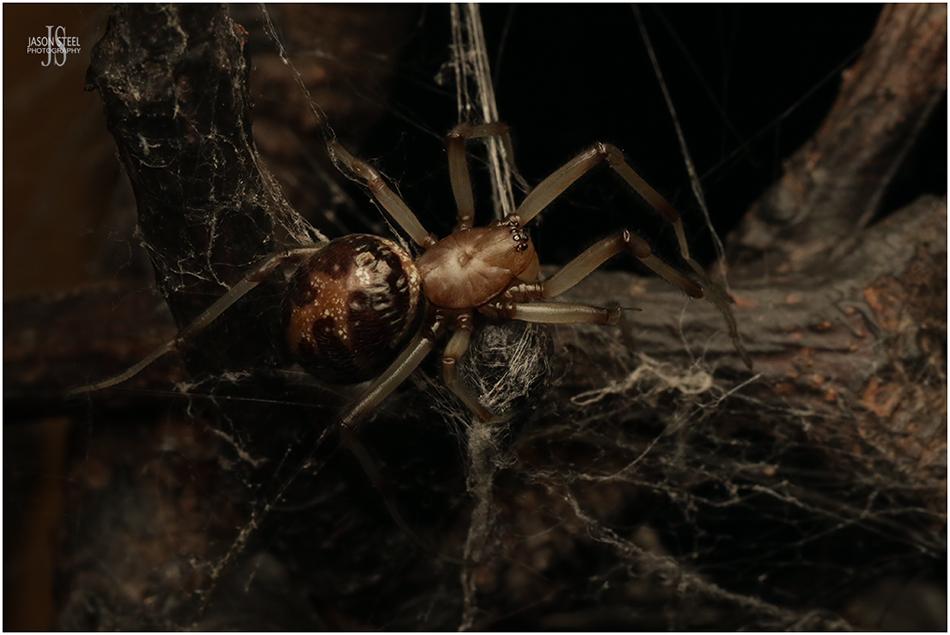
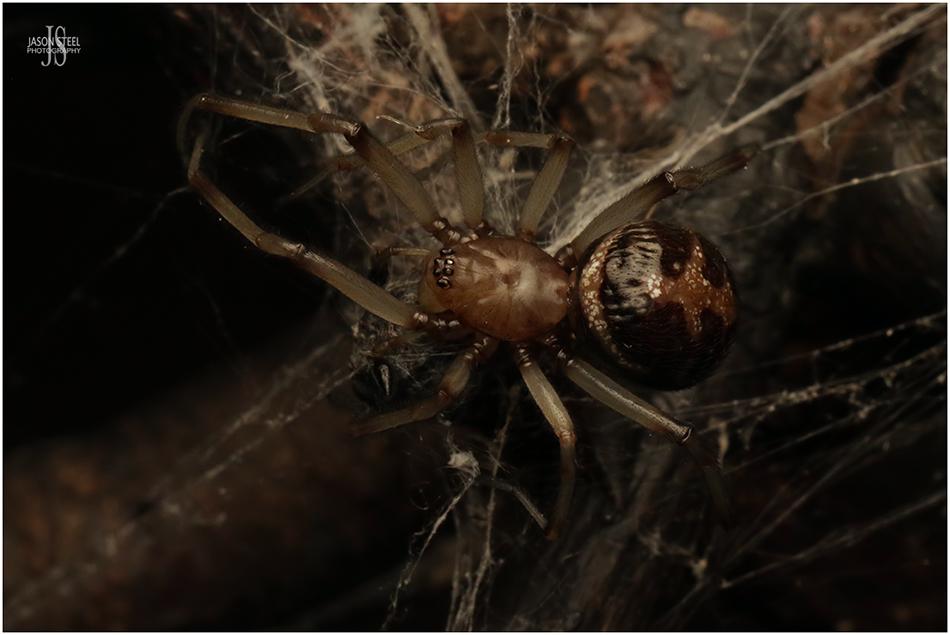
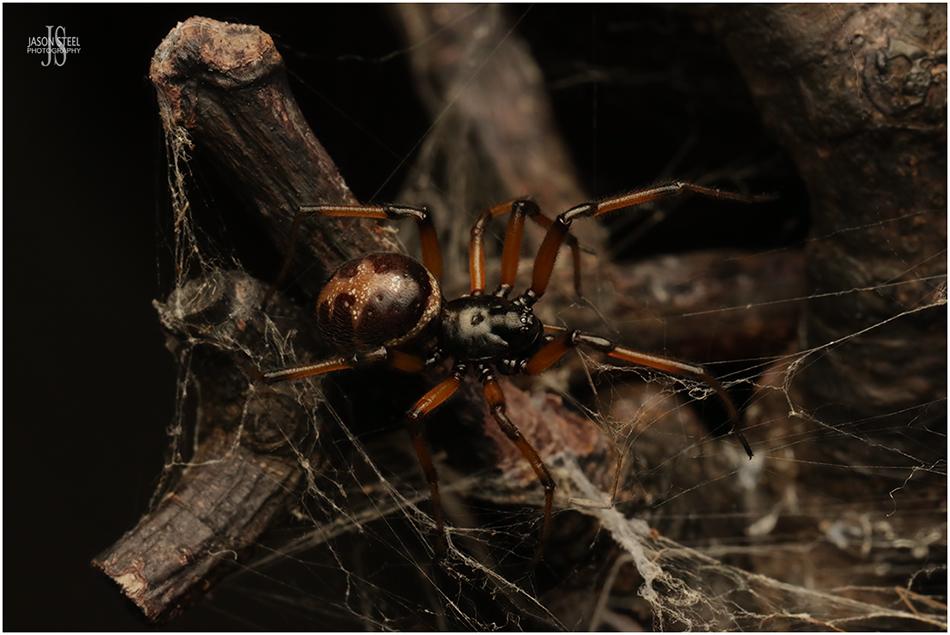
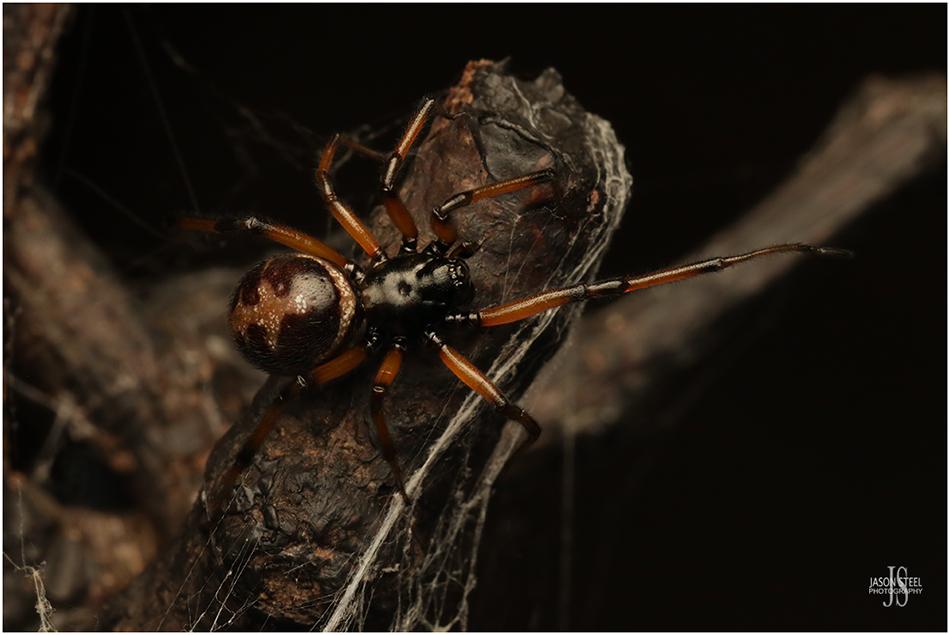
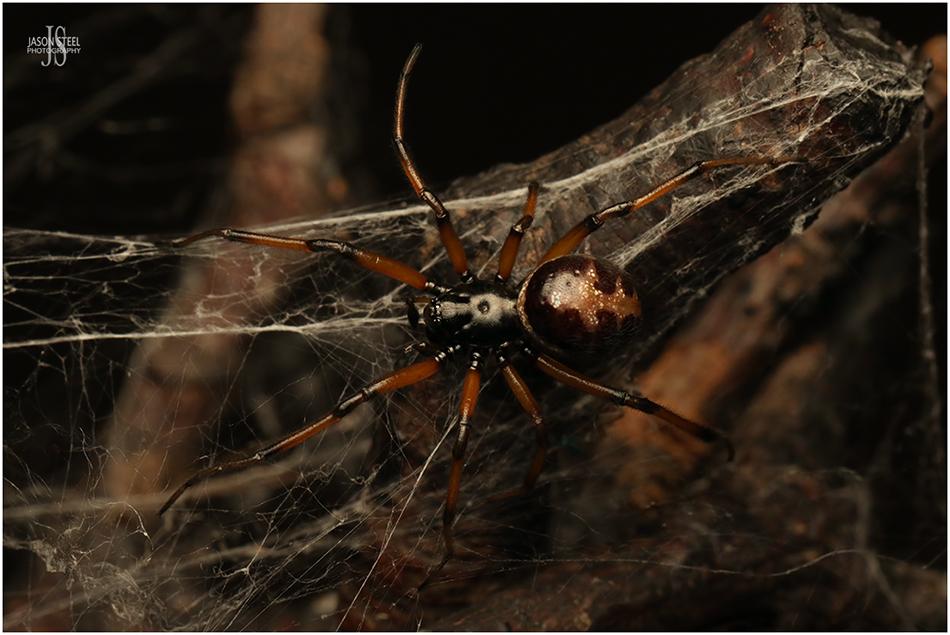
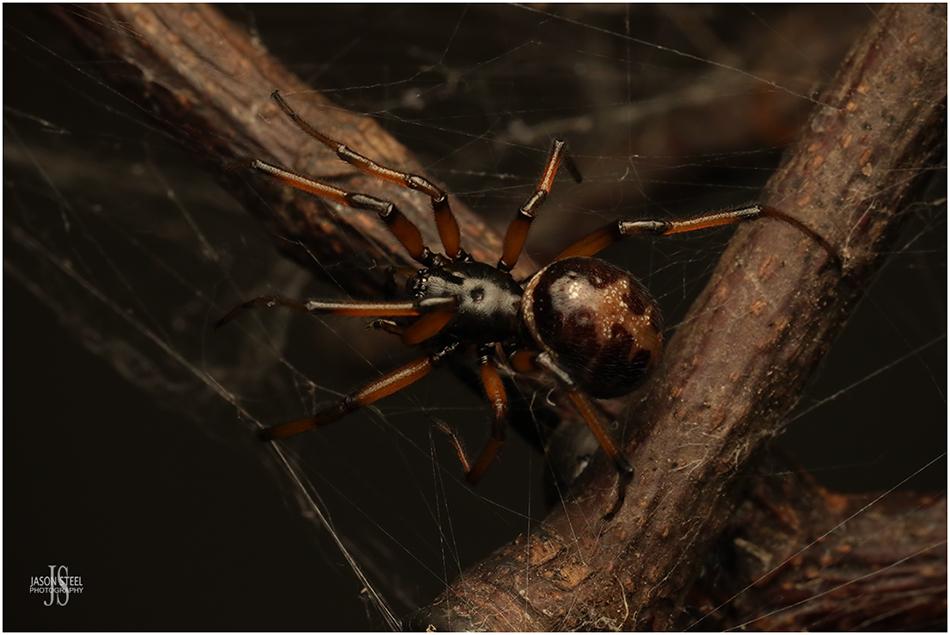
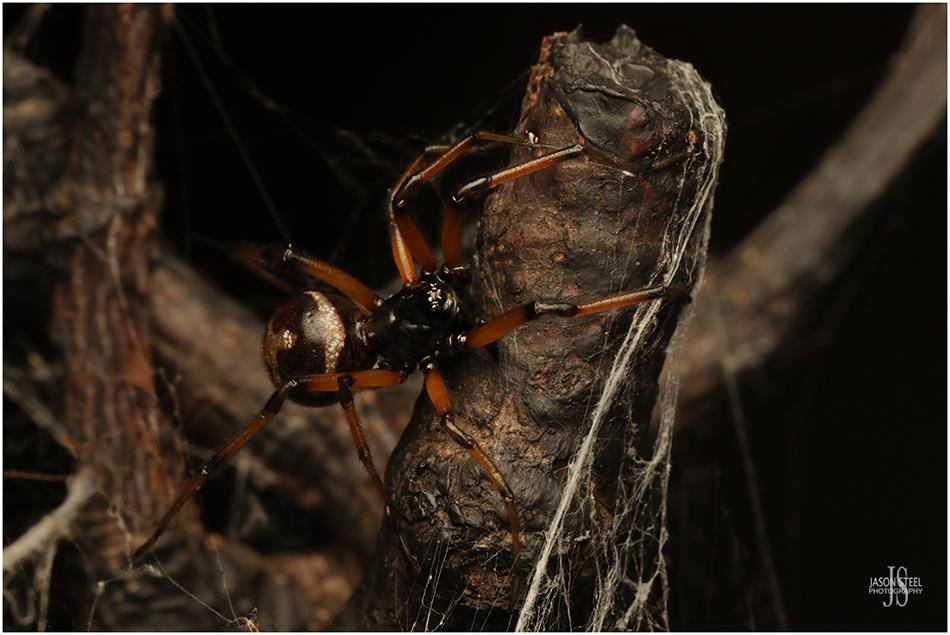
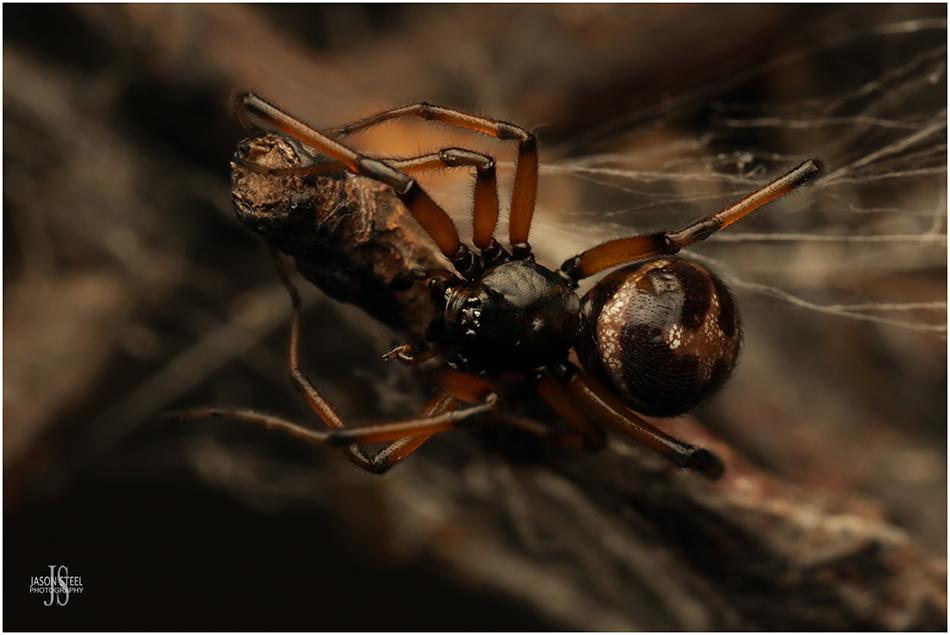
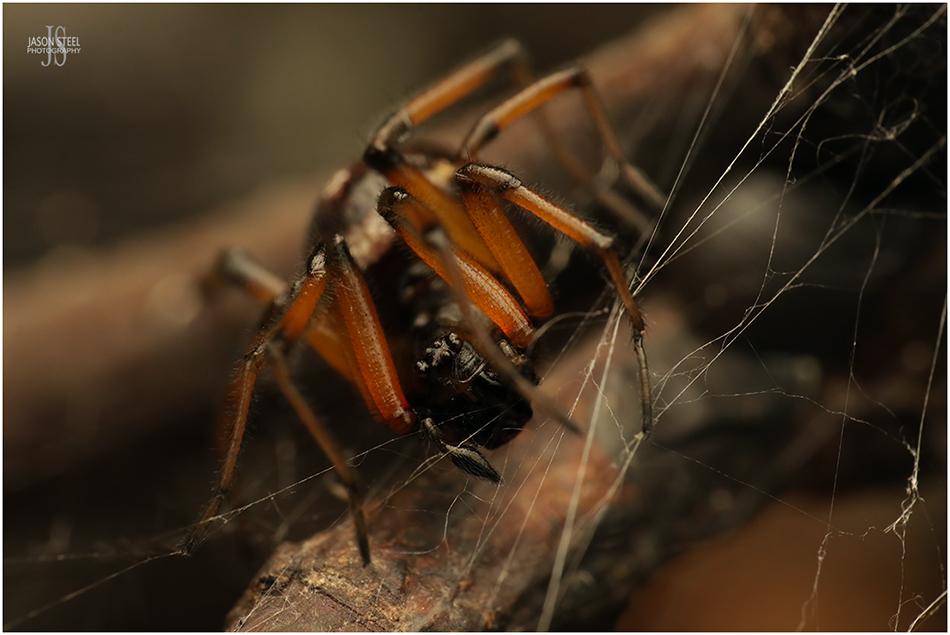
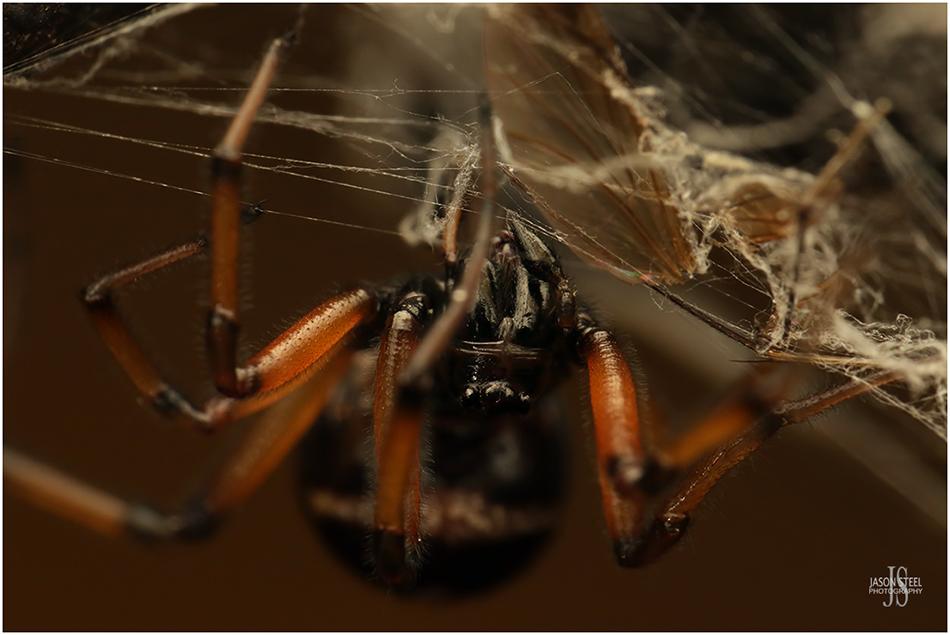
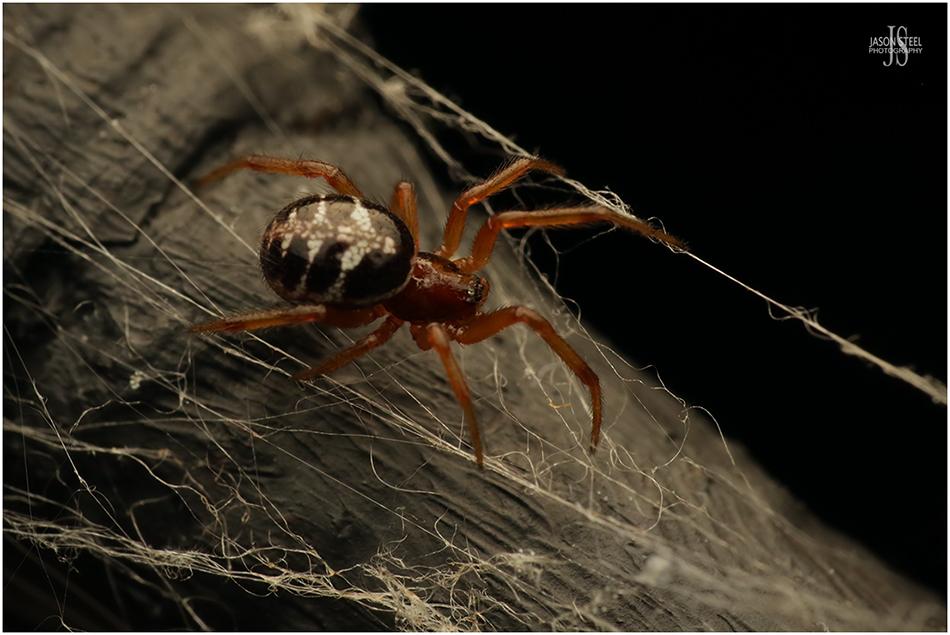
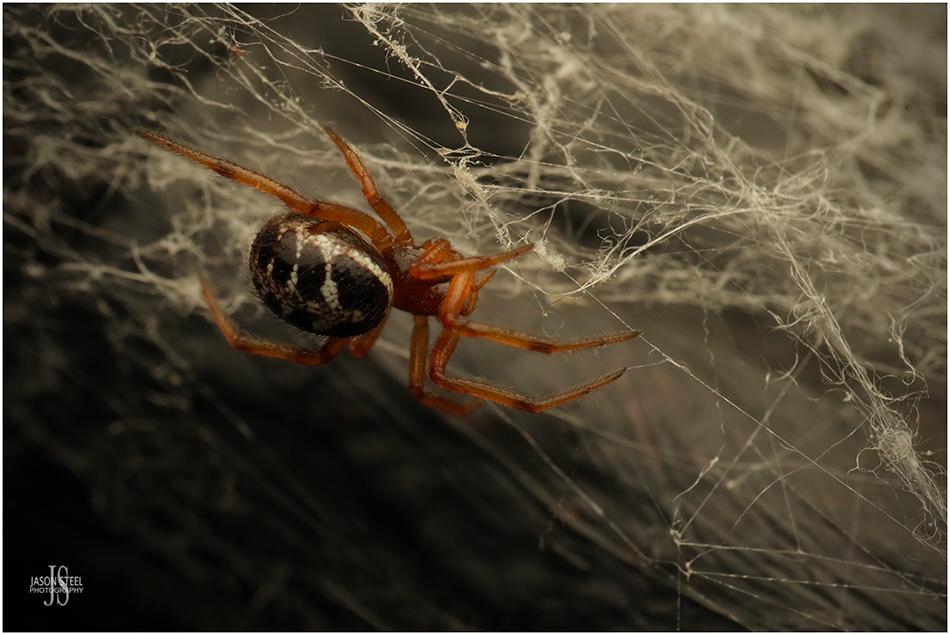
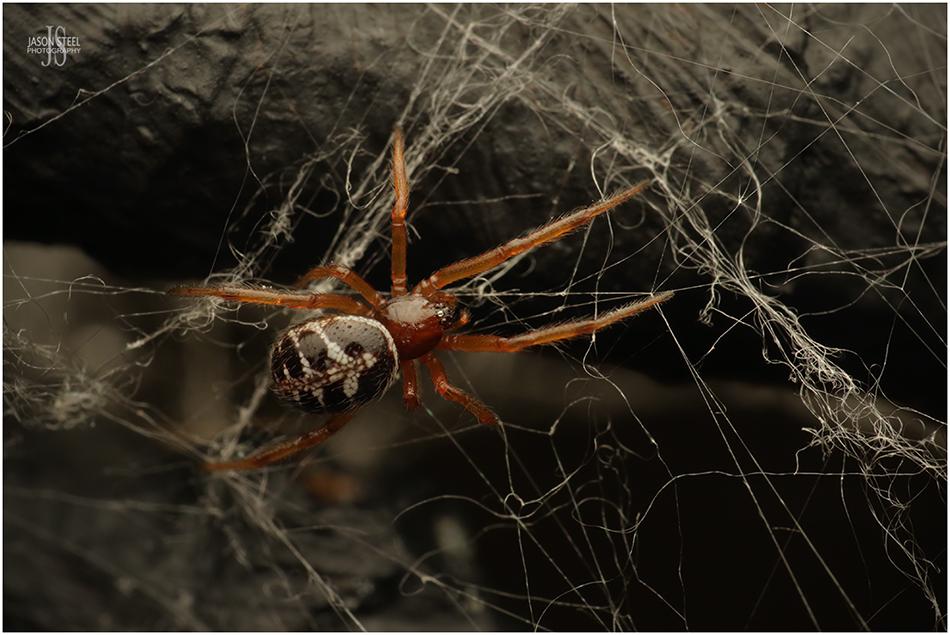
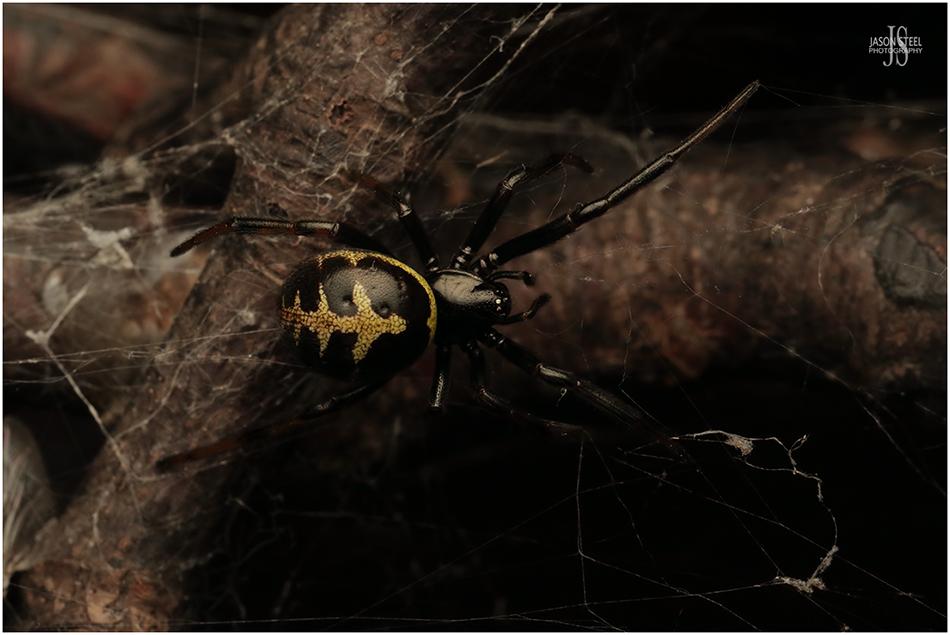
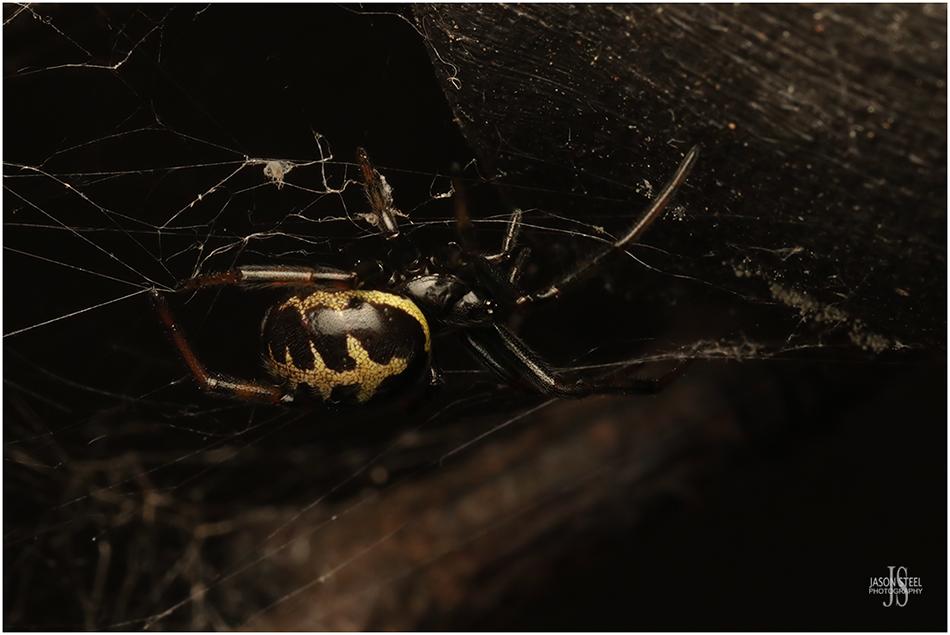
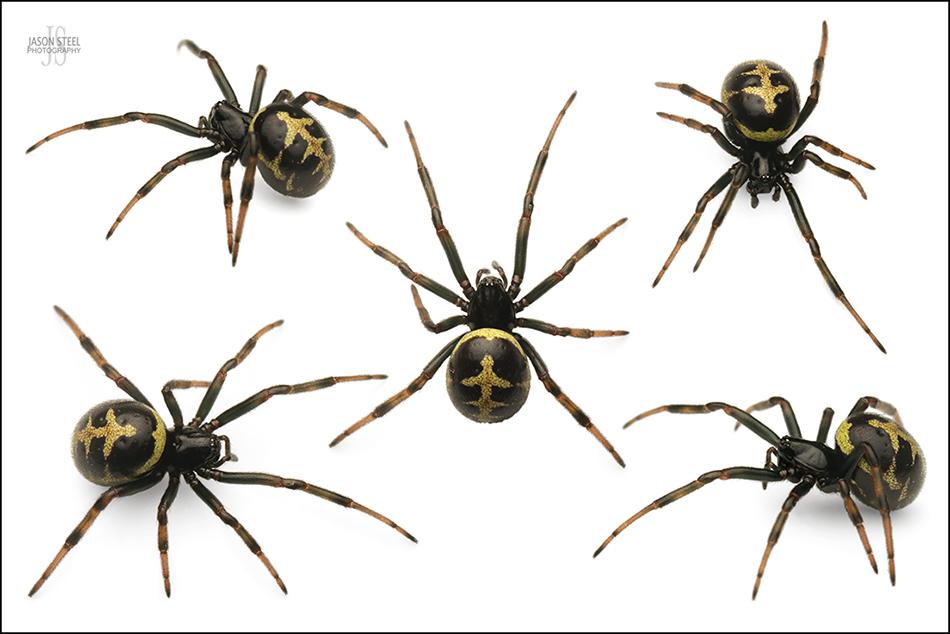
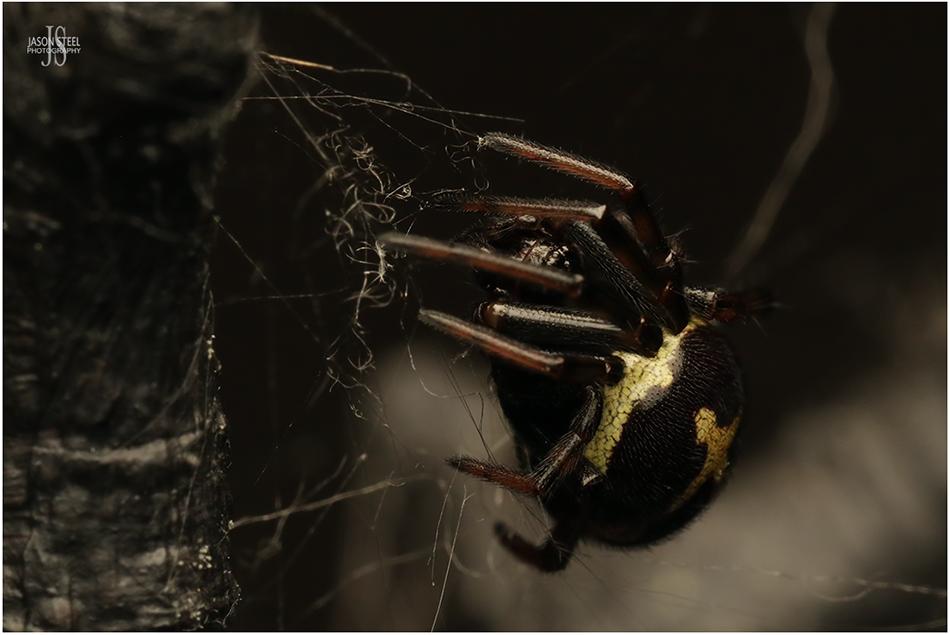
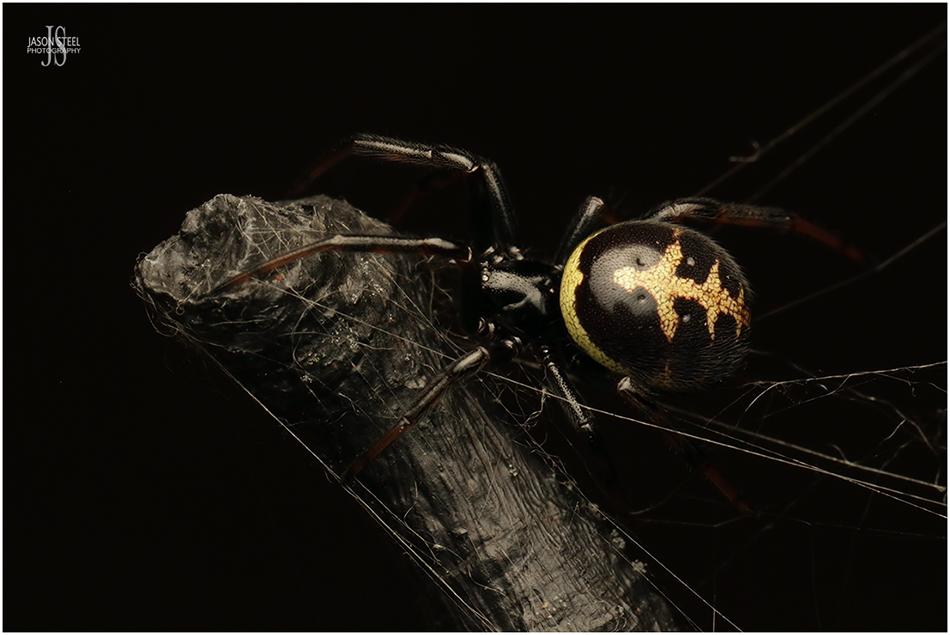
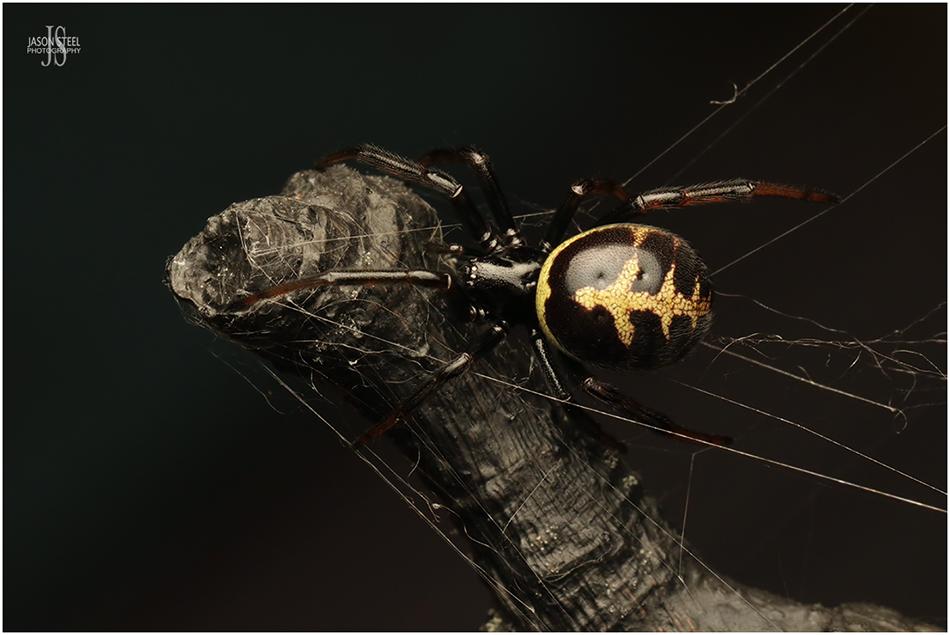
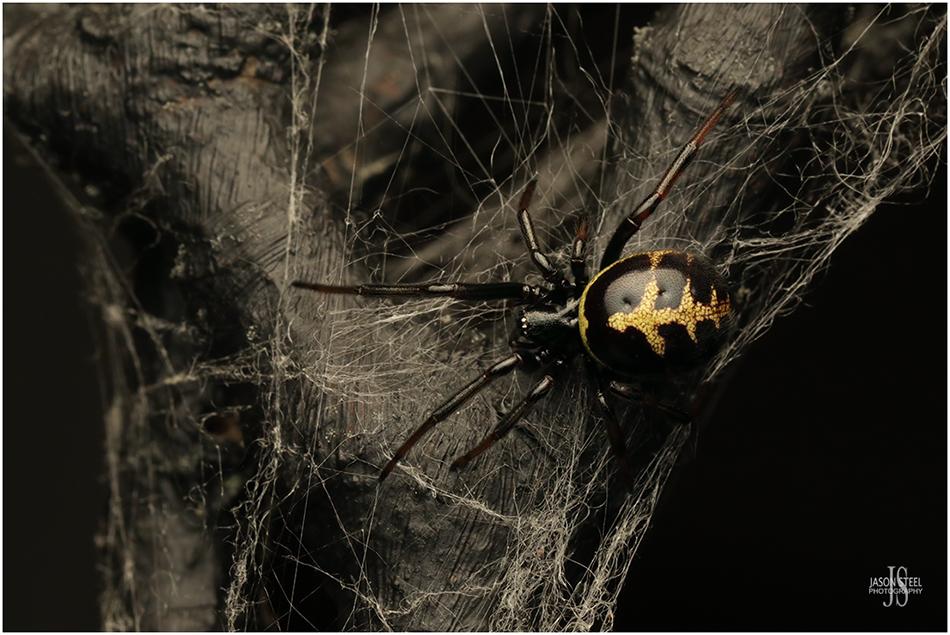
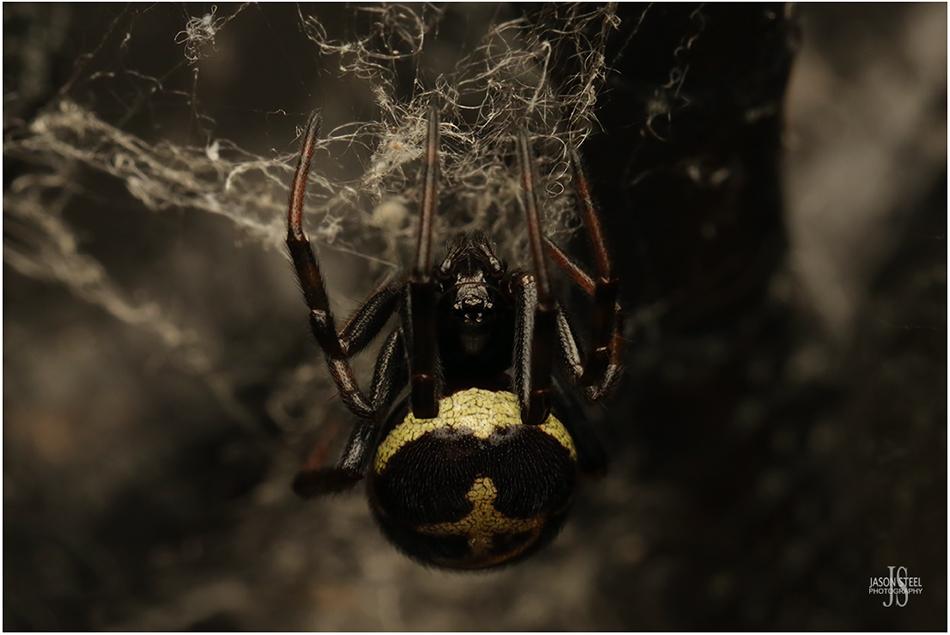
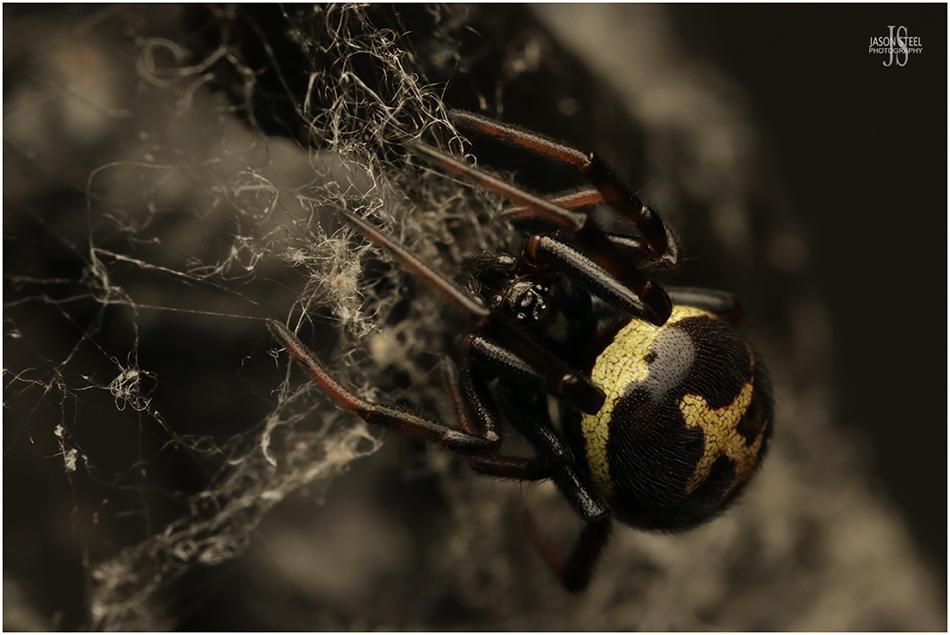
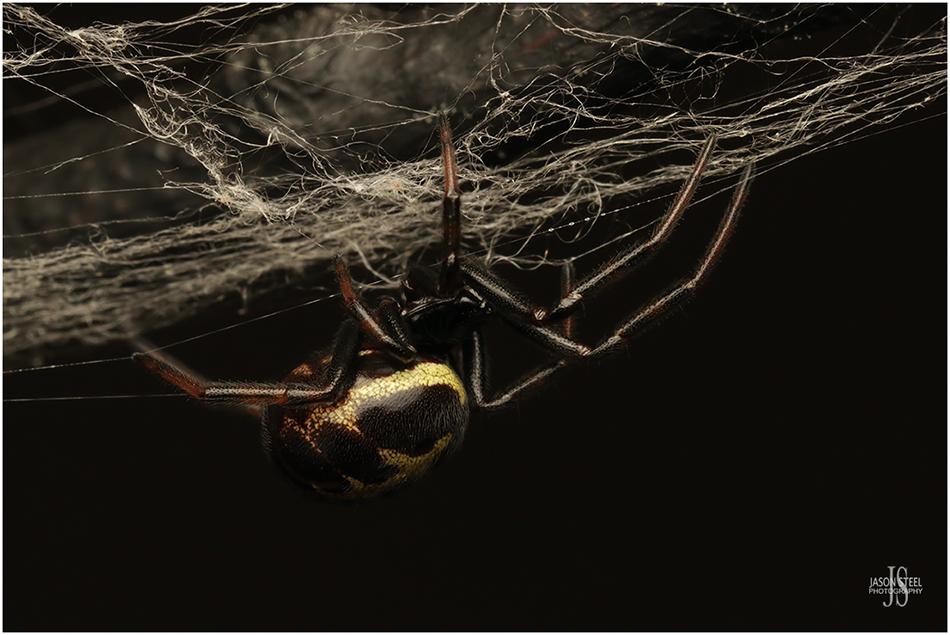
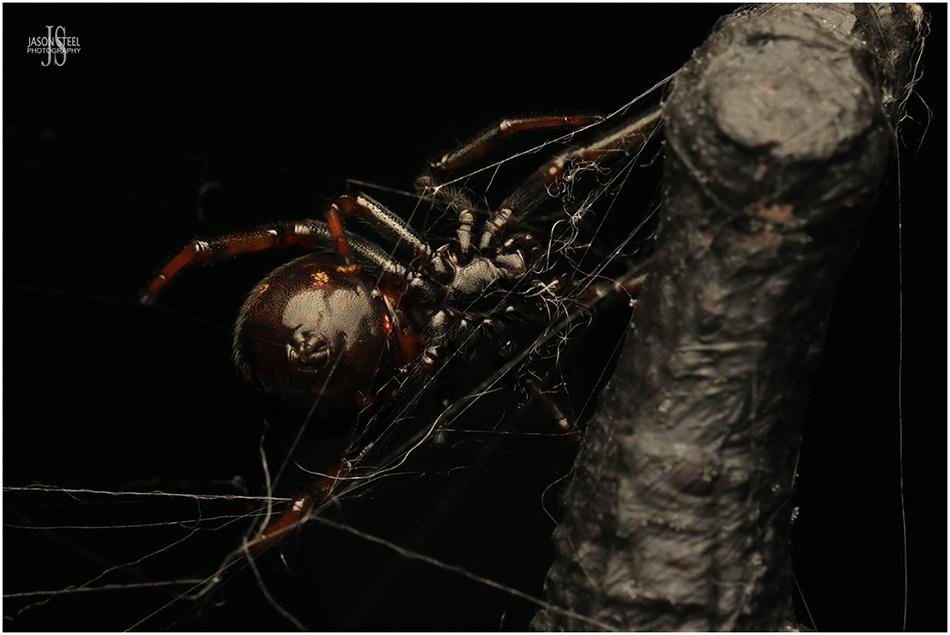
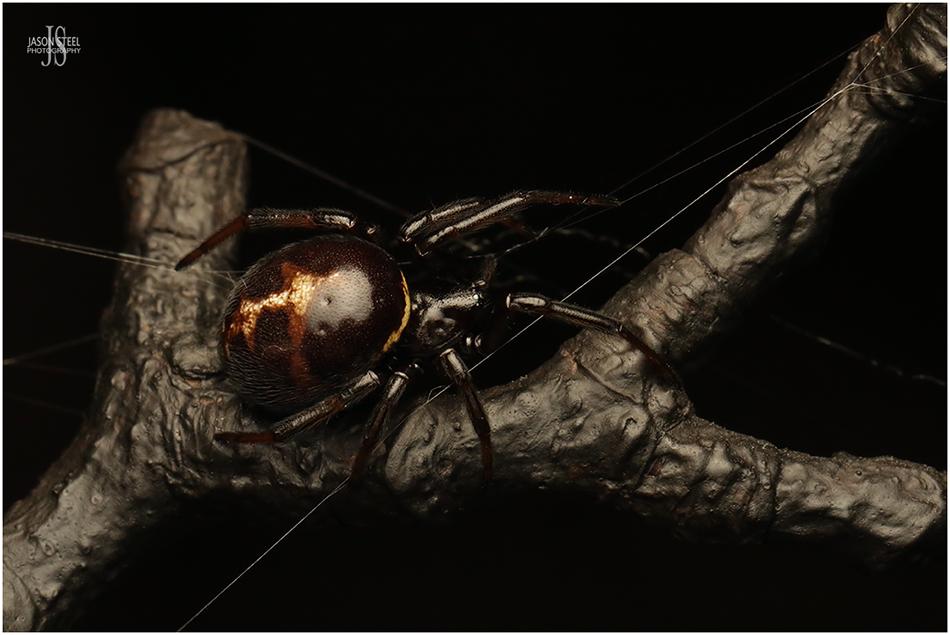
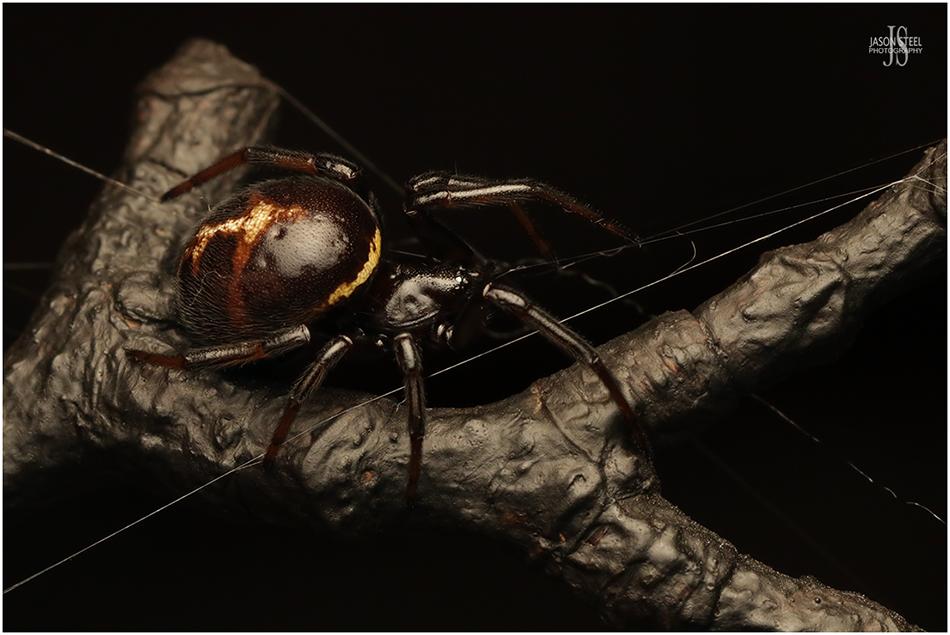
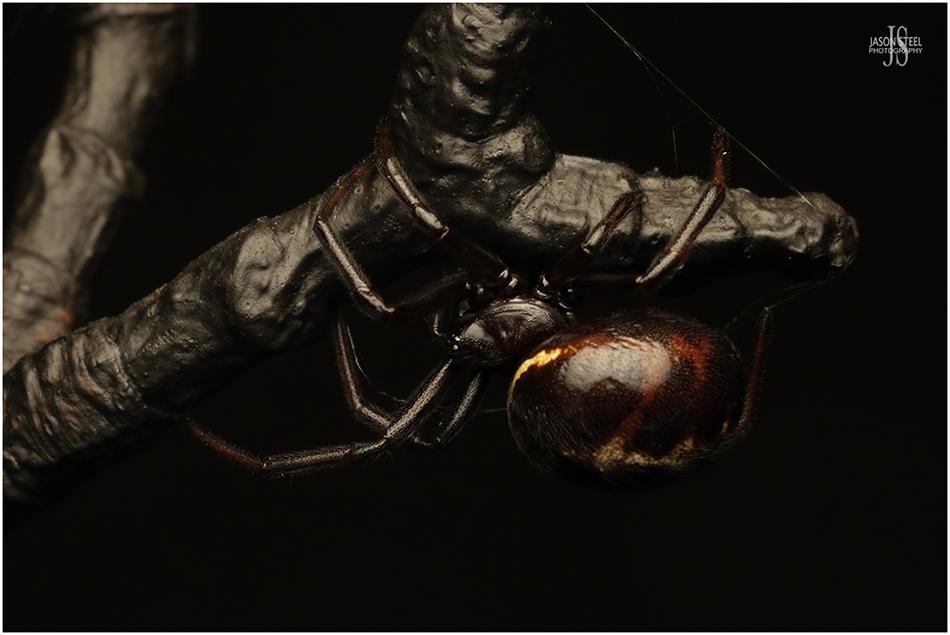
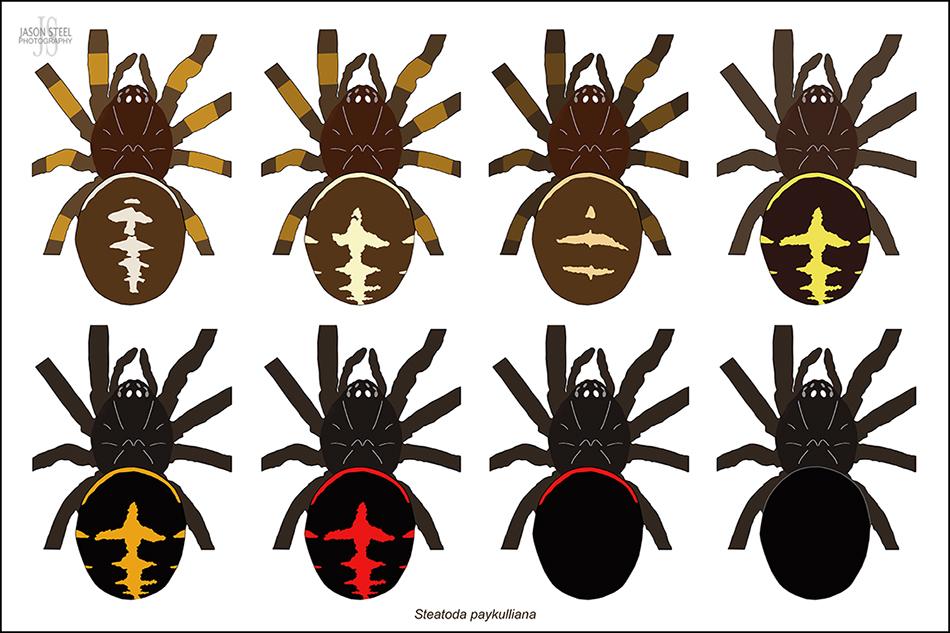
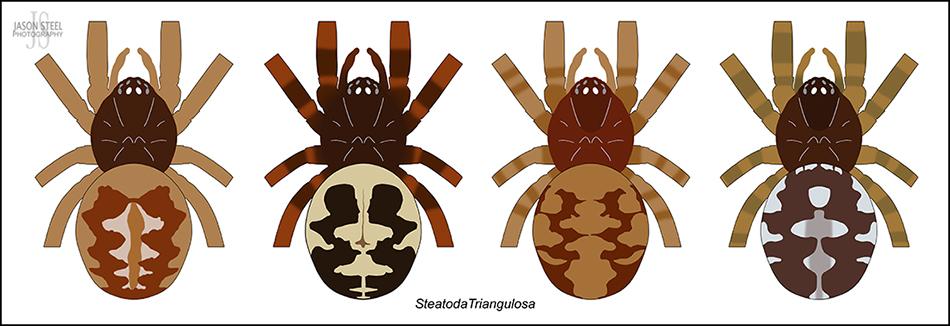
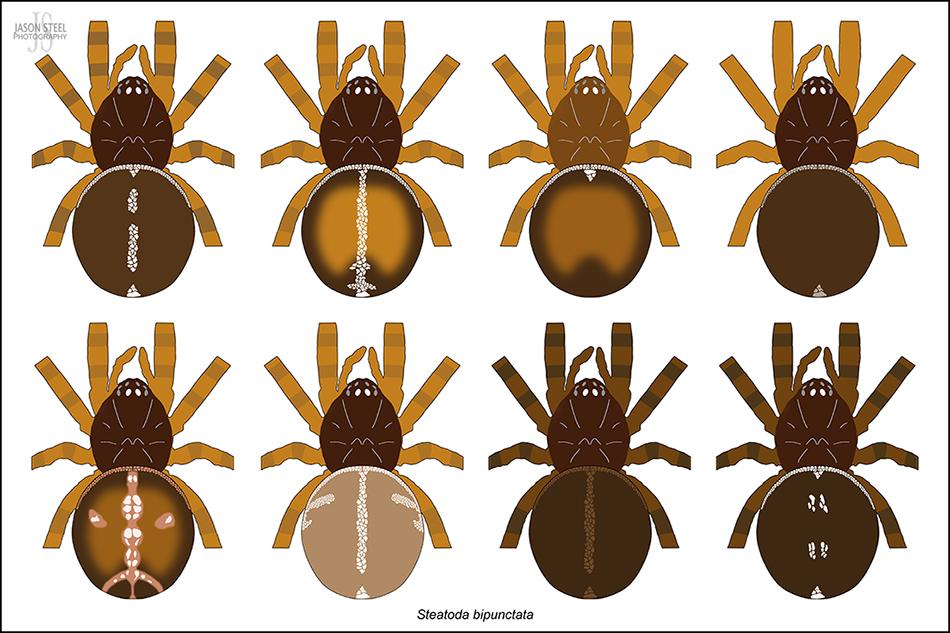
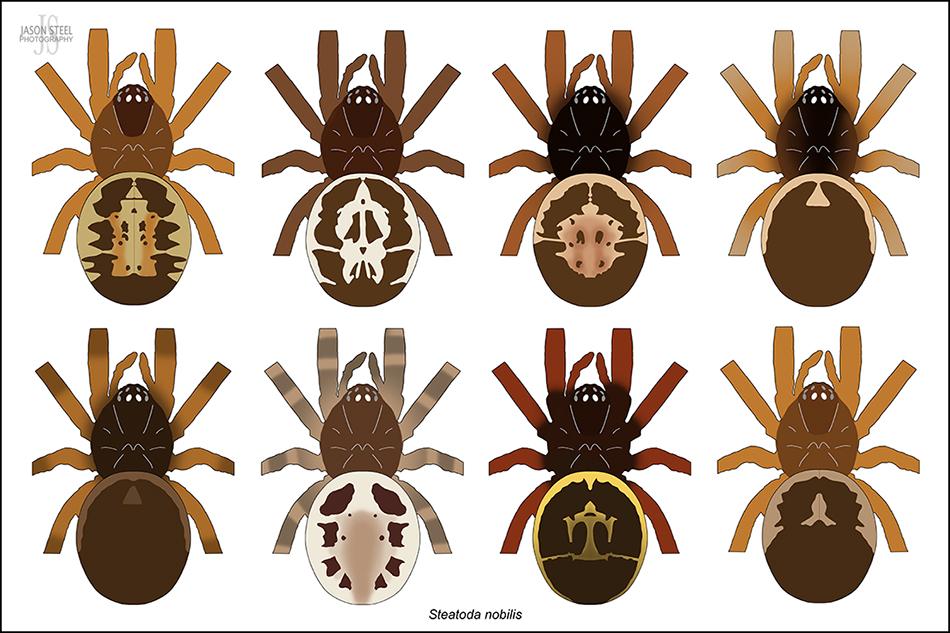
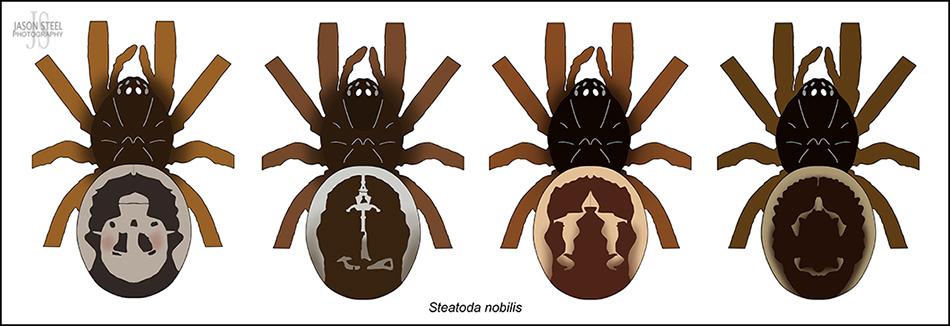
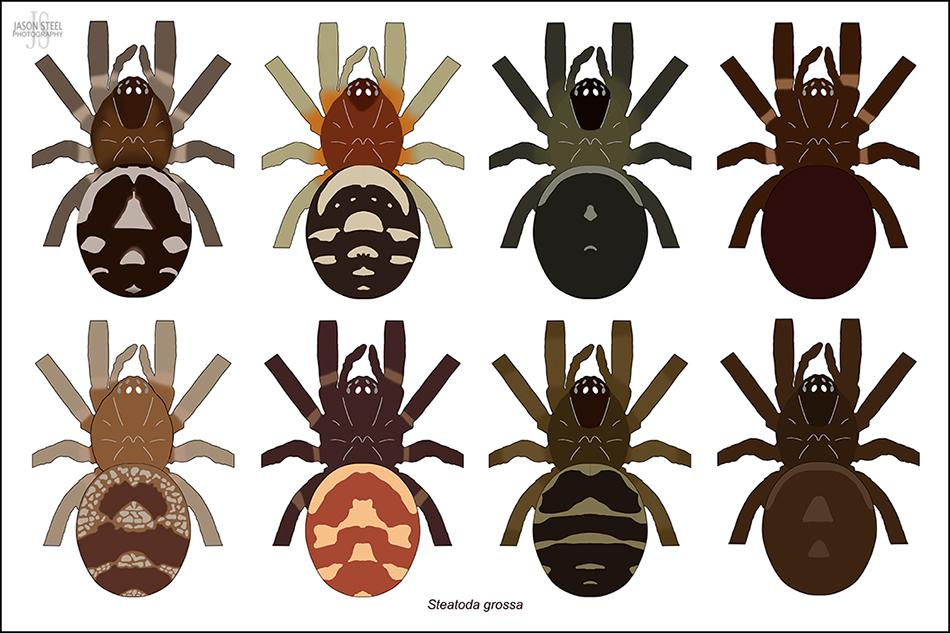
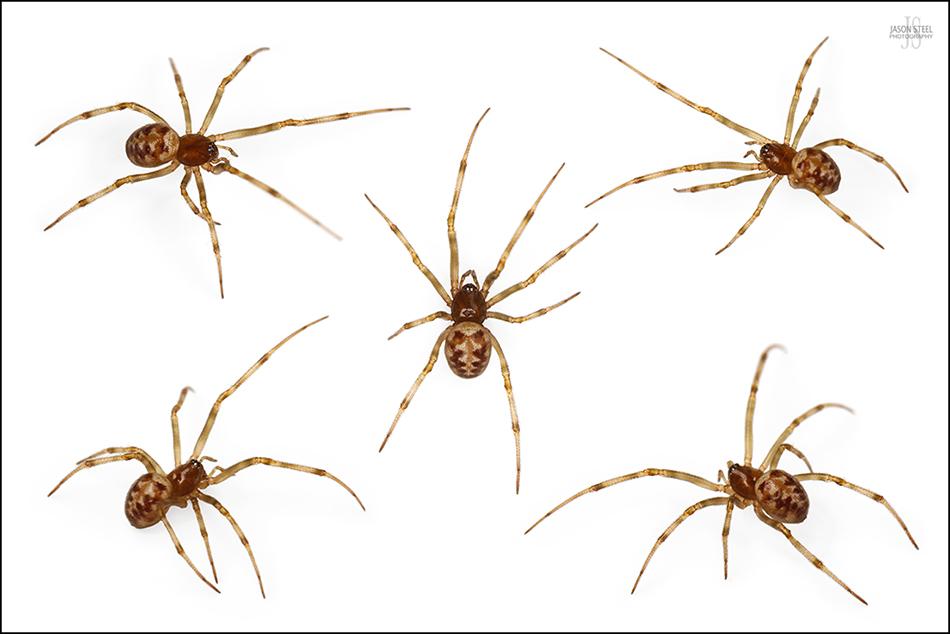
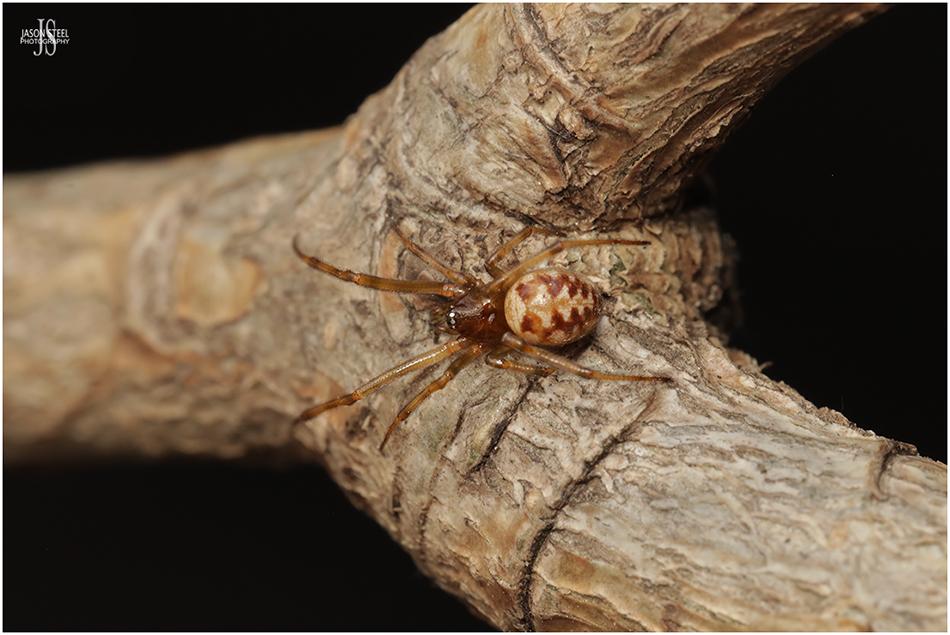
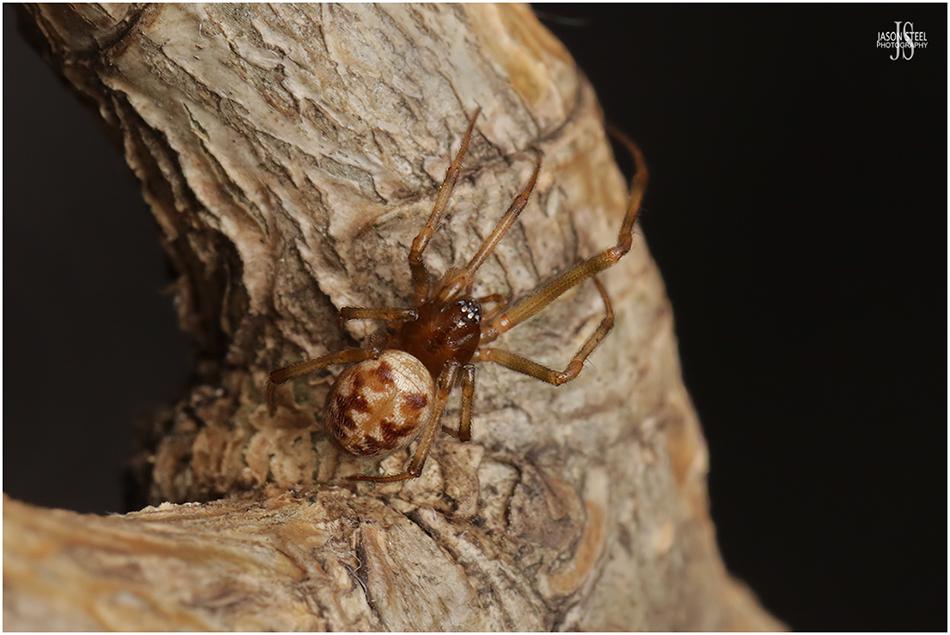
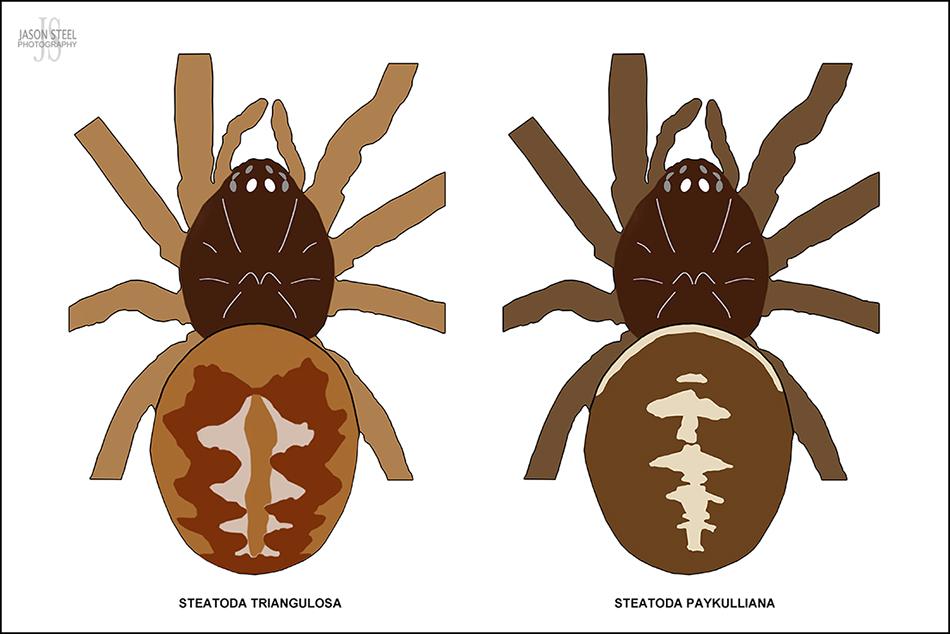
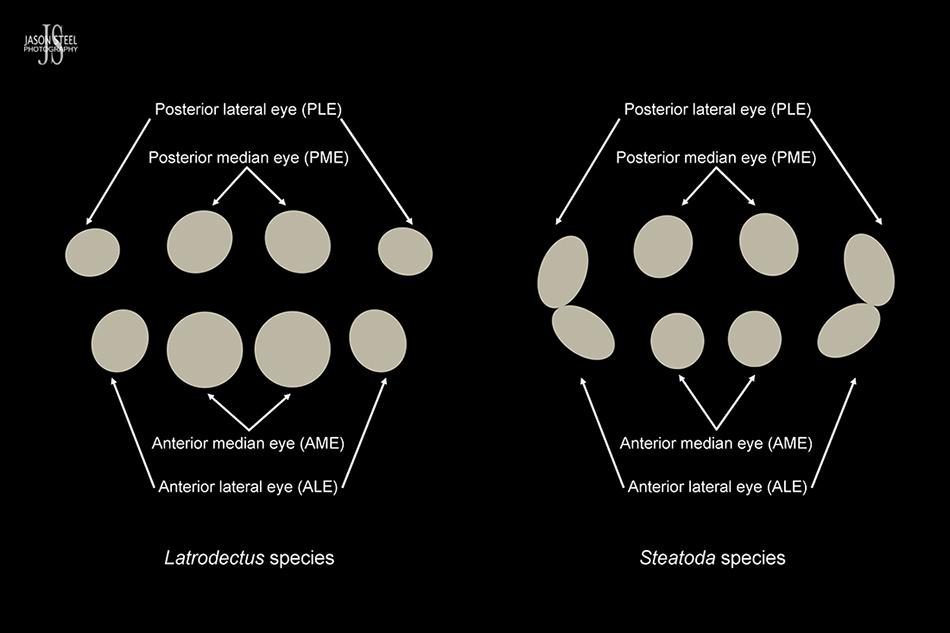
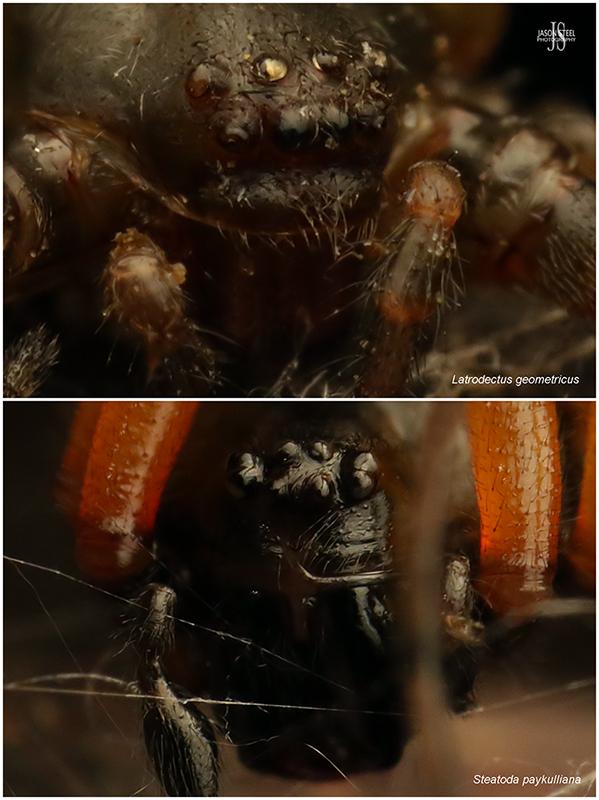
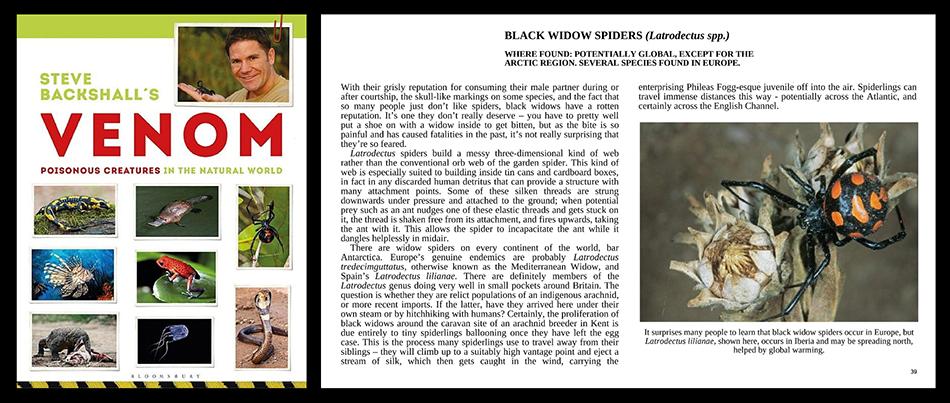
Brown Widow, Latrodectus geometricus = .43 mg/kg (in Florida) & .223 mg/kg (in Venezuela) LINK
Western Black Widow, Latrodectus hesperus = .84 mg/kg (IV) LINK / 0.64 mg/kg LINK
Southern Black Widow, Latrodectus mactans = 1.39 mg/kg (IV) & .90 mg/kg (SC) LINK / 0.26 mg/kg LINK
Red Widow, Latrodectus bishopi = 2.2 mg/kg (could be IP) LINK
Northern Black Widow, Latrodectus variolus = 1.8 mg/kg (IP) LINK / 1.20–2.70 mg/kg LINK
These can be compared with the Mediterranean Black Widow, Latrodectus tredecimguttatus = 0.59 mg/kg LINK
19) On 16th November 2011 a live female Latrodectus geometricus was found in a skip containing cardboard packaging. It arrived in the UK hidden amidst imported Saytex Fire Safety equipment, which had been stored at both Magnolia, Arkansas, and Dallas, Texas, in the USA.
20) On 14th November 2007 a female Latrodectus variolus arrived in West Yorkshire hidden amidst imported grapes from California, USA.
21) During the summer of 2003 an unidentified juvenile female Latrodectus specimen was donated to the museum after it arrived in the UK in a car tyre that had been imported from California, USA.
22) On the 17th June 2011 the BBC reported on an adult female Black Widow spider being found at Chatham Dockyard, in Kent, amidst imported cars. The spider was taken away to a local vet in Maidstone, who passed the spider onto London Zoo. The spider went on to produce an egg-sac. The BBC's article was full of misinformation, such as claiming that male Black Widows are not venomous, which they are. Kent Online reported the story more accurately.
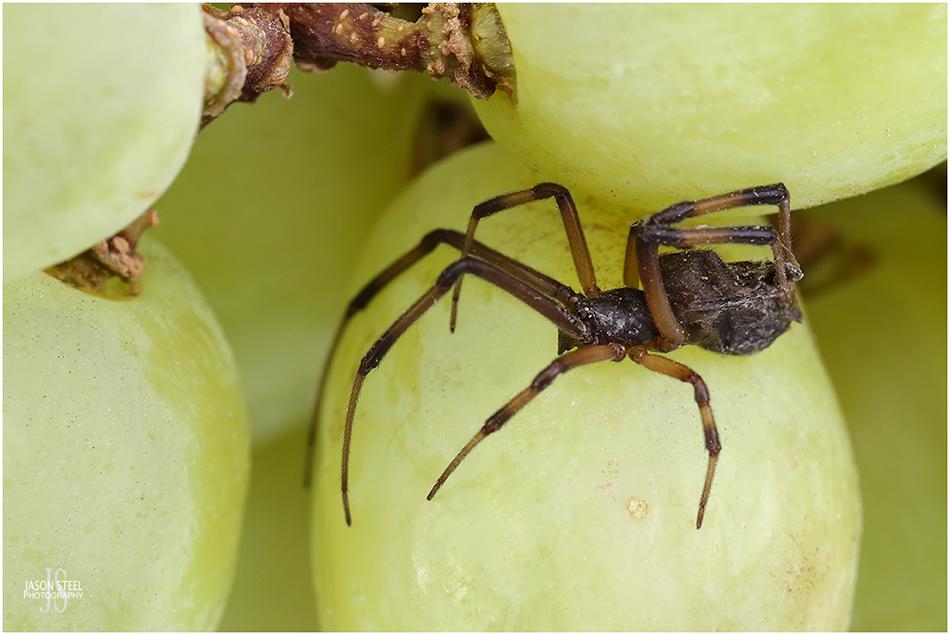
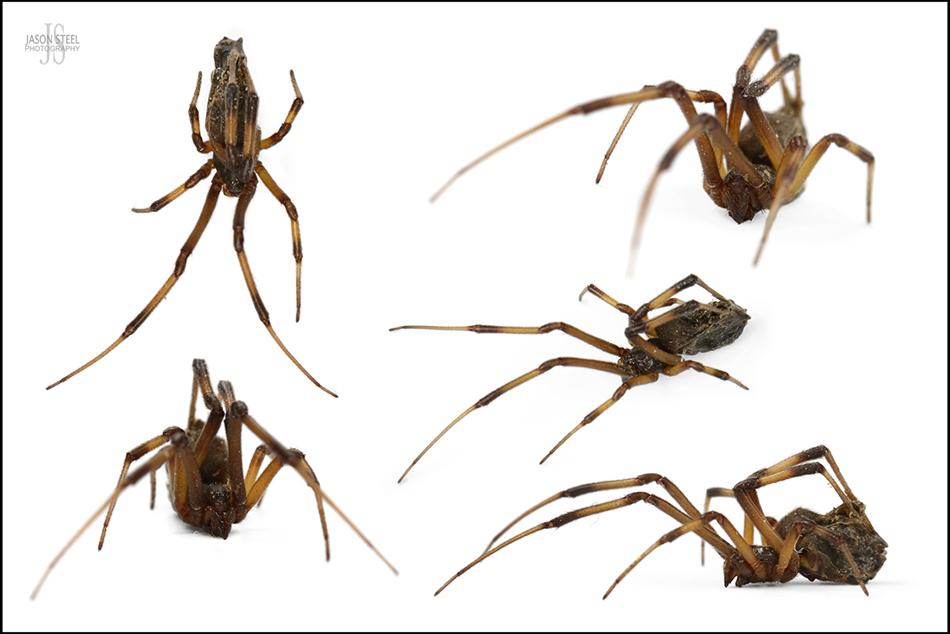
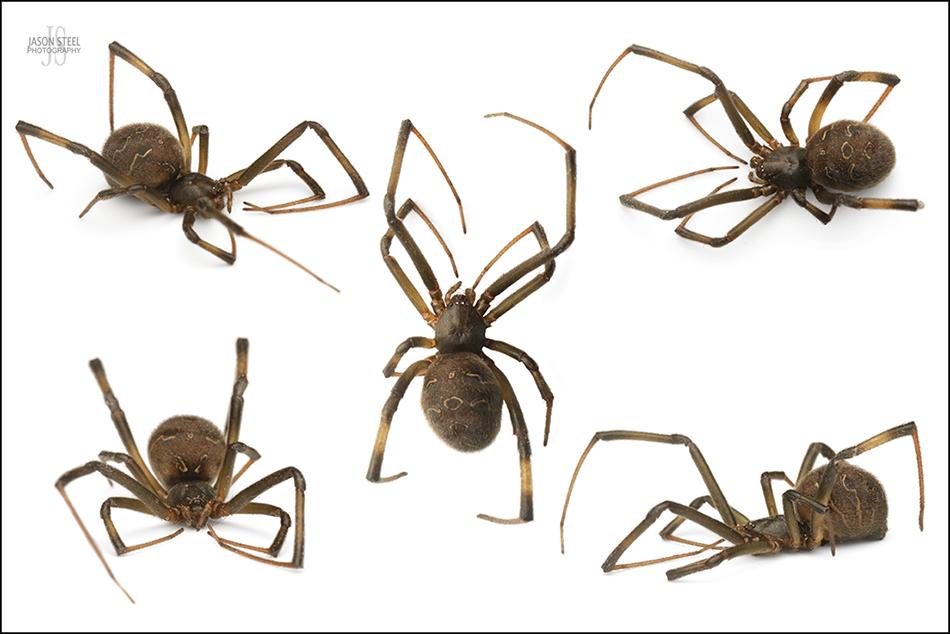
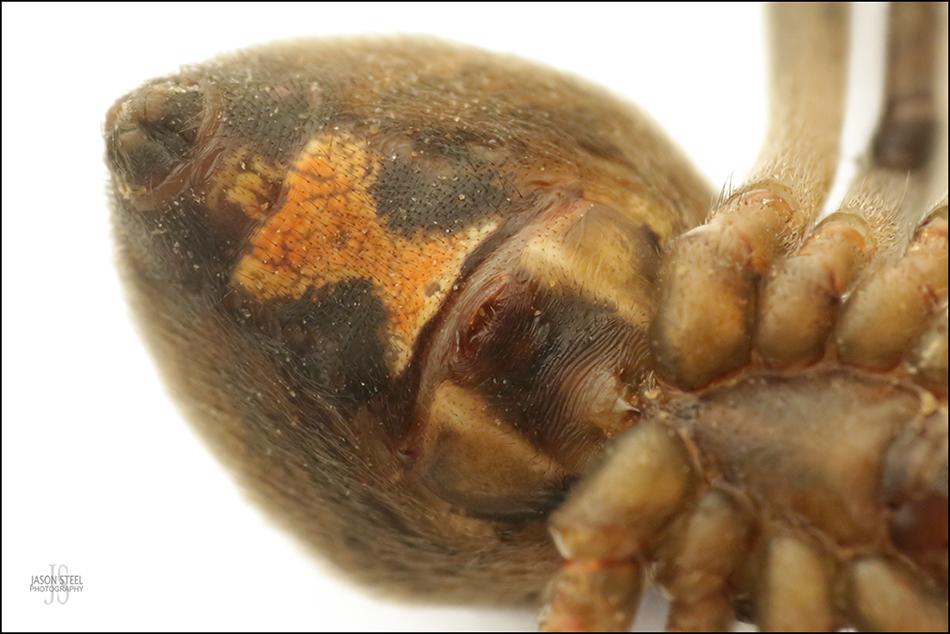
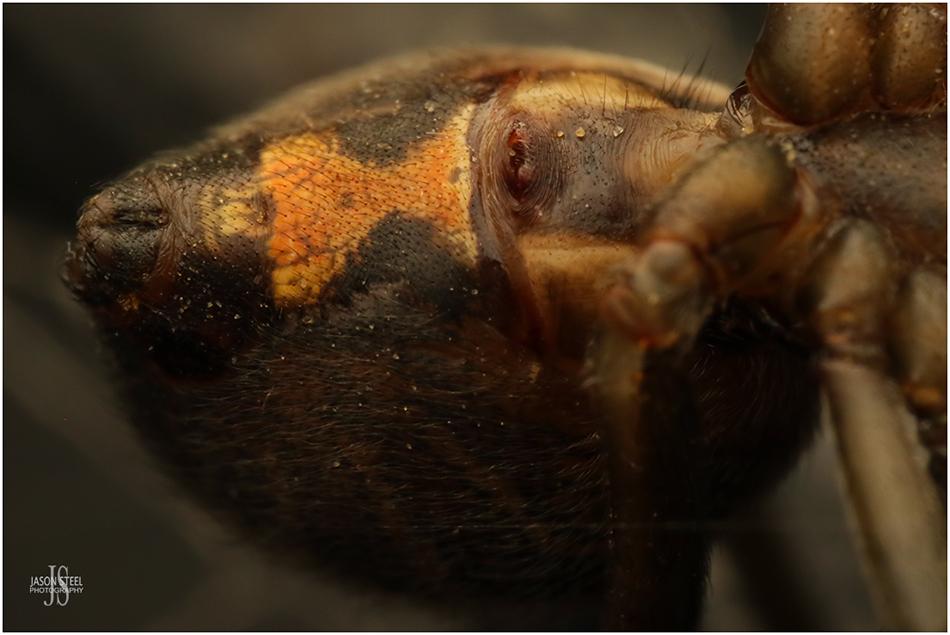
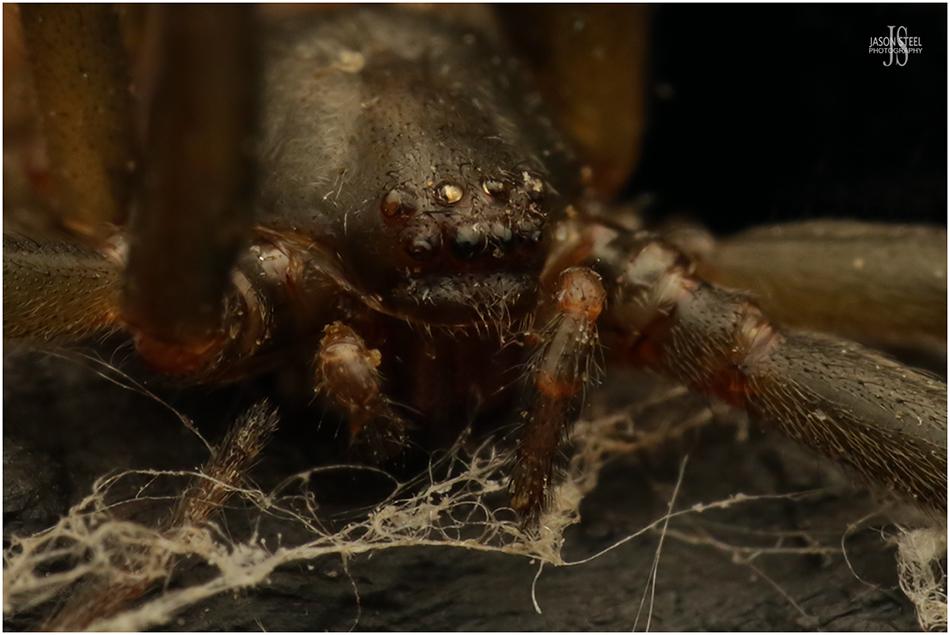
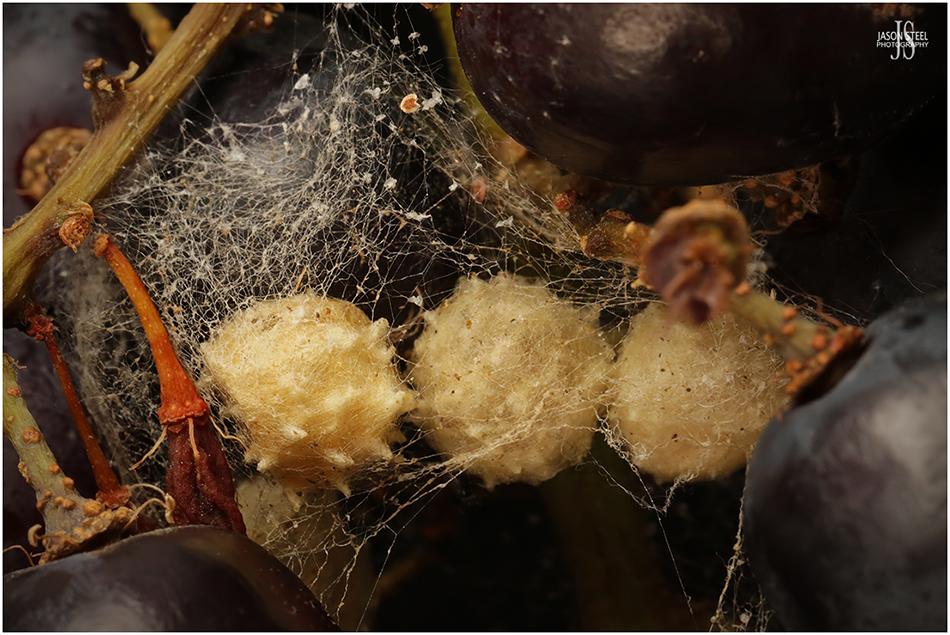
7mm spiky egg-sacs belonging to the Brown Widow Spider, Latrodectus geometricus, found amidst imported grapes from Brazil, 7th November 2021.
31) On the 7th November 2021 Sarah Burgin, from Crewe, Cheshire, found four spiky egg-sacs hidden amidst her Brazilian black grapes, purchased locally. The spiky egg-sacs are distinctive and can only belong to the Brown Widow, Latrodectus geometricus, a species commonly found in Brazil, where the grapes originated from. Latrodectus elegans also produce spiky egg-sacs, but Latrodectus elegans are an Asian species not found on the South American continent. Three species of spider from the Latrodectus genus are reported as occurring in Brazil: Latrodectus mactans, the Southern Black Widow, Latrodectus curacaviensis, the Brazilian Black Widow, and Latrodectus geometricus, the Brown Widow. However neither of the other two species create spiky egg-sacs. LINK . Fertile eggs of the Brown Widow usually take 14-21 days to hatch, but the spiderlings can remain hidden away within the egg-sac from just a few days to another month after hatching. When found it was uncertain whether these egg-sacs would prove to be fertile or not, and if fertile would they have survived the refrigerated transportation process used when exporting grapes? It is common for the Brown Widow to create several egg-sacs at a time, some times with as few as just one or more of those actually containing fertile spider eggs.
